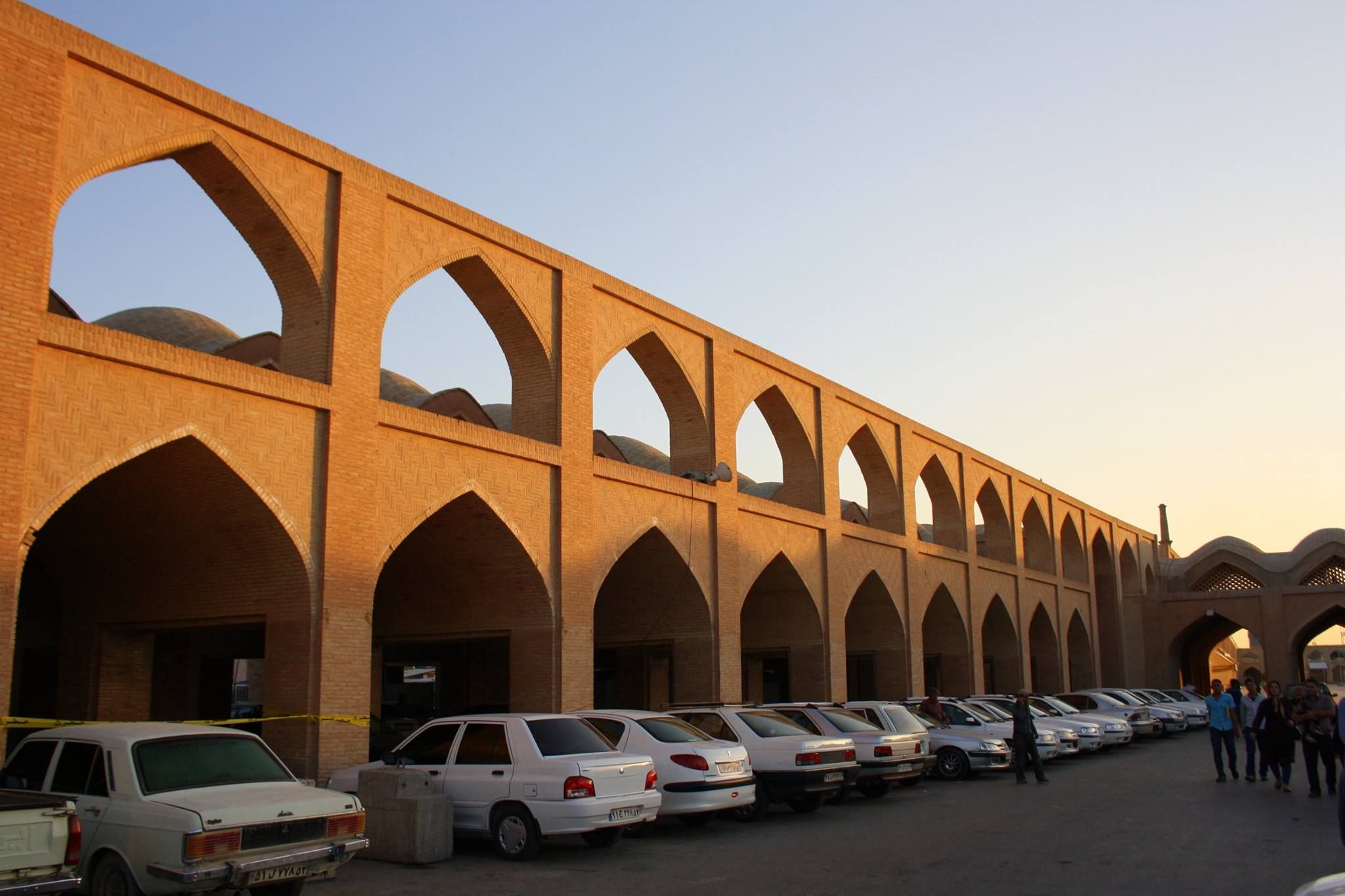As you drive up, you'll spot a large rock. It serves as a marker for the trail to our homestead. Follow it all the way to the end, and I'll be there to welcome you. My dad advises you to be careful as his always-hungry Central Asian Shepherd roams the yard...
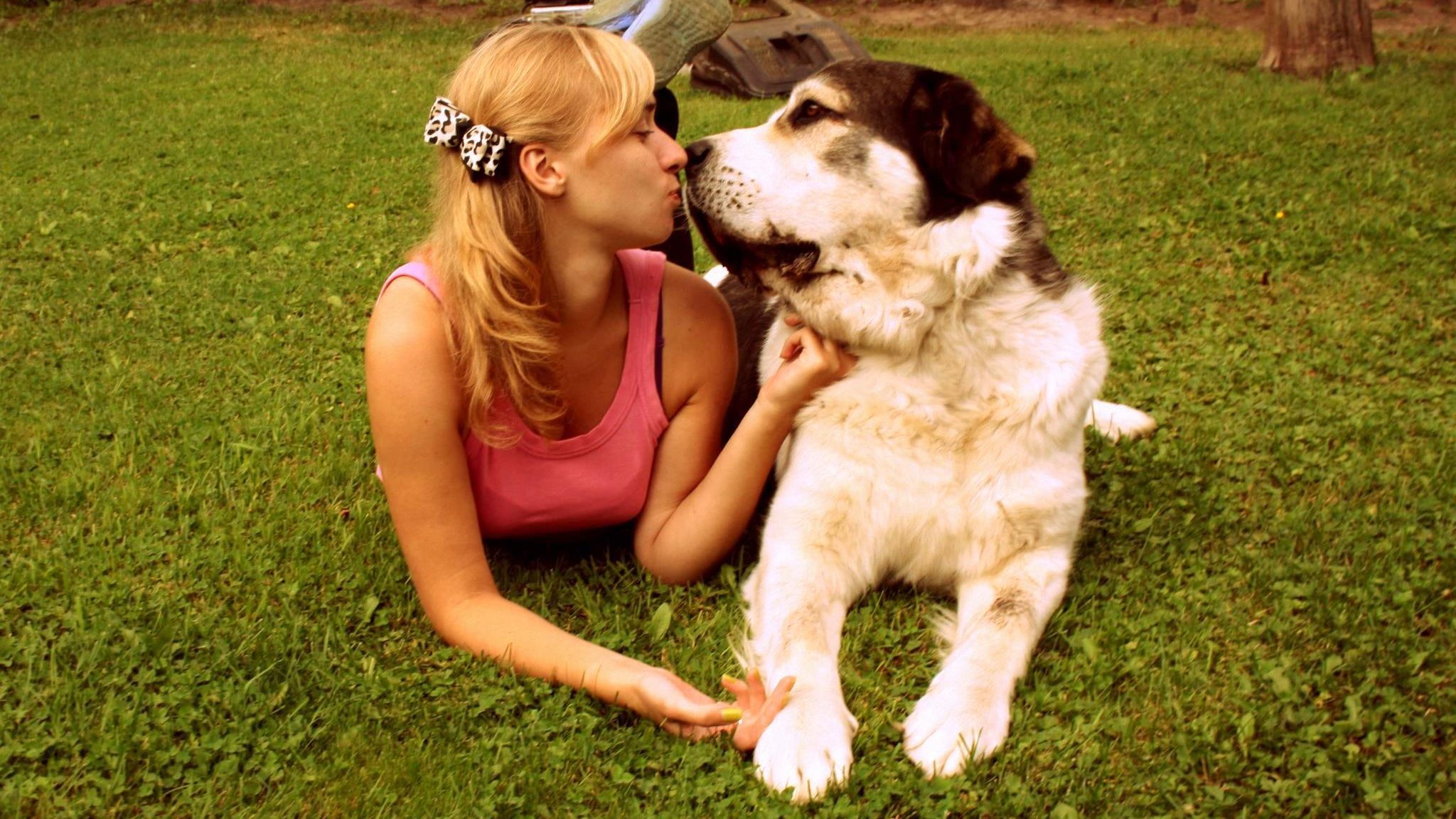
The day I met her parents
As I was cruising down the narrow road, I noticed Tufis, the loyal guardian, jumping around next to the fence, guiding me all the way to the entrance. Trust me, his sweet name is deceptive. These powerful creatures are bred specifically to guard the flock from wolves. If you're an admirer visiting the owner's daughter, better get ready for a memorable encounter.
We’d known each other for a few years but started getting really close just a few months ago. I hadn’t met Kamile’s parents before, nor had I set foot in her hometown. This was the first time. They say as long as there’s something new to experience, you're still young.
“I’m the tough one here,” Kamile’s dad, Virginijus, stated with a semi-serious tone as he reached out to shake hands. His expression was stern. “Keep an eye on the dog. Strange things sometimes happen. Just last night, he took out a hedgehog. I’d rather you didn’t get caught up in trouble...”
The dog patiently awaited the signal from his master to give the green light to lead me in (or out). But then the atmosphere was lightened by the welcoming smile of Kamile’s mom, Gražina. She ushered us all to the table, where we gathered around for a home-cooked feast.
Hold up! That's my son's spot!
The table was piled high with food. As the ladies got themselves settled, I spotted a good seat for myself. I grabbed the heavy chair and pulled it out just enough to be able to sit. But before my bottom department could touch the seat, the thunderous voice of the head of the house made me freeze.
“Hold on! That’s my son’s seat! You may sit over there,” he pointed to the chair next to me. Just for the record, Kamile’s brother Augustinas wasn’t even there that day.
After a delicious meal, it was time for some tea. My survival instincts urged me to watch the mother’s moves closely. You never know, sometimes you might end up with some herbs in their tea that aren’t exactly good for you. Although such incidents are rare, some inner feelings told me to stay alert.
While the family was halfway through their cups, mine was still full. I held it with shaking hands, cleverly hiding them under the table. The last thing I wanted was to spill my tea all over the tablecloth. When asked if the tea was good, I replied that it was very tasty and thanked the lady of the house for the wonderful treats.
The Sooner We Leave, The Sooner We’ll Be Back!
After we finished sipping tea, Kamile’s dad, who had been silent for a while, took charge of the conversation. He wanted to know what kind of guy was planning to take his daughter away to who knows where. But, let me tell you, when he hinted at buying a shotgun, it threw me off for a second.
For every wild plan we mentioned, he wanted a full-blown action plan of what we would do if anything threatened his daughter’s well-being. Can’t blame him, really. I mean, how often does your daughter come up to you and say she’s leaving everything behind to go on a trip to Iran or even further with a guy they barely knew?
All things considered, it turned out pretty good. Even the dog guarding the place seemed to mellow out once he felt the family was cool with me. I came there solo, but we left as a duo.
“Out and back in a snap. The Sooner We Leave, The Sooner We’ll Be Back!” Kamile said, trying to soothe their hearts.
However, as soon as we turned the corner, her smile turned into tears. She knew she was going to miss her family a lot. We wouldn’t see them again for a whole long year.
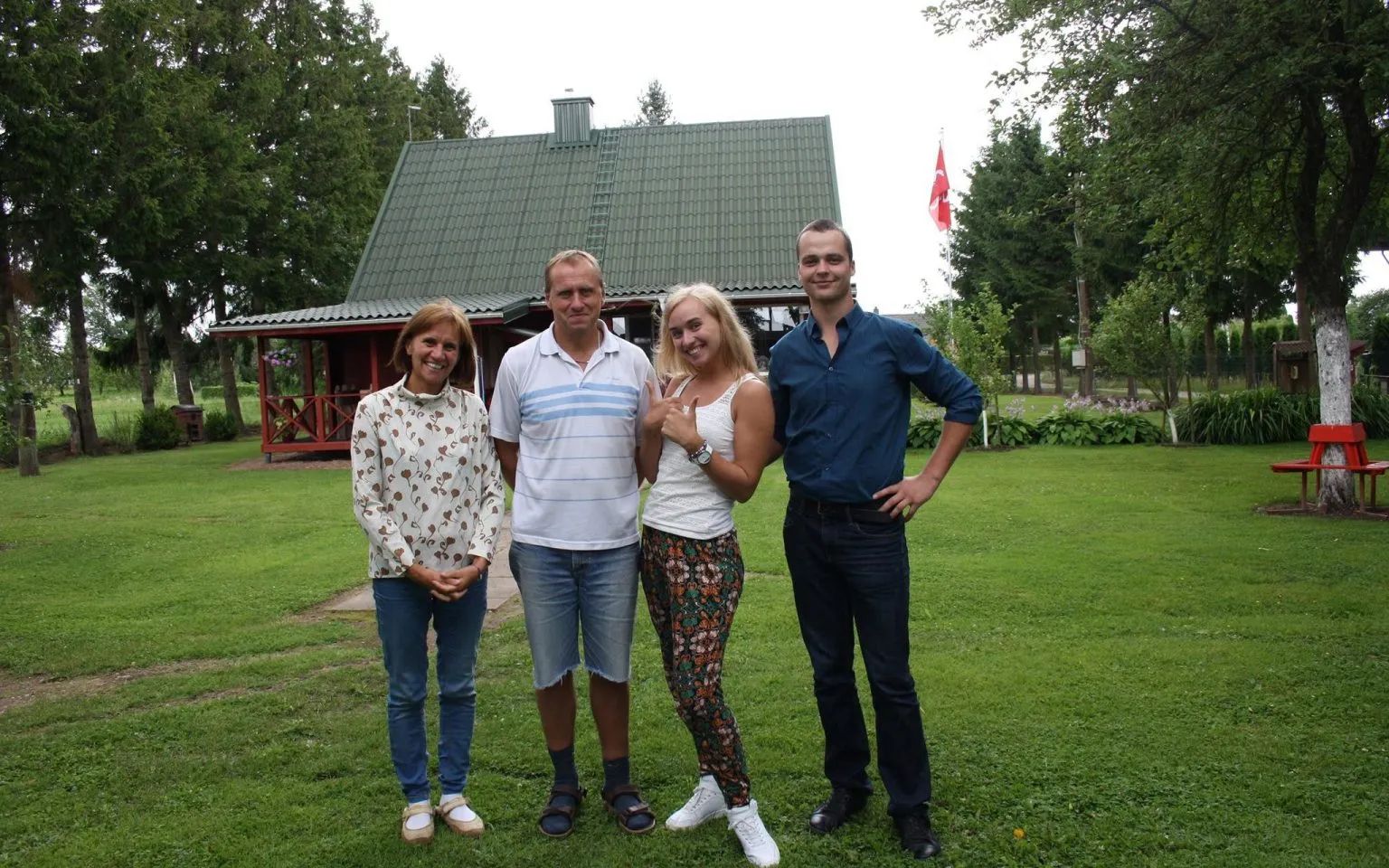
Poland
Poland was the first country on our way to Asia. The Grand Duchy of Lithuania and the Kingdom of Poland once formed the so-called Polish-Lithuanian Commonwealth. The ruler of that time was called the King of Poland and the Grand Duke of Lithuania.
Those days are long gone, but the heritage of that time has survived throughout the former Commonwealth territory. Knowing this, curious Lithuanians and Poles eagerly visit each other. They travel alone or with guides, using their own transportation or comfortable buses.
The landscape of northern Poland is similar to ours. If it weren't for the unfamiliar language to Lithuanian ears and the foreign signs hanging in the suburbs, we would have thought we were in our homeland. However, as we moved south, the landscape started to change.
Hitchhiking is a sport for the patient. In Poland, we probably set a record of waiting for someone to stop: six hours. It took us almost a year to break it. Nothing surprising. Hitchhiking requires certain skills and experience.
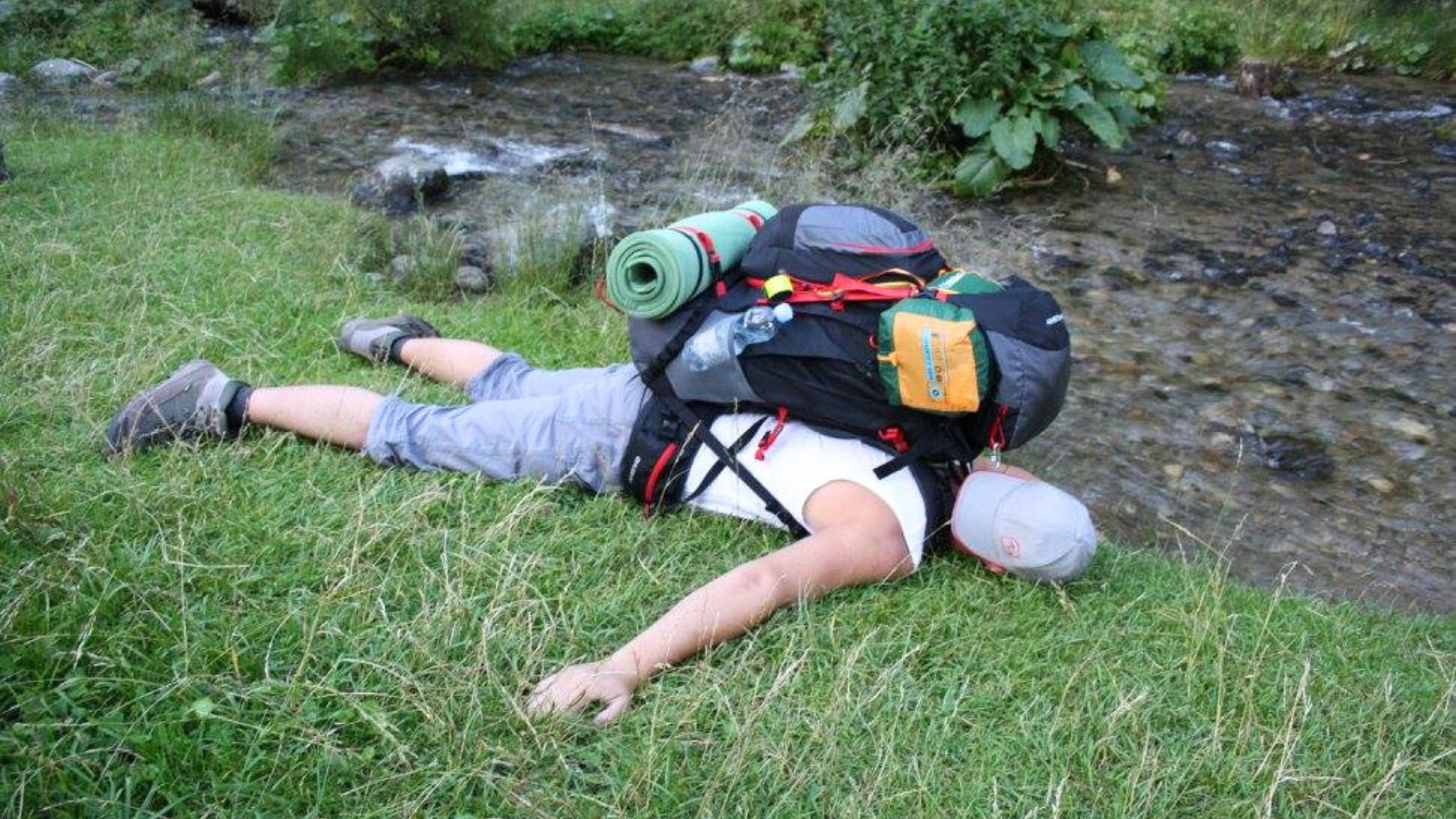
"You look like a criminal!"
Before leaving, all the know-it-all friends spared no advice. According to them, just elegantly sticking out your hand with a raised thumb would solve everything on its own. Oh, Holy Naivety! As the old folks used to say, it's much easier said than done.
"I sincerely believe you are the weak link in this team," Kamile once said without the slightest hesitation in her voice. "People are afraid of your hairstyle. You look like a criminal."
Her words hit me like that apple hit Isaac Newton on the head. That's how a brilliant idea was born. I had a plan. All that was left was to execute it.
"I'll hide behind that tree, and the drivers will think you're traveling alone! When they stop, I'll come. Poor souls won't understand what happened!"
A blond blue-eyed girl standing alone by the roadside, holding a plush bear in her hands. Huge backpack behind her. Although the tactic seemed ineffective when female drivers were behind the steering wheel, tricking the guys proved to be much easier.
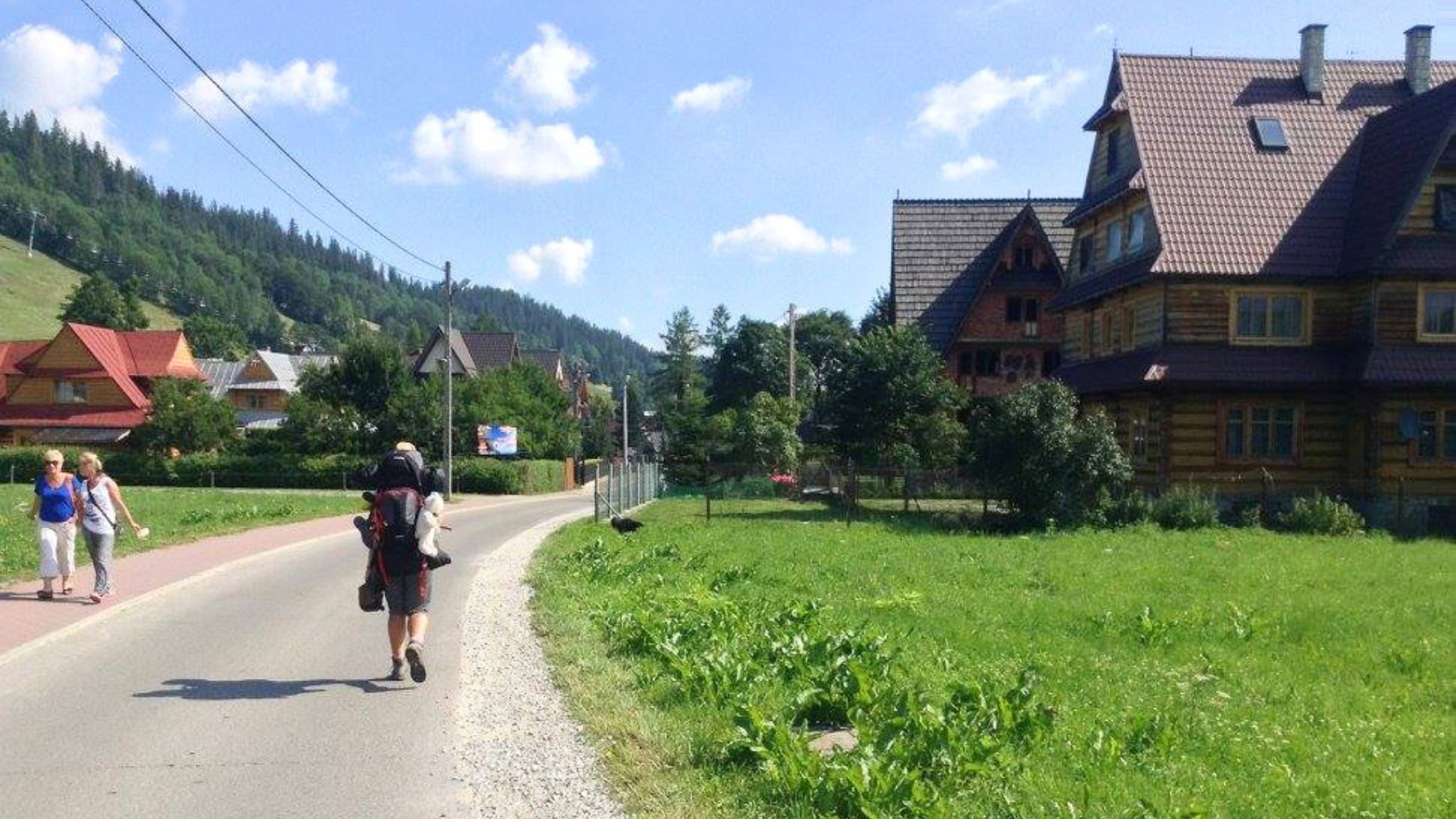
Krakow: first encounters
On the evening of the second day, our path led us to Krakow. It was a perfect opportunity to make a stop at one of the many bustling bus stations in the city. We had only a few Lithuanian snacks left in our provisions, but the more scarce they became, the more we appreciated them.
Like a mushroom after the rain, an impressive figure of a policeman appeared out of nowhere. He tilted his head and scrutinized the large suitcases with his gaze. After performing some calculations in his mind, he finally decided that the suspects were more likely just two weirdos rather than representatives of the criminal world. He scratched his head and walked away without saying a word.
It was midwinter, a time when the days were long and the nights were short. We still had a few hours until sunset and we couldn't wait to wander around the old town. We had a reservation waiting for us at a small yet highly regarded hotel. Leaving our belongings in the room, we soon found ourselves strolling through the main square of the city.
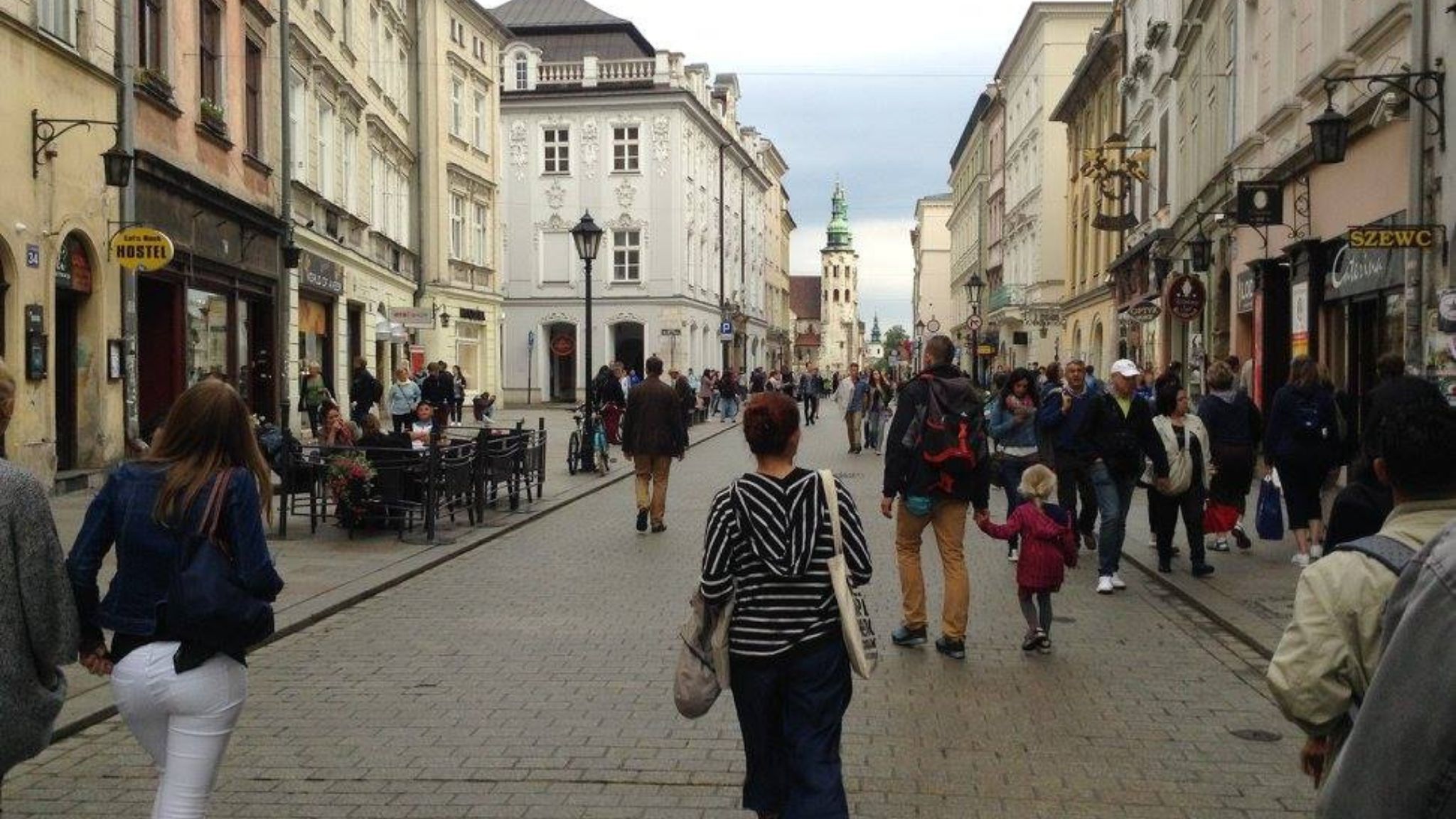
"Pigeons - Just Like Politicians!"
The Market Square in Krakow is the largest square of its kind in Europe that has survived since medieval times. With its 40,000 square meters, there is more than enough space for a diverse crowd of street artists and the city's guests to engage in their activities. The pigeons, nicknamed "flying rats," also feel like they're in paradise.
"Did I ever mention that I used to keep domestic pigeons as a child?" I confessed to my companion. "Some believe that pigeons were the first birds domesticated by humans."
The pigeons in Krakow's Market Square do not resemble domesticated ones. They are not very liked by most locals, mainly due to their habit of building nests on balconies and using sidewalks as outdoor toilets. The city authorities discourage residents from feeding these mischievous birds.
However, there are a few kind-hearted elderly people who sympathize with the struggling pigeons. They share breadcrumbs or other treats from their own table. One such person was the man standing next to us, dressed in a light brown suit. Feeding birds seemed to be his pleasure.
"These birds are just like politicians," the man chuckled. "As long as they are at our level, they don't hesitate to feed out of our hands. But once they rise higher, they don't hesitate to poop on you."
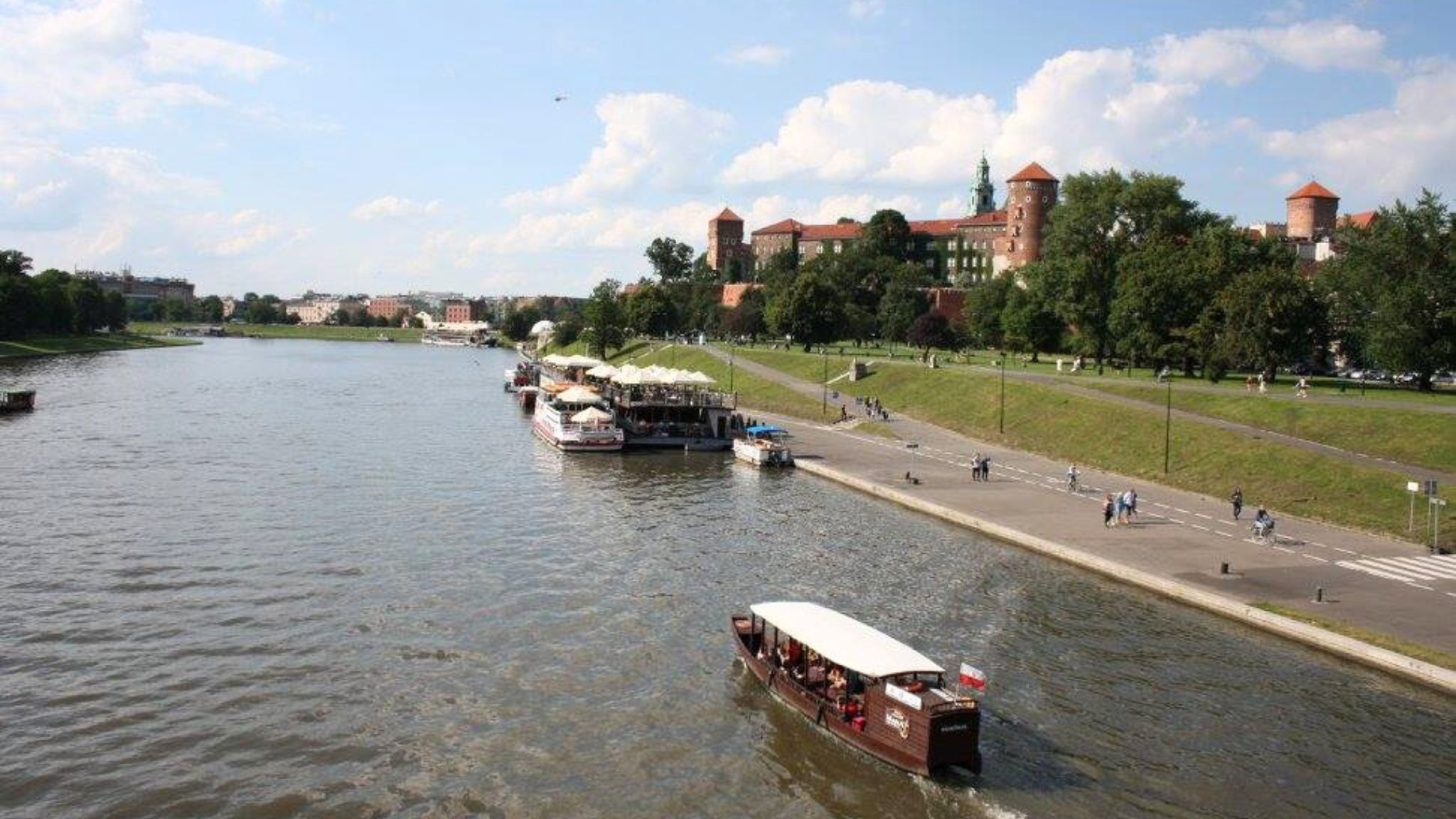
Journey to Zakopane
The border between Poland and Slovakia winds its way through the peaks of the Tatra Mountain range. The Tatras are the highest part of the Central Carpathian Mountains. The winding hiking routes attract hordes of active travelers every year.
Located in the southern part of Poland, the small town of Zakopane is home to just 30,000 residents. Compared to the one-and-a-half million travelers who visit every year, it may seem like a joke, but it's not hard to guess what draws them here. Nowhere else in Poland will you find such a landscape.
"I urge you to consider the possibility of staying in Europe. Italy, Spain, Portugal - relatively safe countries that have much to offer," Mr. Vieslav expressed his concern.
The middle-aged manager agreed to take us a good hundred kilometers all the way to the town of Zakopane. Along the way, he talked about all the business partners that he had in Lithuania.
"For inexperienced travelers, Asia can be a tough nut to crack. But no matter what, you are young and strong. I believe everything will be fine. Stay well!"
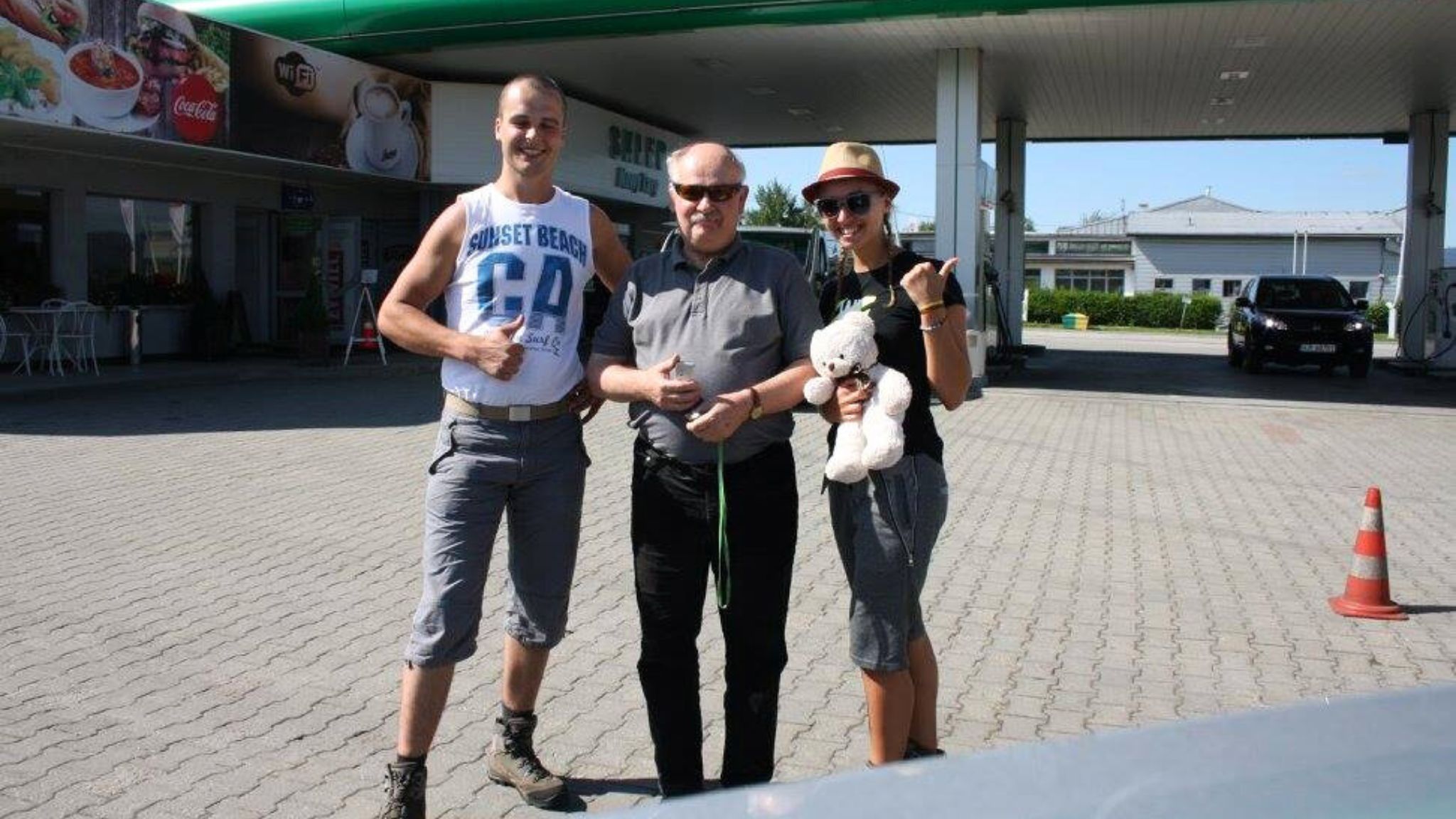
I'd be ashamed to look a horse in the eyes if I were you
Soon enough, Wieslaw's car became barely visible. Some sounds from my gut interrupted the prolonged silence. Out of hunger, my stomach was touching my backbone.
24 years: that's how long it took to develop the habit of eating heavily three times a day and constantly snacking. It turned out that these so-called "modern" eating habits had a dark side. Once we deviated from the daily routine that had formed over many years, my body systems went nuts.
It was time to eat but before dinner, we had to find the right place to settle. The majority of the town was nestled in the valley. The idea of setting up a campsite away from residential areas quickly materialized. In a matter of moments, our green tent took on its final form.
For dinner, we had boiled beans, oatmeal porridge, and a large loaf of fresh Polish bread.
"I can't believe what I'm seeing," Kamile said. "You've eaten so many oats that I'd be ashamed to look a horse in the eyes if I were you!"
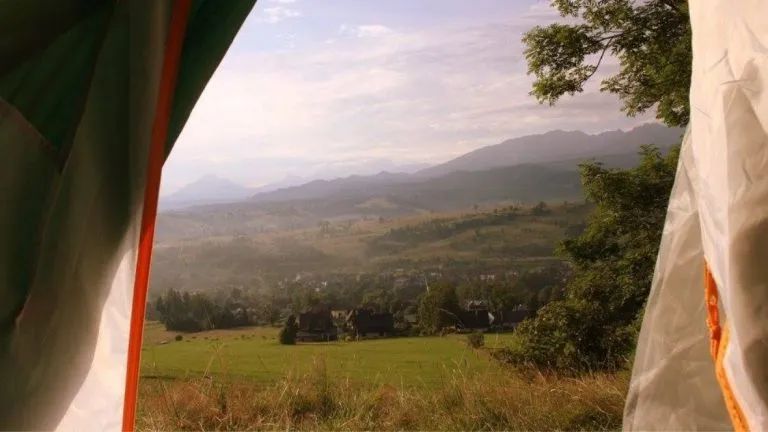
Strangers on the farmer's land
While having dinner, the sun set and darkness covered the land. Both the little birds and the residents of distant cottages were preparing for rest. Gradually, silence took over the whole valley. We left the entrance open so that we could watch the peaks sinking in the moonlight. It was one of those moments when you feel wealthy, even when your pockets are almost empty.
"Shh... Do you hear that?" - Kamile noticed a dog bark.
The sound was slowly approaching us. We had to leave our tent and find out what was going on. It turned out that a few hundred white sheep were swiftly making their way home, and we got caught in their path. Four-legged sheepdogs ensured the order. Suddenly, a man appeared next to our tent. His white shirt, tucked into wide brown trousers, seemed to glow in the moonlight. We were on his property.
The man took a couple of steps forward and, spitting out the straw he had been chewing, removed his wide-brimmed hat. A friendly greeting was followed by a few short sentences in an unfamiliar language. With awkward hand gestures and a mix of different words, we explained who we were and where we were heading. All we got in return was a moment of silence.
You could hardly blame a person if he had ordered us to leave. His home, his rules. However, to our surprise, the opposite happened. The man explained that we were his guests and invited us for a short tour. He even showed us where to find drinking water and other conveniences.

Breakfast with locals
Seated at the table was a man we had not seen before. It turned out he was a close friend of the farmer. Jakob had been invited by the farmer to be his translator. The middle-aged man revealed that he had lived in the United Kingdom a few years ago. That was when he had "mastered" English.
Both men sat contentedly, smiling from ear to ear. Having breakfast with a couple of foreigners was a great amusement for them. From time to time, laughter filled the air. The host occasionally urged us not to hold back at the feast table. He even jokingly remarked that who knows when we would have another chance to eat.
The majority of the meal consisted of dairy products: goat cheese, freshly churned curds, and homemade butter. There was no shortage of all kinds of bread either. As I spread the butter, my mind wandered back to my childhood when I would spend months at my grandmother's house in the countryside. Churning butter was a regular task back then.
As the two Polish men and I enjoyed the curd, both of them laughed. They claimed that this robust drink was a source of masculine strength. According to them, after consuming a couple of liters of curds, not only did any farm work become effortless, but also it had benefits in raising one's potential as a lover.
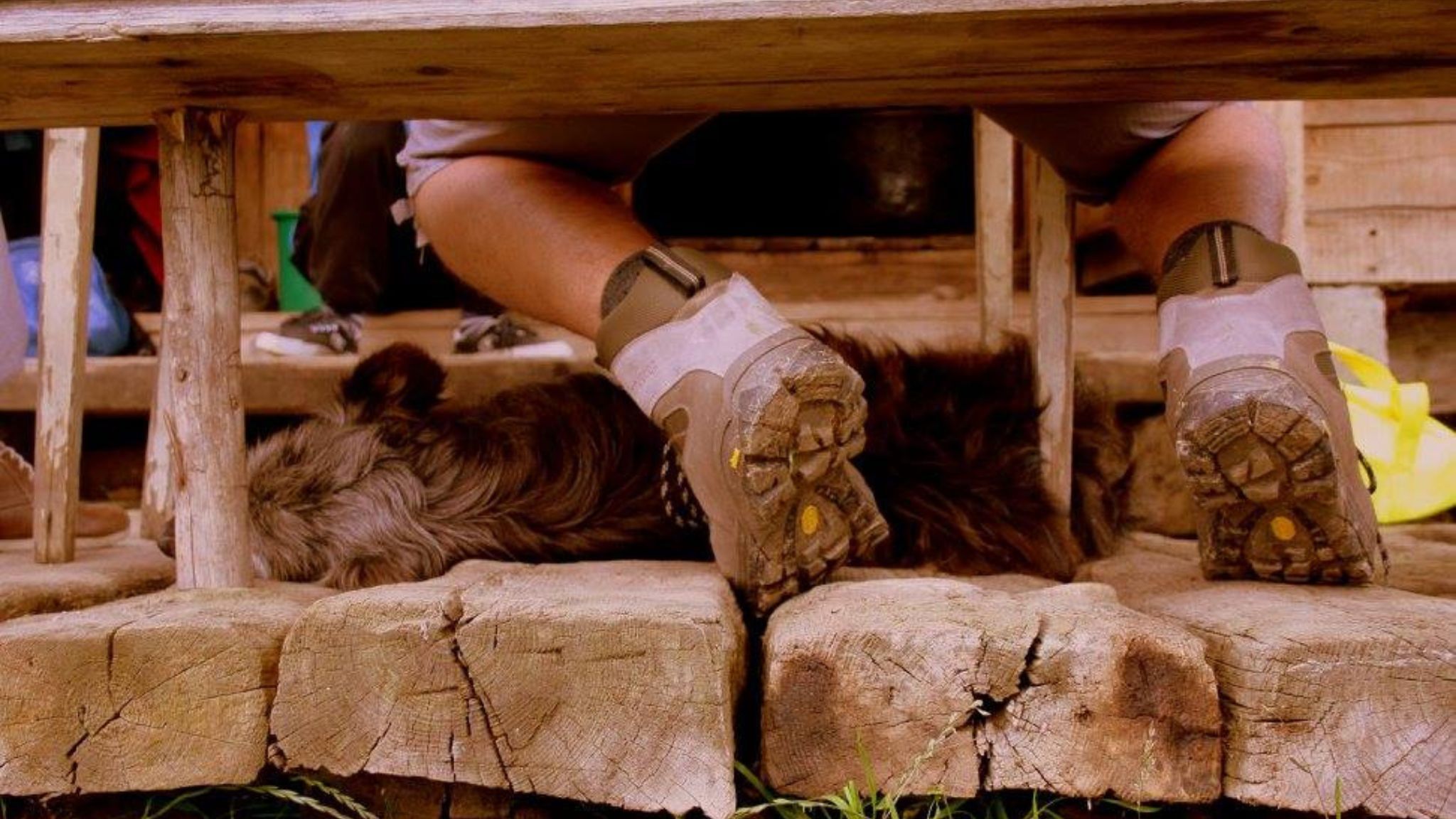
Slovakia
Due to its numerous national parks, countless rivers, mysterious caves, and winding trails, Slovakia is attracting increasing attention from travelers. After crossing the Poland-Slovakia border, we set up our camp in the darkness of the night.
"Good morning, sunshine. How did you sleep?" - I greeted Kamile, who poked her head out of the tent, looking around curiously.
The early morning light revealed the hidden beauty of the landscape that darkness had so diligently concealed. It's no secret that the coziest camping spots are far away from the attention of passersby, so we spent the night where even the sharp-eyed mosquitoes wouldn't think of searching - a little island in the center of the Bialka River.
When I ventured into the swift stream to wash up, I carelessly lost my footwear. Like a graceful boat, a synthetic slipper floated away to the east, soon disappearing into the rapids.
"It's only been a week, and you've already lost half your belongings," remarked my companion with a tiny touch of Samogitian humor. I decided it was best to remain silent about the towel I left hanging on the fence in Poland.
"Well, maybe it's for the best," I told myself. "I'll dry off in the sun, and if necessary, I can always use some piece of clothing for that purpose."

The Eye of the Sea
A cup of hot tea helped to wake up. The small dry alcohol stove did its job perfectly. A handful of freshly picked wild berries was supposed to ensure an energy boost until we got something better. There was no time to dream about the abundant feasts at my grandmother's and recurring questions "Why, my dear, aren't you eating anything?"
As we marched towards the main road, fellow hikers we met along the way insisted in unison that we were going in the wrong direction. They vigorously waved their hands, urging us to turn around. It turns out they were all headed towards Morskie Oko, known as the Sea Eye, which is perhaps the most famous lake in the entire Tatra Mountains.
Morskie Oko is a lake of clear water that has long been nestled at an altitude of 1395 meters above sea level. According to the locals, it acquired the name Sea Eye because of an old legend about an underground tunnel connecting the lake to the sea.
"The world is full of wonders," we exclaimed, making a promise to return in the future. However, there was no time to dream for too long. Our goal was to reach Asia without major stops. Nevertheless, the contemplations about the future were destined to come true. After three years, while visiting the vicinity, we finally visited the Sea Eye together with my father, but that is another story.
Hitchhiking to Hungary
The language barrier didn’t seem as scary as expected. Wide hand gestures and accompanying grumbling – the universal language, understood worldwide.
Most of the drivers were elderly. English speakers willingly shared stories about their grown-up children and mischievous grandchildren. They didn't hide the fact that they expected more trouble to come from those little rascals.
Those interested in geography know about Slovakia's interesting shape. The entire country appears elongated, stretching just 175 kilometers across from Poland to Hungary. For those traveling in this direction, it only takes about three hours to cross the country by car.
Of course, hitchhikers like us might find this adventure taking longer, as it greatly depends on the people you meet. In our case, it took several hours to reach the halfway point.
Each driver was different, possessing unique traits or even certain quirks. I guess, what's odd or normal solely depends on the perspective of the observer.
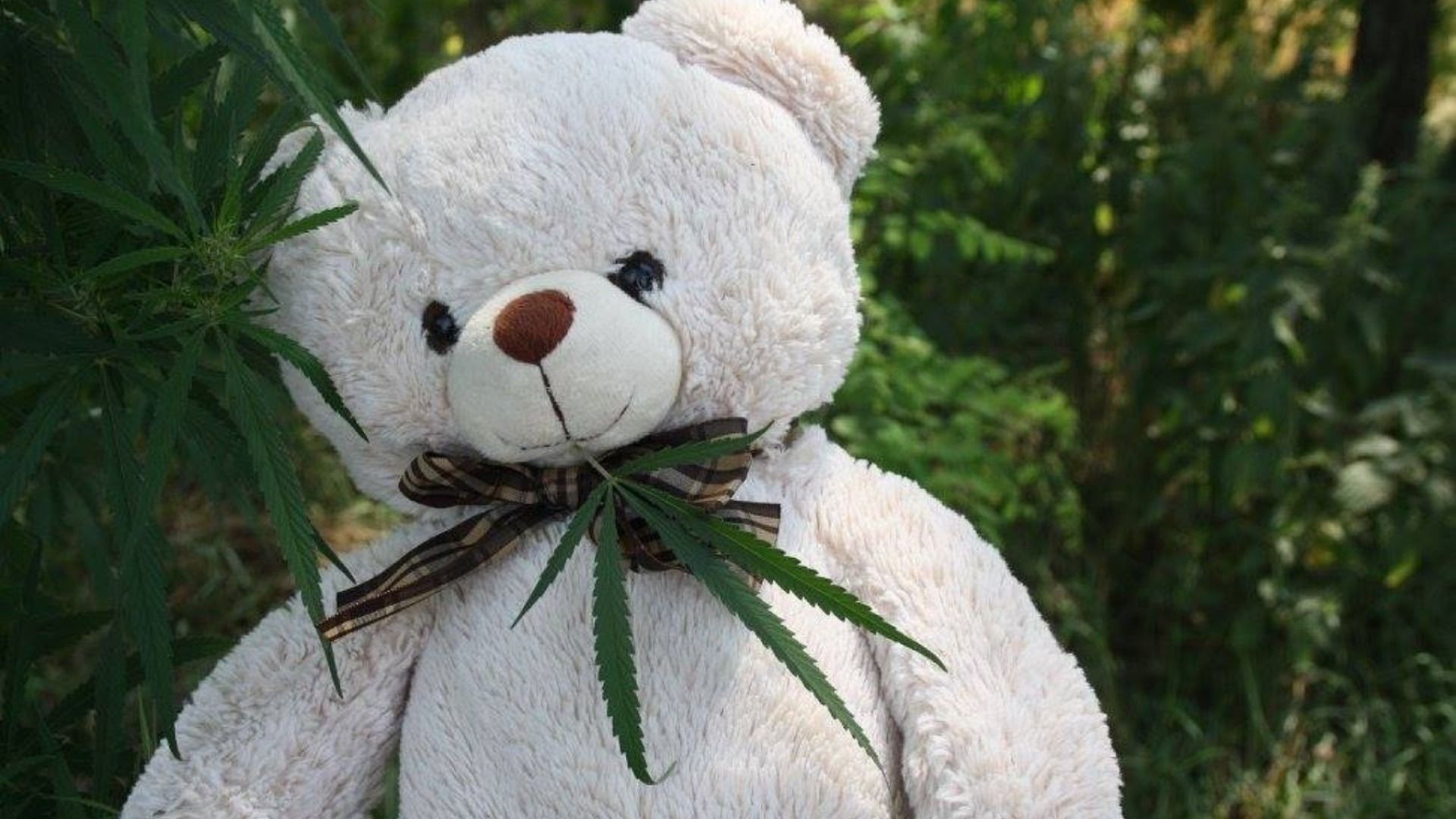
It's our choice
The major challenges arose at noon when one of the drivers announced that he needed to turn back. He dropped us off in a small village with three houses and a tavern. The eyes of the locals couldn't stop following two suspicious Lithuanians carrying 15-kilo backpacks on their shoulders. Most likely foreigners were a rare sight in that part of the country.
We spent the afternoon walking along the scorching hot road, which seemed to never end. Most of the cars passing by in the desired direction were sports models, racing toward a local event so any attempts to hitchhike were not too successful. While waiting on the roadside, the water supply ran out. The only remaining refreshment was Kamile's smile.
In the solitude of a lonely tree, deep within the recesses of memory, a piece of advice once heard from a Croatian traveler emerged: "Always remember that it is your choice. Take responsibility for your decision. It might end up well or not (:D), but it's your choice."
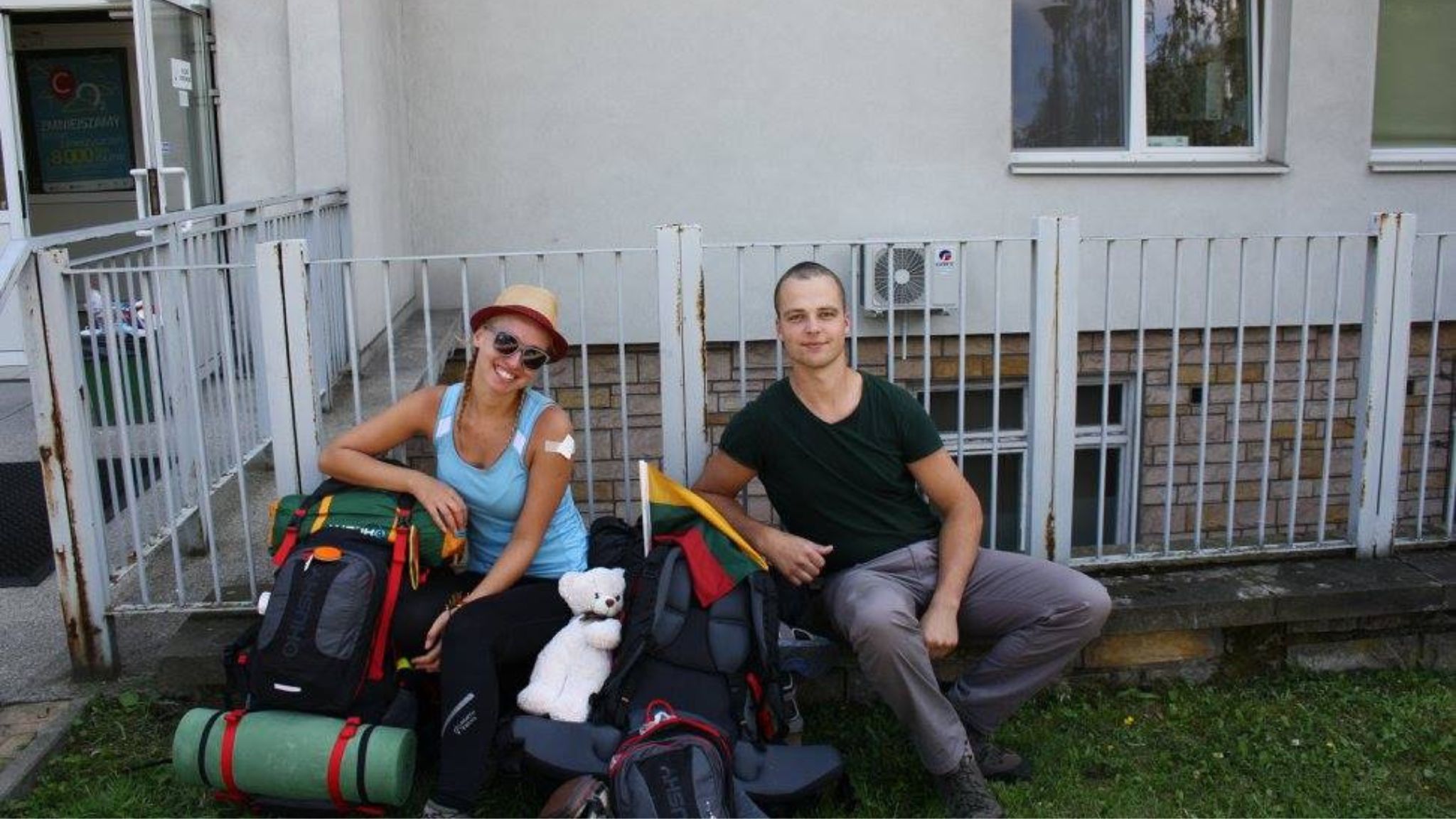
The First Rule of Hitchhiking
The first (imaginary) rule of hitchhiking is to avoid big cities. Kosice, a charming Slovakian city located just 20 km from the Hungarian border, turned out to be our unintended stop.
We pondered for a while on how to escape to the outskirts without spending too much money or time. Camping in a metropolis was not an option, and building a bonfire was out of the question too.
As dusk approached, we were left with two options: keep walking until we got out of the city and find a place to camp, or find accommodation in Kosice and continue the journey in the morning. A local fast-food restaurant happened to be a convenient place to use the internet and evaluate all options.
The closest camping spot was about 10 kilometers away. Staying in a hotel was also not suitable as it would have strained our already limited budget. Moreover, sleeping in a fancy hotel, just a few days after leaving our own home, would have diminished the sense of adventure.
As they say, two heads are better than one. Gradually a plan started to take shape. Summer nights are short so we decided to spend a few hours at the bus station, maybe finish the blog post we were working on, and set off towards the outskirts of Kosice early in the morning.
Adventure with a pickpocket
The adventures began as soon as we entered Kosice bus station. Our backpacks found a spot under the stairs, and benches next to us turned into protective barricades. This was meant to make life difficult for the pickpockets who occasionally lurk in such places. The necessity of such measures quickly proved itself.
The only way to grab my backpack was by jumping over the bench I was sitting on. To make matters worse, the backpack weighed a hefty 15 kilograms. There was no escaping unnoticed with such a weight.
Kamile stretched out on the bench in front of me and closed her eyes. Meanwhile, I took out my laptop to do some work. Although focused on my work, I kept one eye on my surroundings. Suddenly, a middle-aged woman dressed in a businesslike manner caught my attention.
Her meticulous hairstyle resembled a wig, and her eyes were concealed behind large dark glasses. A small suitcase gave the impression that she was waiting for a bus. The most interesting things started to happen when Kamile closed her eyes for a well-deserved nap.
Perhaps tired, or perhaps not, the woman, who had been quite active until a moment ago, momentarily stopped. Despite her large glasses, it was not difficult to sense that she focused her attention on a man lurking in the corner. Curiosity took over, and I put off my work for a later time.
The thief's cap is on fire
I remember my childhood when my Dad and I used to watch "Walker, Texas Ranger" and guess who would get the beating next. The intuition I developed as a child didn't disappoint me and helped me identify the victim. The woman slowly but steadily moved towards her target.
The man received a phone call. Perhaps his wife called and urged him to hurry home before the dumplings got cold. He grabbed his suitcase and hurried outside. Did it disappoint the respectable lady? It seemed not, as she tried the same approach with two other people. Both times the situation unfolded similarly.
The spectacle reached its climax when an announcement rang through the loudspeakers, stating that the station would be closing soon. As the last travelers boarded the buses, the waiting hall was left with only us, a couple of station workers, and the mysterious woman. Suddenly, her gaze turned towards us.
"Do you hear me?" I awakened Kamile, who was still trying to sleep. "There's a woman approaching us. Pretend to be asleep, but keep in mind that she might be a pickpocket."
A small amount of cash that we had and the most expensive belongings were in the depths of my large backpack. The laptop rested on my lap. The only less protected item was the phone lying next to me. Driven by curiosity, for research purposes, I nudged the phone even further away.
The course of events unfolded as expected. Out of the several available seats, the woman chose the one next to us. I pretended to be busy with my own affairs, while the prominently placed phone caught the woman's attention.
"Excuse me," she turned to us. "Could you tell me what time is it?"
"It's 10:20 PM," I replied without hesitation. The clock hanging on the wall confirmed it.
"What did you say?" she pretended she did not hear and cleverly shifted closer.
The woman leaned forward as if trying to glance at the laptop screen. Her right hand reached towards the phone. At that moment, I couldn't help but burst into laughter. When Kamile, pretending to be asleep, did the same, the woman grabbed her fancy suitcase and left the premises.

Unwanted
After the end of the bus station working hours, we moved to the train station. According to a huge sign, it was open 24/7. The upper floor seemed to be the most quiet and all we wanted at that moment was a bit of privacy.
I went to search for an internet connection to finish the task I had started earlier, while Kamile stayed with the backpacks. It turned out that the evening adventures were not over yet.
While on the ground floor, I noticed a security guard climbing up the stairs. Two police officers followed him closely behind. The men headed straight to the upper floor and I knew Kamile was the only person over there so I followed.
"Can I help you?" I addressed the officer who had just started interrogating Kamile.
"Who are you, where are you from, and where are you planning to go?" the policeman asked in a voice colder than Lithuanian winter.
"We are from Lithuania. We're planning to travel to Hungary tomorrow," we reported without hesitation.
"Where are your tickets? What time are you leaving?" the officer bombarded us with questions.
"We haven't purchased them yet. The ticket office is closed..."
"We have a problem then," the law enforcer stated firmly.

It turns out that during the night at the Kosice train station, only those with night train tickets are allowed to stay. "No big deal," we thought, and without getting into unnecessary details took our belongings and left. Men followed us all the way to the exit.
Suddenly, something unexpected happened. The tone of the officer changed as soon as we left the premises. He explained that they were just following orders and that they had to remove people who did not have tickets to protect the passengers from pickpockets. It was understandable, especially since we had very likely recently encountered one of them ourselves.
The man explained how to reach a hotel where, according to him, we could stay at an affordable price. However, that option didn't seem enticing. We thanked the officer for his kindness but decided to stick to our plan. Besides, it was a great opportunity to explore the Kosice old town at night.
In the heart of Kosice's old town proudly stands the St. Elizabeth Cathedral. Outdoor cafés serve delicious meals day and night. They are enjoyed by both locals and city visitors. Maybe our meal was not as fancy, but we sat on a wooden bench and still felt blessed. The canned beans and apple juice were very delicious.
After strolling around and satisfying our hunger, we reached the outskirts of the city before sunrise. A fuel station was the perfect spot to approach drivers. One of those kind drivers happily offered to give us a ride. A new day, a new beginning.
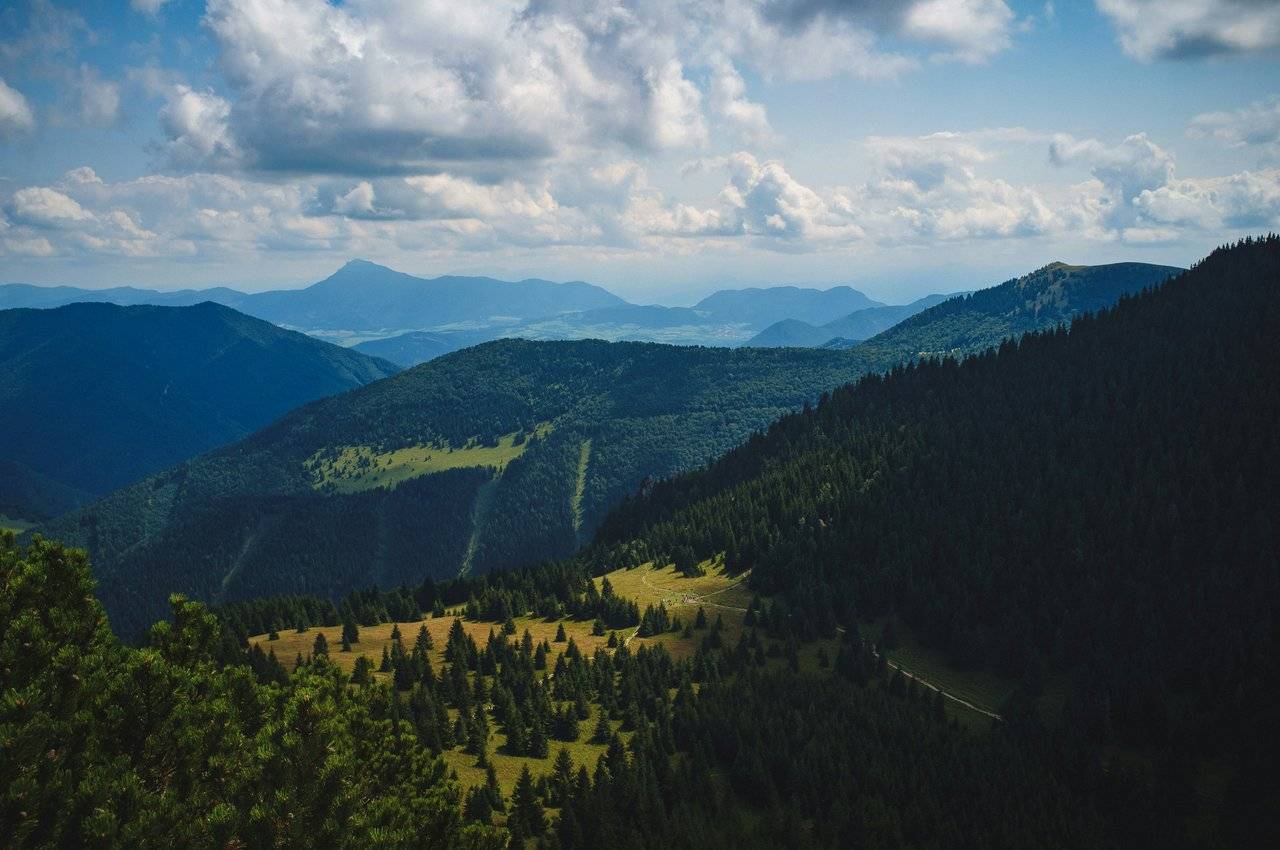
Hungary
Looking through the car window, I drifted away in my thoughts. While thinking about the near future, I wrote down the letters I.R.A.N. on the cover of my notebook and underlined them several times.
The driver quickly noticed it and mentioned that he himself had traveled to the farthest corners of the world when he was younger. Over the years, his beloved wife and a house full of children pushed him to settle down.
In the beginning, he planned to take us only to the next town, but eventually, he didn't stop there and took us all the way to the border. In less than half an hour, two young and optimistic Lithuanians gazed at the imaginary line that separated the two countries.
I recalled hearing that to keep a camel confined to a certain area, a fence is unnecessary. It's enough to dig a small trench that the animal will never cross. A similar force was present in that invisible line between Slovakia and Hungary.
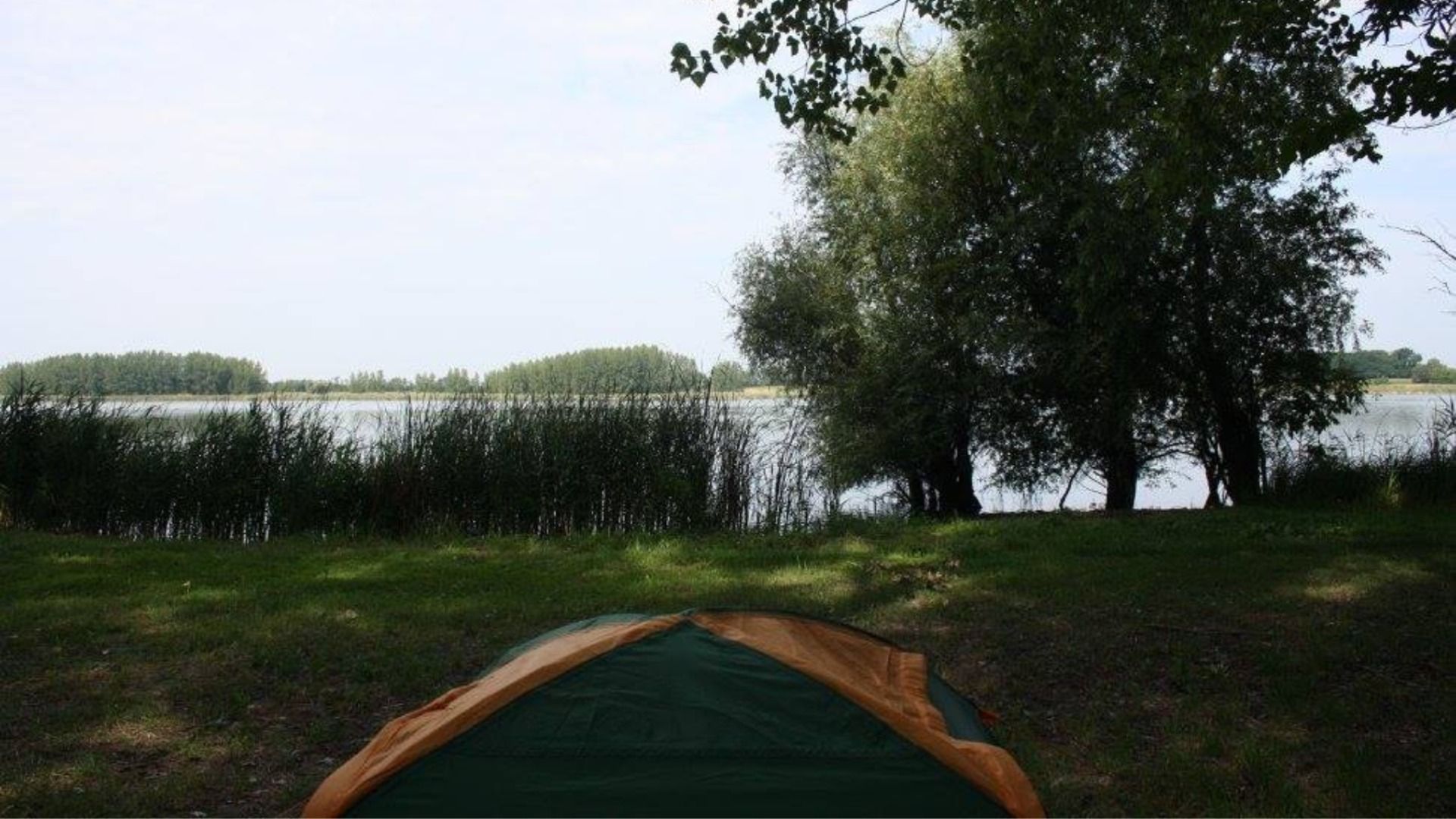
Like that confined camel, we looked at the non-existent border and somehow felt that we needed to take a wide step, raising our feet high. Slovakia was left behind, and there was no point in turning back. It was time to decide which way to go further.
While contemplating, we heard a few Hungarians speaking their language. It became clear that the Hungarian language was unlike any other we had heard before.
"Oh, if only someone would offer their help without being asked! We wouldn't have to hitchhike on the side of the road for hours," I thought aloud.
"Hey, buddies!" shouted a curly-haired man with jet-black hair. "Hop in, I'll give you a ride!"
The man in his early twenties reminded me of the American actor Rick Moranis. The latter became famous for his role in the movie "Honey, I Shrunk the Kids." However, our driver wasn't an actor at all but a University student heading to Budapest.
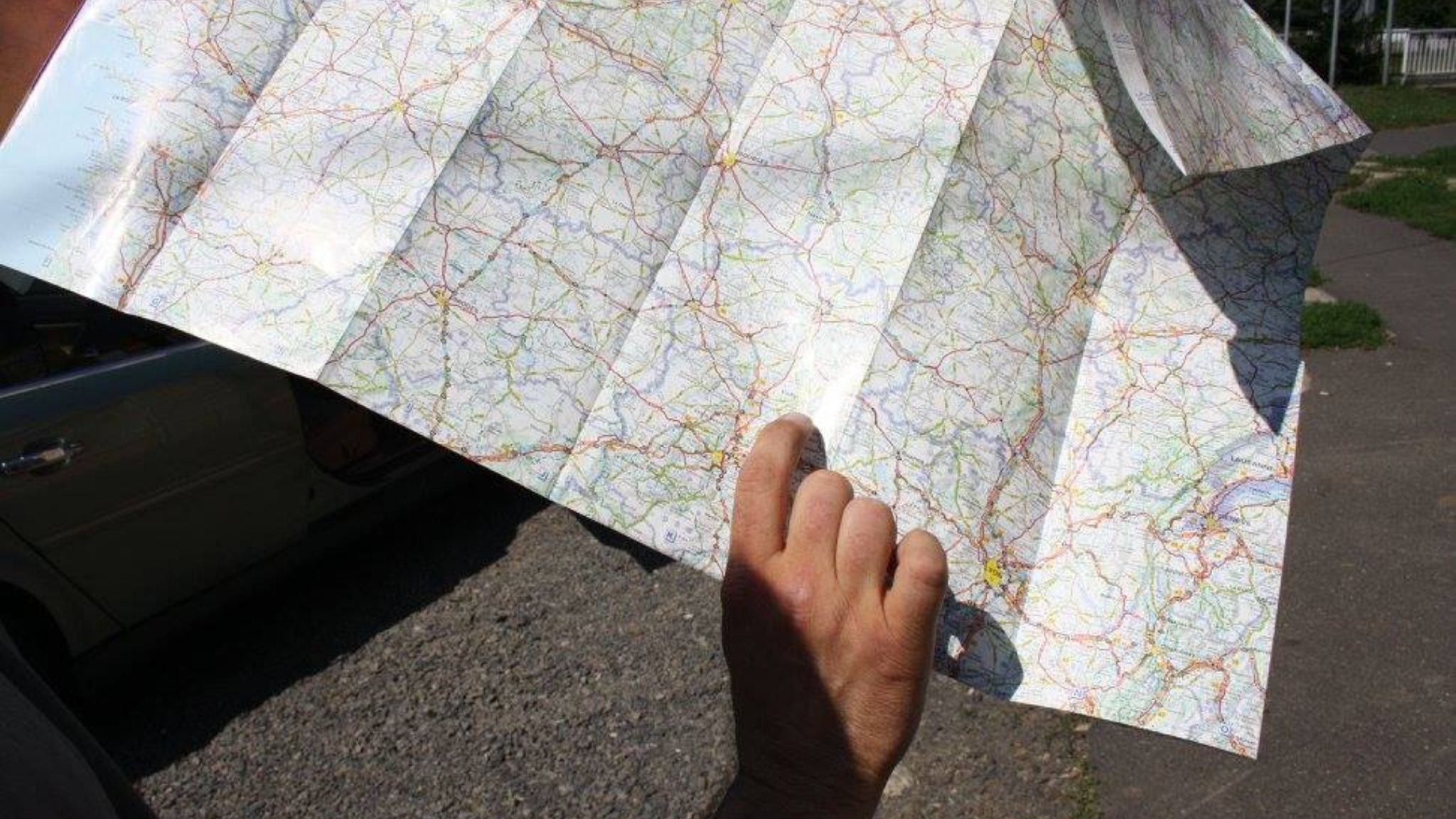
Underground tunnel
Getting to the other side was supposed to be a joke. At least that's what 'Honey, I Shrunk the Kids' claimed. Unfortunately, reality didn't live up to expectations. The highway flowed like a swift river, and a tall fence separated the two sides. It was neither easy to climb over it quickly nor to slip under with a big backpack.
Suddenly, a police officer introduced himself. Lately, the special attention of the guardian angels has become usual. This time, the law enforcer wanted to warn us that attempting to cross the road would be like playing with fate: even if we succeeded, we would get fined. So we had to take a detour and head towards the bustling petrol station to come up with "Plan B".
One of the options was hitchhiking to a safe place to cross. Unfortunately, we couldn't find a kind soul with two available seats in their car. Moreover, the farther we traveled, the longer it would take to return the same distance.
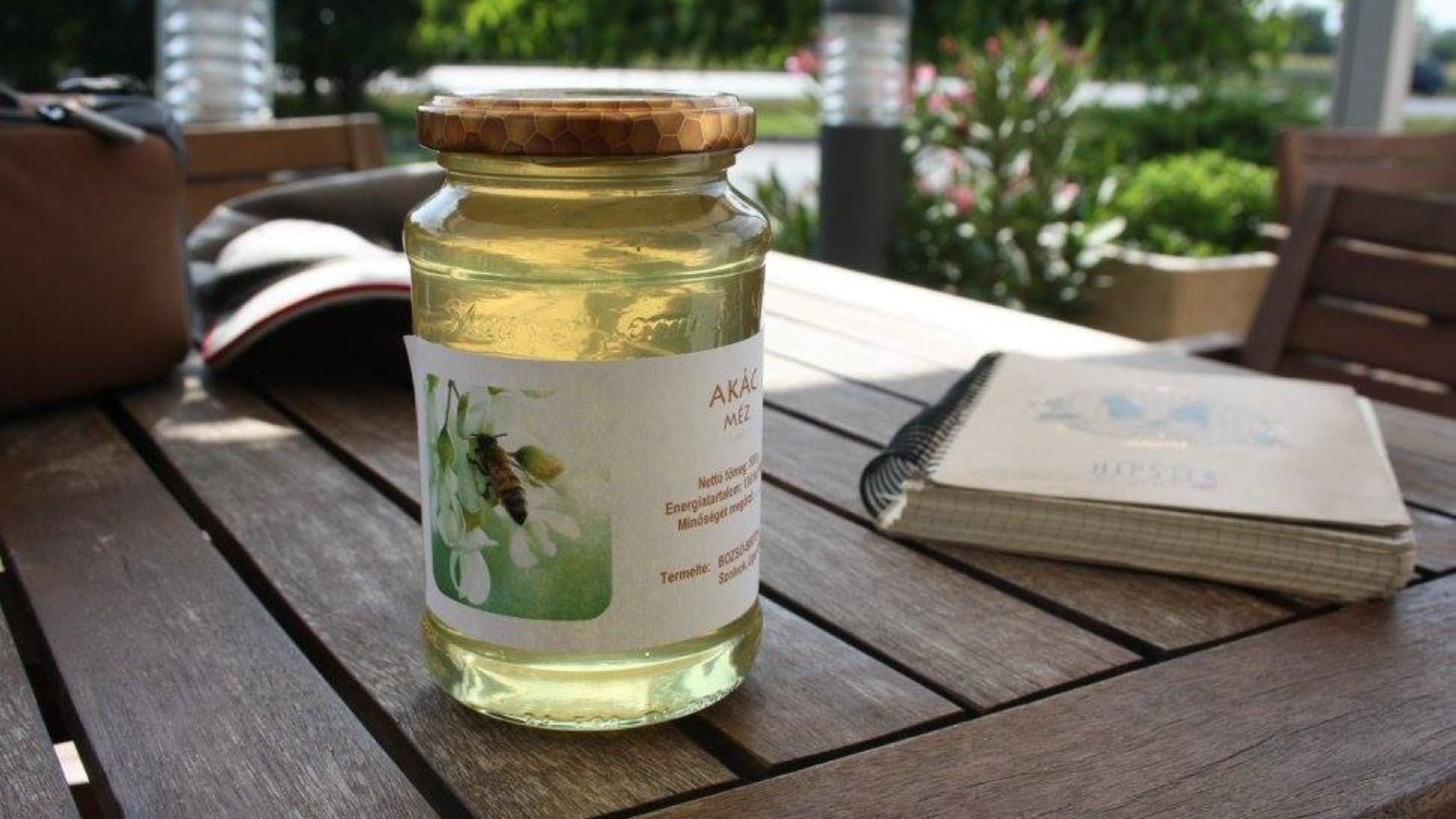
A single idea emerged. We decided to walk across the fields parallel to the highway. It was a good thing our backpacks were packed much more professionally than in the early days. The heaviest items were placed on top of the backpacks to raise the center of gravity and prevent us from leaning forward.
"Some see it as an obstacle, while others see it as an opportunity to rest," we joked while wiping sweat off our foreheads as an obstacle appeared on our path.
Kamile settled in the shade. It was a perfect time to fill her diary. While my partner recorded the events for future generations, I ventured into the vast sea of corn. Fortunately, the journey didn't last long as a new discovery emerged ahead. It was a drainage tunnel running under the highway. Finally!
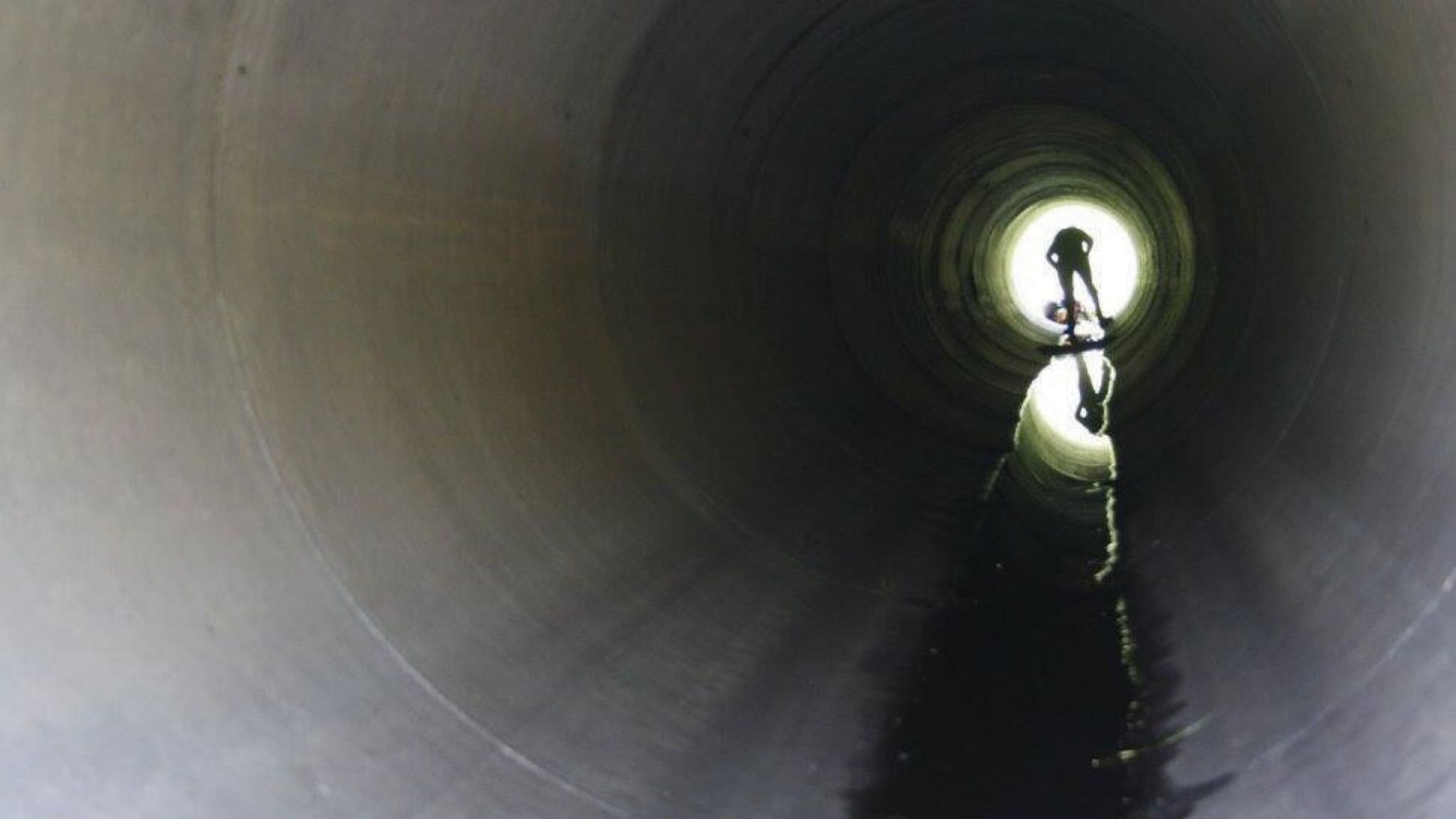
To Nyíregyháza with Jason Statham
"Two movie stars in one day," I pondered aloud, noticing the driver was a spiffing image of Jason Statham.
This time, a Frenchman stopped. In certain features, or perhaps even in driving habits, the man resembled the famous actor often seen in action films. We were speeding at 130-140 km/h, and he would let go of the steering wheel and clasp his hands for a prayer. Then he would turn to us and make a facial expression as if to say, "No one is driving! What will happen now?"
"It's best not to pay attention to him or he might just step on the pedal even more," I chuckled while preparing I was going to sleep.
When there were no spectators, there was no desire to perform. The show ended just as it began. As the conversation started, the man explained that he was traveling to Nyíregyháza. His mother has been living there for some time. Nyíregyháza happened to be on our route too.
Despite the jokes that might have seemed unusual at first, the man appeared to be a good-hearted person. He would always inquire whether the air conditioning was properly adjusted and if the music was not too loud. He showed interest in the Lithuanian language and traditions.
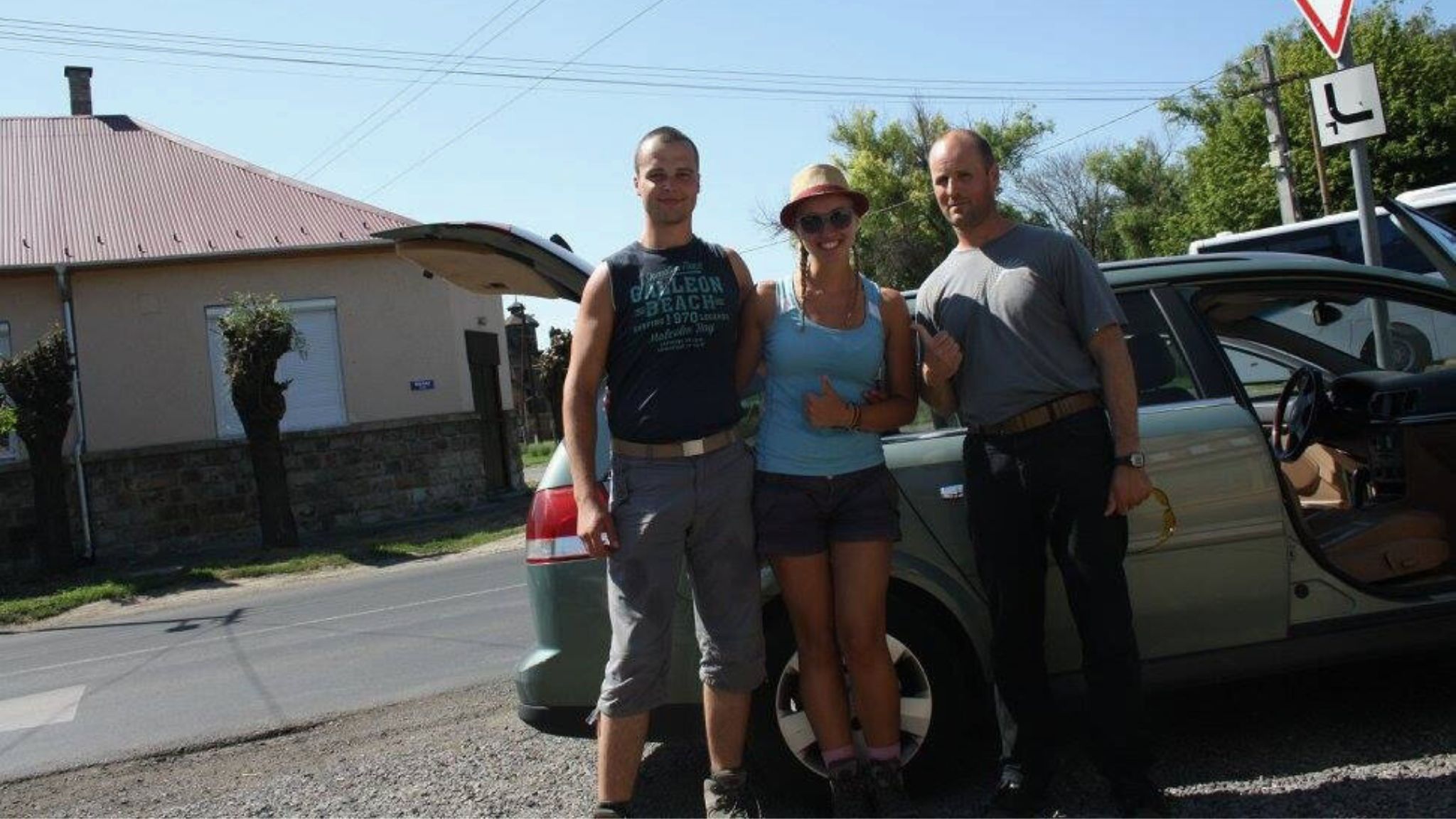
A child in an adult's body
Nyíregyháza is the seventh-largest city in Hungary, located in the northeastern part of the country. We stopped right in the heart of the city. The driver's gaze caught Kamile's companion Kevin the Bear. It seemed to brighten his day as he hurried towards the trunk. We found out that this was where he was keeping a plush Koala. Perhaps a gift for his daughter?
Things took an unexpected turn. The sturdy and mature-looking man took both toys and began simulating a romantic encounter between them: French-style kisses and compliments. And to top it off, he rushed back to the trunk and pulled out another plush toy - a tiger.
Although I didn't ask, I could bet that the man had children. Now being a father myself, I understand how one develops the skills to imitate voices and portray a lion, a mouse, or whatever is needed at that moment to entertain their child.
3 days as guests in Hungary
"My pockets are full of money. I have to give it to my Mom because it is not safe to carry it with me. Then I will take you to Romania."
The night passed peacefully. We settled in a cozy place by the lake, a few kilometers from Nyíregyháza. The next day we spent in Debrecen. We ate pastries with acacia honey given to us by one of the drivers. In the evening, we had a long hike out of the city and another night in nature, this time near the forest. If memory serves me right, it was near Debrecen Airport.
We met István in Berettyóújfalu, a town whose name has broken many tongues. We spent a good half an hour there and happily enjoyed a homemade scrambled egg and sausage prepared by István's mother. We also tasted a local drink. For our journey, István packed us a loaf of bread, homemade sausages, mineral water, and honey produced by his bees.
We talked about history, and Lithuanian and Hungarian customs. István was a very knowledgeable person, particularly well-versed in the geography, and history of Hungary and neighboring countries.
After having a good meal, we set off for Oradea, the nearest city in Romania, located near the Hungarian border. We were stopped by officials at the border. They asked István if we were hitchhikers and if we requested a ride across the border. He replied that we were not. We were his friends.
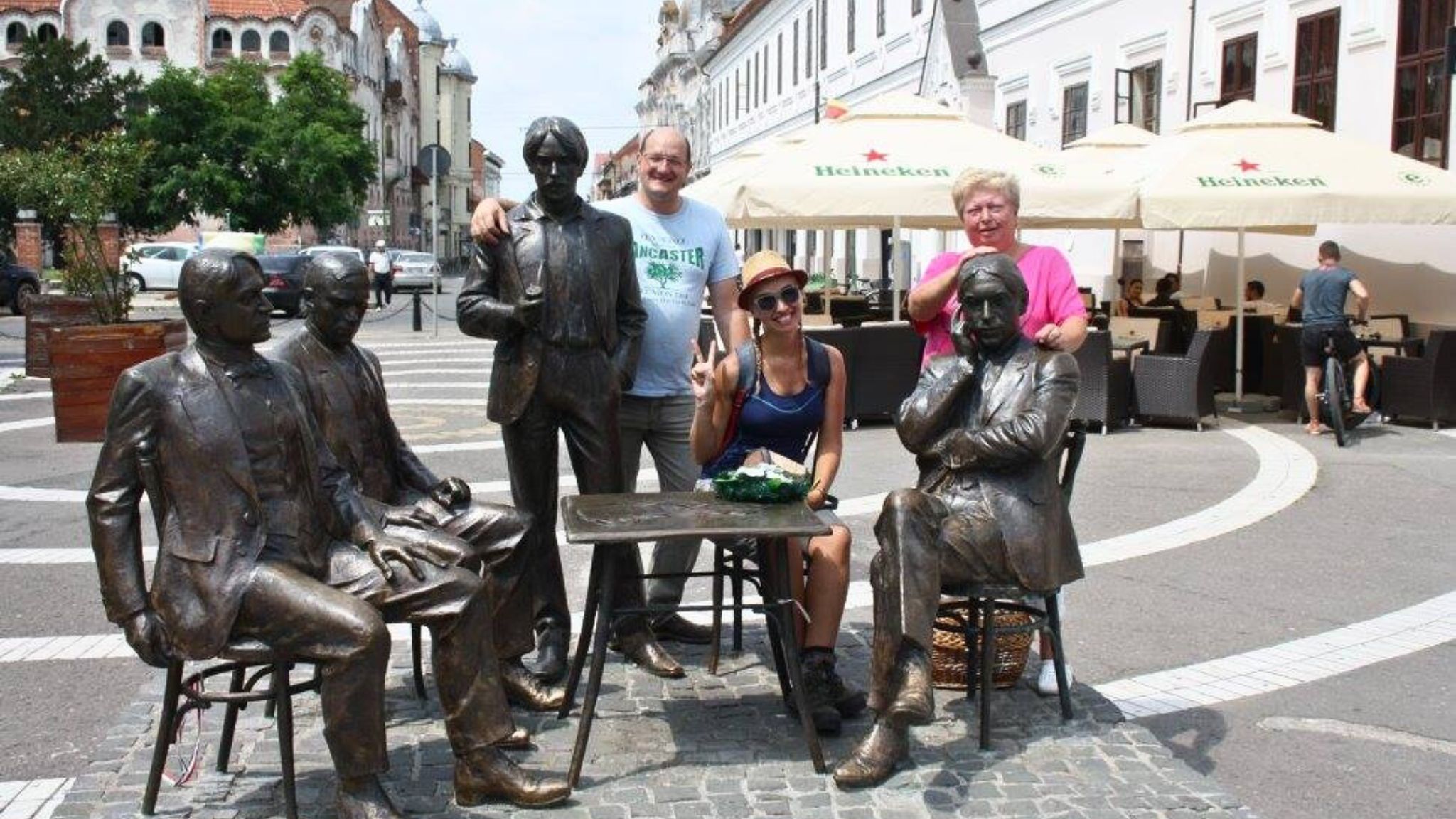
The Relentless Call of Ducks
Ištvan's mother also decided to join our company. Within a few hours, we visited the most famous architectural landmarks, following the recommendations of our friends. We ordered onion soup at a local tavern and enjoyed Romanian ice cream for dessert. However, Ištvan's mother kept glancing at the sun and nervously checking the time. It turns out she raises domestic birds that she has to feed them every few hours. Otherwise, she can't relax.
"I call it The Call of Ducks," explained Ištvan.
According to our agreement, after the city tour, we were supposed to go our separate ways. However, our Hungarian friends insisted on keeping us a bit longer and persuaded us to stay for a couple more days. To be honest, we didn't need much persuasion. What could be better than homemade donuts and a comfortable bed to regain our strength? It was a great opportunity to gather ourselves before the next part of the journey.
We got into Ištvan's large SUV, which he had recently purchased. Previously, he drove an old Volkswagen Golf II. When asked what prompted him to buy a new car, Ištvan replied, "I liked the Golf. It's a great car and very fuel-efficient. However, people found it incomprehensible that a farmer like me could not own an SUV. However, one of my friends once told me, 'If you bought a car just to prove that you're not poor, you're a fool!'"
From parrots and bees to longhorn cattle
After crossing the border once again, we set out to have dinner. In a small restaurant in a tiny town, Ištvan ordered a bread bowl of soup and strips of sliced beef tripe. The tripe was served with vegetables and generously seasoned with aromatic spices. It seemed that Hungarians enjoyed rich food, and the portions were pretty large.
Ištvan had a colorful personality. During dinner, it became apparent that he not only worked as a veterinarian but also grew sunflowers and kept honey bees. There was never a quiet moment in Ištvan's home. A flock of several dozen parrots chirping and squawking without restraint. Singing is also not foreign to Ištvan too. With a powerful voice, he especially enjoyed performing Hungarian folk songs.
As usual, morning dawned after a night's sleep. For breakfast, there was some "pig cheese". Interestingly, this dish had nothing to do with cheese. The host explained that when Pamela Anderson visited Hungary, she was disgusted by it.
We were left alone for a couple of hours until the host took care of the bees and performed other farm chores. Before getting to work, the host explained, "Yesterday, I took a break, but today I'll see what damage my laziness has caused."
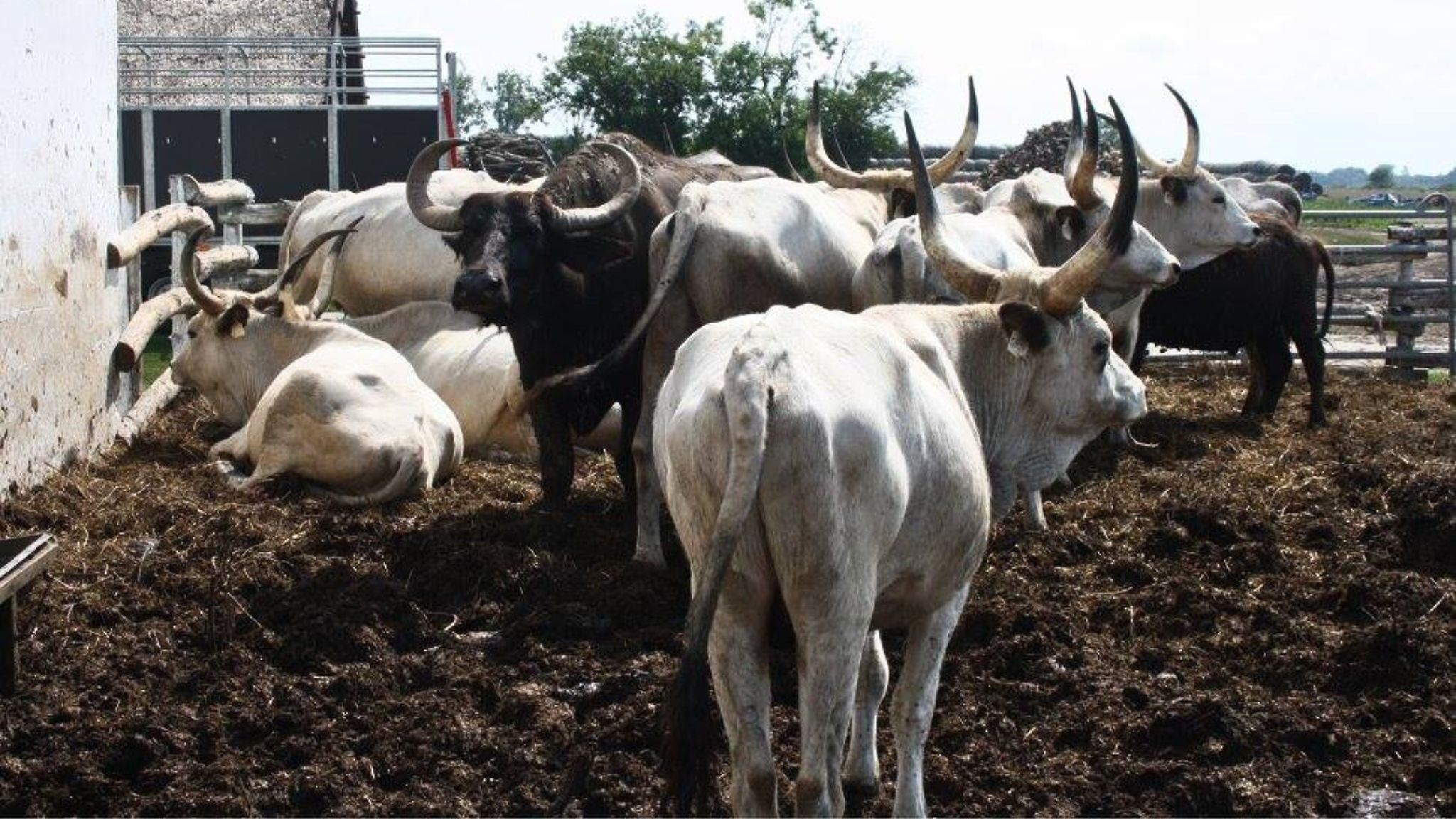
We spent the rest of the day at the wildlife reserve. It's where Ištvan had the most work to do. As our visit was coming to an end, we also stopped by a place called Mini Hungary.
When Ištvan received a call from his boss who was the head of the reserve we previously visited. He asked us for a minute of silence. As we found out, Ištvan forgot that he was supposed to be at work, so he had to pretend that he had gone on a work-related trip.
"I sometimes forget to pay the electric bill. Then I have to sit in the dark..." joked Ištvan.
On the last day, we were invited to be the guests of his mother. This time, Ištvan's younger brother, a man aš big as a six-door wardrobe, also appeared at the feast. The mother joked that when both of her sons are at home, there is not enough space in the room for even the thinnest mosquito to fly in.
While saying these words, she presented the most delicious dishes and served a tray of fragrant homemade donuts for dessert, the most delightful ones we had ever tasted.
Before the trip to Oradea, the family drew a map of Romania. They planned our route for six days, advising us to choose a longer path through Transylvania. They marked the most interesting places and explained where we would encounter the largest populations of Hungarian, German, and other minorities. They were generous with a few pieces of advice. The most important one was not to have any preconceptions.
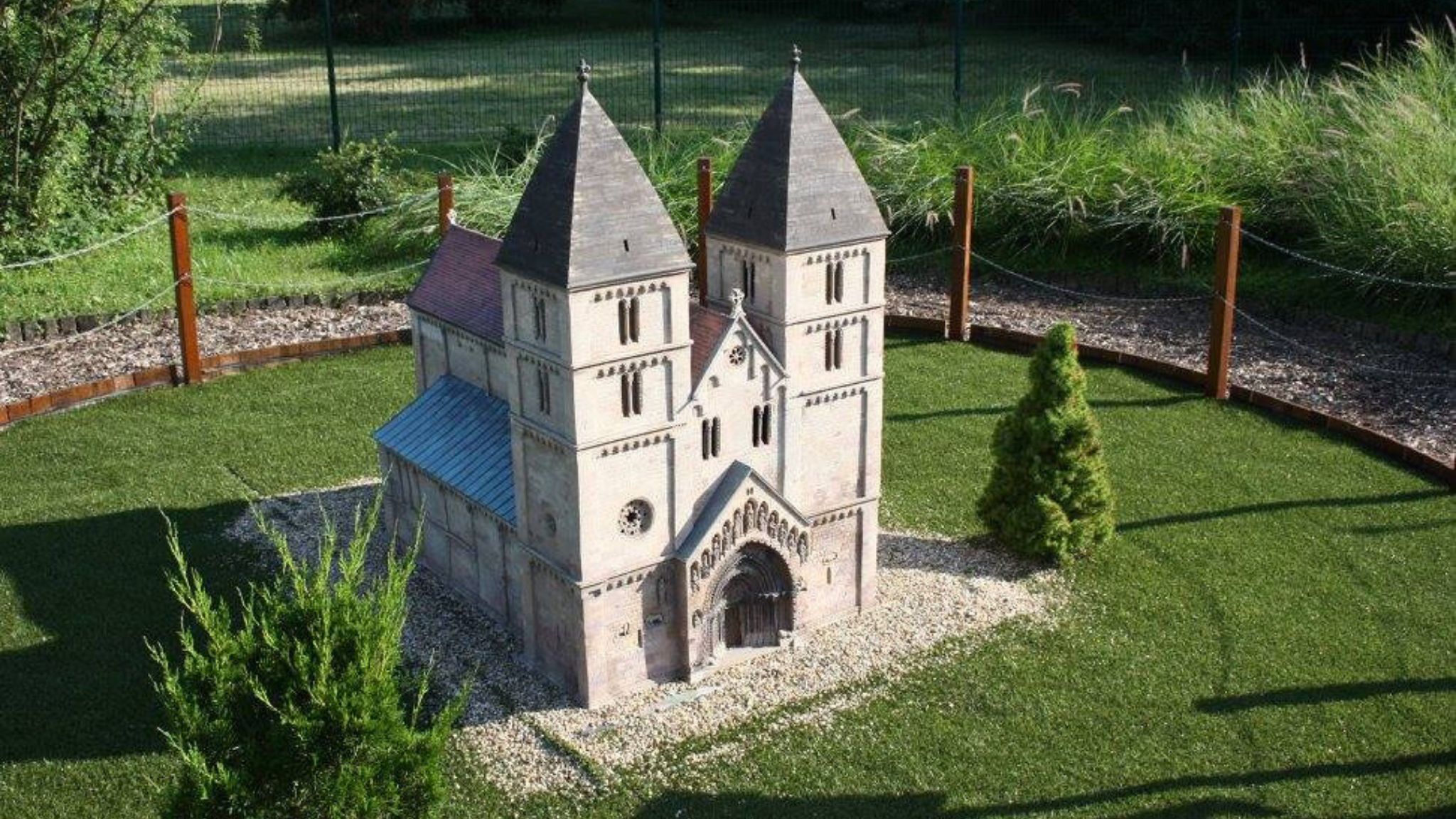
Romania
For some reason, it seemed like we were destined to meet a bunch of French people. This time, a curious medical student who was going to Cluj Napoca agreed to give us a ride.
Getting from Oradea to Cluj took 3 hours. The driver listened to educational cassette tapes and shared what he had learned. He assured us that the Romanian language is not difficult. As we chatted pleasantly, time flew by. Soon we got to the city known as the heart of Transylvania. The car stopped by the St. Michael's Church, where the man bid us farewell.
We spent the night at the hostel. It was a good opportunity to wash our clothes and reorganize our backpacks. The first few weeks were enough to clarify what was necessary and what was just worthless ballast.
The idea for the reorganization work was put forward by a hostel employee who expressed his desire to help by taking our backpacks to our room and hurting his spine in the process. Poor guy, but I always say, "If someone offers you help, put them to work!"
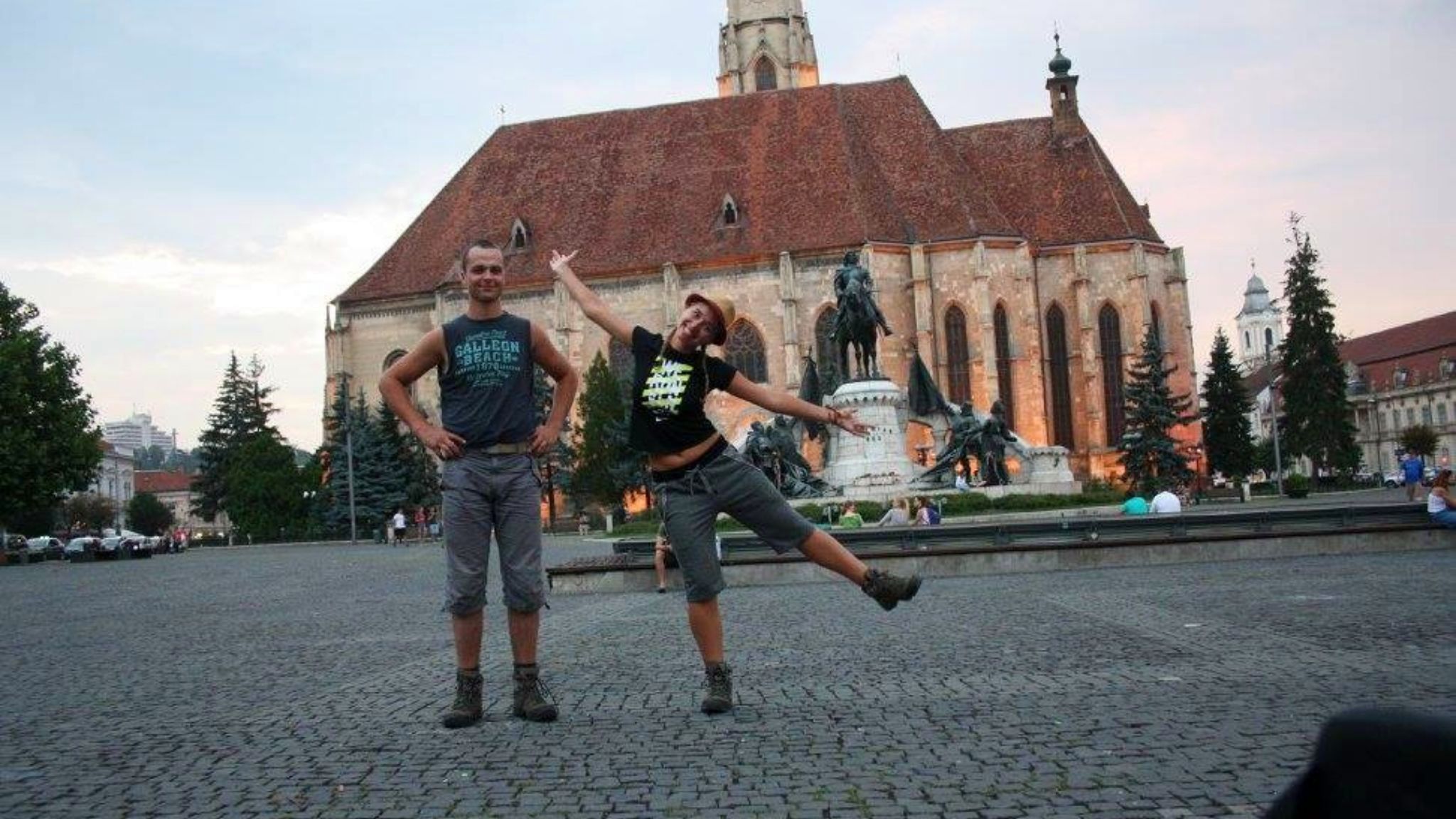
Lost in Cluj
Cluj-Napoca, also known simply as Cluj, is the third largest city in Romania, located in the northern part of the country. Some believe that the origins of the city date back to the Roman Empire when Emperor Trajan established a Roman legion base in this area, which he named Napoca. Cluj, with a population of a third of a million people, seemed large enough to get lost in.
The absence of internet connection and navigation reveals the holes in our sense or direction. Luckily, there was something I liked to call "help of a friend," where every encountered person becomes a friend if you just dare to approach and ask for some guidance. This time, a Hungarian working at the gas station became such a friend.
His eyes sparkled upon hearing about our intentions. Trembling with excitement, he invited us to sit down and promised to try to arrange accommodation in the next city. Sadly, his plan failed, but he drew a map on a piece of paper and explained how to exit Cluj. On another sheet of paper, he printed the letters "HR," which symbolized a specific region in Romania predominantly inhabited by Hungarians.
"While hitchhiking, hold this note in your hand. If a Hungarian passes by, they will definitely stop," he explained. Then he offered us some ice cream. The entire staff of the fuel station gathered to enjoy the spectacle.
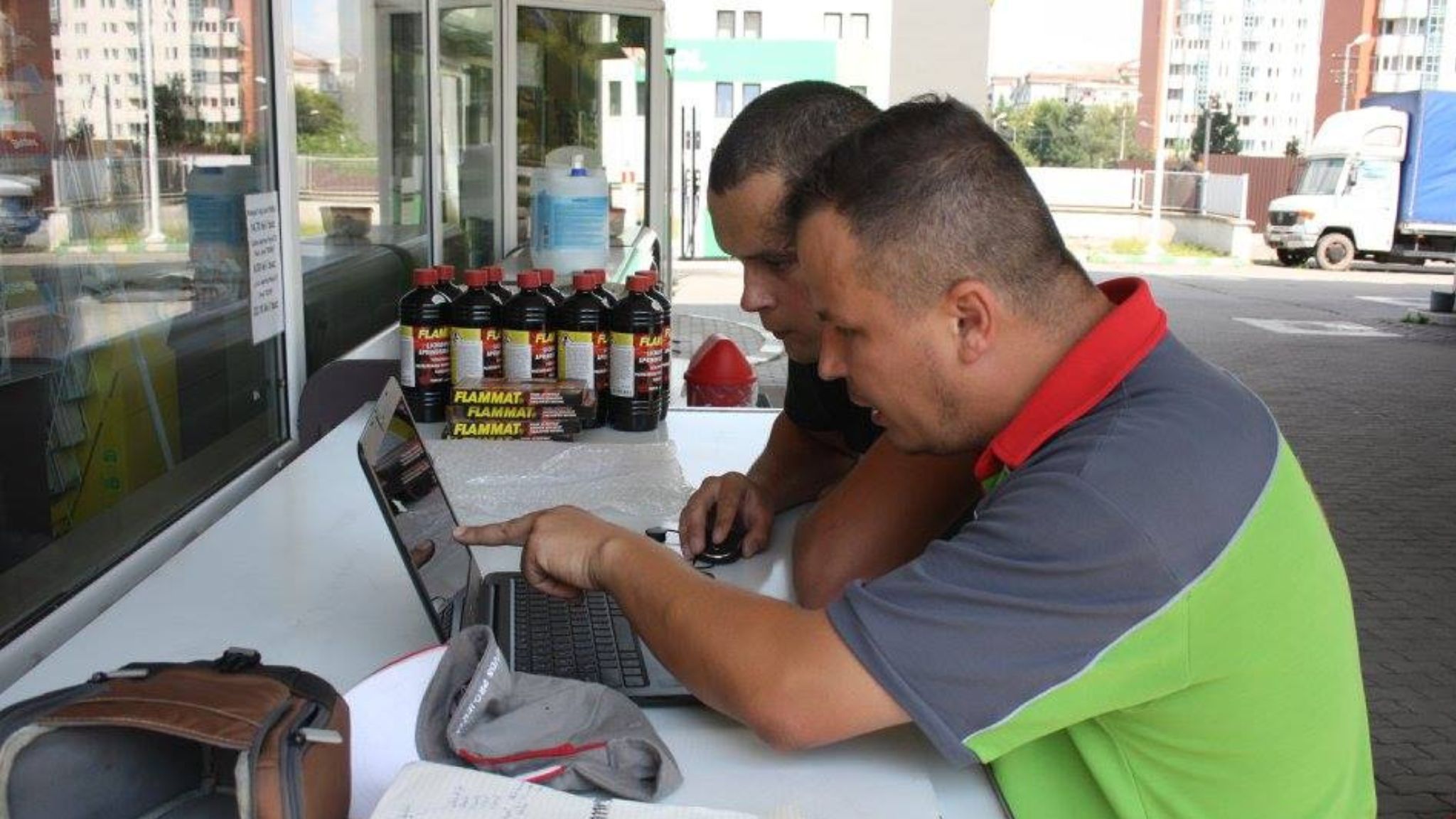
Night with the Horses
Turda greeted us with scorching heat. Luckily, as we reached the outskirts of the town, the merciless sun was covered by some clouds, and it started to cool down. It seemed like even the sun itself decided it was time for a well-deserved rest.
"I'm not a workhorse," it must have thought.
Speaking of horses, there are plentiful of them in Romania. Horses are traditionally herded by shepherds. From what I've seen, these duties are mostly carried out by the Gypsies.
Wherever you look, there are pastures for horses. At the end of the day, we decided to take a risk and camp in one of those green fields. A tent of the same color blended into the surroundings.
The morning turned out to be a little bit unusual. Suspicious rustling and grinding of teeth woke us up very early. I don't smoke, and I don't like smokers, but when for a moment you think about it, there is no doubt that upon seeing such a sight, a cigarette would slip out of even the biggest smoker's yellowed teeth. The horse stuck its head inside our tent.

You can hardly hear a Romanian word
After saying goodbye to the Gypsies who were herding the horses, it was time to get back on the road. The direction was Miercurea Ciuc - a town where the majority of the population was not Romanian but Hungarian. As Ištvan explained, it has been this way since the territory was a part of the Kingdom of Hungary.
"Te habla español?" asked the dark-skinned driver of the minibus. Most likely, due to our tan, we reminded him of Spaniards.
All the people we encountered were kind-hearted, and things went smoothly. Hitchhiking is interesting because sometimes it's not you who chooses the road, but the road chooses you. It didn't take long to realize that when we were offered a ride by Andrej Andritcu, a photographer from Moldova who organizes photography expeditions to the mountains for a living.
Intending to visit Târgu Mureș, we decided to stay with Andrej. He promised to take us all the way to our destination, but there was no time for stops. Some would say that such a decision was a great loss because in Târgu Mureș there was a lot to see, but sometimes it's best to trust fate and see where the road leads you.
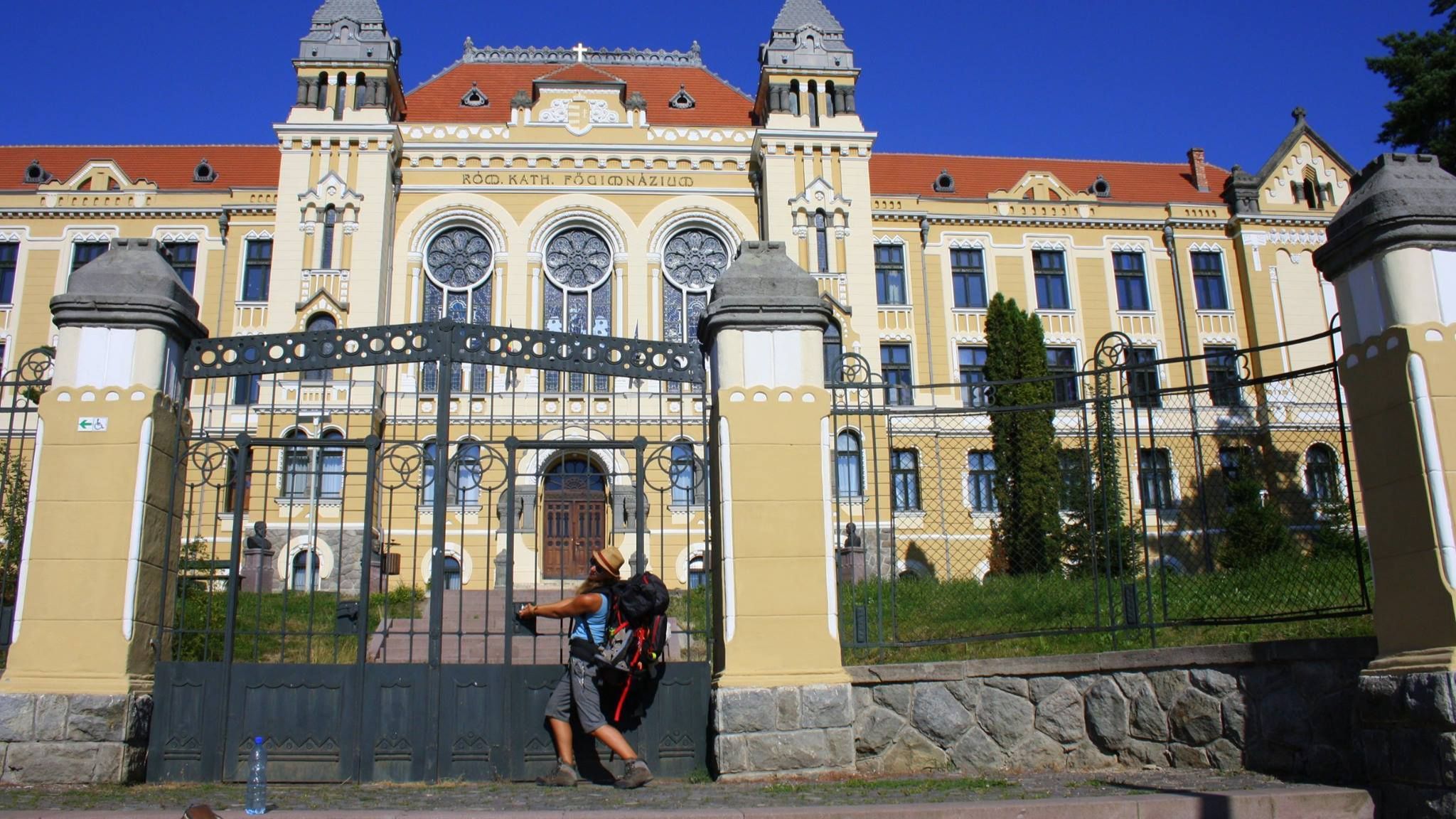
Miercurea Ciuc
The town of Mierkurea Ciuc is located in the so-called Székely Land. The Székels are a distinct Hungarian ethnic group with cultural and linguistic peculiarities. The locals refer to the region as a country within the country. This area has several times more Hungarians than Romanians.
Following Ištvan's advice, we contacted his friend. He confirmed that he would be waiting for us but disappeared without a trace. It would be hard to judge as we arrived a whole day too early. He is a nature photographer, so it's not surprising if he went to the mountains for work or something. Regardless, we didn't hear anything from him in the future either.
There's no bad thing that doesn't turn into something good. Climbing up a steep slope and pushing through ferns and bushes, we reached the mountaintop. As the night took over the sky, a magnificent view opened up before us. The city shimmered golden in the night and seemed it was within arm's reach. Occasionally, the barking of dogs could be heard as shepherds were herding their animals.
Right before falling asleep, we discussed our plans for the next couple of days. Transylvania is associated with the legend of Count Dracula and gloomy castles. It would have been a shame to leave the area without seeing them. We decided to head to Brașov first thing in the morning. From there, the famous Bran Castle is easily reachable by bus.
''Lithuania-Romania-autostop!''
I uttered a single word, "Lithuania," to the driver.
"Aaa..." he replied, shaking his head.
The man sitting next to him, accompanied by a not-so-young companion, persistently tried to figure out where we could be from. When you want something, language barriers don't get in the way. Even though not everyone speaks English, certain terms are understood internationally.
"Lithuania-Romania-autostop," I continued the conversation.
"Ayayay..." he rolled his eyes and couldn't stop muttering.
The small minibus raced at a cosmic speed. The skillful driver didn't miss the chance to showcase his abilities. We reached Brasov in no time.
First time couchsurfing
Valentin promised to arrive at 8:30 PM. We reached out to him on Couchsurfing.com. For those who do not know, it's an online platform where travelers connect with locals and sometimes find the ones who are willing to host them.
There can be various reasons for using such a method. For some, it's difficult to afford to stay at a hotel, while for others, it's a way to meet locals and in this way to get to know the local culture. It's quite common for people to both host guests and stay with others while traveling in a foreign country. In the past, we have also been hosts to such travelers ourselves.
"I can't stand you! For God's sake, I can't stand you!" Valentin spoke the truth right into our eyes. "When I was your age, I didn't accomplish anything like this. I simply didn't think about it. Friends and having fun were what mattered the most. I am so jealous!"
Every city has its character. When it comes to Brasov, it feels like some kind of ancient atmosphere envelops the city. The old town echoes the times when people engaged in face-to-face conversations rather than mostly meeting online. The Brașov Sign shines on the hill. It's very similar to the one in Hollywood. The surrounding forests are teeming with bears.
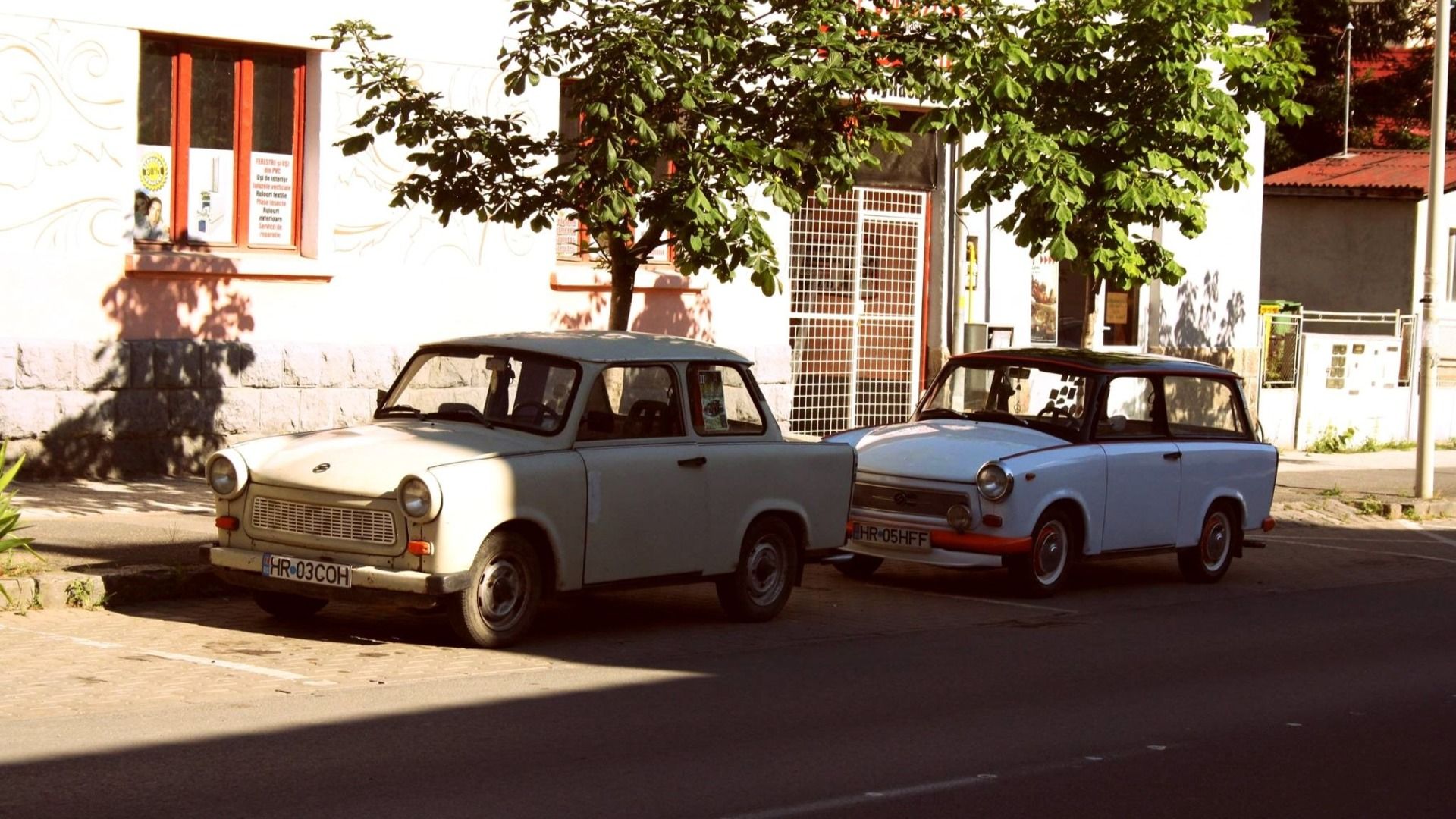
Brasov
Everyone has heard of Vlad the Impaler. The Prince of Wallachia inspired the Irish writer Bram Stoker to create the novel "Dracula." Whether deserved or not, in fantasy literature, Vlad is portrayed as a vampire. Some believe that he earned this nickname by fighting against the Turks. Both his enemies and disobedient servants were brutally tortured.
It is said that some Turkish envoys refused to remove their turbans in front of Vlad, and the prince ordered them to be punished by nailing the turbans to their heads. It's unclear how much truth there is to this, but these imagination-stirring stories attract visitors. The most visited place closely associated with Vlad the Impaler is Bran Castle. Following Valentin's advice, we arrived there by bus.
The castle, perched on a rocky cliff, patiently endured the chattering children and their parents mindlessly devouring cotton candy. Mass tourism has the power to destroy any sense of romance. Is it the same everywhere in all the tourist sites in Romania? Probably not as it is a vast and underrated country and the region of Transylvania is filled with mountains, forests, and fortresses. However, when it comes to Bran Castle, for us there were way too many tourists.
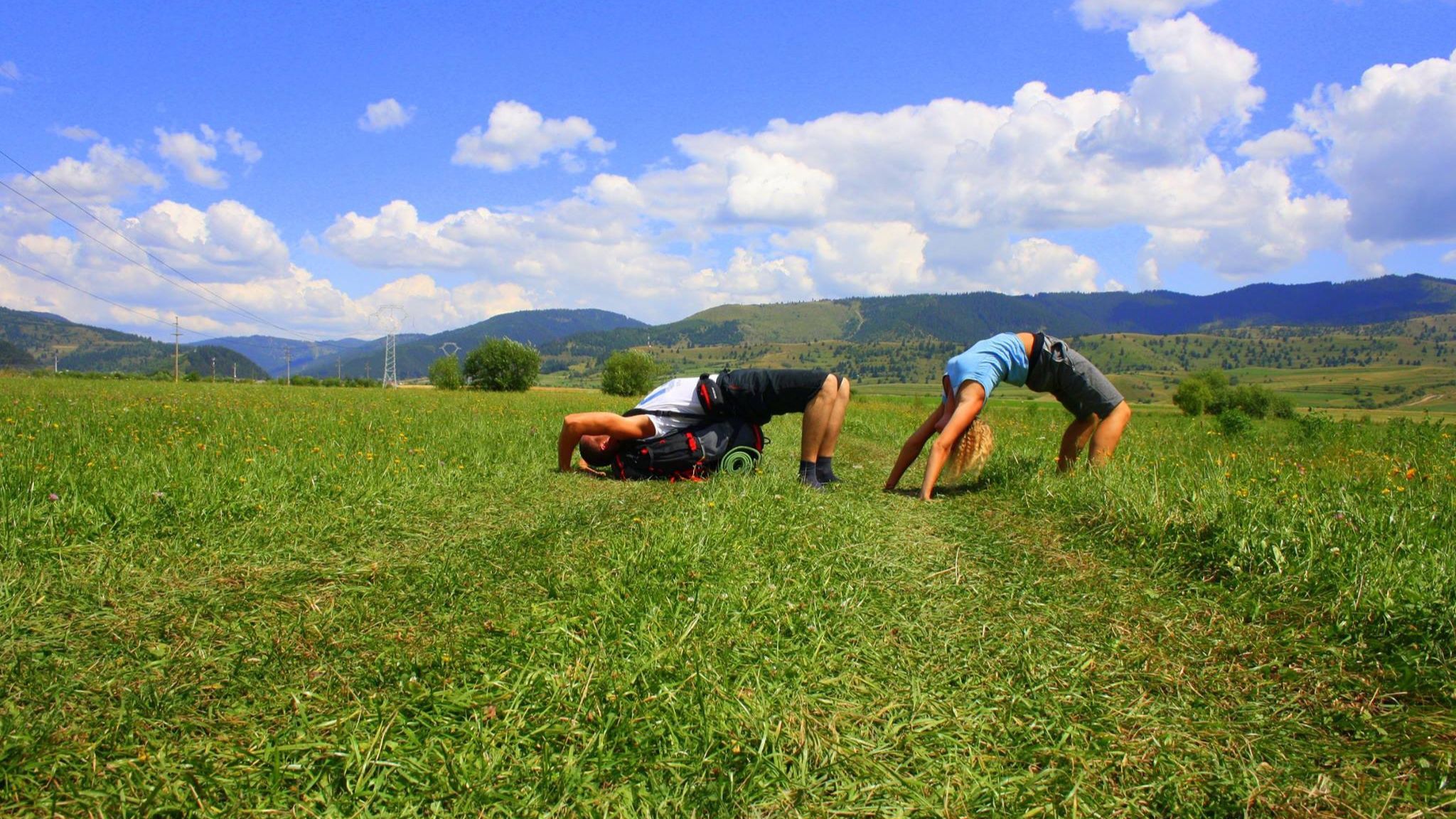
Bucharest
Visiting Bran Castle and traveling two hundred kilometers to the south of the country on the same day seemed like an ambitious plan, but things took an unexpected turn as an elderly man offered his help and gave us a ride all the way to the capital.
There was no need for elaborate words of gratitude. Placing our hands over our hearts, we bowed to the elderly man, and he responded with a smile. A cheerful atmosphere accompanied us for the rest of the day.
According to the legend, Bucharest was named after a shepherd named Bucur, who was in love with a maiden named Dâmbovița. The city is crossed by a river of the same name. It is not a secret that Bucharest has lots to offer to its visitors.
One of the most amusing is the narrowest street in the city. Obolului Street more closely resembles a corridor than an actual street. Locals joke that if you indulge in delicious Romanian dishes, it's better not to go there as you might get stuck between the two walls.
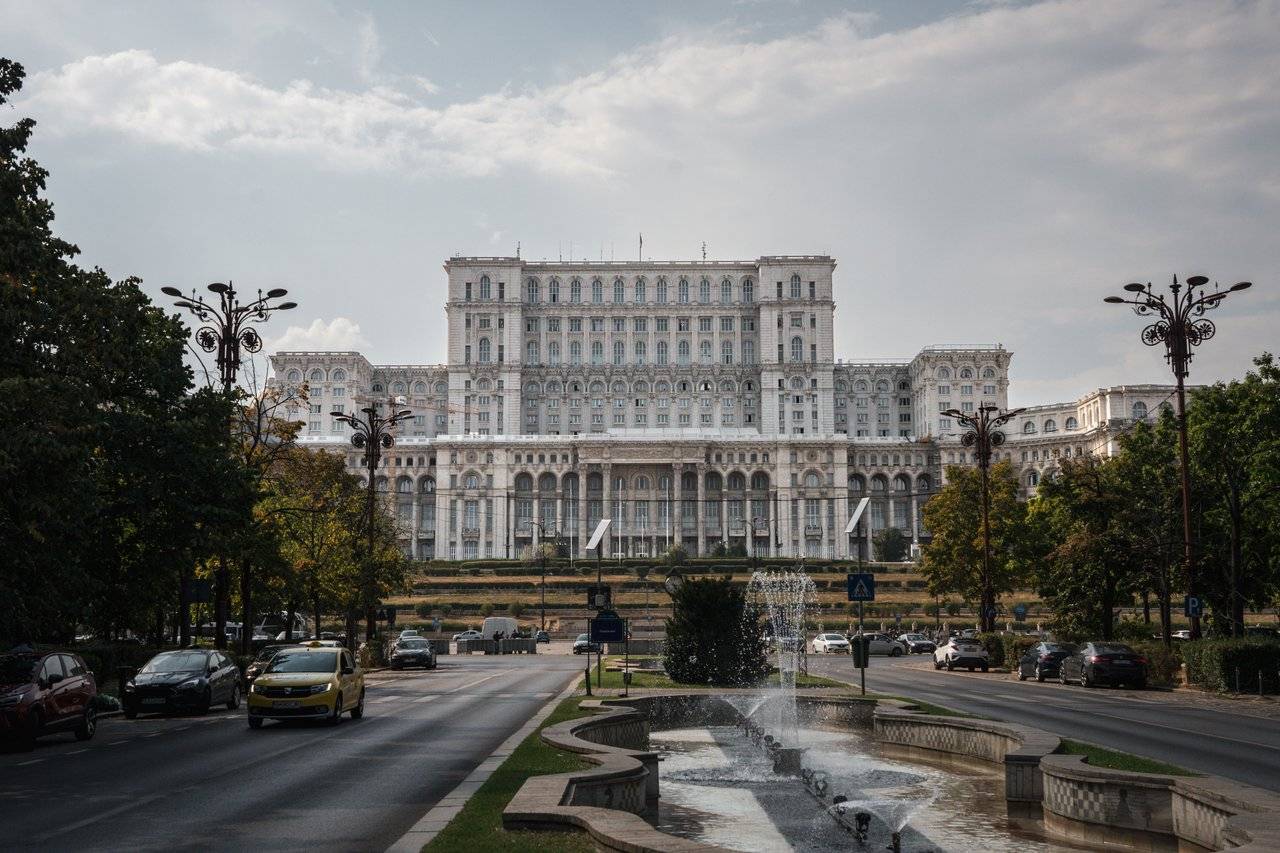
On a pitch-black night, the city lights shimmered with a yellow glow. Linden trees, balconies drowning in flowers, and the delightful smells emanating from local cafés. The further away from the city center, the fewer people we encountered. After wandering through several side streets, we quickly witnessed that whoever seeks, finds.
"Come in," a young woman with an apron waited at the door. "I made some snacks. Make yourself at home."
The path to the room led up wooden spiral stairs to the third floor. The coziness of the apartment and the tiny windows added quite a bit to the overall comfort. A faint smell of smoke drifted from the kitchen. It seemed that the hostess had lit the stove. On the table, a glass container filled with the most delicious fruits eagerly awaited.
It was time to rest. We would decide where to go next in the morning. In the morning good ideas are easier to come by. It is not without reason that they say morning is The Creator, and evening is The Destroyer.
Bulgaria
Several Romanians tried to dissuade us from traveling to Bulgaria. According to them, it would be a waste of time. A sort of déjà vu. Hungarians said something similar about Romania, and Slovaks about Hungary. However, the reasons for such phenomena were unclear. Maybe they had been there before and were genuinely disappointed. An old friend of mine shared his thoughts:
"From time to time, I visit Bulgaria for work. I've never heard of anyone traveling there the way you do."
"We're neither the first nor the last," I replied, yet we sought advice on crossing the border by train.
The document check took longer than usual. Officials at the train station were suspicious of a few dark-complexioned passengers who hardly spoke English. We arrived in Russe in the evening. The train we were supposed to transfer to had probably departed long ago, and the next one wouldn't leave until 6 in the morning. The station attendant explained she was not able to help. The question arose: where to stay for the night?
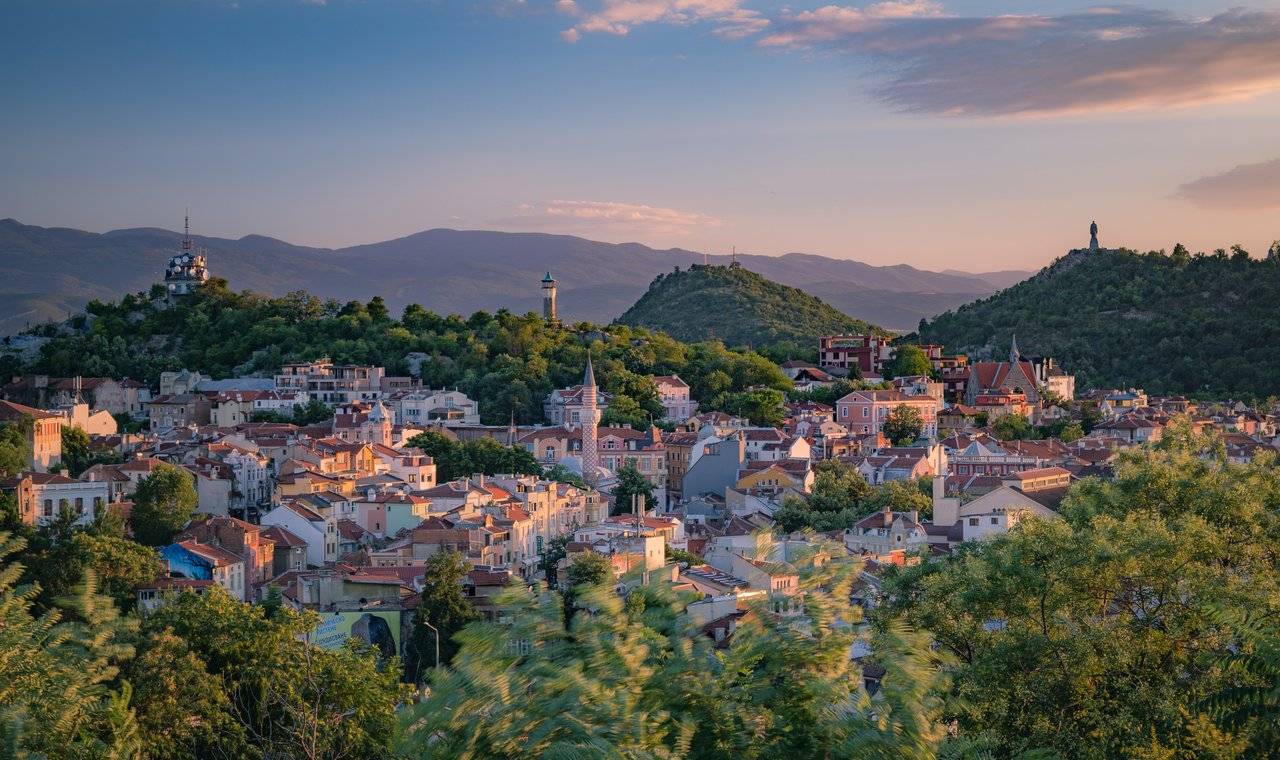
At James' Place
It's hard to concentrate when the empty stomach growls its tune. Eyes wandered towards the local store. The atmosphere resembled Lithuania twenty years ago. In the heavily loaded dairy section, scarfed grandmothers battled each other for the last package of their favorite milk.
We grabbed a loaf of bread, a bottle of kefir, and a few other things and hurried to find a nice place to consume them. There was a gazebo next to the fuel station.
"Hello, friends! Where are you from and where are you headed?" one of the employees greeted us in a proper British accent. "Do you already know where you'll be staying tonight?"
We explained the situation, yet our fellow lad didn't seem surprised. He swiftly pulled out his mobile phone and made a call. After a brief conversation, the guy explained in a few words that we could stay with his buddy James. Problem solved.
James was a full-blooded Englishman. He moved to Russe a few years ago. Over time, he found a girlfriend and opened a bar. It happened to be his day off, so we were lucky. It seemed like just moments ago we were sharing bread in the middle of nowhere, and now we were having coffee at James's apartment. At first glance, being late for the train might seem like a big misfortune, but it turned out to be a blessing in disguise. Hopefully, we will meet him again in the future.
"Poor bastards…" James said sympathetically. To make it to the 6 o'clock train, we had to wake up very early.
Towards the Black Sea
Varna – the third-largest city in Bulgaria, situated on the coast of the Black Sea. Whether it's to attract tourists or for other purposes, this popular resort is often referred to as the Pearl of the Black Sea. Many of the sun-tanned visitors of the city do not know what Varna is famous for, besides its beaches and hotels filled with wealthy vacationers. For example, it is said that the oldest gold treasure in the world was found here a few decades ago.
According to scientists, golden artifacts discovered in an ancient burial site suggest that an advanced civilization once lived here, unrecorded in history books. After expert analysis, it was concluded that these exquisitely crafted ornaments were made around 4200-4600 BC. The treasure was found during excavation work done by a 22-year-old excavator operator.
Pobiti Kamani is another curiosity that the Varna region boasts. Known as the Stone Desert or Stone Forest, it's Bulgaria's only desert. Keep in mind, that it is renowned not only for sandstorms and dunes. Hundreds of stone columns are scattered across the entire area, appearing as if they were driven into the sand. The origin of these columns isn't entirely clear. Most scientists tend to believe that these columns were naturally formed by the forces of nature and despite being very unusual, human intervention is kind of ruled out.
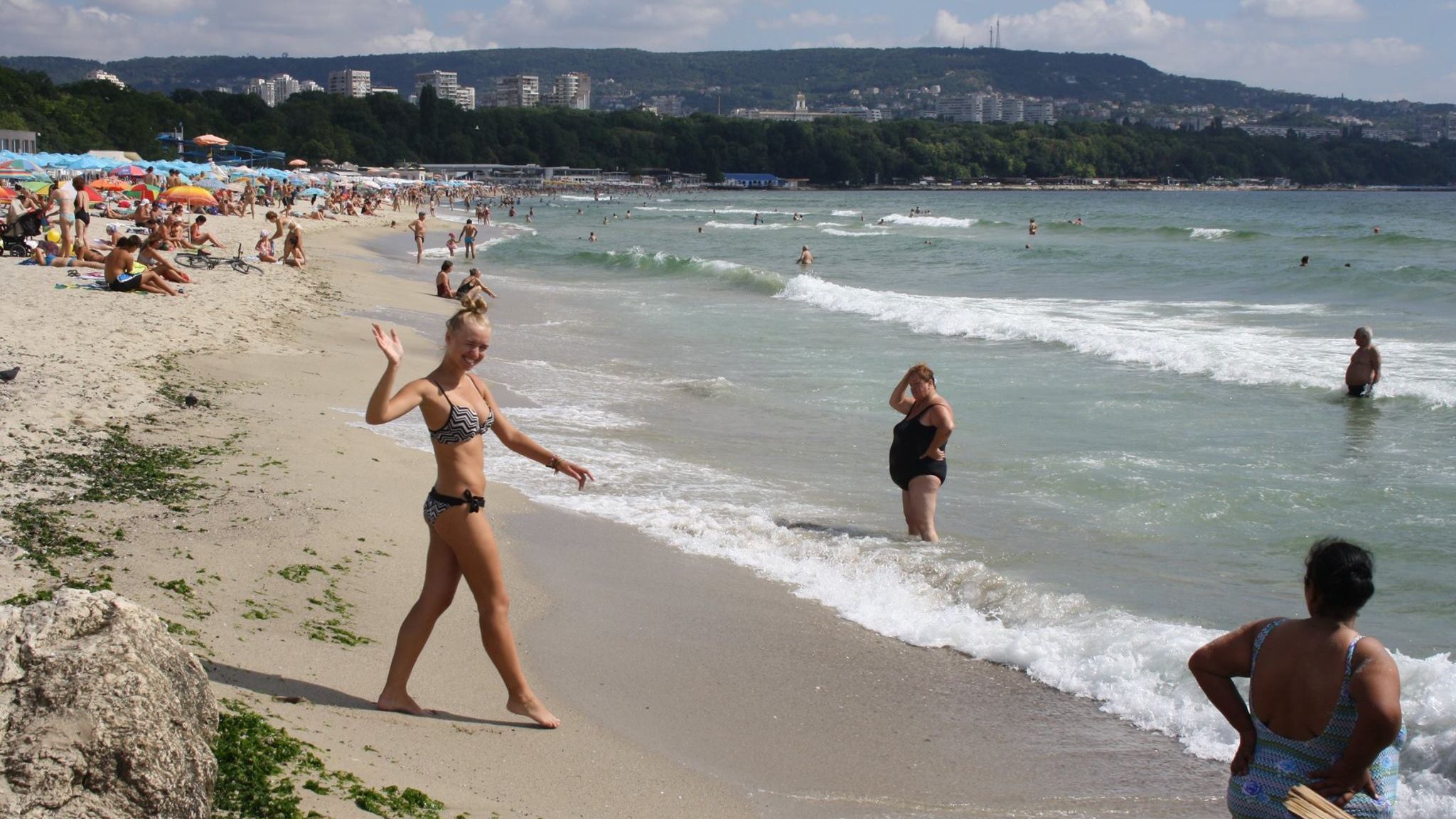
Final Stop – Burgas
The day in Europe was almost over. The final stop before arriving in Turkey happened to be Burgas. Another place, but a similar story: hundreds if not thousands of tourists and the occasional live street performer here and there.
"It's tough, but what can we do," complained some of the tourists who seemed a little bit tired of the monotony of eating well and lying on the beach.
To be honest, it was pretty hot even in the evening. An air conditioner and a cold fruit cocktail would have been heaven-sent, but the posh hotels in Burgas weren't for budget backpackers. With no plans for the night, we had a feeling that everything would work itself out.
Suddenly my gaze caught a couple of exceptional-looking travelers. Both the bearded guy and the long-haired girl wore clunky hiking boots and carried hundred-liter backpacks. They seemed like seasoned vagabonds and they moved forward boldly as if "they had a purpose in life".
"We should follow them! It looks like they know something we don't."
A few turns to the left, a couple more to the right, and here we were – at one of the coziest beaches one could ever dream about. The mysterious couple disappeared into the crowd, and it was getting late so we settled down for some rest. As we listened to the sounds of the sea and gradually diminished our food supplies, people dwindled little by little until finally, we were the only ones left on the beach.

Suddenly, the wind shifted direction, and our sensitive nasal receptors caught a scent of urine. Someone couldn't hold the pee. However, we successfully moved to another location and the issue was resolved. The air around us felt fresh once again.
Kamile and I stretched out on warm sand. The sun was already partially hidden behind the horizon and it felt like there was no need for a tent or to seek for another type of shelter. As we discussed the events of the day until the tiredness took hold of us and we were immersed in deep sleep and the sound of the waves. We remained lying there until the early morning.
"Aren't you cold?" at some point Kamile asked me while wrapping herself in a blanket.
"Men don't get cold," I replied. "Chilly at worst."
We were soon to leave Europe for at least a few months. How this adventure would end would only be revealed in the future. What's clear was that there were going to be many changes: different languages, and different customs. The feeling of adventure was immense.
Turkey
Finally, we have reached the Turkish border. The process was straightforward - a glance at passports and a quick check of our belongings. Most travelers were Turks returning from Bulgaria. You could easily spot a fellow European by their attire: men in their favorite football team jerseys and white sneakers, children - wearing "Dragon Ball" caps.
Turkish attire is much more conservative. Long-sleeved shirts, trousers of faint colors, well-polished shoes. Most women wore scarves. Their dresses were long and of various colors, with sleeves covering three-quarters of their arms.
Other details were also noticeable. Men and women sat in a particular order. Women took the window seat, while their husbands or sons, as their protectors, sat beside them. If strangers had to sit together, a man would sit next to another man, and a woman would sit next to another woman. When a mother sits with her daughter, the younger one takes the window seat.
When it comes to the youth, there were significant similarities. Both boys and girls enjoyed taking selfies. The strong scent of perfume was much stronger than what our modest Lithuanian noses were accustomed to.
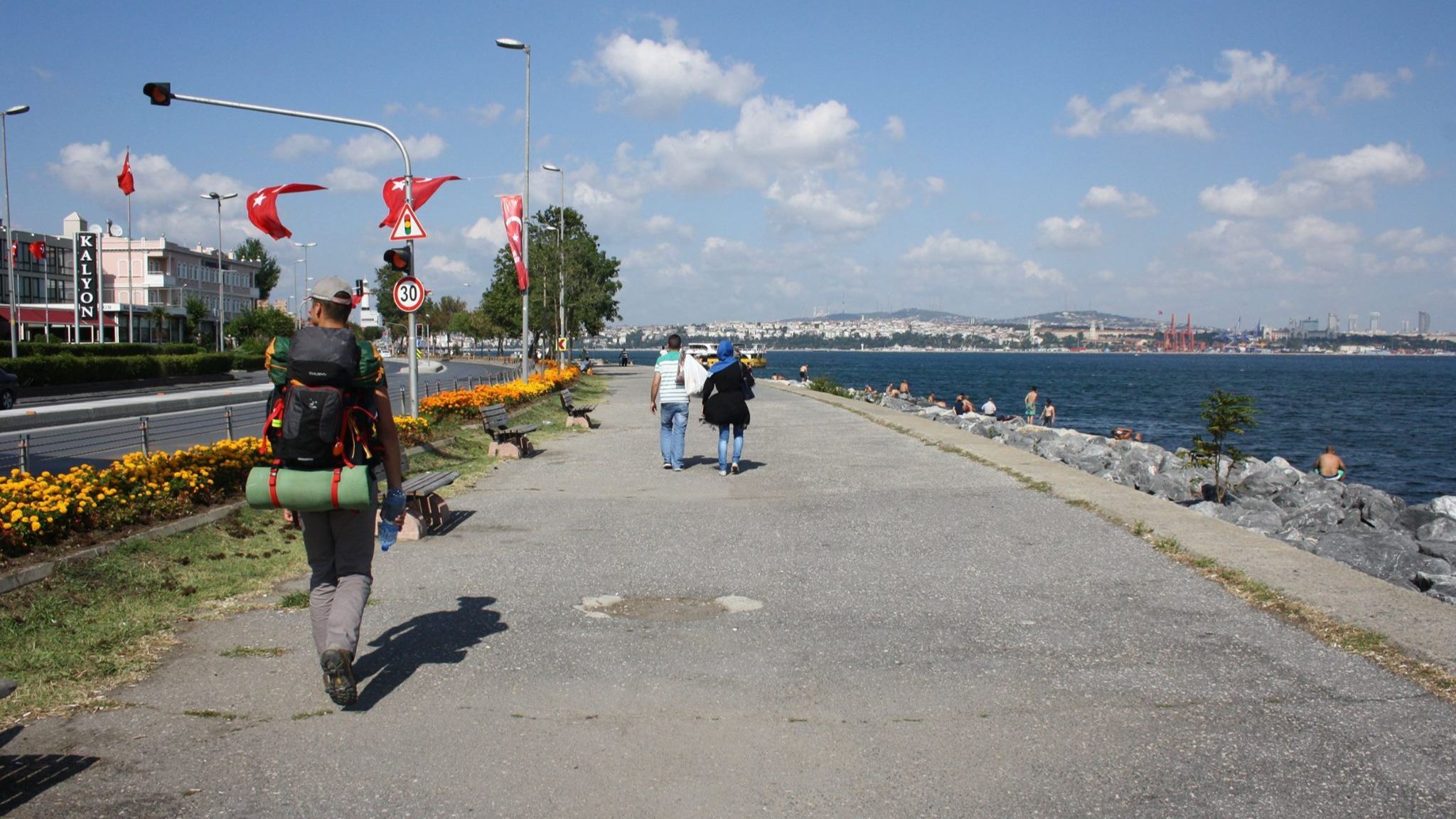
Istanbul - Shocking to calm Northerners
Istanbul - one of the largest cities in the world. Different sources provided different data, but it seemed that the city's population could be around 15-16 million. Locals said that if all legal and illegal immigrants were registered, this already impressive number would increase by at least one or two million.
Crowds of people, the hustle and bustle, and very strong scents. Turkish music on every corner, mixed with the loud shouting of local businessmen always having something to offer. It seemed everyone was rushing somewhere, buying or selling. It seemed like even while speaking on the phone, they attempted to overpower their conversation partner by frequently raising their voice. A bit of a cultural shock for visitors from the North.
While heading towards the metro, a Turkish couple introduced themselves: a tall guy with a big mustache and his charming wife. They were heading to the same area as us, so they offered their company and guidance. They explained the nuances of using the metro and advised where to look for accommodation. For some reason on that particular day using the metro was free.
Tiny guesthouses that didn't collaborate with popular online platforms were our favorite. You could not only inspect the room before shaking hands with the owner but also negotiate the price. Also, it felt good to know that the money went directly to the family providing accommodation and not to some big corporation.

One of the ways to get scammed
"Excuse me!” – I addressed a man who walked at a fast pace right in front of us. “You dropped your shoe brush!”
“Oh, thank you, sir,” – the gentleman answered gratefully. “Allow me to clean your shoes!”
What a kind man! Very noble indeed. He cared about how we were feeling, and where we were headed. However, he ruthlessly criticized our plan to visit Istanbul's Grand Bazaar, as according to him it was way too flooded with tourists.
The man offered to escort us to his dear friend. According to him, that friend of his was supposed to give us an offer we would not be able to refuse. Out of politeness, we agreed to visit him. The only odd thing was that he left his bucket with the brush on the sidewalk instead of taking it with him.
The path to the store seemed suspiciously long and winding. A few times he tried to rush our pace until eventually, he vanished into the thick crowd. This journey was way too long so we took a different route. Destination - The Grand Bazaar.
“Hey, come back! You’re going the wrong way!” – the voice of a clearly displeased man emerged from the crowd of people.
Trying to explain that we weren't interested in the goods and that we were not in a position of of buying them even if we visited his friend, was like pouring oil into a fire. His anger flared up, and his graciousness for returning the brush turned into a demand for payment for cleaning the shoes. I ended up paying 5 liras. The shoes, after all, were even shinier than my Uncle Zenius' bald head.
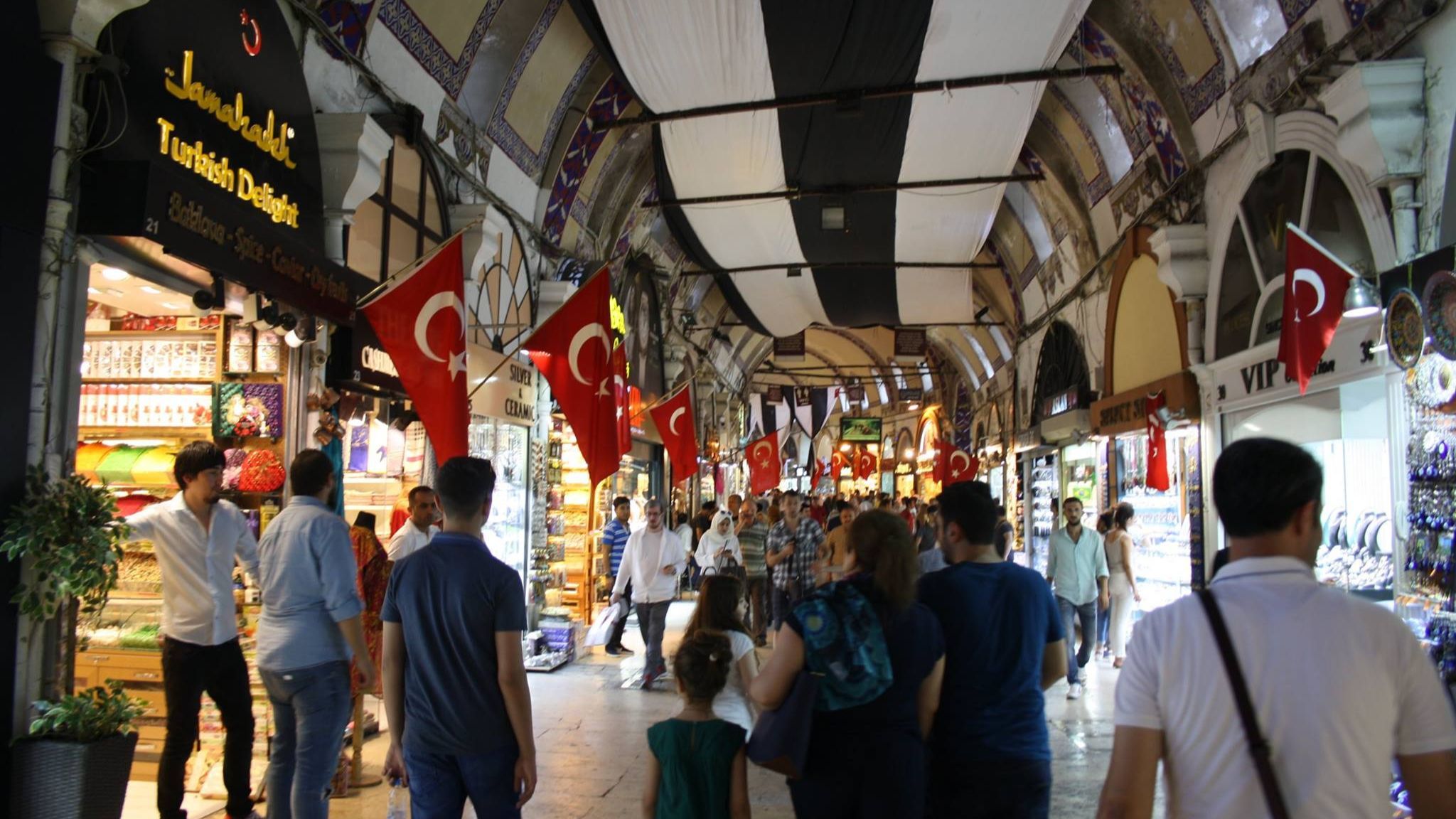
Yavuz
Gulhane Park, also known as the Royal Garden, is the oldest park in Istanbul. It's nice to observe people passing by while finding shelter in the shade of tall trees. The thermometer showed around 30°C. Hundreds of people were having picnics in the shade of the trees.
Yavuz, a member of the "Couchsurfing" community, hurried to meet us as much as he could. We agreed to wait for him at a designated place until he arrived from the other side of the Bosphorus Strait. Bosphorus is the same strait that connects the Black Sea and the Sea of Marmara and divides Europe from Asia.
A 26-year-old guy, with a bright red shirt, was smiling from ear to ear. Smiled so much that his smile was visible from a distance. Sometimes you meet someone and feel as if you already know him or her since the beginning of time. The same thing happened this time. It was time to go to Yavuz's cozy apartment.
Turkish cuisine was slightly unusual for our stomachs, but we were sure that all we needed was some time to get used to it. Yavuz lived alone and mostly worked from home, so he didn't cook by himself so he ordered a few dishes online. The mobile app he used was advertised even on city buses. Later that day he revealed that he was one of the developers behind it.

Yavuz told us that he had never been to Lithuania, but he once visited Estonia, which is not that far away. While studying at university in Sweden, he took a ferry to Tallinn. He liked the city, but he was honest that the main purpose of that trip was to buy cigarettes at the duty-free store. Keep in mind that Sweden as well as other Scandinavian countries are known for relatively high prices.
At first glance, Yavuz seemed very much Western. He listened to Western music and quoted Holywood Western movies by heart. Perhaps living in Sweden had some influence.
A place on the roof under the stars would have been ok too, but we got a nice room instead. What a blessing it was. A few hours of sleep was enough to get rid of yesterday's fatigue. As they say, a hungry soldier is no soldier, so before the day's adventures, we set out to find some breakfast.
Yavuz took us to his favorite restaurant. As soon as we sat down, the waiter surprised us by placing Turkish and Lithuanian flags on the table. Most likely, our host had warned the waiter about our origins.
"In Turkish culture, the host always takes care of the guest. The splitting of the bill is unheard of here," explained the Yavuz once it was time to pay for the meal.
For the remaining part of the day, we sailed on the Bosphorus and visited the Dolmabahce Palace. It was constructed in the 19th century and designed by the architects of Sultan Abdulmejid
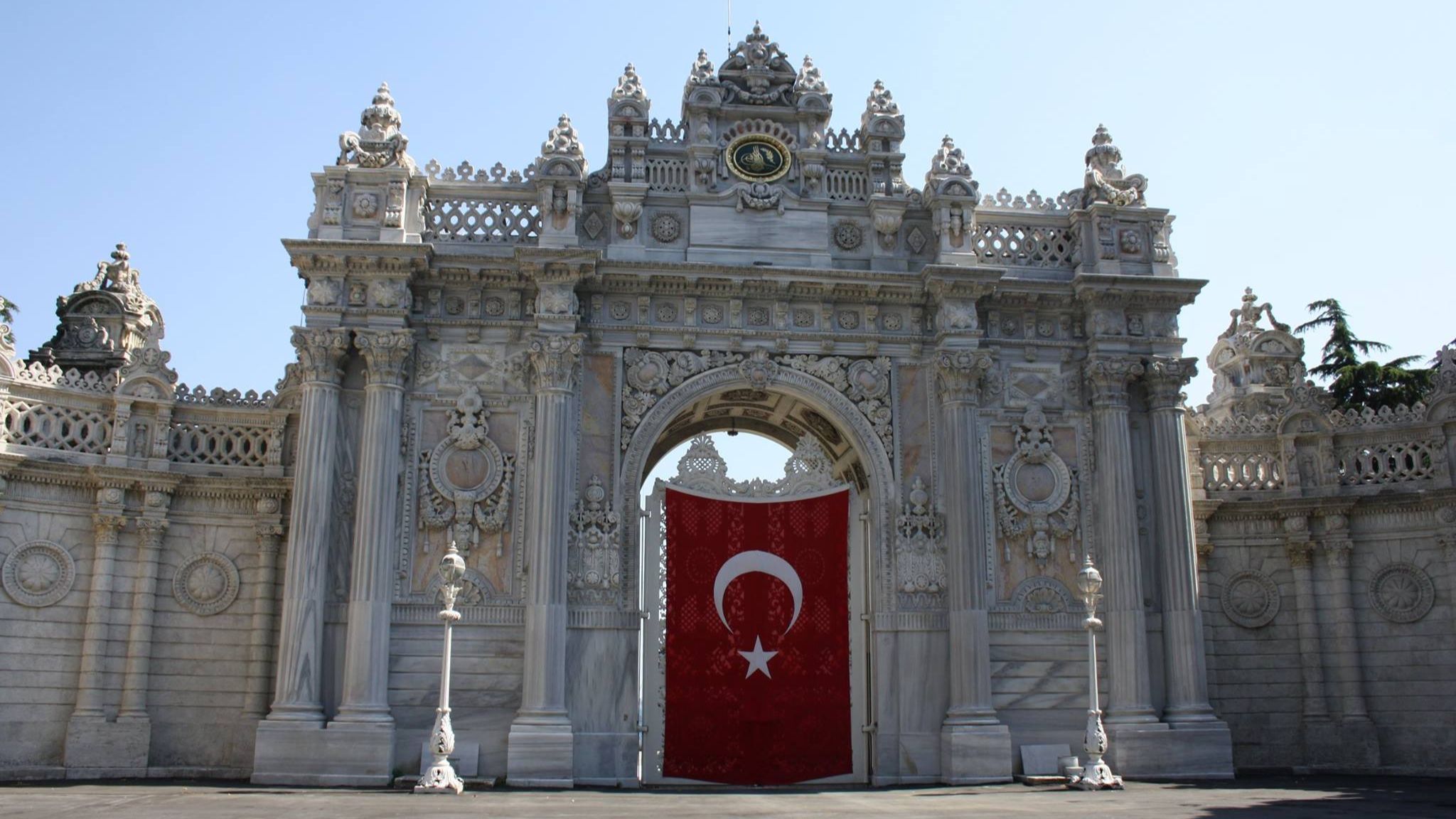
Ankara - the capital of Turkey
Mahir, a 40-year-old accountant who also was the owner of an accounting company, offered to host us for the night. Having traveled to 54 countries himself, Mahir often helped other travelers. Surprise, surprise, we met him on "Couchsurfing.com".
"Hosting travelers is a great way to refresh my knowledge of the English language," explained Mahir when asked why he devotes so much time to this.
Mahir's office stood out with a massive oak desk, leather furniture, and large paintings. All the other rooms were adapted for work as well. The host appeared to be very interesting to talk to. Also, it was the first time I met a man with such a calm voice. He admitted to taking care of his health and inner well-being by practicing yoga and meditation.
Looking for the Iranian Consulate
The goal was to visit the Iranian Consulate and find out about the visa application process. It would have been straightforward if we traveled by plane. At the airport, you get a visa on arrival and that's it. However, getting a visa for crossing the land border was a little bit more difficult.
The situation turned into a wild goose chase. At the consulate, it was explained that to obtain a visa, an authorization code was required. They advised seeking advice from a travel agency on this matter. Upon arrival, it turned out that the agency had moved. We traveled all over the city looking for another one to get a recommendation to approach a third agency.
While talking on the phone, a male voice promised to help. Once we arrived we were invited to an office shared by at least two dozen people. Who picked up the call was unclear. One employee sent us to another, and that one - to the third, and so on. Finally, the head of the travel agency agreed to consult us.
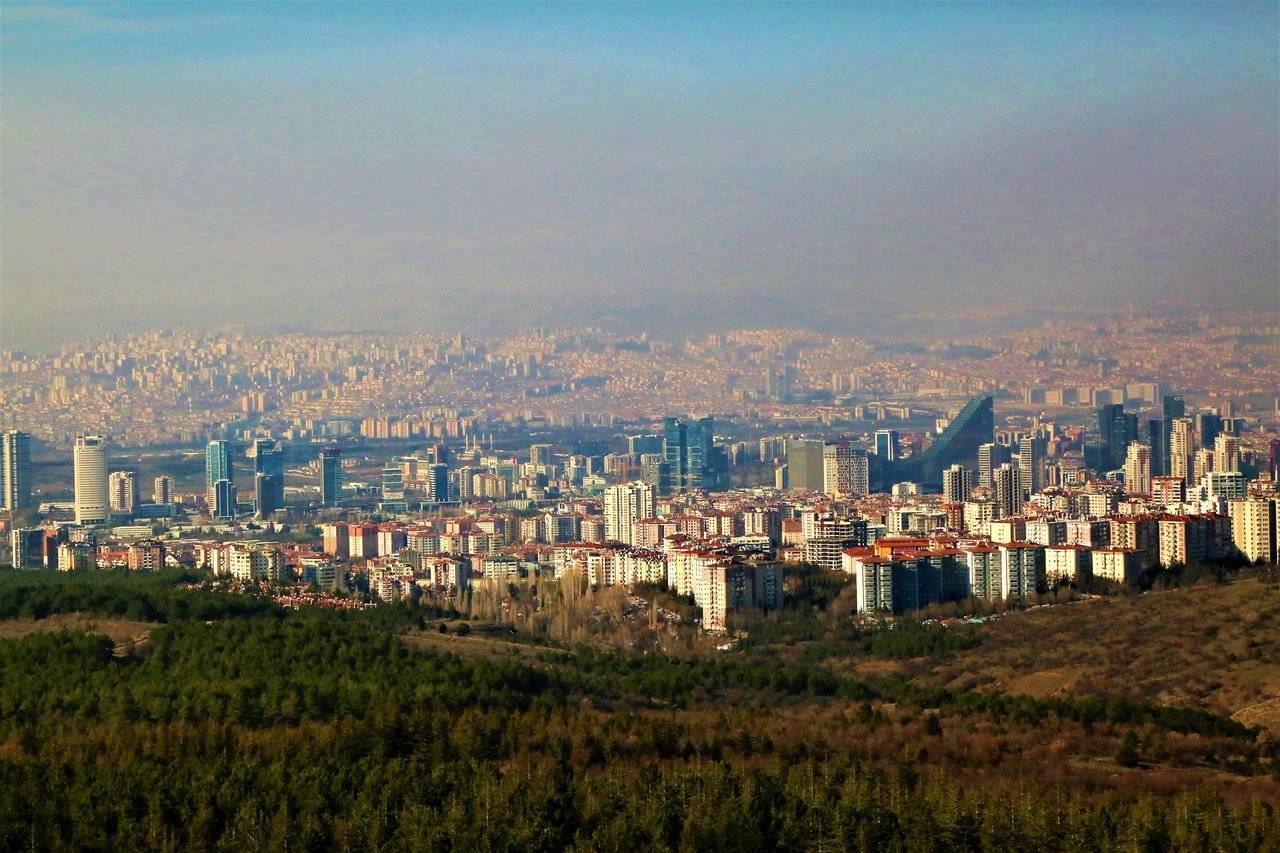
"Unfortunately, we cannot help. It's almost impossible," stated the gentleman in the black suit. "Authorization codes are not within our jurisdiction."
The man claimed that only consulate employees handle these matters. Explaining that we had already visited the consulate, we were advised to approach yet another travel agency located where we began the day. This meant just one thing – another trip across the entire city but with no assurances. As we were leaving, an additional detail was added:
"I almost forgot! You can also fill out the application for the authorization code online."
Holy Guacamole. After filling out the applications online, we received a notification that the process might take an entire month. That meant we had around 30 more days to travel around Turkey or visit other countries.
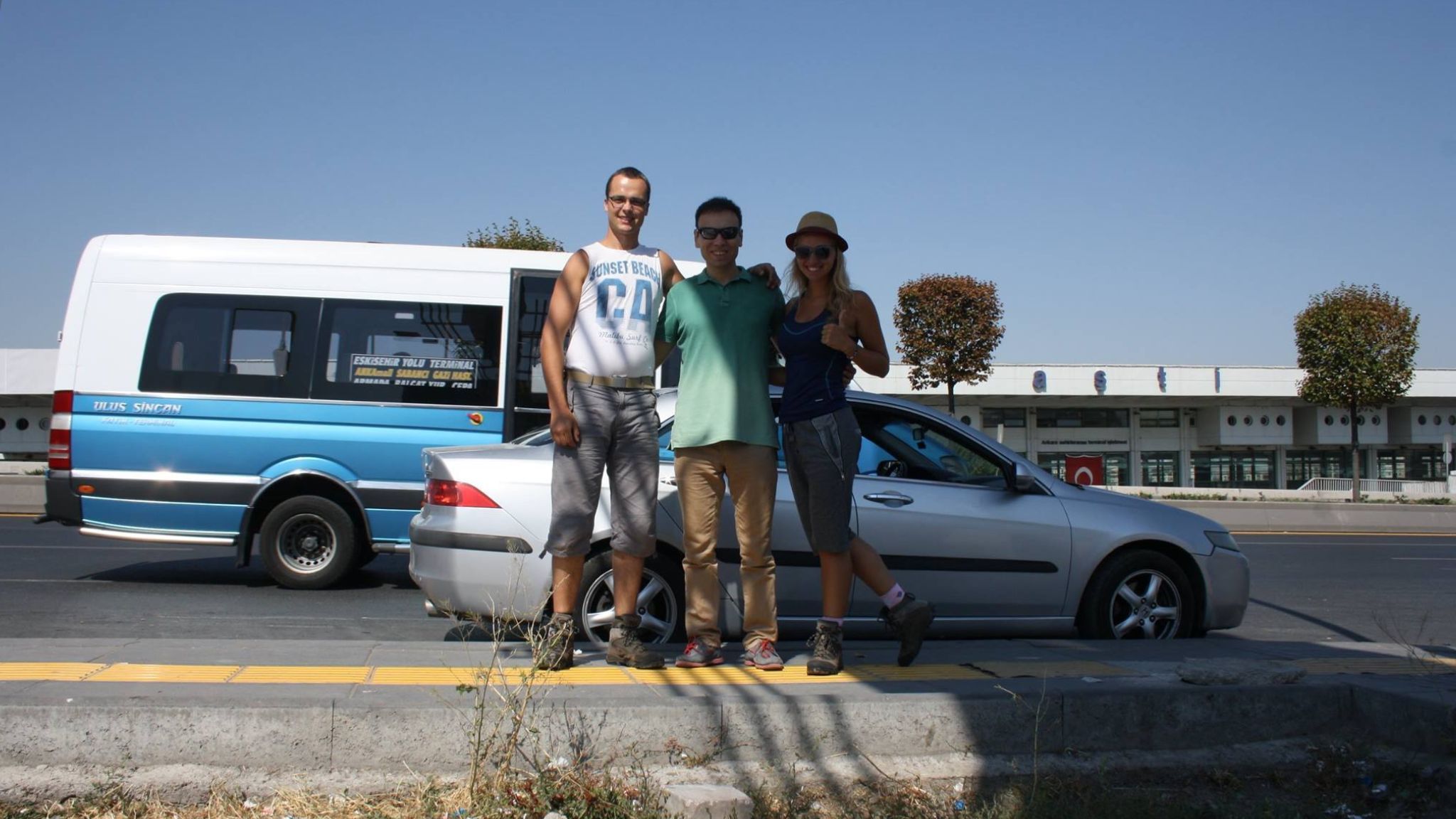
Don't judge a book by its cover
"It seems from the accent that your friend is from Iran," explained the local man to whom we asked for directions.
We told him that we needed to meet a guy named Farzad and all we had was his phone number and a clue that he lived next to some kind of local bank. The driver called Farzad and asked him to explain as a local to a local. They agreed that the man would take us to an agreed-upon place and Farzad will be waiting.
Driving through the winding streets of Nevşehir, the driver grinned from ear to ear, amazed by the fact we arrived from such a distant place.
"You're crazy, but I like you!" the driver repeated a few times while also shaking his head. The ride didn't last long. After saying goodbye to the driver, who helped us save a lot of precious time, Farzad introduced himself. At first glance, the apartment building our friendly host lived at seemed like some kind of ruin, but as the saying goes, "Don't judge a book by its cover."
Farzad's apartment was cozy and neat. The guy had been living in Turkey for a couple of years and it was kind of not his choice. Due to disagreements with the authorities, he had to leave his homeland, and this one town in Turkey was the only place he was allowed to stay under the status of refugee. He settled in the kind of housing that in his circumstances was available to him and then used his imagination to create the coziness.
"When you can't do otherwise, you play with the cards that you have," he explained.
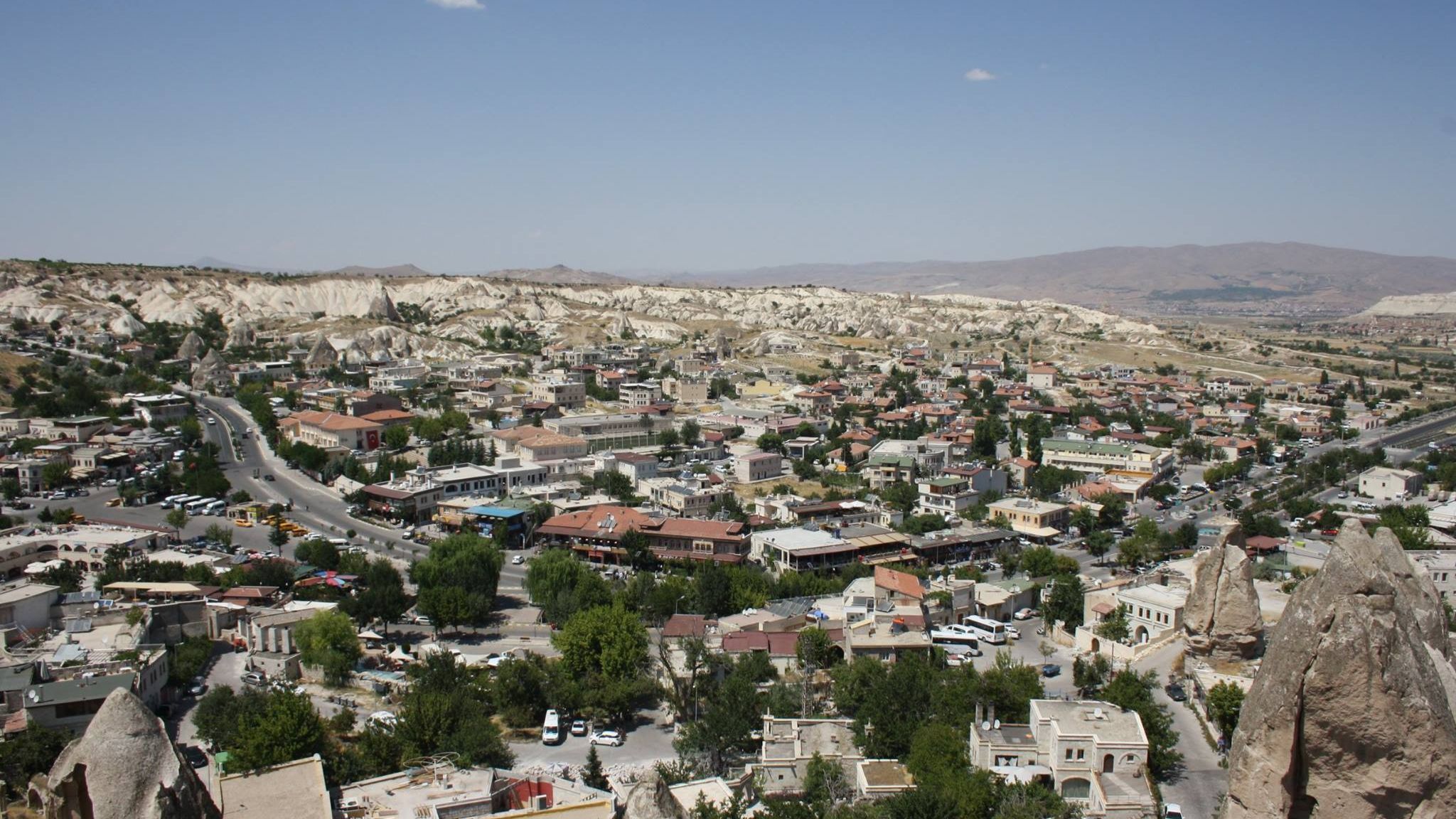
Cappadocia: Creation of man or nature?
Cappadocia is a region in central Anatolia, renowned for its extraordinary rock formations, unlike anything else in the world. The so-called "fairy chimneys" encircle the small town of Göreme, attracting visitors from all over the globe. Farzad has hosted dozens of travelers as everyone needs a place to stay, .
While on our expedition to Göreme, we were joined by Farzad's friend Ibrahim. Ibo said he was occasionally working as a guide for tourists. Farzad was quite knowledgeable in many fields too. It turned out that in his spare time, he pursued a career as a photographer, thus he knew the area and its most beautiful spots like the back of his hand.
The history of the Cappadocia region is fascinating. Millions of years ago, when the Erciyes and Hassan volcanoes erupted, a thick layer of ash covered a vast territory. Over time, this layer turned into soft rock, which, over thousands of years, erosion shaped into impressive formations.
The name of the Göreme town means "you can't see me here." There were periods in history when people lived in carved-out rooms within the rocks. Hundreds of such caves have survived to this day. Some are entirely empty, while others serve as storerooms or house livestock. Some have been transformed into luxurious hotels. They are like a magnet for those seeking something unique.
Six geese with six goslings
Farzad and Ibrahim were not the only Iranians in Nevşehir. We had the honor to visit his friends Mehmet and Sabnam at their place. Since they were interested in the Lithuanian language, I gave them a task. I asked them to say "Šešios žąsys su šešiais žąsyčiais".
For those who do not know, it is a Lithuanian tongue twister meaning "six geese with six goslings". Be sure it was funny to watch and to listen to, but soon enough, this linguistic mayhem led them to total exhaustion, followed by sincere laughter.
What is more, Iranians laughed out loud once they heard of our "reliable sources," which claimed that in Iran, the left hand is not used even for eating even if you are facing death.
"How do you propose us eat then?" Mehmet wiped his teary eyes and pointed to the room where more than half of the people, including Kamile, were left-handed.
The evening was full of discussion about customs. Farzad found the most intriguing subject to be the relationship between men and women. He inquired about how Lithuanians ask girls out, as in Iran, according to him, if a guy likes a girl, he might give her a card with his phone number. If she's interested, she calls him.
At least that's how communication begins. The girls' parents always ask if the guy has served in the military. In Iran, passports are issued only to men who have completed two years of military service. For others, many doors are closed.
"Maybe they could help you find a wife from Lithuania?" Farzad's mom unexpectedly asked Farzad jokingly when they were talking on the phone. "By marrying a Lithuanian, you could live in Lithuania."

History always tends to repeat itself
Night turned into day, and day into night. As Lithuanian elders like to say, a guest is like a herring - starts to smell on the third day. However, every time we planned to leave, a new reason to stay popped up: a picnic in nature, the arrival of Farzad's friends, and so on. Enchanted by Farzad's hospitality, we lived at his place for 7 days.
The time had come to continue our journey. How to choose a direction? You can always flip a coin. If it's heads – north, tails – south, and if it lands on the edge – go home. Strangely enough, in our case, the coin never landed on its edge so we kept going.
It was time to see the Black Sea again. Being near it was somewhat symbolic as about two and a half decades ago, my parents traveled from Lithuania to the Black Sea with an old soviet car named Moskvitch. As some say, history tends to repeat itself. Ok, maybe this saying has a slightly different meaning, but I guess in this case it fits here too.

Samsun: Journey to the Homeland of the Amazons
In every town, locals claimed that their city was historically the most significant. It was not surprising, as it seems that every settlement in Turkey was founded thousands of years ago.
Finding accommodation was simple. In Turkey "Couchsurfing.com" and similar platforms are very popular. Additionally, most of the Turks we met were very relaxed. At least when compared to most of the Europeans.
We have noticed that if Europeans haven't tidied up their homes perfectly or completed renovations, usually they don't accept guests. Most of the time they want you to notify them well in advance so they have time to prepare. Turks don't bother about such things.
From our experience, locals always make an effort to warmly welcome a guest. They clearly show that having a guest visit their home is a huge honor. Of course, hosts can be very diverse: old and young, teachers and students, leaders and subordinates. Each one is more colorful than the other, each with its character.
After spending a couple of days in Sivas, we finally arrived in Samsun. This time our host was a guy named Mehmet. A guy who had recently returned home after his Erasmus studies in Poland.
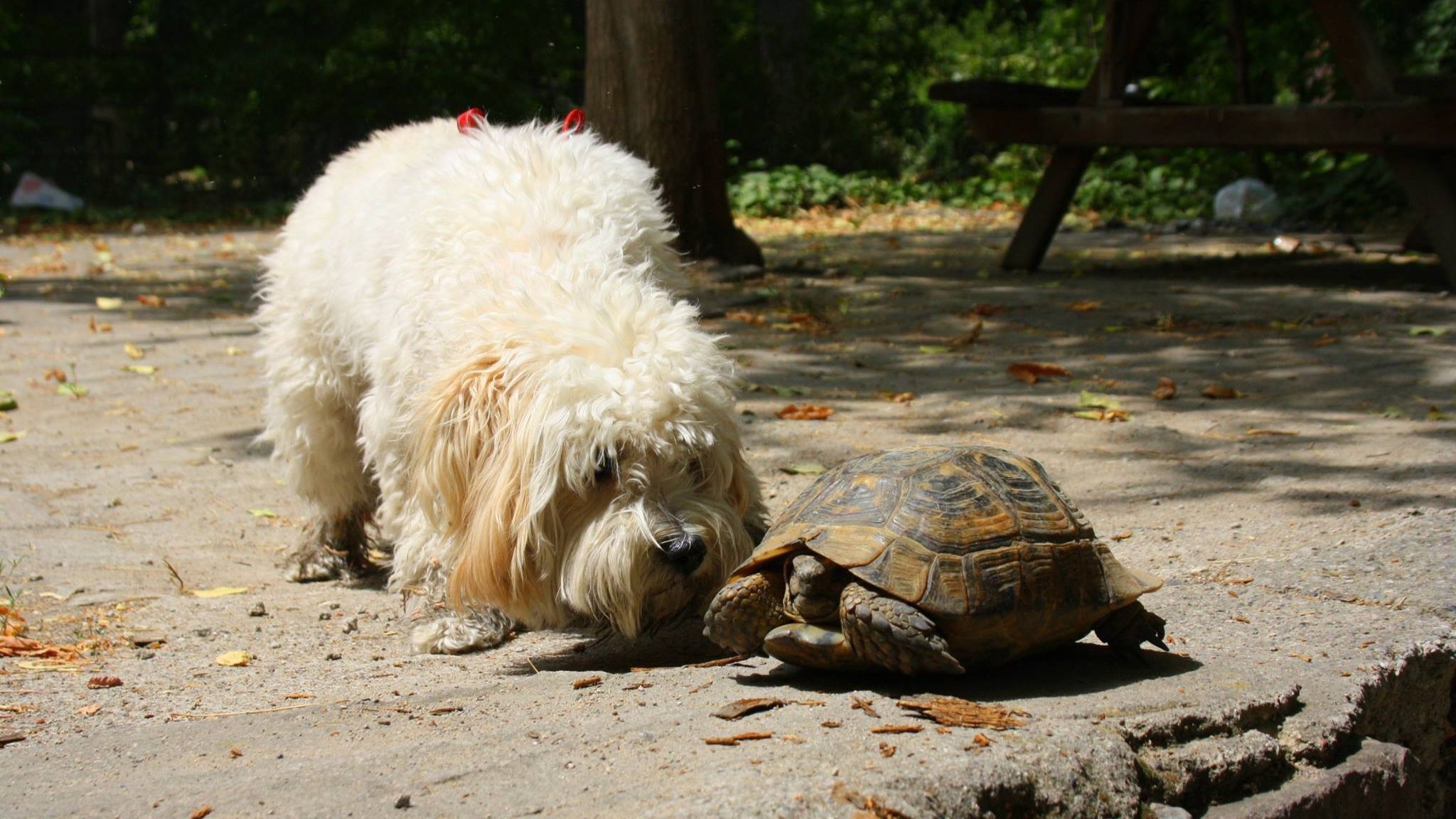
Biking Around the Black Sea
"We're going to visit my buddy, Captain," declared our kind-hearted host Mehmet. "His yacht is waiting at the dock."
As it turned out, Captain was not a title but a nickname. The latter was given due to his family name Kaptan, reminiscent of the English word "captain". With such a surname, the desire to own a yacht was probably encoded in his essence.
The graceful vessel elegantly swayed on the water's surface, mirroring even the slightest ripple. Captain was already waiting on deck. With an expressive hand gesture, he invited everyone to the table.
A delicious dinner was already laid out on the table, with a pot of fragrant hot wine placed at its center. The latter was prepared by Valentina and Pavel – two Ukrainian travelers who were on their biking trip around the Black Sea.
As we found out, a misfortune struck the two travelers the previous night, when modest camp was attacked by some local stray dogs. As if that wasn't enough, their bikes required some immediate repairs, and to fix them, some spare parts were needed. This is why they arrived in Samsun instead of avoiding the city and spending the night in their tent.
While searching for parts, various misunderstandings occurred. For example, the couple forgot the English word "tube," so they asked in Russian for a "camera" (Russian: камера). The camera was what they asked for, camera was what they received as the store employee proudly presented his best "Go Pro". Unfortunately, it was not a tube but a video camera...
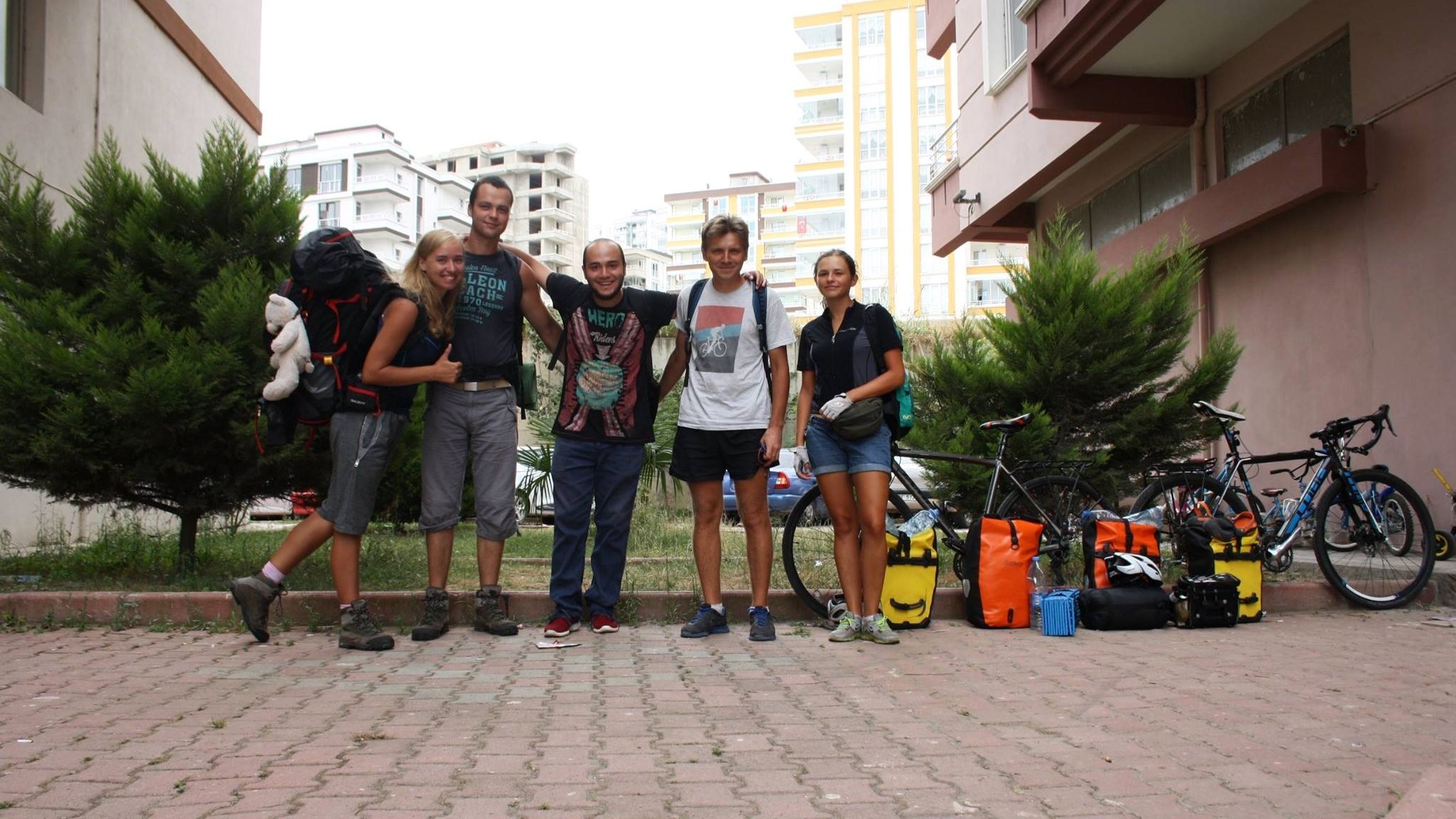
If my friends were nobody, I'd be nobody too
Captain wasn't just Mehmet's friend but also his employer, as Mehmet managed his business. After work, the men met up to discuss the day's events and contemplate some plans for the near future.
Mehmet said that during such meetings they are rarely alone as a whole range of Captain's friends usually join them. Typically, most of them are businessmen or some kind of professionals of high skill level.
"I always say that you can judge a person by his friends. Look at him, he's got a successful business. He hires (x) people. The other one employs (x). That one might not have his own business, but he's a great specialist in his field," Captain, clearly not lacking in oratory skills, recounted the merits of his close friends. "If my friends were nobody, what do you think I would be? It's simple. I would be nobody too!"
Though two charming ladies tried to balance the scales, in such a testosterone-filled company, masculine energy took over. Spending some time in Turkey gave the impression that men in this country have managed to preserve a certain primal assertiveness: they don't shy away from competition, their eyes glow with ambition.
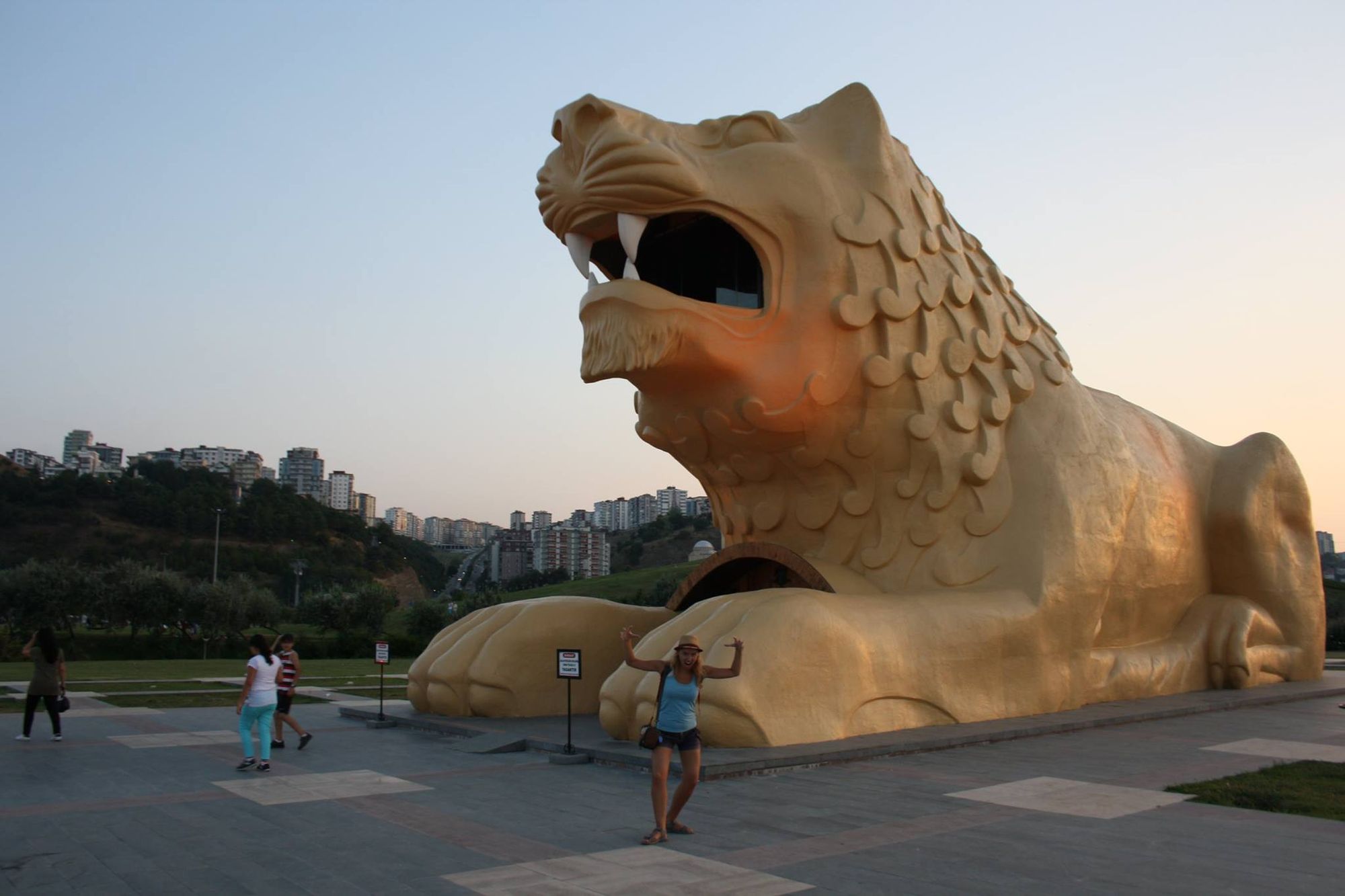
Samsun Amazon Village
In the heart of Samsun lies the so-called "Amazon Village." The village's most notable features are a 12.5-meter-high sculpture of a fierce Amazon and an 11-meter-high museum in the shape of an Anatolian lion. Visitors enter the latter by stepping directly into the lion's jaws.
The museum depicts the life of the Amazons through wax figures. The scenes portrayed are diverse, ranging from fierce battles to the captivity of war prisoners. The provided information is also very comprehensive, leaving no detail unexplored. Moreover, there seems to be a variety of legends surrounding the Amazons.
The people of Samsun have their legend. According to it, the Amazons lived in these lands around 2000 to 1000 BC. It's said that under the leadership of Agamemnon, the Amazons took part in the famous Battle of Troy. They defended Anatolia, which was ruled at that time by the Amazon queen Penthesilea, who was later killed by the Greek hero Achilles.
While the cultural heritage and city life were fascinating, it was time to leave this hustle and bustle behind and head towards the outskirts. It was time to travel east along the Black Sea coast.
Hitchhiking to the Iranian Embassy
"Try reaching out to truck drivers. Their routes are long, and solitude is their daily companion. They surely won't refuse to give you a ride," suggested Mehmet, who had tasted the bread of a hitchhiker in the past.
"Get ready for some delicious meals. Those drivers know the best places," added Mehmet before bidding goodbye. He was right.
The nearest Iranian Embassy was 325 kilometers away. Two long days of travel awaited. It's hard to get lost in such conditions when the road is straight, almost always with a view of the sea. The biggest challenge was getting out of the city. Once we left the bustle of Samsun behind, everything else was child's play.

Turkish cuisine is rich in a wide variety of dishes. I had the chance to taste everything from an array of baked goods to the most delicious seafood. Over two weeks, there was only one occasion when my digestion had a bit of trouble. As some friends of mine would say, there were some problems with the bottom department.
There's a theory that the body starts preparing to digest food even before the first bite is swallowed. Just seeing a familiar product or thinking about it triggers the internal human chemistry lab to produce the necessary enzymes. Traveling may present challenges, as sometimes a dish or a particular ingredient within it is encountered for the first time.
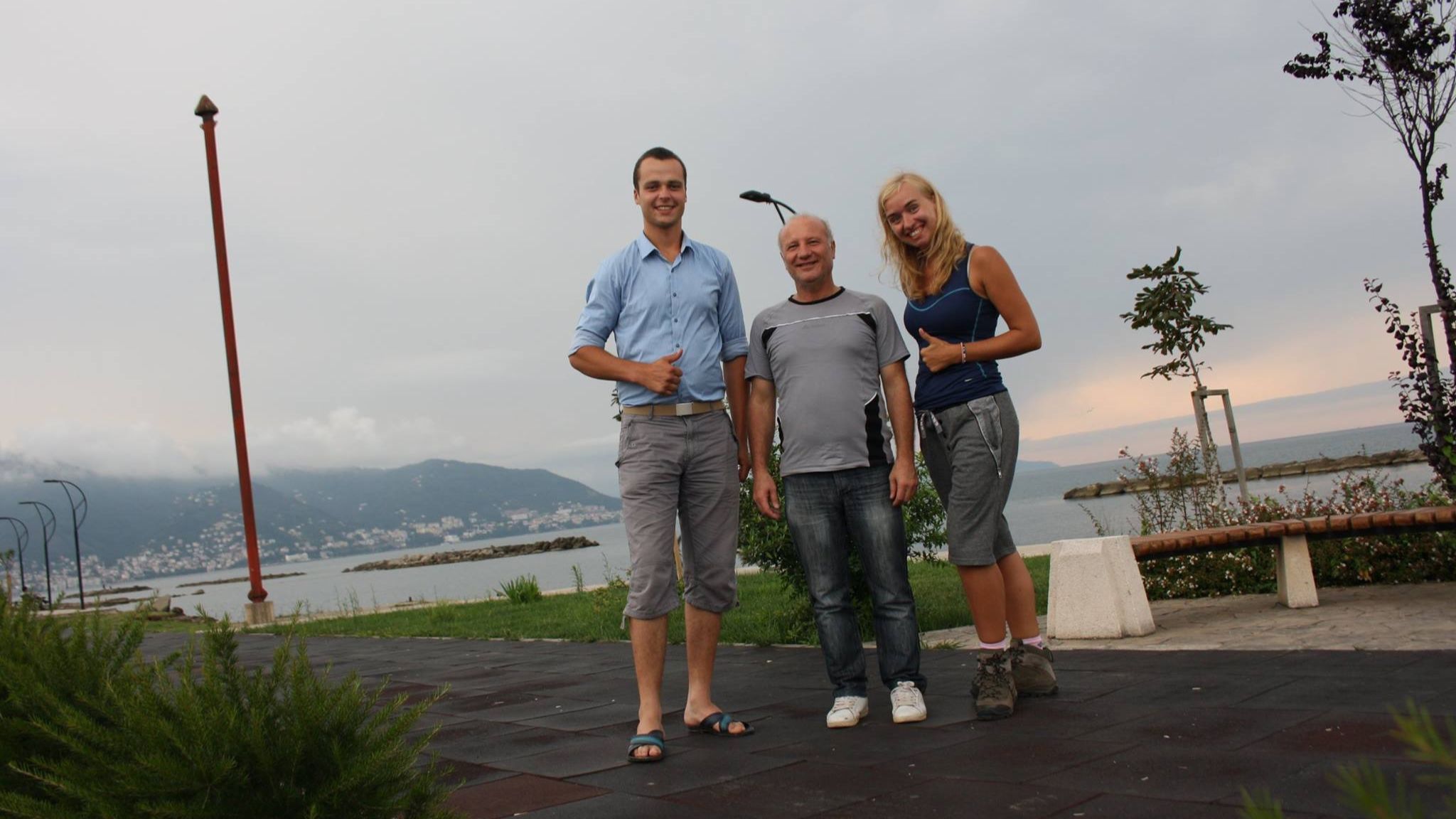
Far from civilization and curious eyes
It would be easier to stop a train with bare hands than to persuade a Turk not to do something. Faruk, a physical education teacher living in Ordu, made up his mind to find a shelter for us. Unfortunately, it was not destined to happen, as all the hotels in the area were either fully booked or would have required the last penny for a night's stay.
Faruk suggested we camp on the beach, but he also advised us to wait until evening when the schoolchildren who at that time were on vacation would go home. As we bid farewell, he handed over a bag of freshly picked hazelnuts.
Despite the teacher's reassurances, the place seemed unsuitable for camping. It was too exposed and way too crowded so we decided to seek a better spot away from residential areas. It took us an hour to leave the city and find such a place. The sand wasn't golden and the weather wasn't great either, but it was far from civilization and curious eyes.
The Mighty Thunder
Our home in Lithuania was approximately 4000 kilometers away. The powers of Mighty Thunder (Lithuanian: Perkūnas) reached far. Even in such a remote corner of the world, he struck many times with all of his power. When the storm began, I was submerged up to my neck in the salty waters of the Black Sea.
Throughout the night the thunder rumbling shook the land beneath us, yet in the heart, it was as calm as ever and we plunged into the kingdom of dreams. There was something magical in being in nature. Merging your thoughts with Mother Earth, everything becomes clearer, and in the morning you know where to go, what to do, and how to solve all the difficulties. The next stop - Trabzon.

Trabzon: The land of football
Football holds a place in Turkish life similar to basketball in ours. The four strongest football clubs in Turkey are known as the "Big Four." It's said that about 90% of the country's enthusiasts support one of these clubs. Three of them are based in Istanbul, and the fourth is in Trabzon. Perhaps that's why Trabzon is called the second football capital of Turkey.
"What team's fans are you? You don't have favorites? Then here's something for you from our club," the store manager handed us a gift. It was a cherry-colored robe with Trabzon team insignia.
A curious man struck up a conversation when we tried to navigate through the labyrinth of Trabzon streets. He pulled out his phone and typed a message into the mobile translator app: "Welcome. We would like to invite you for tea." His male colleagues waved at us to come.
Cup after cup, the conversation lasted for a couple of hours. Throughout the entire time, not a single English word was told as neither of them spoke English. The Google Translate app was all that we needed to carry on a conversation. However, only men were engaged in conversation as their female colleagues happened to be very shy and observed the acquaintance from a distance.
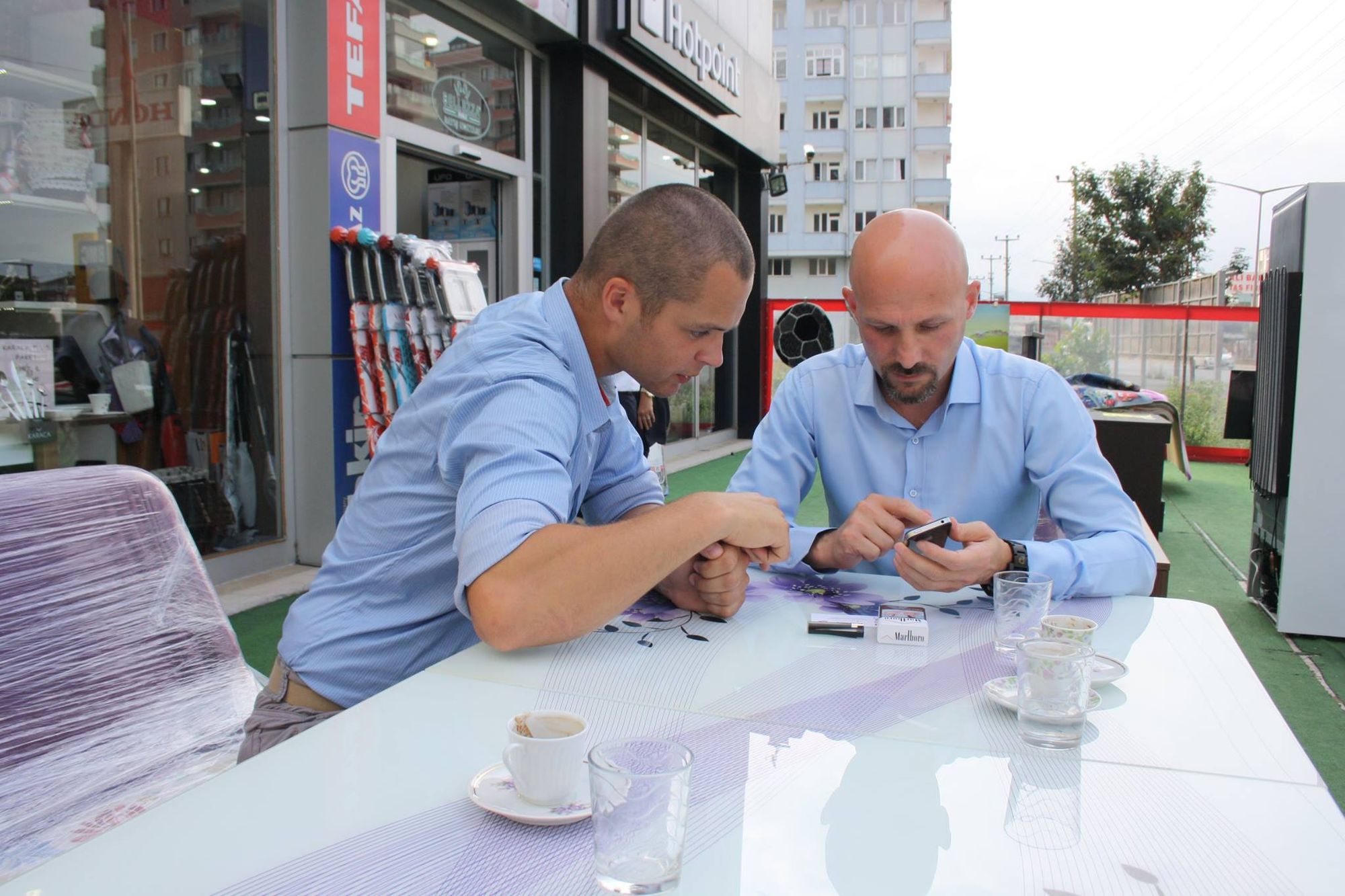
Meeting the music teacher
Later that day Kamile and I witnessed an unusual event. One car crashed into another causing the latter to bump into a third one. Fortunately, the drivers were okay. Also, there was no need to call the police as coincidentally, at that moment a police car was standing nearby.
"Oh you little pepper goat!" - I cursed in surprise at such a sight. When I was a schoolboy, one of my teachers used to encourage us to swear how our Lithuanian ancestors used to do, if swearing was unavoidable (Lithuanian: O tu ožka pipirine).
Speaking of teachers, our host in Trabzon was a teacher too. To reach the area where he used to live, we had to squeeze ourselves into a crowded shuttle bus. The driver asked someone to be a translator to find out where to drop us off. It worked out well as we were taken right to the doorstep.
Our host turned out to be an interesting character. In over 50 days after signing up on "Couchsurfing.com", he had accommodated more than 30 guests. If a guest wanted to spend time together and explore the city, he guided them all. If that was not enough, he cooked for every one of them, taught them about Turkish traditions and way of life, and so on.
The music teacher confessed that he started this activity of hosting travelers upon returning from his trip to Europe and wanted to repay the overall community of travelers for the good he had received on his ventures. According to him, you might never encounter the same person again, but it may be that the person you help someday will help the person who helped you.
"Everything is closely related, whether we see the big picture or just a tiny fragment of everything, which from a close view, may seem chaotic," said the Turkish man, sharing his thoughts.
Tears flowing like rivers
The pain in my eye was almost unbearable. The staff at the clinic waved their hands and said something in Turkish, but for us non-Turkish speakers, it was hard to know for sure what they meant. You could guess they were asking what kind of a problem I had but by that time it should have been evident as my distinctly red eye was drowning in tears.
At first, it looked like not a single person in the entire clinic spoke English. However, soon enough some young girl introduced herself and offered her help. Things slowly started moving, and I was sent to the doctor's office. We thanked the lady and set off on our search.
The doctor wasn't present in his office. A stern assistant reminded me of Cerberus guarding the gates of the underworld. In a cold, frosty tone, she told me I had to wait in the corridor. Maybe I would be seen, or maybe not. She did not give me much hope.
In one hour, I returned to the office. No information about the doctor was given so all that was left was to wait. Suddenly, a couple of medical workers entered the adjacent office, and patients formed a line by the door.
They went in one by one, and as they left, each went their way. When there was no one else in the queue, one of the members of the staff saw me sitting and invited me to come in. They assured me that they hadn't forgotten me and I would be seeing the doctor in no time.
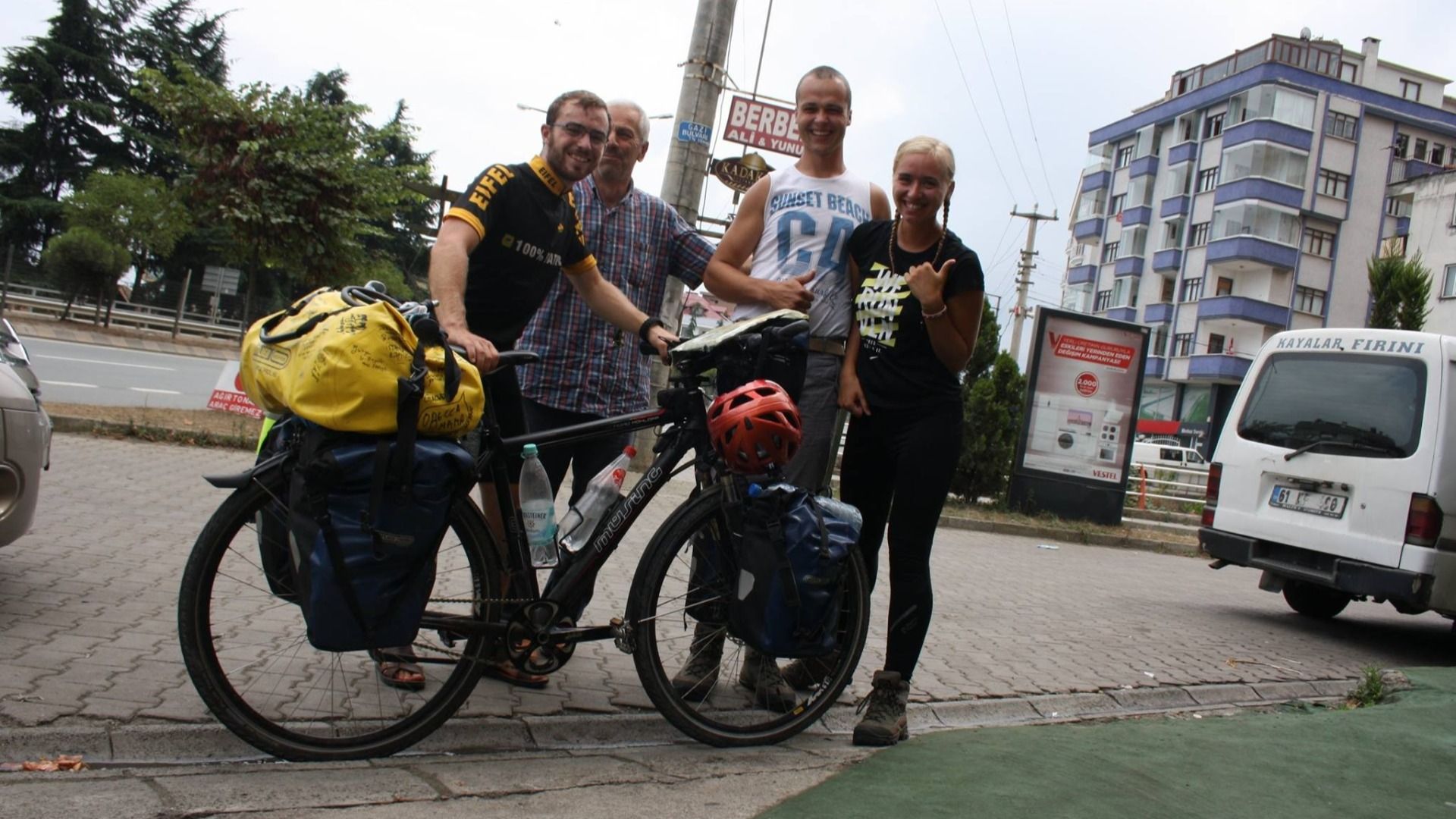
When a man wants to live...
It might sound funny but all I did was an eye test. I thought it would be best if I went with the flow. One of my eyes was diagnosed to be a bit stronger than the other. It was not a big surprise, as the other one was in pain. Unfortunately, the reason remained unidentified and I took the conclusion written in Turkish and returned to the waiting room.
We paced back and forth for nearly two hours until I ran out of patience. I ventured into the office for the third time. The assistant hurried to block my way, but I heard a masculine voice coming from the adjacent room and immediately rushed in. It was the doctor.
When I think of that assistant, it reminds me of a saying we have in Lithuania. We say that when a person wants to live, even medical staff are helpless. The surprised doctor had no idea someone needed help. The assistant got scolded for not telling him but to be honest, this scolding looked artificial.
What amused the doctor the most was that I checked my vision at the adjacent office. It's no secret that such a test was unnecessary. With tears of laughter, the doctor grabbed a piece of crumpled paper, half-folded it, and used the corner of it to remove some kind of a stubborn grain from the eye.
The man's laughter rising from the depths grew stronger and stronger. I had never heard such a low voice before. It was not that surprising as the doctor was a giant from head to toe. You would not want to have him as your enemy.
"Do you exercise?" the giant showed his fist. "I'm a boxer. Good luck, buddy!"
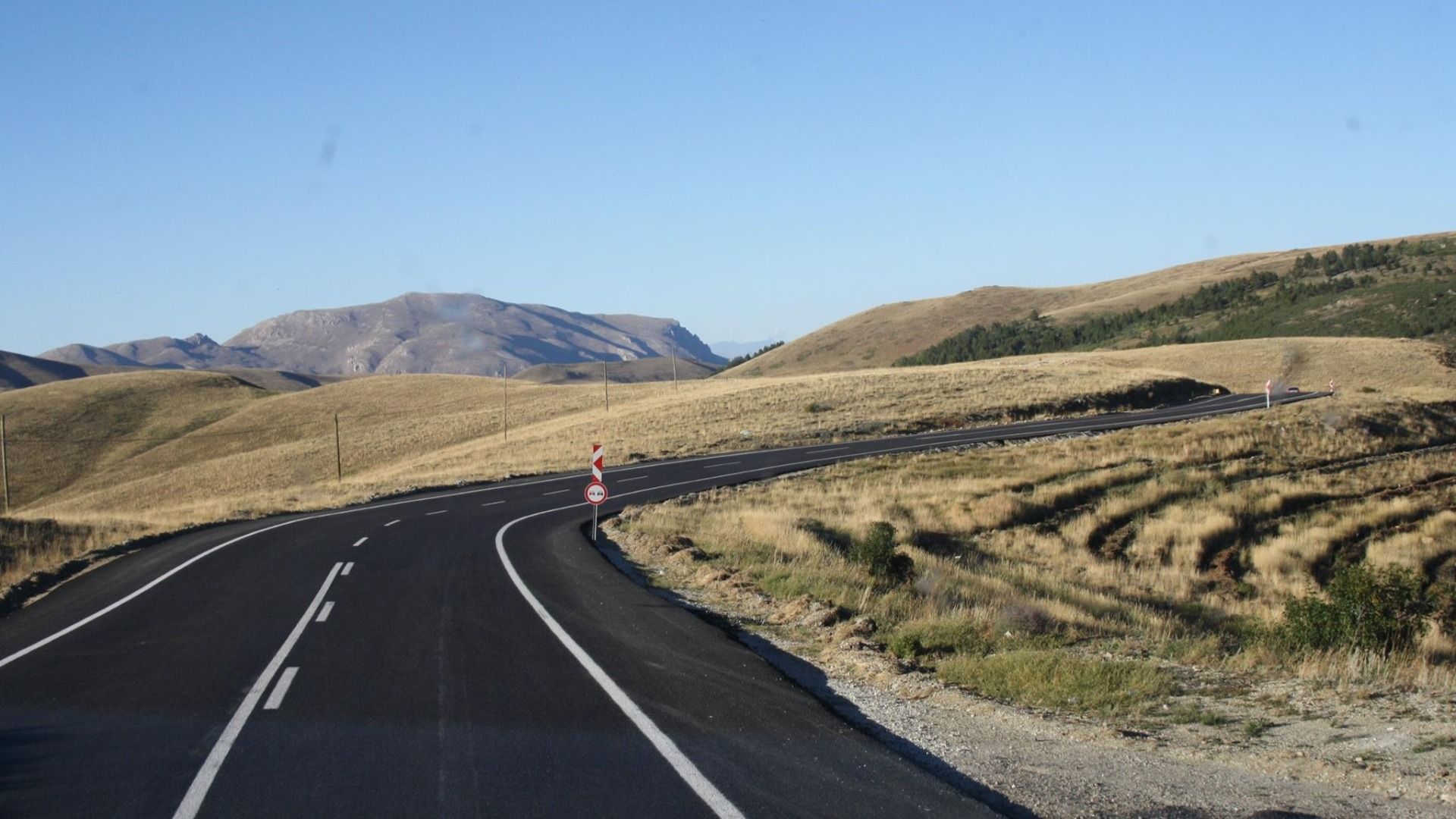
Georgia
A pack of stray dogs followed us along the way as we crossed the Turkey-Georgia border and headed towards the nearest city, Batumi. Unusual signs in the roadside stalls caught our eye. Georgia, or Sakartvelo, is one of the few countries in the world that has its own alphabet, not used anywhere else.
Dark, thick clouds foretold a storm. High cliffs separated us from the Black Sea. There was no way for us to get to the beach and build our tent before the rain started pouring, but it didn't matter that much as our hearts were full of joy and excitement. A new country meant new adventures.
Within a minute or two heavy raindrops started washing our faces and soaking through our clothes. Not the best conditions for all the electronic devices Kamile and I carried in our backpacks. This was why we were very happy when some car stopped on the side of the road and the driver asked if we needed a ride.
The car was a big BMW from the late 90s. One of those that are reliable and can be packed with many tools or sacks of potatoes. The driver and his friend were both very bulky men, armed with powerful voices and a distinct Georgian accent. As some would say, typical Georgians.
They didn't speak English but were fluent in Russian. Luckily, both of us knew some Russian too since we had Russian lessons at school. While on the way to Batumi, I noticed the Georgian humor was very similar to the Lithuanian one and it felt very familiar. To be completely honest, the way Georgians laughed resembled the neighing of a workhorse more than human laughter.

The passionate moaning
The squeaky wooden stairs led to the second floor. A young girl noticed us coming and called her mother. The latter was the manager and owner of the guesthouse.
The lady opened the door to one of the rooms and invited us to come in. It felt somewhat cozy and familiar, as the interior style was closer to European than to one of their neighbors Turks.
Everything would have been good if it weren't for the high price. The hostess said there was no room for negotiation so we thanked her and headed towards the exit. Once we went outside, the lady started running after us shouting we could get a discount. The price got lower and lower with each step.
I took out a banknote and a few coins from my pocket. The hostess grabbed the money and escorted us to the room as if we were the most esteemed guests. According to her, we were very lucky as usually, in Batumi, you wouldn't get accommodation that cheap.
It was already late and the plan was to start the day early so it was time to rest. Some loud feminine moans started coming from the adjacent apartment. Someone was expressing love so passionately that it made the water in the glass tremble, and it seemed like the plaster might start falling from the ceiling.
With each wave of bliss, the Russian-speaking woman praised her husband, urging him not to stop. According to her, whatever it was that he was doing, he was doing it very well...

3 days with Persians
When in Trabzon, we had to make a quick decision. The authorization code required for the Iranian visa was not ready yet. The process could have taken a day, two, or even an entire week. After considering all options, we decided to travel to Georgia.
Longing for nature, on the second day in the country, we settled in a campsite by the sea. The presence of twenty tents indicated that Batumi was not lacking in popularity. Great destination for both wealthy and "shoestring" travelers.
The Batumi Beach was covered in stones. The current was so strong that it felt like one could easily be swept away to the sea. Our tactic was to hold big stones in our hands to be able to stay in one place. Smaller stones served well for cracking hazelnuts, a whole bag of which we got from a Turkish man named Faruk a couple of days ago.
While listening to the tunes of the sea, a man of our parents' age approached us to say hi. Resembling a Georgian at first glance, the man initially kept his origins to himself. However, upon hearing of our story and our plans to go to Iran, he quickly shared it with his four friends and told us they were all Iranians.
Shahram, Jalal, Amir, Naser, and Mojtaba were on their road trip across Azerbaijan, Georgia, and Turkey. As noon approached, we were invited to have lunch together. Of course, we couldn't say no to such a tempting offer. The lunch was followed by dinner and in the evening the whole event turned into many hours of dancing and singing.
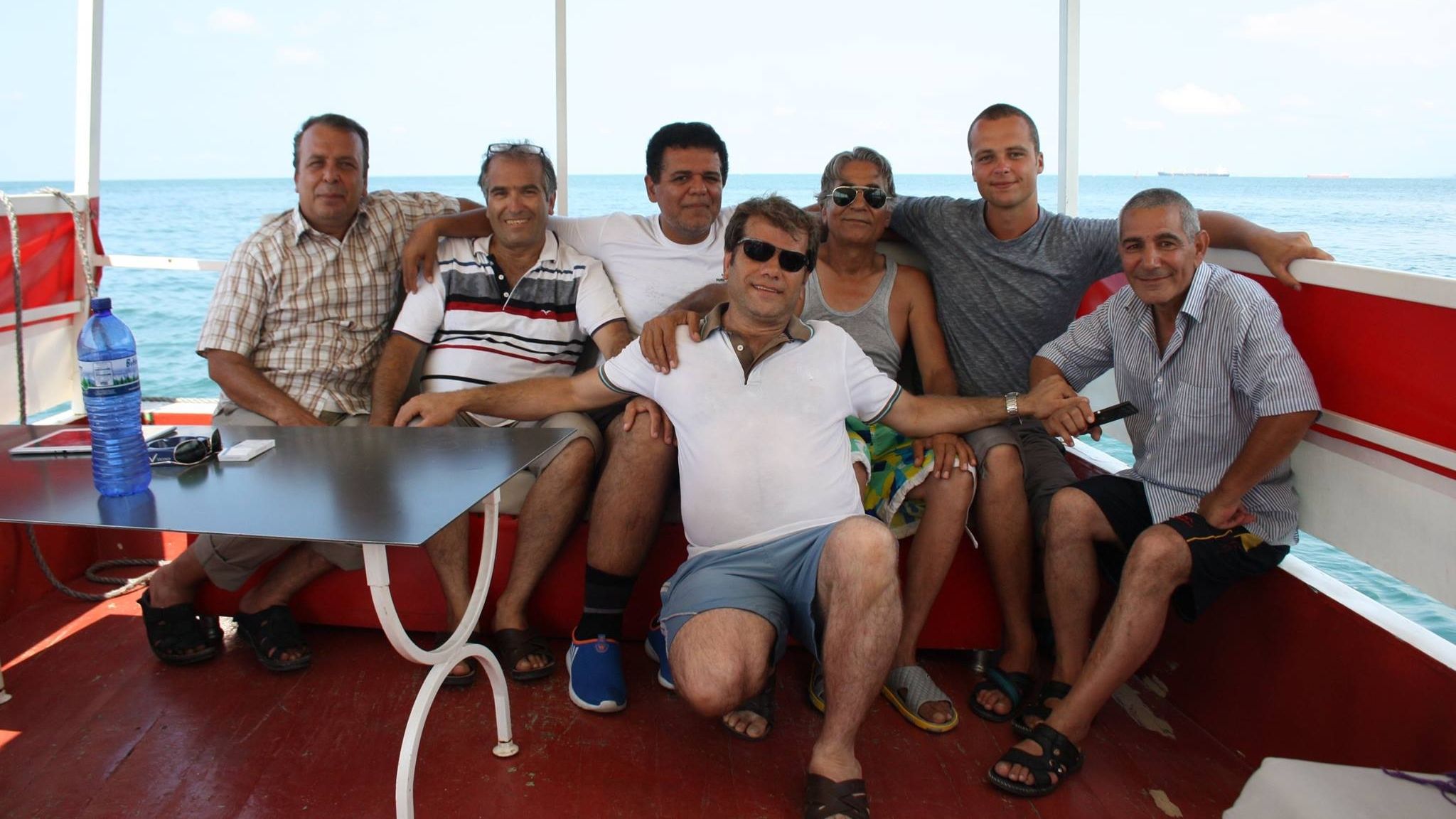
A calm evening was followed by a fierce storm. To make our tent more "storm-proof" we placed large stones on each corner. It worked out well and the rising wind did not do any damage.
The Iranian neighbors had a much harder time. In the morning we found them huddling together in the car, as they were forced to seek shelter when the elements wreaked havoc on their fragile shelter and took the cover of the tent high up in the tree.
By morning, the men were exhausted and decided that they were too "mature" to continue their journey home without proper rest. Before heading back to their families, they rented a house for a couple of days of respite.
Upon seeing the rented accommodation, the Iranians realized that such a mansion was too big for them alone. Perhaps for this reason, they unanimously decided to invite us to be their guests. Eventually, the company was augmented by Mehdi, an Azerbaijani we had also met the previous day.
Meeting Shahram, Jalal, Amir, Naser, and the cheerful Modjtaba was a true blessing. For the next few days, we had a lot of fun as well as meaningful conversations but all things come to an end.
After a few days of exploring Batumi, it was time for Iranians to set off for home while Azerbaijani Mehdi, also known as The Chatterbox, intended to visit Turkey. Maybe because of the age of his beloved Soviet vehicle the border control didn't let him in and he returned to Azerbaijan.
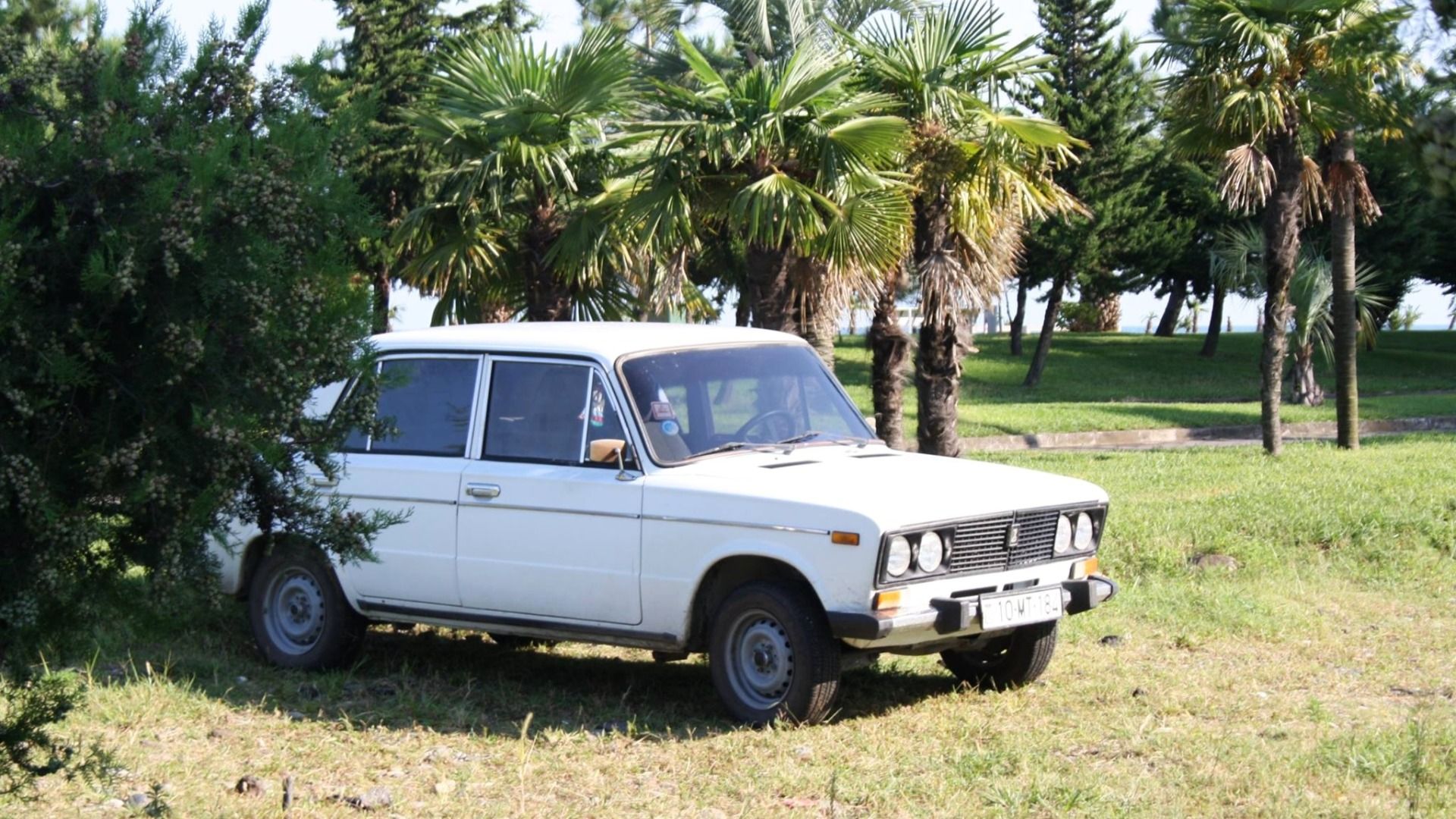
Into the Depths of Georgia
Kutaisi, possibly one of the oldest cities in the world, was our next destination. The merciless sun was shining brightly, and we were back on the scorching asphalt. Luckily, all the Georgians we met were very kind and hitchhiking went well.
The only downside was that it was challenging to have a casual chat as we didn't speak Russian fluently. That one was on us as we had a chance to learn it better while at school, but didn't. However, knowing the basics was useful too. As my Russian teacher once told me, "Once you find a reason to learn, you'll learn it in no time."
To be honest, for many years I thought that traveling like that was difficult. I thought that all kinds of fancy gear was needed and knowing at least one foreign language was a must. Actually, you don't need any of this. Yes, all of these things and skills can make your journey easier, but they are not a must if you are willing to learn the art of making quick decisions and acting impromptu.
Martvili Canyon: The Gem of Western Georgia
The gray and yellowish streets of Kutaisi were covered in mystery. In the times of glass skyscrapers and synthetic clothes, Kutaisi resembled a wise old man, weathered by the many years of life. Perhaps not the most flashy, yet concealing many secrets.
I helped some guy start his car, and he showed us the way to the bus station. A white, cramped shuttle bus transported us to Choni. From there, the canyon could be reached by taxi. Three friendly Uzbek girls offered to share the cab. That way, the trip got cheaper.
All the stories of Georgian cows roaming freely in the streets of local villages happened to be true. Cows, stray dogs, piglets, horses, and geese we everywhere we looked. While on our way to the canyon, we have even seen a one-horned cow grazing at us from the backyard of the hospital. I bet it was a delight for the patients who were observing the animal through hospital windows.
Martvili Canyon - a natural wonder, that was shrouded in obscurity until the year 2000. The situation changed when some travelers, in search of unbeaten paths, finally found this Georgian gem. They kept sharing photos of the canyon on social media until in 2016, the Georgian government decided to invest in the necessary infrastructure for mass tourism. Trails were laid, stairs were installed, and protective barriers were mounted.

The elderly Georgian and the drink "Against Worms"
According to the lady we met at the Canyon, there was another beautiful place, that was barely known which was just a few kilometers away. What a joy it was to take a walk when the scenery was so lush and green. However, the rain that came out of nowhere forced us to seek shelter under a large oak.
Not long after we were joined by a whole pack of dogs and we heard a loud male voice. An elderly man stood on the other side of the road and vowed at us inviting to come over. He might have been the owner of the puppies.
"I know Lithuania very well. Although I haven't been there myself, I met many Lithuanians, Latvians, and Estonians while serving in the army. We got along very well," the man explained. "Do you need a place for your tent? There is a good spot by the river."
As we walked across the village, we encountered more and more locals and everyone was eager to ask who we were and where we were coming from. We even went past our new friend's house. Finally, we reached a nice pasture by the river. The man was a farmer and this was his land.
"Settle in, and I will bring a pot and some matches," explained the host. "We will start a fire and cook some vegetables for dinner."
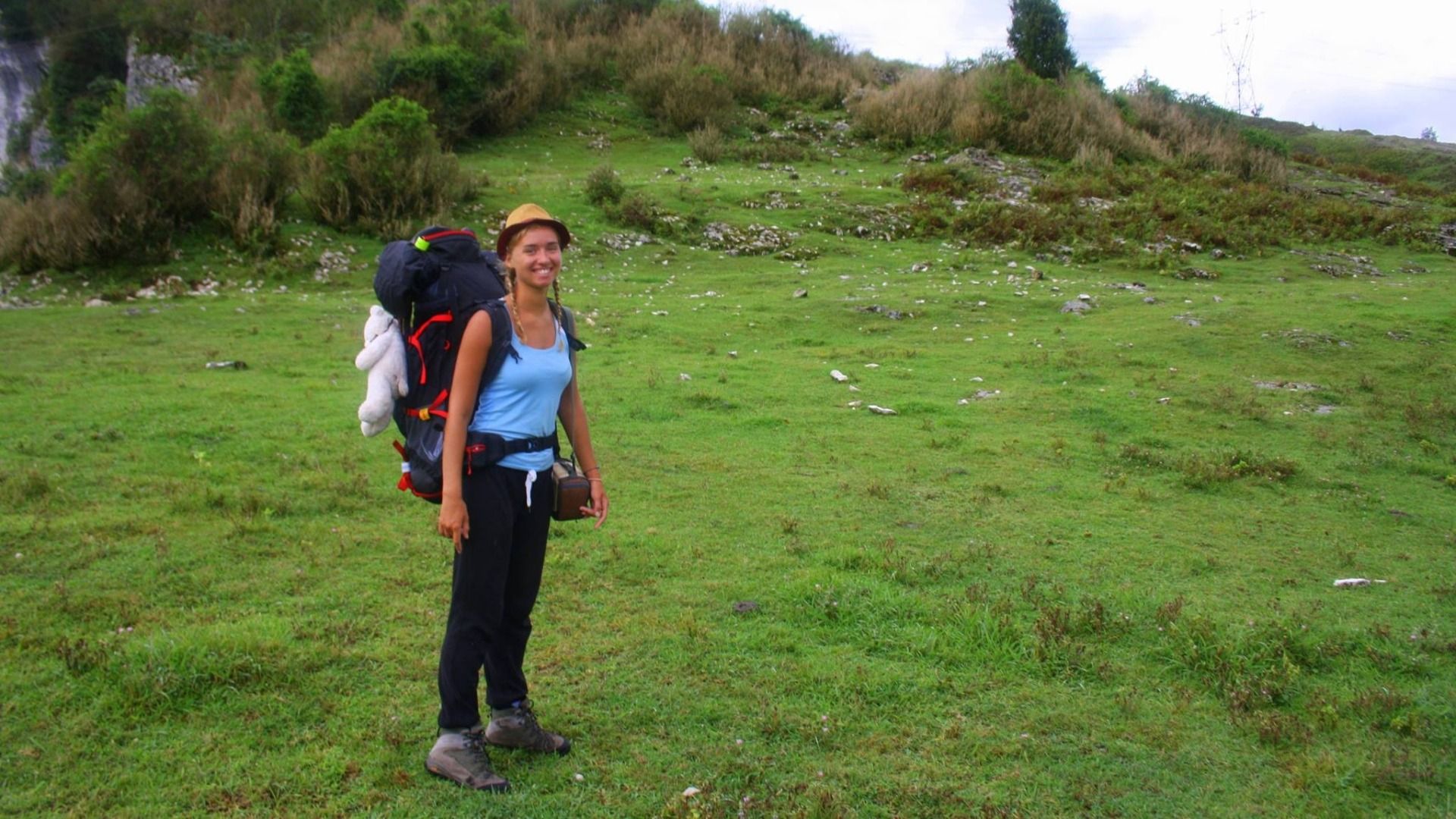
As the man said, so he did: he came back carrying a pot and a stove. The wet branches collected as firewood didn't burn, so he used some gasoline to start the fire. Bit by bit, the Georgian man, poured more and more gasoline. At one point I thought it was getting dangerous and wanted to warn him to be careful, but as the saying goes, "Don't teach the father where children come from."
What would be deadly to someone else was an everyday affair for the Georgian. Gasoline is an explosive material, so as soon as the match was lit, a blast almost knocked the man off his feet. According to him, the flame burned his last eyebrows. Anyway, the fire had successfully started and the zucchinis, corn, and pumpkins could be finally cooked.
The dining room was some tiny shed that was built by the man himself. He explained that this was where men who helped him on the farm usually gathered for lunch. A sly smile and a wink could mean only one thing: some vegetables were not all that he had to offer. Digging deep into his sack, the man found a bottle of clear, pure liquid.
For the rest of the evening, the Georgian told us stories about his homeland, the beauty of nature, and women. During short breaks between topics, he would suddenly enjoy a piece of pumpkin and wet his mouth with a sip of this strong drink.
"I've made it myself," he boasted. "Against intestinal worms!"

Iran
"Once we arrive in Iran, listen to me. You must walk beside me or slightly behind me. Don't rush forward in any way," I told my girlfriend half-jokingly and she did not look very happy about it.
The rules in the Iranian Embassy were pretty strict. Stepping through the gates, Kamile had to cover her hair with a scarf and wear clothing that concealed bare arms. You know what they say. If you decide to travel to a country and be their guest, behave as a guest and respect local customs.
After receiving an email stating that the authorization codes were ready, we immediately returned to Turkey. The stern lady working at the embassy processed the visas in a day. While she greeted us with a serious look, she bid farewell with a smile and the most beautiful wishes.
A friendly truck driver gave us a ride to a town called Agri. From there, Iran was within arm's reach. We were dropped off far from the city center, but the evening was warm. Great weather for a nice evening walk.
The guesthouse was closed for renovations, but we were lucky to meet a Turkish student who was very kind to offer us to be his guests. The heart fluttered like crazy, knowing that the next day we would reach the country once known as Persia.
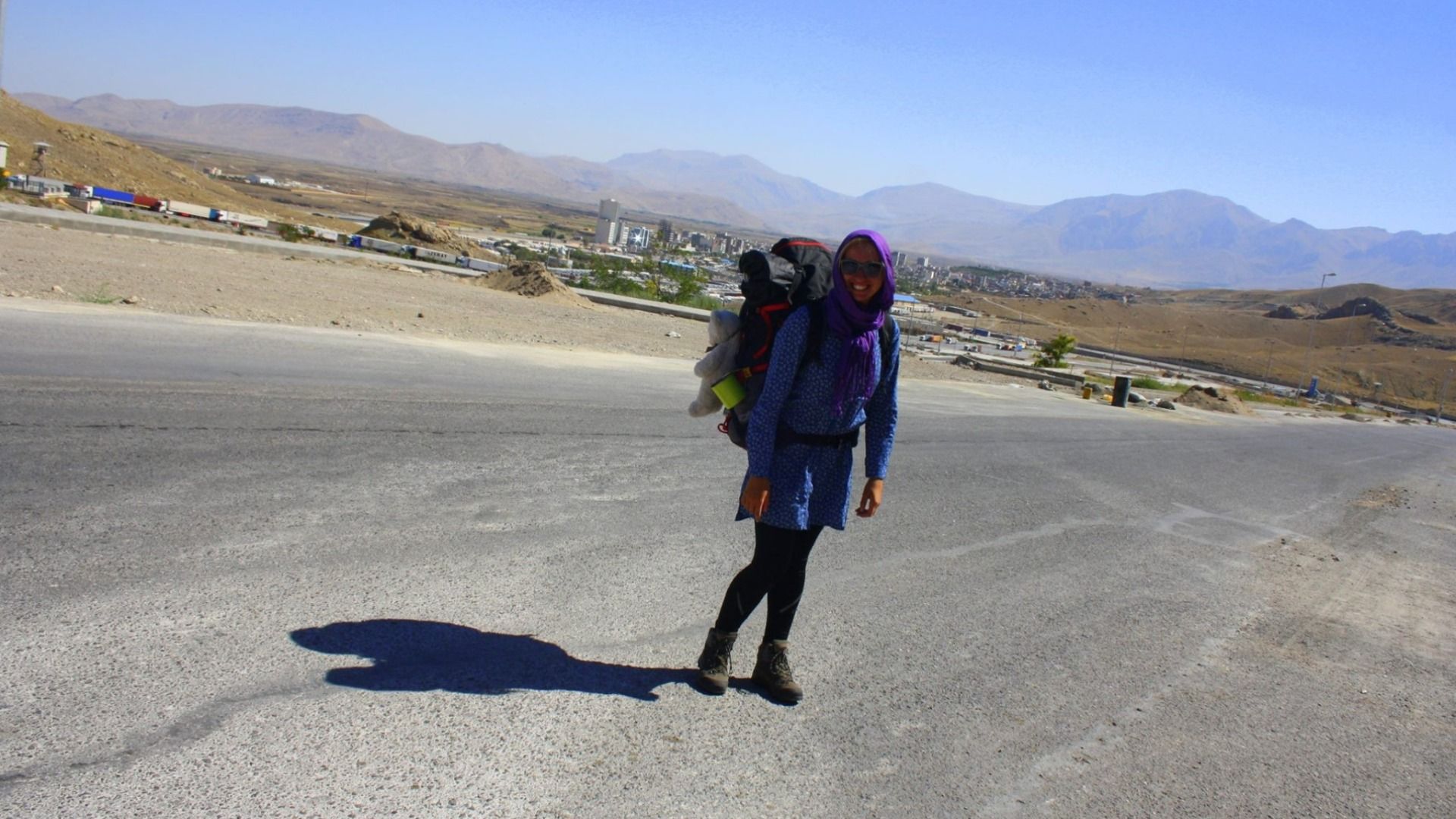
Adventures at the Iranian Border
On the way to the border, the Ararat Mountain came into view. It is said that when the Great Flood receded, Ararat was the land that Noah first saw. Traveler Marco Polo wrote in his texts eight centuries ago that when the flood subsided, the ark remained stuck on the slopes of Mount Ararat. Interestingly, the ark is mentioned in almost all religious scriptures and ancient legends worldwide.
"You speak English very well!" I complimented the middle-aged mustached man.
"Thank you very much, sir," he responded with the utmost gratitude and humility in his voice.
Soon enough, I blushed from embarrassment. The man's son explained that his father was a long-time English teacher. I praised the man for his "Good English" while teaching English was his job. I placed my hand over my heart and apologized to the man for the misunderstanding. He just smiled and said it was all right, nothing to worry about.
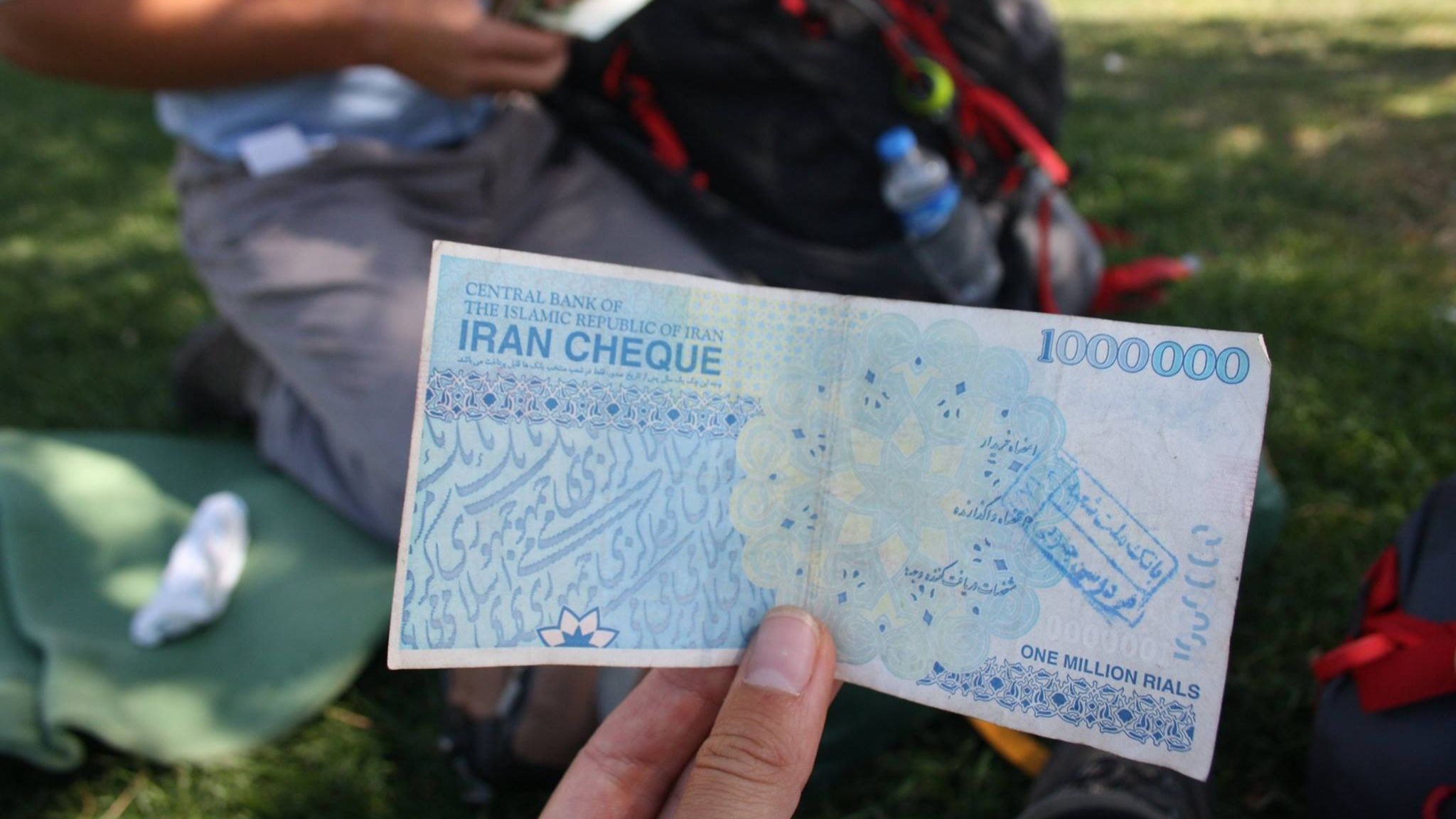
Millionaires
At the border post, a few Iranian women demonstrated their strong character. Armed with shopping bags, they didn't hesitate to urge the officials. The seasoned men reacted calmly. Perhaps they understood that the whole crowd was tired of standing in line for hours and were eager to return home.
We found out that Iranians living near the Turkish border often go shopping in the neighboring country. Getting back isn't that easy because every purchase is checked thoroughly. For some reason, we got through the whole process quicker than expected.
"Clothes?" asked the officer.
"Clothes," we replied.
As soon as the uniformed officer checked our documents, we were good to go. Venturing outside brought an indescribable feeling as, at least in Lithuania, Iran was surrounded by various legends. Here we were, ready to check if some of them were true and experience everything ourselves. The visa permitted a 30-day stay.
Being there and breathing Persian air felt like something extraordinary as if it was a fairy tale. It made me think of my childhood when I played "Prince of Persia" for the first time. However, there was no time to linger in dreams as some matters needed to be addressed as soon as possible. First of all, we needed to exchange some currency.
Like mushrooms after the rain, men holding thick bricks of banknotes in their hands started to appear around us. All of them offered to exchange our dollars, euros, or other currencies for Iranian rials at a "favorable" rate. Where did such generosity come from? It turned out that the Iranian rials devalued so quickly that even if they sold cheaper today, after a month, they would buy back significantly more.
A spoonful of tar spoils the whole jar of honey
As my dear grandfather used to say, a spoonful of tar spoils the whole jar of honey. In this case, "tar" was our first day in Iran. Fortunately, it happened at the beginning of the visit rather than the end. There was plenty of time to learn from our mistakes and replace some not-very-pleasant memories with bright ones.
The border town of Bazargan greeted us with scorching heat. There were few chances to find a place to rest here as the main hotel was closed for renovation. Luckily, Tabriz, the capital of East Azerbaijan Province, was only 3 hours away.
Knowing that the next bus would only leave in the morning, eager taxi drivers hastened to offer their services. It seemed like every kid in the village knew someone who knew someone who could give us a "cheap" ride. Undoubtedly, once the deal was struck, some money would have slipped into their pockets.
Finally, one of the taxi drivers offered his services for a symbolic price. The key point here was that we would have had to share the cab with others and the driver agreed to leave only once the car was filled with passengers. It might have required waiting for an hour or two, or perhaps the entire day. Hitchhiking in Iran is known to be difficult, but we decided to try out our luck.
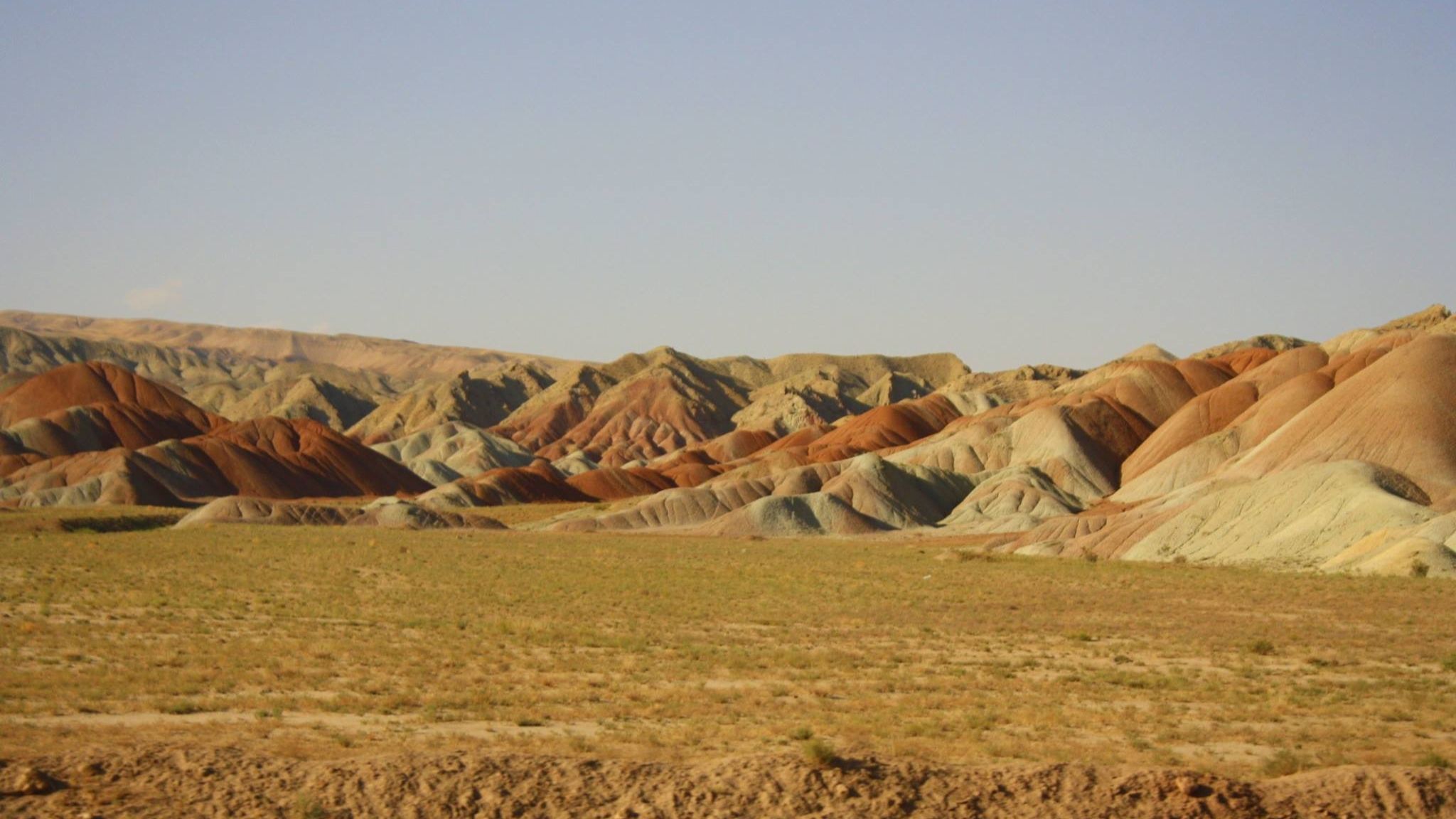
A hundred mistakes, and among them - one truth
According to some seasoned travelers who have attempted hitchhiking in Iran, here it's neither common nor straightforward. This mode of travel has no roots in Iranian culture, and there's no word for it in the Farsi language. Luckily, while in Turkey, Iranian Farzad taught us a few phrases that were meant to be somewhat helpful in case we decided to try our luck.
"Are you going to Tabriz? Could you take us there for free" - we kept asking drivers who stopped to ask if we needed any help.
The most interesting thing we noticed during our short career of hitchhiking in Iran was that EVERY car stopped. There wasn't a single one that didn't. Most of the drivers advised us to go back to the Bazargan station and take a taxi. Others regretted being unable to help because they were only going to the next village. The third group was entrepreneurs who saw an opportunity to earn some money but keep in mind we were on a shoestring budget and could not afford to pay them as much as they asked.
"Waiting is part of the process," we thought right before a white car of a model I had never seen before pulled up nearby.
The driver smiled, but it was an artificial, insincere smile. I repeated the same mantra several times asking where he was headed, inquiring if he would agree to give us a ride for free. He nodded and said something in his language. Most likely told us to hurry. As it turned out, we made two mistakes. The first mistake was not relying on our intuition. The second was leaving our belongings in the trunk, which, as we later realized, the driver had locked.
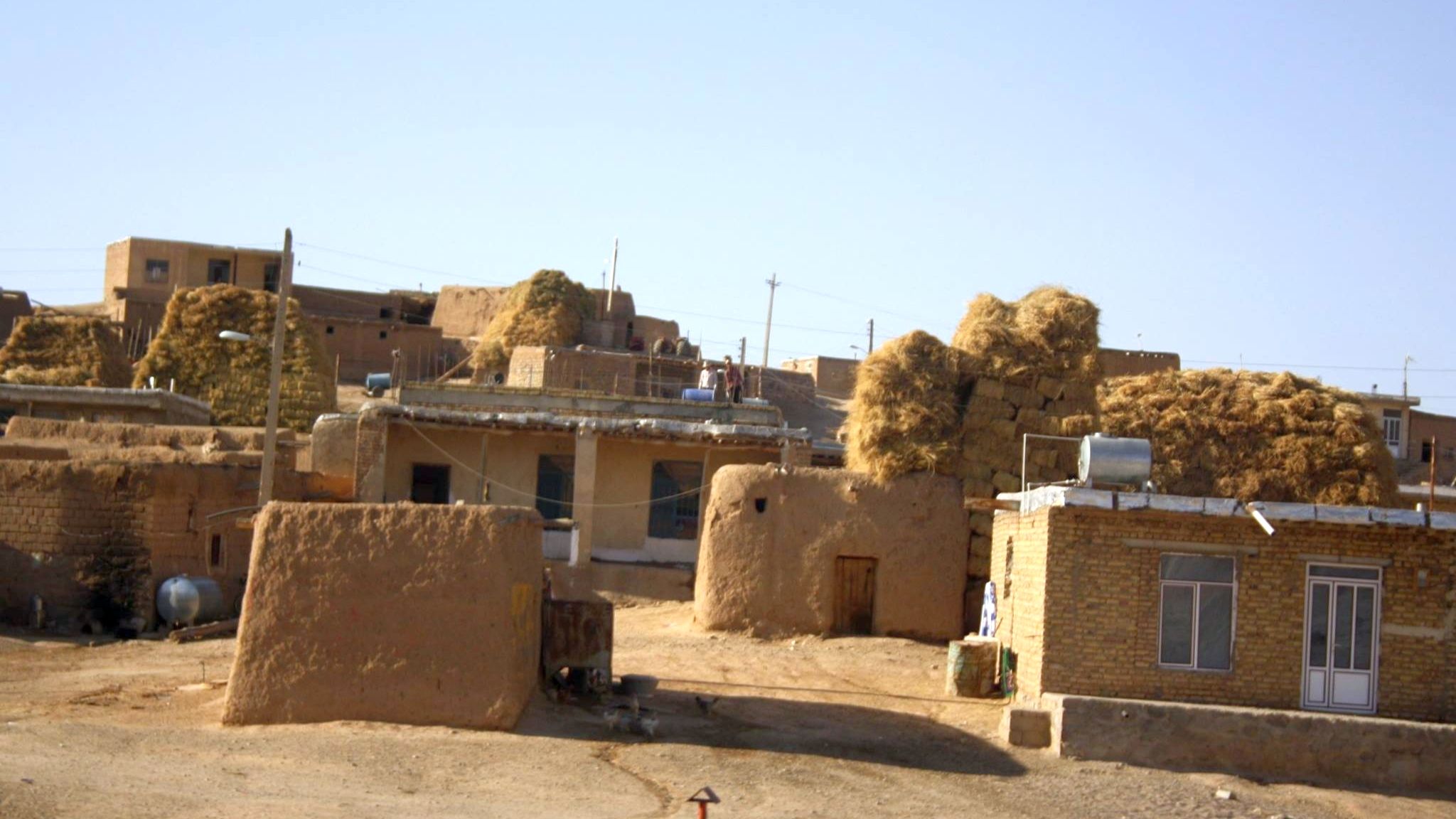
The visa is real and valid
When the trip started, the driver started asking questions. He asked where we were from, whether we had passports, and whether we had Iranian visas. It felt like he looked at us with suspicion as if he believed we were illegal immigrants and had some secrets. He didn't seem like someone driving towards Tabriz who decided to pick up passengers. Rather, he was someone with his own intentions.
After a good hundred kilometers, the driver stopped at the gas station. While getting out, he mumbled something in his language and made it clear that it would be good if we stayed in the car, and that he would return quickly. We had to act quickly so we devised a plan on how to retrieve our belongings and understand the man's true intentions.
When I got out of the car, the driver was talking to some men. Gesturing something vividly, he glanced at the car and rejoiced as if he had won a pot of gold. When one of the men asked where we were from, I gestured to the driver to open the trunk so I could take out my passport and show them.
As soon as the trunk opened, I took out our backpacks and Kamile placed them in the back seat. The driver didn't seem pleased, but he was curious, waiting for me to show my passport. One of the men, who introduced himself as a former officer, looked at the shining Iranian visa glued across the entire page and nodded in agreement, saying that the visa was valid.
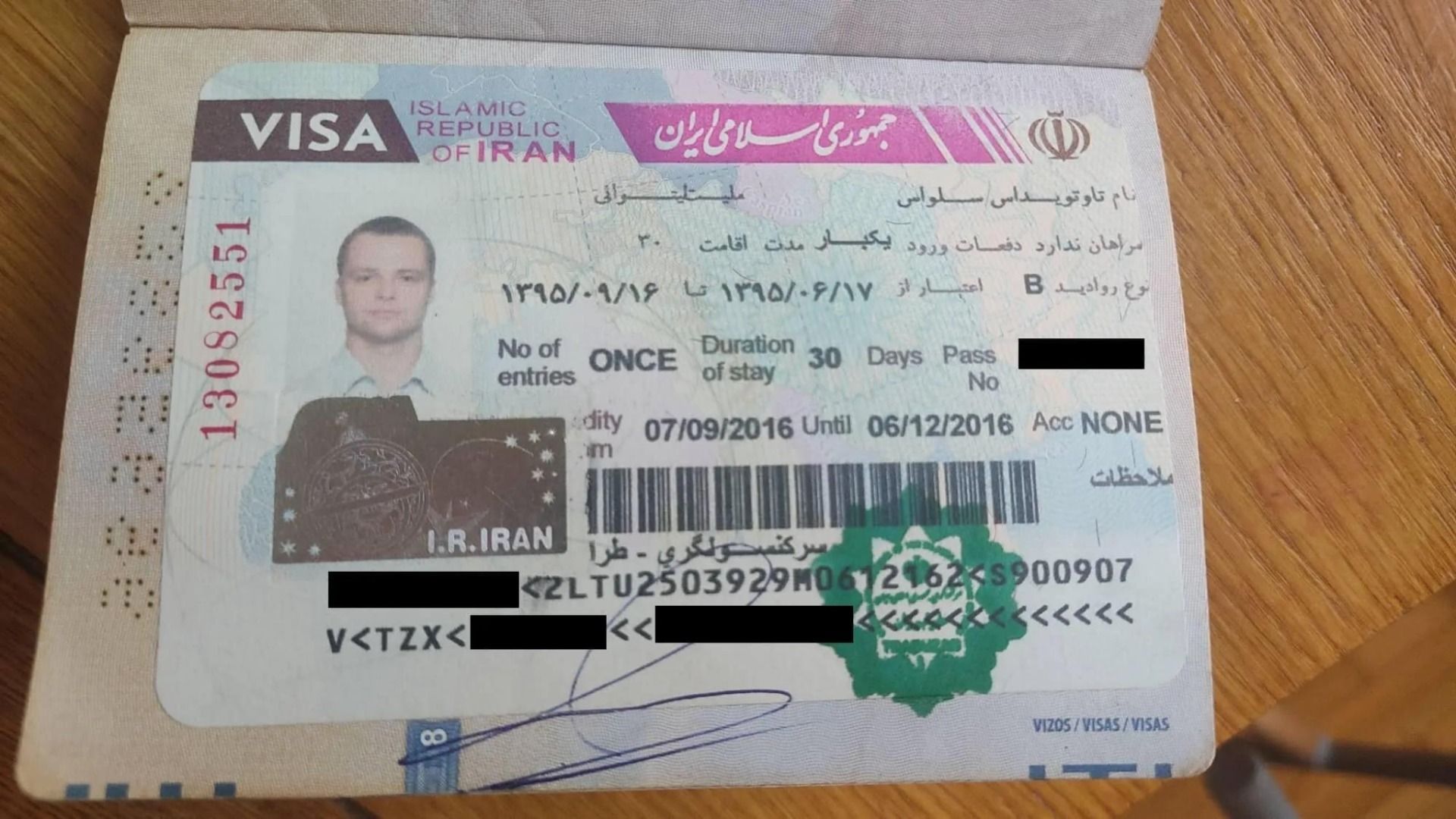
The main character of this story appeared puzzled. Perhaps he thought things would turn out differently? While talking to the men, he used the names of places like Iraq and Syria. Could it be that he thought we were illegal immigrants from one of those countries? If so, what could his intentions have been?
While the driver was paying for the gas, a man who had assessed the visa a few minutes ago approached me. He handed me his smartphone with a translation app already opened. His question was more or less as follows:
“How much did you promise to pay this man? What was your agreement?”
The returning driver dismissed the inquisitive man. He hinted that it was time to go and there was no time for chatting. This further fueled suspicions that the person's decision to help wasn't out of goodwill only. Anyway, concluding without evidence seemed inappropriate so we decided to take precautionary measures.
The next part of the plan required obtaining another confirmation that the driver was heading to Tabriz and accepted fellow passengers voluntarily, understanding that we couldn’t repay in any other way except for paying for gas. According to our prior arrangement, Kamile, sitting in the back seat, turned on a voice recorder, and I began asking questions.
"Are you heading to Tabriz? Would you have gone even without us?" I started with the basics, repeating each question several times. "Do you understand that we can pay for the gas-only?"
All the answers were affirmative, but the smile gradually faded. The mood was further dampened by the Persian term which I was taught by our buddy Farzad, meaning "without money", and the fact that I placed some rials on the dashboard to pay for the gas. It was roughly the cost of the fuel, considering that in Iran even for a single euro, you could get several liters of gasoline.
"I won't even buy cigarettes for that much!" the frustrated driver signaled with gestures. "How can it be you do not have money?"
That's when things took an interesting turn. He stopped at a parking lot near a military post and reiterated that we wouldn’t get far with that amount. Perhaps he thought armed soldiers would instill fear, but in this case, the truth was on our side. Especially considering that in such situations, the military often tends to be on the side of the guest. We thanked him for his help and decided to leave the car.
"No money, no Tabriz!" the angered driver said before turning back towards the border town (for the record, we did pay for the gas). We kept hitchhiking and got to Tabriz in the late evening. Getting around by bus was something that we wanted to try next.
Northern Iran
In Lithuania, there's a widespread opinion that Iran is a harsh country for travelers. Moreover, many Lithuanians are convinced that all of Iran's nature is boundless bleak deserts and lifeless mountains. We confirmed the inaccuracy of such statements in the first days of our trip when a guy named Mehdi invited us to see the Gilan Province in Northern Iran.
"You will see a slightly different Iran, green and fertile," - assured Mehdi. Not long after, we were winding our way through the Elburz mountain roads
Mehdi and his friends were future emigrants planning to seek their fortune in Canada. Mehdi reassured us that for Iranians, leaving for the West is not easy. Young men can get a passport only after completing two years of military service. As for girls who wish to leave the country, there are often even more difficulties. They need permission from their father, and after marriage – from their husband.
The landscape changed at lightning speed. The sandy yellow mountains were replaced by their greenish siblings. It turned out Mehdi told us the truth. Kris, a Swiss traveler invited by Mehdi, couldn't hide his disappointment.
"We have green mountains in Switzerland," Said Kris. "I came to Iran to experience the desert."
We gazed through the windows, soaking in the beauty of the entire landscape. The strong scent of vegetation and the playful chirping of birds gladdened our hearts. Mehdi and his friends stopped every 15 minutes to take pictures and dance. When asked if they were not afraid of attracting unnecessary attention, the Iranians replied, that this high up in the mountains it was not a problem.
Over a few days spent in the northern part of Iran, we visited the famous hillside village named Masuleh, saw the Caspian Sea, and spent a night in a small mountain lodge high above the clouds. Nonetheless, the most memorable day was when we ascended the "thousand steps" trail to glimpse the medieval Rudkhan Castle.
The long hike was a great opportunity to engage in serious conversations and learn more about the cultural peculiarities of Iran. We noticed that daily picnics or, at least, shared family, friends, and neighbors' tea-drinking ceremonies had deeply rooted traditions throughout the country.
"We may forgo distant travels or luxury, but we will never give up on long conversations and gatherings with loved ones," explained Mehdi and his friends.
Another cornerstone of Iranian culture is the exceptional respect for guests. We experienced this ourselves. They say that a guest is God's friend. When a guest is in the house - God is in the house.
Our relatives called us and asked if we had problems communicating with locals. To our and their surprise, Iranian youth spoke English almost as well as their native Persian. From what we have seen, many of them eagerly learn Arabic, German, French, and other foreign languages.
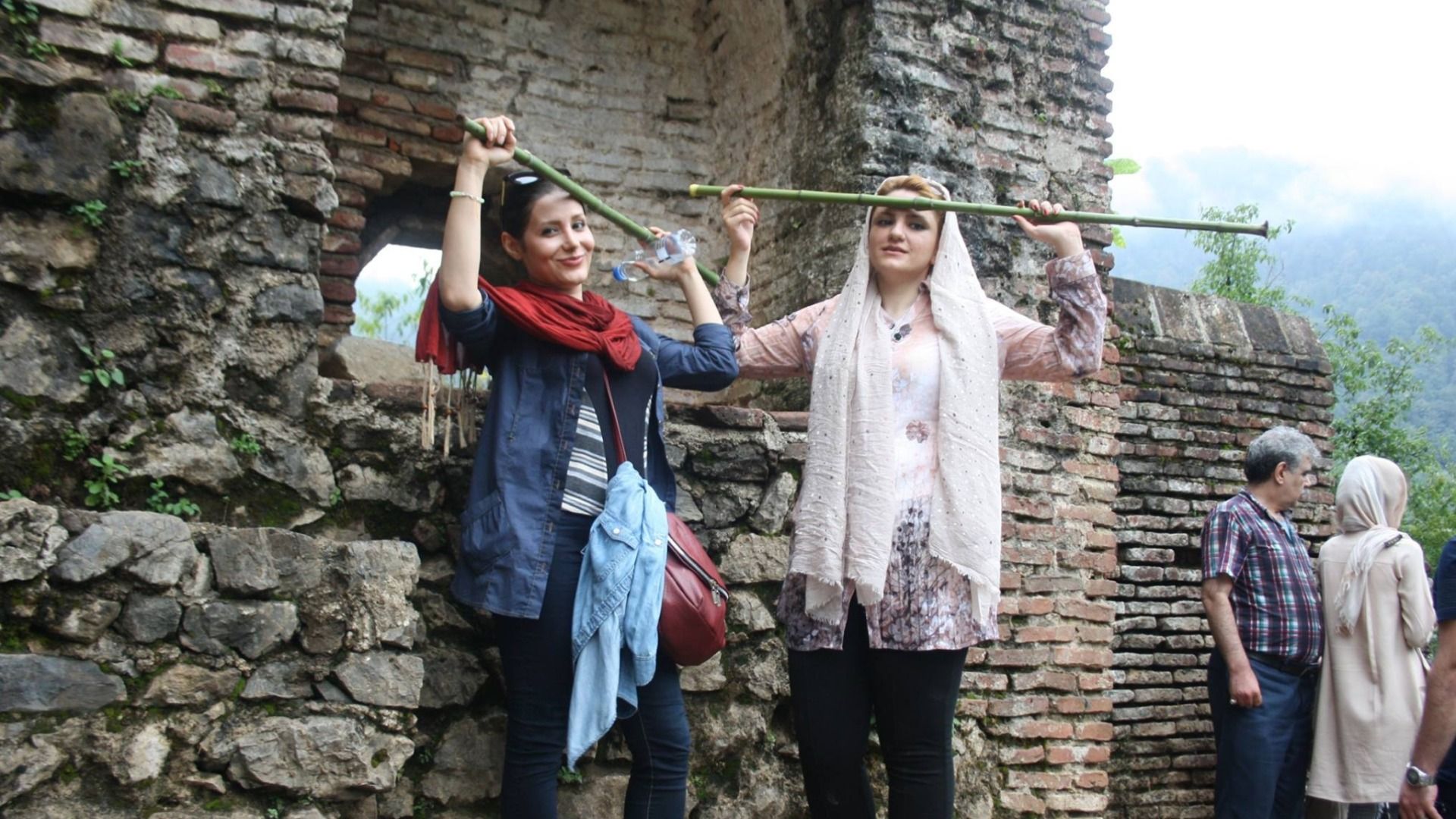
The next thing that caught our attention and piqued our curiosity was Iranian men's grace and fluid dance movements. "How is it that you, descendants of the valiant Persian Empire warriors, are capable of such elegant dancing?" I inquired of Mehdi and his friends. They laughed.
Before long, an impressive sight unfolded before our eyes. The Rudkhan Castle was simply stunning. It's worth mentioning that the ticket price differs significantly for locals and foreigners. This popular tourist attraction once served as a defensive fortress. Even today, 42 castle towers still remain. The fortress was necessary for the locals to defend against Arab invaders. The misconception that Iranians themselves are of Arab descent is mistaken.
Our unplanned journey to the north of Iran with Mehdi and his friends was coming to an end. After covering the first few hundred kilometers in Iran with hitchhiked rides and arriving in the north of Iran in Mehdi's car, we continued our journey by public transport. This mode of travel was convenient and budget-friendly. Due to the uneven terrain, distances in Iran are better gauged not by kilometers but by hours. A bus ride of an hour's duration in the economy class costs around 1 Euro. Our next stop - Tehran, the capital of Iran.
Teheran
Teheran is the capital and largest city of the Islamic Republic of Iran. With a metropolitan area just over four times larger than Vilnius, it is home to approximately 13 million inhabitants. Architecturally, the city is adorned with several notable landmarks.
Among the most famous are the Azadi Sports Complex, one of the largest in the world accommodating over 78,000 spectators, the Golestan Palace, and the iconic Azadi Tower - an impressive 45-meter marble-covered structure often referred to as the symbol of Tehran. Iranian folklore attests: "Visiting Iran and not seeing the Azadi Tower is like visiting Egypt and not seeing the pyramids."
The Azadi Tower was just one of the two main reasons that drew us to this metropolis. The second reason was an invitation from our friend Shahram to visit him and his family. We had met Shahram in Georgia. Georgia is one of the few countries where Iranian citizens can travel without restrictions. Our visit to Tehran was a great opportunity not only to visit a friend but also to acquaint ourselves with another category of Iranian cultural peculiarities - family relationships.
One night, after spending time at the home of another traveler, we arrived at Shahram's place by metro. To our eyes, Tehran's modern metro network is no less in size, cleanliness, or functionality than those of previously seen major cities in the world. Our smiling friend was waiting at the last station, welcoming us warmly. Shortly thereafter, we arrived at Shahram's impressive house, a few blocks away.
Shahram's young daughter was the first to greet us. Kamile confessed feeling a bit envious seeing the little girl's curly hair. It took some time before curiosity overcame the girl's shyness and prompted her to approach. The older son appeared to be much more talkative. "I'm an avid table tennis player," the boy revealed, speaking about his love for the sport.
During dinner, a conversation sparked. Iranians were intrigued by our traditions, particularly when comparing wedding customs. It turns out Lithuanian weddings are somewhat modest in comparison. In Iran, wedding ceremonies often involve more than five hundred people. For affluent families, the number of guests can exceed a thousand. Nowadays, people mostly marry for love, but according to an old tradition, when a young man asks for a girl's hand, he goes to her parents accompanied not only by himself but also by his parents.
Advertisement: Girl Looking for a Man
Our travel route unexpectedly led us to the slightly less-populated city of Kashan. We arrived there after being invited by a guy we had met in the online sphere. Eventually, we realized that the guy had changed his mind. In other words, we had to come up with a new plan quickly.
Instead of feeling down, we decided to stroll to the nearest park and breathe in the refreshing autumn air. Birds were chirping in a dialect unfamiliar to us. Juicy Persian grapes, purchased from a nearby store, melted in our mouths. Over the past few months, we've experienced both ups and downs. We knew everything would resolve itself. All we had to do was follow the signs sent by fate.
Unexpectedly, a mature gentleman approached us and offered us a cup of Persian tea. Of course, we agreed. The man's name was Sayed. He's a professor of civil engineering at a Paris university. Hearing this sent shivers down our spines. We had been studying this exact subject at university not too long ago. The unwavering desire to visit his long-lost brother brought Sayed back to his homeland. After a short conversation, it felt like we had known these gentlemen for at least a decade.
After a prolonged tea-drinking ceremony, Sayed offered to host us at his ancestral home. The brothers were from Qom, located 100 km northwards. We heard that Iranian etiquette rules recommend refusing any offer three times so we did, but he kept his offer, so we were honored to accept it.
It was a great opportunity to visit what is possibly the most conservative city in Iran with a local 'guide' and continue exploring the cultural nuances of this exotic country.
Amidst the unexpected twists of fate, we felt comfortable as if we were in our own home. On the same day, we had the honor of meeting another of Sayed's brothers, who spoke excellent English. It turns out that several decades ago, this man earned a master's degree in English in the United States.
It's amazing how similar and yet how different brothers can be. Nonetheless, they all had a great sense of humor. Sayed could hardly contain his desire to comment on his brother's lifestyle. "My brother is so lazy that after letting out the chickens, he needs to nap for at least a few hours," he joked.
We spent a few days with the brothers. To show our gratitude for their hospitality, we bought a duck as a gift for the brother who lived there full time. For the record, if I am not mistaken, the price of the duck was around 3 USD. However, it might be that locals buy them cheaper.
While walking through the market, something interesting happened. A crowd of people started gathering around us. Everyone was eager to take photos with Europeans. The visit of white tourists was a rare phenomenon in this particular city.
A man riding a motorcycle accidentally bumped into Kamile. "I'm sorry, sir," he addressed me. Kamile was interested in why the man apologized to me and not to her. It turns out, those were the customs.
As we were walking down the street, a girl greeted us. She didn't speak English, so Sayed had to translate. The girl mentioned that she didn't have a husband yet and still lived with her parents. She wanted to take a photo with us so she took off her black robe. Underneath it, she was wearing bright and colorful clothes.
Visiting Afghans
After bidding farewell to the girl, we stumbled upon a big Mosque, where another memorable encounter awaited us. Kamile was approached by a girl with non-Iranian features. Her name was Fatima. It turns out she and her sisters were born in Iran, but their parents were immigrants from Afghanistan. In just a moment, we were all riding a century-old bus that seemed to echo the past. We were invited for a cup of tea.
Traveling by city bus in Iran was an interesting experience. Women enter through the rear doors, while men enter through the front. There is a sort of partition between the two sections. Before exiting, a man pays for himself and his wife. If a woman is traveling alone, she passes the money to the driver through hands of passengers in the front section.
The home of the Afghans surprised us with its coziness. Barely started handwoven carpet hung on the wall. Carpet weaving was what they did for a living. The sisters explained it took one year to make one carpet. The handmade Persian carpet's price reached several thousand euros.
After a lavish lunch and 12 cups of tea, it was time for conversations. "Why do you wear such a plain headscarf?" the sisters asked Kamile. One of them swiftly went to the adjacent room and returned with gifts. The girls presented Kamile with two silk scarves: one was sky blue and another one was white. By mutual agreement, Kamile's previously worn scarves had to be burned. (:D) That cheerful ceremony marked the end of our adventures in Qom.
Isfahan - a city that is not inferior to Istanbul
Isfahan is the third-largest city in Iran, trailing only Tehran and Mashhad in size. With a current population of around 1.6 million, it was a pretty big city. To this day, it retains dozens of ancient ancient bridges, magnificent palaces, broad boulevards, impressive mosques, and other architectural heritage sites.
While in Tehran, our friend Shahram repeated, "In Iran, there is a city that rivals Istanbul. You must visit Isfahan." An inner feeling nudged us that the time had come to travel to this city, considered the focal point of Iranian tourist attraction. The best way to do so was by bus.
Upon arriving in Isfahan, we befriended a couple of travelers from Taiwan. Exploring the city together made the experience more enjoyable. Without delay, we started navigating from one popular attraction to another, ticking off checkboxes on the map like true tourists. Almost all of Isfahan's major sights required an entrance fee.
"If you come here after 5:00 PM, the entrance won't cost anything," shared one carpet seller as advice. For a good half hour, we explained that a "Persian" carpet made in China surely wouldn't fit into our backpack. In the end, the man concluded that despite the fact we were not planning to buy anything, we were invited to taste some tea and local sweets.
The most visited places in Isfahan: are the Grand Isfahan Bazaar, the famous Khaju Bridge, and Naqsh-e Jahan (Imam) Square. The latter is one of the world's largest city squares, slightly behind Tiananmen Square in Beijing. A few young students approached us carrying ice cream and offered to show us around the city. Persian ice cream proved to be exceptionally long-lasting and resistant to Isfahan's hot climate.
With more time, it's worth visiting the lesser-known corners of the city. By chance, we stumbled upon one of the oldest mosques in the city, where we met a retired literature teacher. The man kindly agreed to act as our guide. "Do you have foreign coins or banknotes?" the man asked after finishing his story and proclaimed himself to be a currency collector.
The day seamlessly melted away, and the journey shifted into the second half. After spending a couple of days leaving a very positive impression in Isfahan, we decided to continue traveling southward. We were eager to see Shiraz, a city built over 4,000 years ago, and Persepolis - the former capital of the Persian Empire.
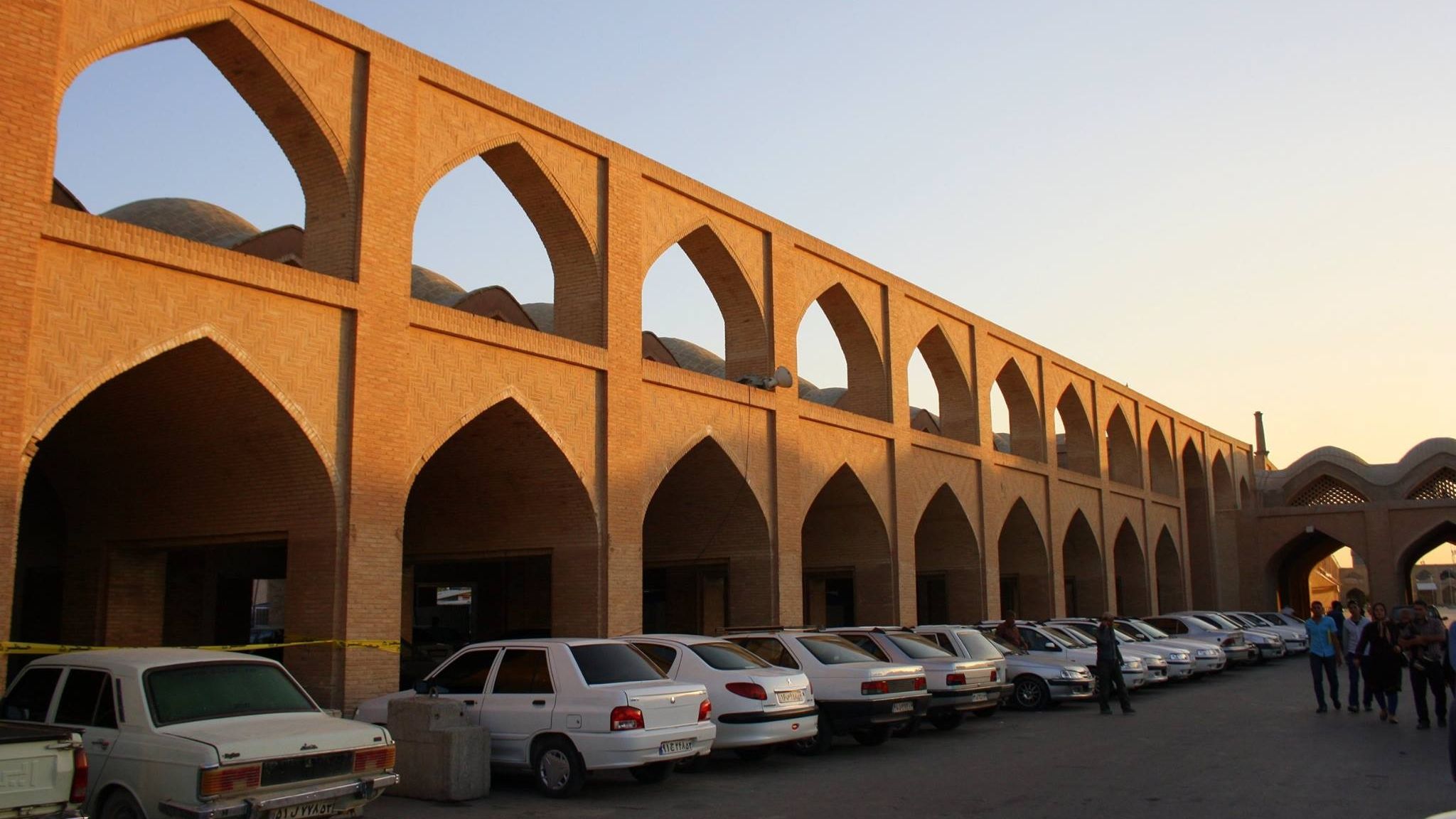
Neither epidemics nor floods could break it
The name of Shiraz is mentioned in inscriptions found in the southwest part of the city. It is believed that these inscriptions were made around 2000 BC. The city is renowned for its wine, architectural landmarks, and its resilience, as the residents endured plagues, earthquakes, droughts, floods, and famines over thousands of years without succumbing.
At the entrance of the Ali ibn Hamza shrine, we were greeted by a stern-faced yet cheerful man. "You will have a guide. It won't cost you anything. Please wait here," he explained. Shortly after, a couple from Belgium joined us as fellow tourists. The man was well-versed in Lithuania and knew that Belgium is slightly smaller in size than our homeland. Naturally, this flattered our national pride because Lithuania is very small too.
The ladies were veiled from head to toe. One guide was assigned for all four of us, narrating the history of the shrine for a good half hour. After the walk, we were invited to meet with their colleagues and enjoy a cup of tea. One man, presumably holding a high position, shared stories of his life in Western countries. His storytelling emphasized respect for both Western lands and his homeland, never over-praising or belittling either.
Not everything went as smoothly as planned. While exploring the city, my fascination with birds led us into an unexpected situation. Exhausted and hungry after an intriguing tour, we were searching for a place to have lunch. Somehow we came to a remote side street where we were approached by an elderly man.
Doing broad gestures and explaining something in mysterious words, he seemed eager to show us something. Ten minutes of wandering through the labyrinth of clay streets led us to a dead end.
It took a while for us to grasp the purpose of this journey. The elderly man proudly presented his collection of multi-colored pigeons. Having raised pigeons myself, I got completely lost in my inner world and it took some time for Kamile to get me out of it. We headed back on our path.
The old man vanished and we couldn't find the way out, and there was no one to ask for directions. Eventually, we bumped into a large clothing store and we went inside to have some rest. A few moments later we decided that it would be best if Kamile sat on a bench and watched over our backpacks, while I continued the quest for food.
While searching for something to eat, I stumbled upon a pigeon market and once again got lost in another world. By the time I realized I had to return, an entire hour had passed. When I got back, the shopping center was closed. The security guard immediately understood what I was looking for. He got in touch with another guard, who contacted the third one. The last one knew where to find Kamile. I rushed to the other side of the mall, and I saw her walking away with a local man and his daughters.
As it turned out, the market had closed for a lunch break, and the man was one of the store owners. He offered Kamile to have lunch with his daughters and wife, ant told the security guard to explain to me how to find them. Once everything was sorted out, we were both invited to join them for lunch.
We were surprised to learn about the homeowner's extraordinary hobby. It turns out he was a martial arts master and held a black belt in karate. Almost equally accomplished in the realm of martial arts were both of his daughters. Competition photos and dozens of medals adorned the walls. Before saying goodbye, the girls gladly agreed to demonstrate a few self-defense moves. Another fascinating encounter, gifted by the whims of fate.
Persepolis - the Capital of the Persian Empire
Just an hour's journey from Shiraz lies another ancient city - Persepolis. The ruins of the grand Persian Empire's capital are one of Iran's most visited tourist sites. The city was built in 518 BC by the order of King Darius the Great. The same Darius later moved the capital from Pasargadae to this city. During those times, the Persians themselves called the city Parsa - the Persian City.
A convenient way to reach Persepolis was to take a bus for half the journey and then switch to a taxi for the other half. The ticket price for archaeological sites differed by two and a half times for locals and tourists during our trip.
The most famous attractions in Persepolis include the Apadana stairs, the ruins of the Hall of a Hundred Columns, the stone griffins of Persepolis, the tomb of Artaxerxes II, and several others.
What captured our attention the most were the historical events carved into the colossal stone slabs and the Gate of All Nations. The latter, in honor of King Xerxes, is often referred to as Xerxes' Gate. Fans of Zack Snyder's directed movie "300" are quite familiar with this historical figure.
During its peak, Persepolis was renowned for its incomprehensible wealth and a gigantic treasury situated in the southeast of the city. The treasury was built by King Darius the Great and later expanded by his son Xerxes. It had incredibly thick walls and a single entrance on the northeast side. The structure ceased its original function when the city was conquered by Alexander the Great's army.
Upon conquering the Persian Empire, Alexander had to employ 3,000 camels and mules to transport the entire contents of the treasury, valued at 120,000 silver talents. Archaeologists unearthed numerous sculpture fragments, stone slabs with inscriptions of Xerxes, and clay tablets with Elamite inscriptions detailing information about workers' salaries and other records. However, only the foundations of the treasury remain to this day.
After spending a couple of days exploring ancient Shiraz and meticulously examining every corner of Persepolis, we were ready to continue our journey. This time, our destination was the coastline of the Persian Gulf. We had no specific plan for accommodation and little anticipation of the scorching heat awaiting us.
Bushehr: Adventures by the Persian Gulf
Bushehr is a city located on the coast of the Persian Gulf. Long-sleeved clothing is essential in Bushehr to shield oneself from the relentless rays of the sun. The combination of a scorching 35-degree temperature and immense humidity creates a sensation akin to baking in 50-degree heat. It feels like one is simmering in their own juices. Luckily, we visited Bushehr in the fall rather than the summer.
By chance, we met a fellow traveler from Tehran at the bus station. He made a call to someone and moments later said, "My friend Dariya, who lives in Bushehr, would like to invite you to stay with her." Before we knew it, we found ourselves at Dariya's house, dropping off our things and heading out to explore the surroundings.
When we visited Dariya's favorite beach, the girls decided to go for a swim. Most beaches here are segregated into three sections: one for men, one for women, and a common area for picnics. Often, the morality police monitor these areas. However, this beach was different: secluded and known to few. Still, some rules had to be followed. The girls could only swim fully clothed.
The next day, we became witnesses to a special event in Bushehr. There was a festival dedicated to tourism taking place. Interestingly, among the several dozen people seated in the hall, we were the only tourists from abroad. The concert featured performances by artists from the remotest corners of Iran. Our hearts swelled with joy when the leader of a men's choir dedicated a song specifically to us.
Later that evening Dariya, Kamile, and I discussed between men and women in different cultures including Iran. You can chat in a café with someone from the opposite sex, but those wanting to travel together must rent separate rooms in hotels or present a marriage certificate. There is a bit of leniency for foreigners on this matter," explained Dariya.
Back to the North
After a few days engulfed in the exhausting heat of Bushehr, time passed swiftly like the wind. The journey was nearing its end. A bus trip back to the capital took about 20 hours. To be honest, during the last few days in Iran, we had dozens of amazing experiences but it would require a separate article to tell the whole story.
In short, we had the honor of meeting Media and Khosro, internationally acclaimed rock climbing professionals. What is more, we participated in the festival of Tehran city. Last, but not least, we had a final meeting with Shahram and his family. Shahram and Jalal took us on a road trip to Jalal's hometown in Gilan province.
Nepal
Nepal is a small South Asian country renowned for eight of the world's top ten highest peaks, legends of mythical Yeti creatures, and stories of fearless Gurkha warriors. Every year, nearly a million travelers from the farthest corners of the world visit this exotic country, driven by diverse intentions.
Some embark on multi-week treks along picturesque Himalayan trails, while others aim to fulfill the dream of summiting the peak of Everest, titled the lord of all mountains. Additionally, a significant number of visitors are drawn by curiosity and the desire to catch a glimpse of the untouched lives of the locals. Volunteering in various organizations is an excellent way to do so.
Volunteering in a Remote Nepalese Village
The idea to travel to this country arose back in Romania. It was there that we met Andrei Andritcu - a professional photographer from Moldova. While preparing for photo tours around the world, this passionate man recounted his last journey to Nepal and the most memorable places he visited. Lukla Airport considered the most dangerous airport on Earth, and Pokhara, dubbed the most beautiful city in Nepal, were just a couple of them.
"However, it's not the places visited that leave the biggest impression, but the people you meet. Nepalese people are so kind that they can touch your soul," he concluded, helping us make our final decision eventually to visit Nepal.
Three months later, we arrived in Pokhara, a city nestled at the foot of the Himalayas, teeming with adventure seekers. The quest for a volunteering spot happened spontaneously while visiting one of the cafes along the shores of Fewa Lake. The 21st century is great in that, armed with smart devices and internet access, you can find loads of helpful information on any subject.
After a few hours of reaching out to local farmers, we were lucky to be invited by Tara Adhikari - a maths teacher who was also a farmer in the tiny village of Shukranagar, located in the south of Nepal, near the border with India.
The chance to take a break from the bustle of cities and live within a small village community seemed very appealing. What other way would allow getting to know the lives of the Nepalese people so intimately? This time, I'll share the adventures experienced, cultural differences observed, and practical tips on finding a place to volunteer.
The bus journeys in Nepal are somewhat different from what we were used to. Distances are better measured in hours rather than kilometers. It might take several hours to cover a distance of just 100 kilometers. The challenging terrain and potholed roads pose problems for drivers. To keep up with the schedule, drivers perform extremely daring maneuvers.
By the time we arrived at the final stop, our bus had lost two of its side mirrors. Whenever an incident occurred, the driver would simply continue the journey. If no one was injured, why waste time determining whose fault was it?
The 20-seater bus easily accommodated twice the number of passengers. Wooden benches were conveniently placed in the middle of the seat rows. Very unique Nepalese music and cages with domestic birds added a charming touch to the experience. Ducks and chickens traveled along with their owners. We even saw a goat riding on the top of the bus.
The fellow passengers were cheerful and kind-hearted. Most of them knew English very well. Such a journey was a great opportunity not only to socialize but also to observe the surroundings and note the subtle differences between Nepal and other visited countries.
It took some time to get used to it
'Namaste,' we were greeted by a man we met for the first time. His name was Tara Adhikari. As I have previously already mentioned, we reached out to him on the so-called VOOF website ("World Wide Organic Farming"). This program aimed to promote cultural and educational exchanges worldwide.
As per our agreement, in exchange for accommodation, meals, and the opportunity to learn the secrets of Nepalese farming, we committed to helping Tara for a few hours each day. Little did we know that this assistance wouldn't just involve farm work. We got involved in the local school's activities, worked at Tara's wife's shop, participated in village festivals and had many other adventures.
Tara, his wife Anjana, their son Ananta, and daughter Akriti lived in a two-story house. We settled in a small room on the second floor. Solar panels installed on the roof powered all the light bulbs and other devices. Such a setup comes in handy when the town's electricity supply cuts out. It's a common occurrence in all regions of Nepal since production can't keep up with the increasing demand.
During dinner, we met Honza, a volunteer from the Czech Republic. Having worked as a librarian back home, he arrived in India and later in Nepal for religious purposes. After a brief introduction, Tara's sense of humor blossomed, much like a spring flower. This happened when he found out that Honza didn't have a girlfriend.
"Tomorrow, I'll find you a beauty from our town. We'll have a wedding next week," joked Tara. The modest Honza said he didn't know what to say to the girl if Tara introduced him to someone. "No worries! Say, "I can live without water, but I can't live without you!'' our host didn't spare romantic advice.
The excursion to Chitwan National Park
The day in the village of Sukranagar seemed very short since there were plenty of things to do. The tasks at hand were diverse: from planting vegetables to assembling a bamboo fence.
According to Tara, the latter was necessary not to protect against freely roaming goats, as we had assumed, but to safeguard against mischievous children. Already in the first days, we noticed that his 8-year-old Ananta was a sort of a leader among the local kids.
The wise Tara was respected not only by the elders but also by the younger generation in the community. He had various talents not only in farm work but also in academics as he was a math teacher at the local school.
One day we had the honor of getting acquainted with school life. We were invited on an excursion. Honza, Kamile, and I traveled to Chitwan National Park along with the schoolchildren. After a good hour's ride on a school bus we arrived at the lodging area near the Narayani River.
The word "Chitwan" means "heart of the jungle." Out of 543 bird species found in Chitwan National Park, two-thirds are facing extinction. However, this park is rich not only in the abundance of wild birds. The most impressive inhabitants of the park are the formidable one-horned rhino, capable of reaching a weight of up to 2.5 tons.
The excursion to Chitwan National Park was an eye-opening experience. The local children's ability to understand English sentences was commendable. A significant portion of the country's revenue comes from the tourism sector. Recognizing this, parents encourage their children to diligently learn foreign languages. One of the reasons why Tara hosts so many volunteers is the excellent opportunity it provides for kids to practice English.
It's interesting to note that in Nepal, up to 80 ethnic groups coexist in a friendly manner, according to some sources, speaking 123 different languages. Despite some differences, everyone identifies themselves as Nepalese. Approximately 45 percent of the country's population speaks the official Nepali language.
Religious conflicts and disputes based on ethnic differences are very rare. We observed a sense of mutual tolerance and respect not only among teachers but also among the students. The older kids treated the younger ones as equals. Boys got along excellently with girls. Perhaps only the attire reflected some differences in their parent's financial status, but to the children, these disparities were insignificant.
The main objective of the excursion was to explore nature. We visited a nearby miniature zoo. The simplicity of the few dozen small enclosures and fences in the zoo was most charming. Tara couldn't believe that Lithuania also has a zoo with the same species of animals. "How do they survive the winter if you have snow?" Tara asked, curiosity gleaming in his eyes.
1/3]
Features of Nepalese Cuisine
While we engaged with the children and taught photography using a mirrored camera, the teachers prepared food. The main dish - Pulao - is a mix of sautéed vegetables and rice. Similar to neighboring countries, rice in Nepal is an integral part of the daily diet.
Perhaps the most popular dish across the country is Dal Bhat, where "Dal" means lentils, and "Bhat" means rice. Momo dumplings, made with various fillings, including vegetables and buffalo meat are well known too.
The dining customs in Nepal are slightly different from those we followed in the countries we visited earlier. If in Iran we held a spoon in the right hand and a fork in the left, in Nepal, we had to get used to eating with our fingers. Table utensils in Nepal are only used for cooking.
"When I eat with a spoon, the food loses its taste," explained teacher Tara, while mixing the contents of the plate into a cohesive mass with quick finger movements. Kamile mastered this eating technique in an instant. Meanwhile, I learned it in a couple of days.
Nepalese dishes are characterized by their abundance of spices. You won't surprise anyone by adding a couple of chili peppers to dessert. Tara eats chili peppers like potato chips. Tea is consumed with lots of sugar. Czech Honza's polite request not to add sugar to his tea left those around him astonished.
Nepal - a country rich in cultural heritage
Every morning on the farm started the same way: an easy task followed by a tea break. The daily experience showed that morning tea was the perfect time for conversations. One such morning, Czech Honza shared his story of how he got to Nepal.
Honza was a Buddhist. This was why he desired to see several important places in Buddhism, also known as pilgrimage centers. One of these places was Lumbini, the birthplace of the founder of Buddhism, Siddhartha Gautama, located in the south of Nepal, just a few hours' drive from Shukranagar. It turns out that Nepal is not only rich in natural wonders but also in cultural heritage.
According to the Czech, Nepal and India are two very similar yet different countries. One of the differences lies in the railways. Nepal has only 59 km of train tracks. In contrast, neighboring India boasts a railway network that spans about 150,000 km, covering the entire subcontinent.
"There are also similarities. I'm talking about the caste system and certain marriage customs," interjected Tara. On this matter, the teacher had a lot to say.
"In Nepal, half of the couples marry for love, while the other half marry by arrangement. In the latter case, love comes a little later. It was the same for us with Anjana. Potential newlyweds meet and talk for about two hours. Each expresses their opinion on various topics: what the family should do for a living, how children should be raised, and so on. If both think similarly, the wedding date is planned.
Duties on the Farm
A week after our arrival, two more volunteers arrived at the farm: Alex and Juliet from France. It was perfect timing because the farming season had just begun. Using a scythe, we had to harvest the rice crops and carry the dried stalks into piles.
In the areas where rice used to grow, we planted thousands of garlic bulbs in the remaining furrows. Kamile helped Tara's wife Anjana at her shop and did some other tasks. The rest of us performed some simple repair work, fed the animals, and in the evenings, we went fishing in a nearby pond.
The most enjoyable part was caring for the newborn goats. Alex, Juliet, Honza, Kamile, and I named them David, Demien, and Darius. Kamile loved feeding the little ones by using a bottle.
Fundraising Campaign and Nepalese Dances
During our stay, we had various experiences. We participated in different celebrations and helped decorate the house for various occasions. As the volunteering period was coming to an end, we were invited to a special event. The local school organized a concert to raise some funds for building a library.
The performance was organized by the school's teachers and students. There was a mix of traditional Nepalese and modern dances. During the concert, villagers brought straw-made trays which quickly got filled with donations: bread, rice, incense sticks, and Nepalese rupee banknotes.
Unexpectedly, some teachers approached Kamile for help. It turned out that one of the wealthy businessmen promised to donate a substantial amount if Kamile danced in the Nepalese style. During the performance, an elegantly mannered gentleman from the audience joined her. A man of solid build was remarkably skilled in improvised dancing and surprised everyone with his flexibility and youthful enthusiasm.
After the dance, the businessman fulfilled his promise, and the library construction fund received a substantial donation. The performance was repeated in several other places in the village. As the day ended, the participants and spectators enjoyed snacks and lively conversations. I also got a chance to ride a borrowed motorcycle – nearly going off the road with all three passengers, but that's another story.
Goodbye, Nepal!
Before bidding farewell, we gathered around the table one last time. Fried pigeons were something we had only heard of in childhood fairy tales. Juliette and Alex mentioned that in France such delicacy is highly valued.
As we sat together, the experiences and images from the past weeks flashed before our eyes. We drew certain conclusions. We realized that Nepalese people can perform most farm tasks a hundred times better and faster than foreigners arriving from distant lands.
The real help we could offer the locals in exchange for their hospitality was a chance for their children to practice English, despite the fact we weren't native English speakers either.
Thank you, Tara, Anjana, Ananta, and Akriti for your kindness! I would not be surprised if we met again. After 1 month in Nepal, it was time to continue our journey East.
Thailand
The last weeks before this journey even started were dedicated to physical preparation and reflection. The small stadium in my hometown of Linkuva served as an obstacle course, while dark Lithuanian nights were a sanctuary of peace, helping to arrange thoughts.
The evening before leaving to pick up Kamile, I prepared for the last run. Various musical tracks from different parts of the world changed one another, and my imagination drifted to the farthest lands. The track that further plunged me into the world of imagination was "One Night in Bangkok" by Murray Head, released in 1984.
It's amazing how much the body can accomplish when the mind forgets about the physical challenge. I surpassed my record in terms of distance without even realizing it as all I could think of at that moment was our potential future visit to Bangkok.

The intentions to travel overland to Thailand weren't destined to be fulfilled due to certain financial and geographical obstacles. The most direct route passed through India and Myanmar, but obtaining a visa for these countries appeared too complicated and disproportionately costly for the budget. Alternatives had to be explored.
When things don't go as expected, it might not be the most pleasant situation, but you play with the cards you've got. Sometimes, it's interesting to observe and see where the road is going to lead you. A solution was proposed by Teacher Tara, as it turned out his close relative was none other than the founder and manager of one of the large travel agencies in Kathmandu.
For a symbolic price, the man arranged tickets directly to the capital of Thailand, where Bangkok's heat and humidity kicked us directly in the teeth. Sometimes the humidity in Bangkok gets to the point where it is so intense that laundry doesn't dry if it is hung outside, and sweat constantly stings your eyes.
Locals half-jokingly say that the coldest place in Bangkok is public transportation where powerful air conditioners blow day and night. For someone not accustomed to it, jumping between two extremes can lead to a scratchy throat. Fortunately, the human body can adapt at an incredible speed. To help with better heat regulation, I decided to shave my head.
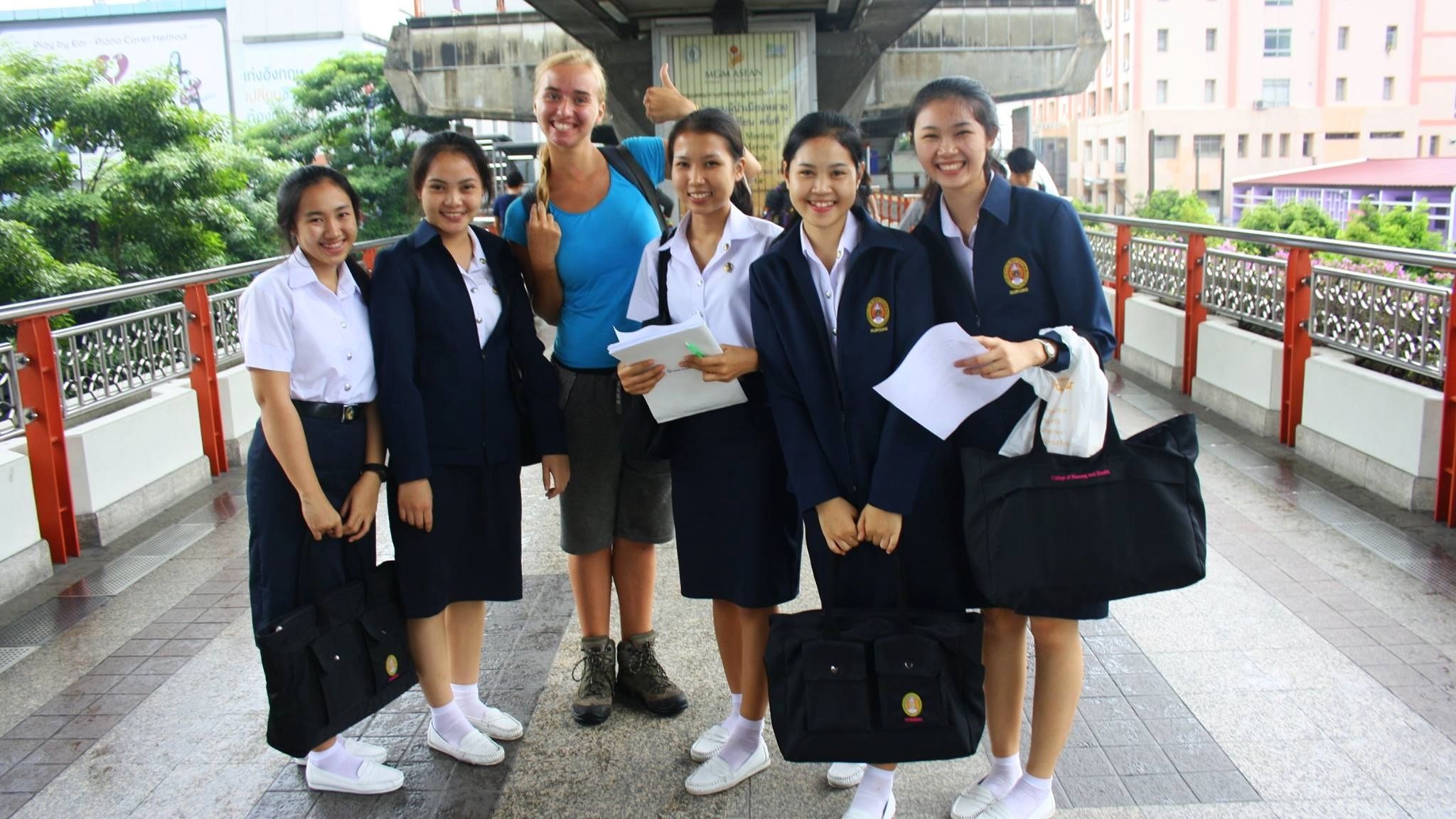
We stayed with a girl named Kantaja. The journey to her home was a full-day affair. The city, with its population of 10 million, boasts a well-developed public transport network, but understanding the system took time. It was fortunate that almost every elderly person, actively gesturing with their hands, expressed a desire to help.
The hostess welcomed us for two days. She said that it would take at least that much time to feel the city's spirit. She suggested visiting several sacred places that Bangkok is known for. Among those she mentioned, the Golden Mount Temple of Saket seemed the most appealing. In those curious times when I still used to watch television, I once saw it on a reality show. The participants competed to be the first to solve the puzzles given to them and follow clues to reach the top of the Golden Mount.
Coincidentally, the king of Thailand had recently passed away. Entrance to all the country's temples was free. The ticket seller acted as a guide, welcoming guests and briefly explaining the temple's traditions. Upon entering, guests leave their shoes at the door, and speak quietly, not disturbing those who want to concentrate. In the central chamber of the temple, incense was lit beside the sparkling golden Buddha statue.
The man shared a few interesting facts about the city. It turns out that the city was first called Bangkok by Europeans. The true name of the city is the City of Angels, the Magnificent City, the Eternal Jewel City, the Unconquerable City of God Indra's Great Capital, the Home of the Emerald Buddha, the Seat of the Devine, the City of the Kings, the Royal Dwelling, the Heavenly Abode of the Reincarnated God Indra, and the Built by Vishwakarma (the Divine Architect).
Having left the temple behind, our gaze turned toward a delicacies kiosk. The choice was vast: from crunchy crickets to well-marinated bugs. It was heard that these treats are so beloved by the Thai people that local production isn't sufficient, and they need to be imported from neighboring countries.
Logic suggested choosing the leanest: the fattier the creature, the more it can upset the stomach. Pointing at the oil-fried crickets, the vendor praised the selection, stating they are high in protein. Twelve pieces, the size of a matchbox, were acquired for 60 European cents.
Describing the taste is difficult. Somewhat reminiscent of charred chicken with certain seasonings. It was spicy, so not for everyone. Drenched in oil, making them quite filling. To be honest, it was the first and the last time I tried it.
Bangkok is not only famous for its sacred places and exotic delicacies. Many schools in the area are dedicated to teaching Muay Thai to young people. This Thai national martial art is also known as the "Art of Eight Limbs" because it employs strikes using fists, elbows, knees, and shins and includes bone-crushing blows.
Thais take pride in the fact that their country is the only one in Southeast Asia never been colonized by Europeans. Thailand, currently with a population of 67 million, ranks 20th in terms of population size globally, surpassing Lithuania's population density by 2.77 times.
Previously known as Siam, Thailand was the birthplace of the so-called Siamese cats, once regarded as royal animals. It was believed that after a member of the royal family died, their soul would pass on to the owner's pet. Kantaja mentioned that in modern times, it's customary to gift a Siamese cat to the bride on her wedding day, as it's believed to bring luck to the newlywed.
Ayutthaya
Established in 1350, Ayutthaya was the capital of the Ayutthaya Kingdom until 1767. During a military conflict with Burma, the city was destroyed, and out of the 2000 temples that once stood here, only a few remain today. The canals surrounding the entire old town attract travelers, and some of the sites are easily accessible by boat.
We decided to go from Bangkok to Ayutthaya by train, but I accidentally lost my ticket somewhere on the crowded platform. Perhaps it fell out of my pocket or I left it somewhere. The line at the ticket counter was long, and the train was about to leave so there was no time to buy a new one.
Some elderly lady advised us to take a seat, reassuring me that everything would be fine. When the ticket inspector asked for my ticket, the kind lady explained the situation. The man wished us a pleasant journey.
By our standards, traveling by train in Thailand seemed quite affordable. At that time two third-class tickets for a two-hour journey used to cost just a single Euro.
In Ayutthaya railway station we met a woman of our parents' age who offered us to stay at her cozy guest house. While showing us around the rooms, the lady mentioned that when she was younger, she visited almost half of Europe. She liked all those castles and cities, but she liked nature in Thailand the most. Also, she mentioned that the hot and humid climate here suits her better.
To us Lithuanians accustomed to coolness, it was the opposite. Such heat was hard to endure. Especially at times when it was hard to find a shady spot. It seemed better to endure the heat under the shade and set out on an expedition in the morning.
No matter how early we woke up, business folks woke up earlier. A middle-aged female guide was quick to introduce herself as soon as we left the guest house. I must admit that the range of the services she offered was pretty diverse. If you want, she’ll drive you in a tuk-tuk, or if you prefer, she’ll take you around by boat. Either way, during the process she'll not only tell interesting stories but also organize delicious breakfasts.
The woman was persistent and reluctantly gave in. She didn't immediately believe that we would go on foot. Distance between various sites was pretty big after all. We covered more than a dozen kilometers to see just a few of them. By the evening, our feet were sore, and our noses and ears gained a vivid redness, but the experiences outweighed every drop of sweat.
Wat Chaiwatthanaram Buddhist Temple
Wat Chaiwatthanaram, also known as the Temple of Long Reign and Glorious Era, was constructed back in 1630. Accessible by both road and boat, the central platform was surrounded by eight chapels. Although the temple once had a roof, when we came there was no trace of it remaining. Only the foundations have withstood the test of time, as this structural element was the longest-lasting.
In ancient times, the temple walls housed 120 Buddha sculptures, possibly painted in black and gold colors. It's said that they were used for certain rituals and important dignitary cremations. Some time ago, Wat Chaiwatthanaram was recognized as a UNESCO World Heritage Site.
Wat Maha That Temple
Wat Maha That, or the Temple of the Great Relic, stands right in the heart of Ayutthaya's ancient city. In ancient times, the temple was surrounded by moats and canals. The exact construction date is unclear, but there are several versions. Some royal documents claim that Wat Maha That was built by King Borommaracha, who ruled from 1370 to 1388.
For some time now, a symbol of Ayutthaya has been the head of a Buddha statue encased in tree roots near the Wat Maha temple. How a heavy stone head ended up there remains a mystery. Some historians believe it happened by chance, but that contradicts the saying that there are no accidents. Others suggest that around 1900, part of the temple collapsed, attracting looters. The thieves might have hidden the head in the roots intending to return for it.
Chiang Mai
The journey to Chiang Mai lasted the entire night. Despite the noisy atmosphere, the third-class compartment had its charm. Agile vendors hustled back and forth, offering local delicacies. In their baskets, you could find everything from roasted corn to vegetable stew with nuts. A bunch of children kept running back and forth until an elderly man in blue scolded them and instructed them to return to their families.
Traveling by bus seemed intriguing as well, but at that time, it didn't quite tempt us. Perhaps some stories on the internet played a role; according to them, some organized gangs specialized in stealing stuff from the backpacks of Westerners. They do it quite audaciously: in the luggage compartment, while the bus rumbles from city to city, as passengers peacefully snooze.
On the train, luggage is always over your head, but taking precautions doesn't hurt, so we secured our backpacks with a sturdy lock. Seated beside us was a delightful elderly lady, who smiled broadly, occasionally uttering a word or two. It was challenging to grasp unheard phrases spoken in the local dialect. No matter what you replied, she nodded as if she agreed all the time.
The train pulled in at dawn, a perfect time for a juicy watermelon. The best way to eat it? By taking big bites or using a spoon. In the early morning, there were few flies, so the dripping juices didn't attract them. After such a snack, the world looked even more beautiful.
On the way to the old town, vibrantly colored dragons adorned many homes. Dragons, perched on walls, doors, and fences, varied from barely noticeable flat silhouettes to intricately carved three-dimensional beings. It turns out, in Thai mythology, the dragon is a frequently encountered creature.
It's said that dragon bodies are composed of various parts of different creatures: the head of a chameleon, scales of a fish, horns of a great deer, body of a snake, and claws of a tiger. Add buffalo ears, rabbit eyes, and eagle claws, and you get a dragon. Most were golden, but some were painted in various colors.
Once we arrived at the old town, some kind of a festival was taking place and it seemed that Westerners were no less numerous than locals. Chiang Mai was rightfully called a haven for digital nomads. These are people whose work only requires a laptop or another electronic device: photographers, programmers, bloggers, various videographers, freelance translators, and similar professionals. Chiang Mai had lots of them.
The rectangular-shaped Chiang Mai old town is bordered by a canal and surrounded by a high brick wall erected seven centuries ago. It is said that in the past, it served a defensive function. All kinds of street artists gather near the main gates.
Keep in mind it was 2016. At that time the King of Thailand had just passed away and every once in a while a moment of silence was announced through the loudspeakers. Locals briefly paused their activities, bowed their heads, and dedicated this brief moment to honor the monarch.
A couple of times, we witnessed an interesting sight. Several Westerners, deeply concentrated into their smartphone screens, seemed oblivious to such moments.
According to various sources, Thailand is home to about a tenth of the world's animal species, and there are more bird species there than in all European countries combined. Those who appreciate tranquility avoid the cramped streets and prefer to head to the city's outskirts to visit the zoo so this was what we did the next day.
The zoo's grounds were divided according to world regions. To be honest, Asian elephants were magnificent. It's said that just over a hundred years ago, over 100,000 of these giants lived in Thailand. Currently, there are only a few thousand left, with about half living in captivity. The elephant is Thailand's national animal.
Different climate peculiarities in various regions ensure conditions for the thriving of 176 snake species. In this country, you'll find everything from pythons to cobras and vipers. Not the friendliest neighbors for those who enjoy camping in the woods. Tigers and leopards are also found, but they are very rare.
Thailand boasts over 100 national parks. One of the most famous is Doi Inthanon, located around 100 km from Chiang Mai. It is renowned for being the country's highest peak and home to tribes that have retained some of their traditions. Youngsters come here to see the waterfalls and forests covered with orchids.
Chiang Mai was our home for a few days. The visa allowed us to stay in the country for two weeks, so we couldn't linger too long. Following the same route, we returned to Bangkok and from there, through towns and villages, headed south. It was time to revive my skills of hitchhiking and hitchhike across the mainland part of Malaysia.
Malaysia
Malaysia – a country that the Greco-Roman geographer Ptolemy named the Golden Chersonese (Peninsula) in his work "Geography." The current territory of Malaysia could be divided into two main regions: Peninsular Malaysia, situated on the Malay Peninsula, and East Malaysia, which occupies part of the island of Borneo.
It is said that the so-called Malays make up just over half of Malaysia's population. In the 13 states, numerous ethnic groups with different traditions and customs live. Cars registered in different states are marked with specific numbers that indicate the territory. This comes in handy when hitchhiking.
A good start is half the work, and the first step is choosing the direction. We received an invitation from a Lithuanian family living in Singapore. Upon receiving the invitation, we decided to travel south through Peninsular Malaysia. The distance from the Thailand border to Singapore was a thousand kilometers, and the nearest significant stop was Kuala Lumpur.
It's joked that the friendliest people in the world live in Malaysia. This is because the average Malaysian citizen has more "friends" on social networks than the average citizen of any other country. Based on this indicator, Malaysians are at the top. Of course, this may not necessarily reflect true friendliness.
Hitchhiking went well. Most memorable was the encounter with a man who traded in agricultural fertilizers, herbicides, pesticides, and other stuff used in inorganic farming. He tried to warn us that hitchhiking was not very safe and it was particularly challenging to convince the gentleman that after hitchhiking a hundred times over the past few months without getting into trouble, most likely we would also manage to do it on the hundred first try.
The tune was the same as in every country before. It revolved around keywords like "It's hard in Malaysia," "It's impossible," "It could be dangerous," and so forth. He suggested it might be a bit more reassuring for him if we said our goodbyes not somewhere on a remote roadside but at the bus station, where we could catch a comfortable bus.
We agreed to discuss it later. The stomach was singing the most mournful songs. With a partly loaded SUV, we drove to the driver's favorite roadside restaurant. On our first visit to Malaysia, we asked the waiter to bring something traditional in that particular region.
We started with a peculiar dessert called Ais Kacang, also known as ABC. Despite its intriguing name, ABC was simply shaved ice with beans, nuts, and some other ingredients. If memory serves, the second dish we ordered was a bit less surprising in terms of ingredient combination. Perhaps that's why the name didn't stick in my mind.
We bid farewell near the center of Sungai Patani, where a small festival was taking place. As the sun was already setting, it seemed wise to find a budget-friendly place to rest. Almost ironically, a hotel sign lit up on one of the apartment-like buildings, and a man smoking a pipe by the entrance gestured to come inside.
The next day's journey through the mainland part of Malaysia went like a breeze. Could we have handled some situations better or wiser? Probably, but any mishaps, seeming unpleasant at the time, seemed to have only as much power as a drop of rain on a greasy goose's feathers.
We spent the next night in the jungle. When I think about it now it was not the brightest idea as the jungle in Malaysia is full of all kinds of wildlife, but for some reason, we felt invincible.
I woke up first and ventured into the jungle. I noticed that on the path I walked barefoot the night before, there was a skeleton of some spiny animal. Moreover, after a few months, I learned that in the same region where we pitched our tent, several decades ago, the largest royal cobra recorded in the last century, measuring 5.54 meters, was caught.
Kuala Lumpur
Kuala Lumpur, or KL, is home to approximately 1.7 million people. Achieving city status only in 1972, it is now one of the fastest-growing metropolises globally. Kuala Lumpur's symbol is the Petronas Twin Towers, which were claimed to be the tallest buildings in the world from 1998 to 2004.
When we arrived in KL, there was free public transport in the city center aimed at promoting tourism, with stations located near famous attractions such as parks, museums, shopping centers, and architectural landmarks. However, there were relatively few ancient monuments, as modern architecture dominates the skyline.
We stayed with Ben, a Nigerian man who came to Kuala Lumpur as a student seeking a better life. His vibrant spirit, African accent, and love for rhythmic music hinted at his southern roots. During dinner, I noticed that we had not only differences but also similarities. Both of us would consistently sit in the same spot at our favorite restaurants and order the same dish each time.
"We should reflect on this," said Ben while smiling. "Every habit is a small prison."
The next day, Ben took us to Port Dickson. Established two hundred years ago, the town served as a popular holiday spot for residents of nearby areas. Swimming was possible, but the water was not that refreshing as it was pretty warm. Malaysia is a Muslim country, and specific traditions and rules are in place. Like local women, Kamile went swimming in her clothes.
Out of the blue, two Uzbek men whom we met on the beech introduced themselves. Upon learning about our origins, they invited us for lunch. Grilled shashlik - their national dish, was delicious.
Soon we were joined by the third guy. Men said he was a fellow Uzbek and called him their "gunbearer". He was a first-year student from Uzbekistan whom they had hired as their driver and guide for the duration of their stay.
Long story short, meeting these guys was a fun experience. Thank you guys for the good company! In the evening they went to their hotel while Kamile and I found a remote spot on the beach to spend the night in a tent.
Melaka
At midnight, an odd feeling woke me up. I opened my eyes and for a while, I thought it might have been a dream, but gradually the sound got closer and closer. Eventually, I realized the tent was getting wet, and the salty smell of the water was nearby. Glancing outside confirmed the intuition.
The water level rose so high that it reached our tent. I woke up Kamile, who was deeply asleep and we gathered our gear and went to a safer place away from the flood. As we couldn't fall asleep for the second time, we spent the remaining hours of the night listening to the sound of the waves.
It turns out that the water in the strait of Melaka, as quick as it rises, recedes just as fast, leaving behind only firmly soaked sand and a few crab-dug burrows. The night flood seemed to have washed away some of the heat, as the early morning was nice and fresh.
Once we got back to the road, a kind woman gave us a lift. It was hard to explain that we were hitchhiking by choice, not need. She said that if it weren't for her, we would not have received help. The road is not well-known, and according to her, the locals are a bit closed off. If only someone gave us a cent every time we heard such a story, we'd have a couple of euros.
Two of the drivers were Indians, while the other two were from China. Malaysia is home to many cultures. People from different backgrounds coexist as neighbors. The modes of transport varied too. Once, we traveled with four people in a truck cabin meant for two. When the driver needed to change gears, we all had to squeeze together to make some space.
Once we arrived in Melaka we stayed with a guy who worked nights at a butchery and slept during the day. Sadly, we didn't have a chance to ask many questions or ask to show the city so we explored the surroundings ourselves. For centuries, Melaka was an important port city. Only in recent decades has it faced competition from the rapidly developing Singapore.
Batu Pahat
"Can we take a selfie?" asked Sayed. "My wife would like to have something for memory."
Sayed and his wife pleasantly surprised us. Despite promising to give us a lift to the main road, they drove us to the next town that was several kilometers away. This detour from their route cost them an hour of their time since their own home was on the opposite direction. According to Sayed, when he was our age, hitchhiking was common. Nowadays, young people believe it's unsafe.
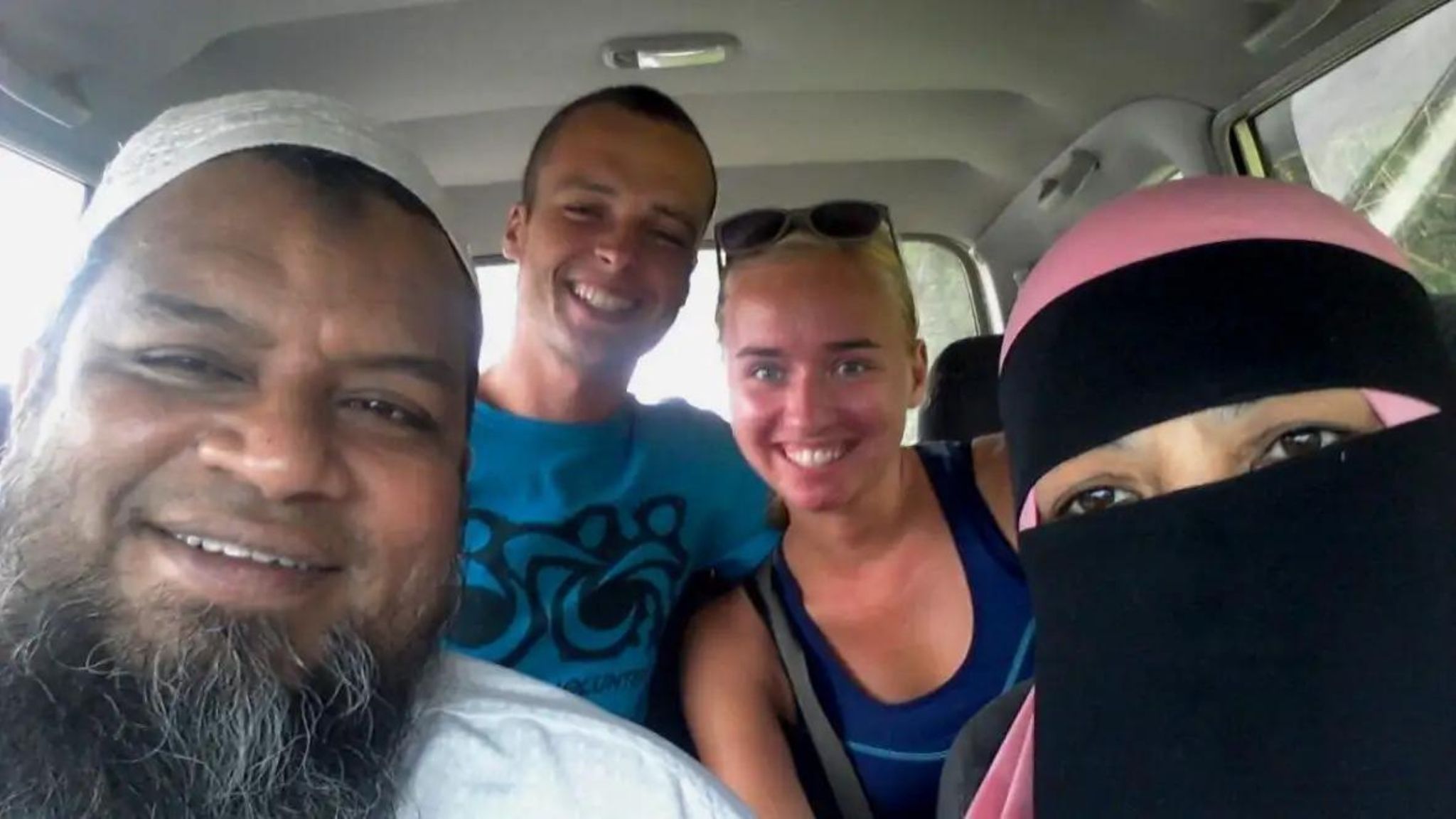
Batu Pahat is the sixteenth most populous city in Malaysia. Upon our arrival, Amir, a young lawyer living in the suburbs with his family, was waiting for us at the restaurant. As it later turned out, every other neighbor in Amir's neighbourhud was his uncle or cousin. All thanks to a large family tree.
We weren’t the only guests staying with Amir and his parents. Daria and Oleksiy were two travelers from Ukraine. They left their homeland eight months ago. According to them, they've visited many countries and met many people, but, Amir's mother Juriah, was special as she warmly welcomed them as if they were her own children.
The next day, our hosts organized an impressive tour. They introduced us to local businesses and shared stories about traditions. Amir's family turned out to have involvement in the wedding planning business. Malay weddings are grand and luxurious. They were pros at this, so their business thrived.
Amir's mother Juriah explained, "Our weddings are big. We invite everyone, from close relatives to distant neighbors. There are cases where the number of guests exceeds two thousand. People say that more witnesses make the vows stronger. They give the young family strength. Weddings that have only a few hundred guests are considered modest."
When it comes to Malay marriage, parental approval is crucial. Parents have a lot of life experience. They don't allow hasty unions based solely on passion. According to the elders, there's no weaker chair than the one-legged one. The young ones may not grasp everything at once. But, they respect their parents' advice.
Singapore
Singaporean border officer invited us to enter some kind of a capsule. He said he needed to measure our temperature. He wanted to make sure we were not carrying any mysterious illness. Singapore is a city-state located on a small island. The rules were strict, and those who were ill were unwelcome.
After a few minutes, our jam-packed bus crossed the imaginary border separating states. Seeking advice on how to make the most of our time, we asked Lithuanians living in Singapore for help. Who would have thought that there would be so many of them in such a distant country? Lithuanians Žygimantas and Gerda warmly welcomed us at their home. This was what they wrote:
"Hello, Kamile and Tautvydas. We've been reading your travel blog. It would be fascinating to hear about your journey because we traveled around Asia ourselves four years ago. We live in Serangoon".
The first thing that cought your eye was the pristine cleanliness. Some might say it was almost unnatural and artificial. Skyscrapers filled the streets. They seem like part of a computer simulation with the usual traits of a virtual world.
Back in 2016 Singapore was renowned for its intricate rules and penalties. It might be not much has changed since then. Some claim such rules maintain discipline. Others think they are a tool to ignite the imagination of tourists. The truth probably lies somewhere in between.
One of the most famous is the chewing gum law. It bans not only selling the product but also bringing it into the country. In public transport, warnings about fines for littering hang wherever you look.
Dropping a piece of paper leads to a fine of several hundred to a thousand dollars. It is said that dropping a glass bottle could land you in even more trouble. How does it work in practice? Only locals know.
Tall residential buildings of exceptional layouts surrounded the courtyard with a pool. The Lithuanians resided on the top floor. Ona, their daughter, along with her father and mother, welcomed us at the door. It was pleasant to converse in Lithuanian after several long months on the road.
We were invited to sit at the Eastern-style table. The hostess presented black Lithuanian bread. For most of you it might be difficult to understand, but for us it was the taste of home. Žygimantas and Gerda explained they received the parcel from their parents. As their parents put it, if the children don't come home, then home (in form of bread) must travel to the children.
The conversation shifted to the Singaporeans' way of life, their deeply rooted customs and accepted local norms. Gerda told us a story how their daughter Ona wanted to draw something on the sidewalk with white chalk. To the neighbors, it seemed like a criminal act. "Who is going to whash it?" they asked. Lithuania it is pretty normal as the chalk easily gets washed away by the first rain. Yet, in Singapore it was unacceptable.
Every country and city has certain monuments that are well known around the world. One of the youngest symbols of Singapore is the lion's head with a fish body. According to Gerda, the authorities thought for a long time on how to further promote tourism. They came up with something new. In her opinion, the sculpture's builders made up a story. The story claimed that this symbol has existed since ancient times.
"Gardens by the Bay" is another iconic human creation occupying a 101-hectare area. 170 companies from 24 countries wanted to help make this park. Visitors don’t miss the chance to visit this famous park. It has artificial trees, a dome of flowers, and the so-called skyway.
The Marina Bay Sands hotel is one of the most famous architectural landmarks in Singapore. It is made from three 200-meter towers holding a huge gondola. At the top lies a pool, terrace, and green gardens covering 12,400 square meters.
It is important to mention that referring to Singapore as an island country is at least not very accurate. In fact, Singapore consists of 63 islands of various sizes. Some of these islands are inhabited, while others are not, but each has its own uniqueness. The smallest of Singapore's islands measures only 0.1 hectares.
The majority of Singapore's population consists of ethnic Chinese. According to official data, they make up about three-quarters of Singapore's residents. The country is also home to significant Malay and Indian communities. Over the years, due to this ethnic diversity, phenomena such as the so-called 'Singlish' have evolved. Essentially it is English mixed with certain distinctive Singaporean elements.
After spending some time with our Lithuanian friends and getting to know the city, it was time for a challenge of much larger extent. We returned to Melaka via the shortest route possible. There, we boarded the ferry to Sumatra Island. Good Bye Singapore and Malaysia! Hello Indonesia!
Indonesia
The journey to Sumatra went smoothly. One might even say it was a bit boring. Packed like sardines in a can, we patiently waited for the ferry to reach the shores of the island. In the dark cabin, the passengers' eyes longed for sunlight. As soon as the ferry docked in Dumai, cheerful applause broke out.
A stern officer checked our passports and whispered something to his colleague. Finally, raising an eyebrow, he stamped the passport, stating that the visa was valid for exactly a month. Much or little – it depends on how you look at it. The mapped route led across three islands: Sumatra, Java, and Bali. Around 2,500 kilometers in total.
"12,000 rupiahs," muttered the vendor when asked about the cost of a hearty lunch. We headed to an outdoor eatery, locally referred to as a restaurant.
The number is large, but in total, it's just three-quarters of a euro. Boiled noodles drowning in spicy soup a well-cooked egg, with a bright yellow yolk. Served on a plastic plate, along with a slightly bent fork.
The bus station was quite like the ones we're used to in Lithuania. It was more of a parking lot with private, perhaps even rented, a few decades old mini busses. The man who suggested us going there, most likely, got some commission for bringing in customers.
After clarifying all the details, we walked away from the station as we wanted to explore some alternatives, when suddenly, out of nowhere, a man arrived with his wife on a small motorcycle. He walked straight toward us and addressed us as if we were old acquaintances. It turned out he was Mr. Muchsin - English teacher and owner of "Grand English Course" language school.
A close friend had informed the teacher about unseen foreigners, so he hurried over and, without further ado, offered us accommodation as if his life depended on it. In return, he asked for a favor - to meet a few groups of his students and spend a few hours together. According to him, interacting with foreigners is the best way for young people to improve their English skills.
Without a doubt, we agreed, and within a few minutes, we found ourselves settling in a spacious room. The thick guestbook of the school gleamed with European names: French, German, and even our neighboring Polish. It was only after a few months that I found out how well Mr. Muchsin is known in a certain circle of seasoned travelers around Indonesia.
The day passed in a blink of an eye. Our meeting with the Mr. Muchsin's students etched itself into memory as a meaningful and laughter-filled experience. All three groups were of very different ages, so the topics naturally varied. The oldest group were high school seniors.
The next day, Mr. Muchsin regretted that we couldn't stay longer. We explained our situation, and after a long farewell, we were seated in a minibus that transported passengers to the outskirts. The teacher absolutely refused to let us pay for the trip and covered the fare himself. As the car started moving, we waved one last time through a tiny window.
Once outside the city, we disembarked on the roadside outside. A large backpack served as the best stool whenever some rest and plan the next step was needed. We decided to travel to Pekanbaru.
The first car stopped and the driver straightforwardly offered a ride for the price higher than one would pay for a taxi. As we narrated our travel style and described why we had to refuse, the driver seemed very unhappy. Soon he drove away.
Similar thing happened with the next driver. Both he and women sitting in the backseat tried to convince us that in Indonesia, only taxis are safe. They expressed surprise that hitchhiking in Europe was legal.
It seemed like we were not doing so well, when a friendly looking man and his wife appeared as if they were a beam of sunshine on a stormy day. The man explained that the first time they drove past us, his wife urged him to turn back. Briefly outlining their planned route, they took us all the way to Pekanbaru.
Two and a half hours on the road passed very quickly. During that time, we managed to contact some local students on Couchsurfing.com. Upon arriving at the capital of the Riau province, the girls were already waiting at the agreed spot near the University dormitory. We thanked the driver and his kind wife and exchanged final words of farewell.
For lunch, friendly girls took us to a cozy street restaurant. The girl with whom we intended to stay regretfully informed us that due to an unforeseen situation, she couldn't accommodate us. However, according to her we were offered accommodation by her University teacher - a fairly young man who happened to enjoy spending a lot of time with adventure seekers from all around the world.
The teacher lived in a private housing estate. After settling in and briefly acquainting ourselves with the surroundings, we all met again in the city center. Both the girls and their teacher were surprised that we didn't have that many street food stalls in Lithuania. Guys found it hard to imagine how we could live in such difficult conditions.
The visit passed pleasantly, as it always does when people with similar senses of humor come together. However, at that time, I looked at the teacher a bit suspiciously, I confess, perhaps out of envy for his charisma. He seemed to have cought that look, probably being a man with a well-rounded intuition.
"I recognize that look," said the teacher. "Some of my male students have the same expression."
Thanks to our host and his students, our stay in Pekanbaru was a very pleasant experience. (I wonder what all of those guys are doing now, many years later). Over the next few days, the journey led us to Bukittinggi and Padang, and then further south, across Sumatra, to the very tip of the island.
In Padang, the newlyweds whose humble yet very cozy home we stayed in suggested choosing a route along the coast of the Indian Ocean, as the route that went through the center of the island was known for bandits, called "land pirates." So we did.
One day proved to be particularly difficult. Hitchhiking didn't go that well. The climate, typical for the region but unusual for us, didn't help either. The heat and exhaustion took their toll. Yet, amidst this harsh atmosphere, we met one man who was like a ray of sunshine on a cloudy day. It was Mr. Jusmar.
The man, offering us a ride happened to be the school principal, on his journey home. The teacher exuded inner calmness and confidence, graciously sharing it with us. Not only took us to a favorite roadside restaurant but also invited us to be his guests at his home.
To be honest, it was uncomfortable to accept the offer, as after a long journey, we were all sweaty and (if I recall well) didn't even have that many clean clothes to change (:D), but finding accommodation elsewhere at such a late hour would have been difficult. Not to mention camping in a tent in the wilds of Sumatra.
The teacher's home emanated perfect order and luxury. Many months later, while admiring several photographs with my close friend, he noted that such an atmosphere at home could only exist with an incredible woman. Indeed, it was a great pleasure to meet both Mr. Jusmar and his wife.
The next day Mr. Jusmar invited us to his school. Led by the principal and another teacher, we visited all the classrooms and met all the students. To be honest, getting lost was impossible because, unlike in our schools, the buildings were arranged in an arch shape. No stairs or confusing corridors.
Our visit was a kind of a rare event for the students too. Teachers mentioned that for some of them, it was the first time they had seen a foreigner in person. While sipping tea with charming young teachers and having an interesting conversation, some of the kids observed this meeting of the representatives from two different cultures from a distance.
As the visit was coming to an end, the youngsters became more comfortable. It was time for selfies, which later appeared on social media, thanks to our young friends. In one of those photos I, 6'4" or 194cm tall guy, was standing by quite a bit shorter local 18-year-old student. Someone jokingly captioned this photo "#humanerror". (:D)
Java island
To sum it up, hitchhiking in Sumatra was challenging. It was often hard to explain what our goal was and why we were traveling this way. Some thought we were nuts. However, more often than not, after hours on the road together, upon realizing how far this long road had taken us from home, locals bid farewell with the same words: "We want to be part of this story." Thank you all!
Our time in Indonesia was limited by our 1-month visa. To make things a bit quicker and, at the same time, try something new, we finished the last part of the trip toward the ferry in a paid passenger car with a group of locals. The next destination was Java island, which in the work "Geographia" by the Greek-Roman geographer Ptolemy, was referred to as the "Island of Millet."
For some reason, officers at the ferry port thought our visas had expired two weeks earlier. That caused some trouble. Eventually, it was clarified that the stamp marking our entry date was misinterpreted as the expiry date of the visa. A short ferry trip later, we were finally in Java.
The journey to the capital Jakarta, with an overnight stay in Cilegon City, took a couple of days. Jakarta was a true metropolis. Officially home to about 10 million inhabitants, with twice as many living in the suburbs, it was one of the largest cities we had visited so far. The closest ones were probably Istanbul and Tehran.
In Jakarta we stayed with a girl who lived with her parents. We spent some time with the girl, but the main task was to take care of the formalities. This included deciding where to travel next and buying plane tickets. Since we came up with an idea to go to Asutralia, we also needed to fill the e-visa request form.
There was one flight From Bali to Perth on Christmas morning. To our surprise, the price of the ticket was only 20EUR. If we wanted to buy tickets for a later date, they would have been 10-15 times more expensive. As quickly as we could we bought tickets and filled the form for e-visa.
To our surprise, I received my electronic visa within 30 minutes, while Kamile didn't receive it at all. Reasons were unclear. The flight was about two weeks away so we hoped for the visa to be ready by the time we reach Bali. Since Java Island had a well-developed railway network, traveling by train seemed the best option.
In couple of days we arrived in Jogjakarta City, the Special Region of Yogyakarta. Two sisters whom we contacted in Couchsurfing.com were already waiting by the Railway station door, both riding powerful motorcycles. Carrying backpacks on our shoulders, we sat on their steel horses, and they slowly started moving.
At home, a crowd of brothers, sisters, and other relatives were waiting by the entrance. Dinner was already on the table. To be honest these guys must have been some of the warmest people in the whole wide world. For the next few days, this was our home.
Borobudur Temple
The island of Java showcases unique attractions not found elsewhere. Among these are natural wonders like the Javan slow loris, exclusively native to Java, with reportedly only a few dozen remaining. Additionally, the island boasts extraordinary architectural marvels.
One such marvel is the Borobudur Temple, ranking as the third-largest temple globally, trailing only the Karnak Temple in Egypt and Angkor Wat in Cambodia in size. Sometimes a video is better than a thousand words, so see it by yourselves.
Mount Bromo
It happened for the first time. On the train to Probolinggo, I started feeling nauseous, and chills ran down my spine. When I disembarked at the train station, my vision dimmed, and weakness overcame me to the point where I could barely carry my backpack
At that moment, I was entirely dependent on Kamile, who swiftly arranged a couple of bike-drawn "carriages" and ensured we were urgently taken to the nearest guesthouse. Struggling, I climbed to the second floor and dropped my backpack in the corner and went directly to bed. My body temperature was around 39 degrees Celsius.
I spent the entire following day lying in bed, and Kamile continued supplying me with hot tea. I couldn't eat anything because my body had enough to deal with already. Towards the evening, things slowly started to improve. My recovery was aided by Kamile's care and the powder mix for "rehydrating lost fluids" that her brother Augustinas gave us before the journey.
Oddly enough, by the morning of the third day, I felt as if nothing had happened. I was full of energy and eager to embark on adventures. For the first time in a while, I ate something from the hotel menu. We were finally ready to visit Mount Bromo.
Cemoro Lawang is a town located near the Bromo volcano. There were several minibusses that ran from Probolinggo to Cemoro Lawang several times a day. The driver arrivesstarts the engine only when the minibus is full. If you're the first one to come, you might have to wait for a long time. A couple from Portugal mentioned they had waited for more than two hours.
Getting to know the Portuguese couple was quite interesting. It all happened on December 18th, exactly six months since the start of our journey. Upon finding out the date, the Portuguese began whispering to each other and counting on their fingers. Then, they turned to us and stated that they had also started their journey on the same day, which meant it was also the halfway point of their trip.
Cemoro Lawang greeted us with a breath of fresh air. The climate changed as we ascended to 2.2 kilometers above sea level. We decided to stay at the same guesthouse as the Portuguese couple. Settling into the cramped rooms, we all gathered at a restaurant, if one could call it like that. It was more like a small tea table with four plastic kindergarten chairs.
We couldn't stay up late as we had to wake up at 3:00 in the morning. The locals warned us that the volcano was very active, emitting acidic gases from its depths. The solution was to hike up the nearby mountain and await the sunrise while looking at Mount Bromo from the observation deck.
As we ascended, the morning mist thickened even further. Upon reaching the plateau, visibility reduced to just a few meters. Tea vendors hinted that the situation might not improve anytime soon, suggesting we might not see Mount Bromo unless we returned the next day.
Despite the conditions, someone suggested taking pictures, and we agreed. We decided to take a foto with the Portuguese couple. As we posed, the photographer's eyes widened. At that precise moment, the fog cleared, revealing a magnificent view behind us. Finally, we saw Mount Bromo, with dozens of jeeps heading towards it, all filled with tourists.
Bromo is one of the most famous, but certainly not the only volcano on the island of Java. It's no wonder why they say Indonesia has the most volcanoes in the world. After a day's hike, we returned to the village and prepared for the journey back to Probolinggo. From there, the Portuguese intended to travel to another, lesser-known volcano, while our next destination was supposed to be Bali.
Bali
In ancient times, almost every island in present-day Indonesia had its own kingdom, and some had more than one. It's said that for centuries, Hinduism was the main religion on these islands. However, over the years, Islam displaced this culture, and the remaining Hindu practitioners migrated to Bali, where they preserved it to this day.
The ferry from Java to Bali departed early in the morning. Before boarding, we traditionally paid a "foolishness" fee when we agreed to be taken by a tuk-tuk for about a hundred meters. When the driver said, "We're already here," the absurdity of the situation seemed so intense that I couldn't hold the laughter.
Bali island was only 3.5 kilometers away from Java. The journey by ferry was short but had its charm. Initially, the landscape didn't differ that much from neighboring Islands.
Truth be told, the beaches, at least the ones I've seen, seemed somewhat dull. Perhaps it's due to the volcanic sand. I believe there were more beautiful ones, but finding them required a scooter or a motorcycle. Denpasar beach appeared the least appealing.
The first task upon arriving in Bali was to find the Australian embassy located in Denpasar. The flight to Australia was only a few days away, and still, there was no news about Kamile's visa.
During those days, the sun was scorching, and the streets were filled with Australians whose skin was painfully reddened from sunburns. To be honest, that looked super painful.
The embassy staff patiently explained that we had ordered the visa online, not through the embassy, so they couldn't assist us. They advised us to wait, but we had little time left. The permission to stay in Indonesia was about to expire.

Two days before Christmas, a decision had to be made. Kamile proposed a plan: on Christmas Day, I would fly to Australia solo, while she simultaneously returned to Malaysia to stay in Batu Pahat with our friend Amir and his family. Once her visa was ready, she would join me in Australia. In the meantime, I would aim to find a job for both of us.
The prospect of parting ways unsettled us deeply. We embraced each other for a full hour, grappling with our emotions. Eventually, we resolved to dispel our doubts and move into the preparation phase. This involved relocating to a room closer to Denpasar airport and shedding some excess items to lighten our luggage.
The day finally arrived. Rising at four in the morning, we set out for the airport, reminiscing about the past six months and speculating on where each of us would welcome the New Year.
Australia
Perth is the largest city in Western Australia. It's home to approximately 1.94 million people, making it the fifth-largest city on the continent. One of Perth's notable features is probably being one of the most isolated cities in the world. The nearest major city is Adelaide, which is over 2200 km away.
During the flight, I tasted a steak with salad – the "most Western" dish I've had in the past few months. With the first few bites, my heart was filled with joy, and that deliciousness didn't leave me even after the 2.5-hour flight from Denpasar to Perth.
At the immigration checkpoint, it seemed suspicious to the officer that I didn't have a return ticket. My explanation that I intended to improvise only heightened his suspicions. Seeing things going in an unexpected direction, I firmly stated that I arrived for two weeks, and during that time, I would buy the cheapest tickets available.
That statement seemed "appropriate" enough, so all that was left to do was to provide proof that I had enough savings for a two-week visit to a relatively expensive country. This demand wasn't unexpected, so I pulled out a bank statement printed in Bali, stating that I had over 3000 euros.
Perth is Perfect
To make the statement look more solid, my dad helped by temporarily lending me some money until I printed it. At the time, it seemed like a good solution. Such caution from Australians is related to the fact that thousands of "tourists" come to Australia every year, find ways to settle where there's a lower chance of getting "on the radar" and stay even after their visa expires.
The officer smiled and wished me a good trip and called me "mate", as is customary in Australia. During my stay in Australia I even heard a joke related to "mate". Something about the May 8th (pronounced similarly to "mate") being declared Australia's national holiday.
"Perth is perfect," said a Polish guy whom I met at the hostel. Since thousands of backpackers arrive in the country, and the local youth are also constantly on the move, the hostel culture in Australia is highly developed.
Sometimes, countries that at first glance seem the most expensive in reality can be the cheapest. Especially if they have hostels offering dorm-style rooms and large shopping centers where you can always find food even on the modest budget.
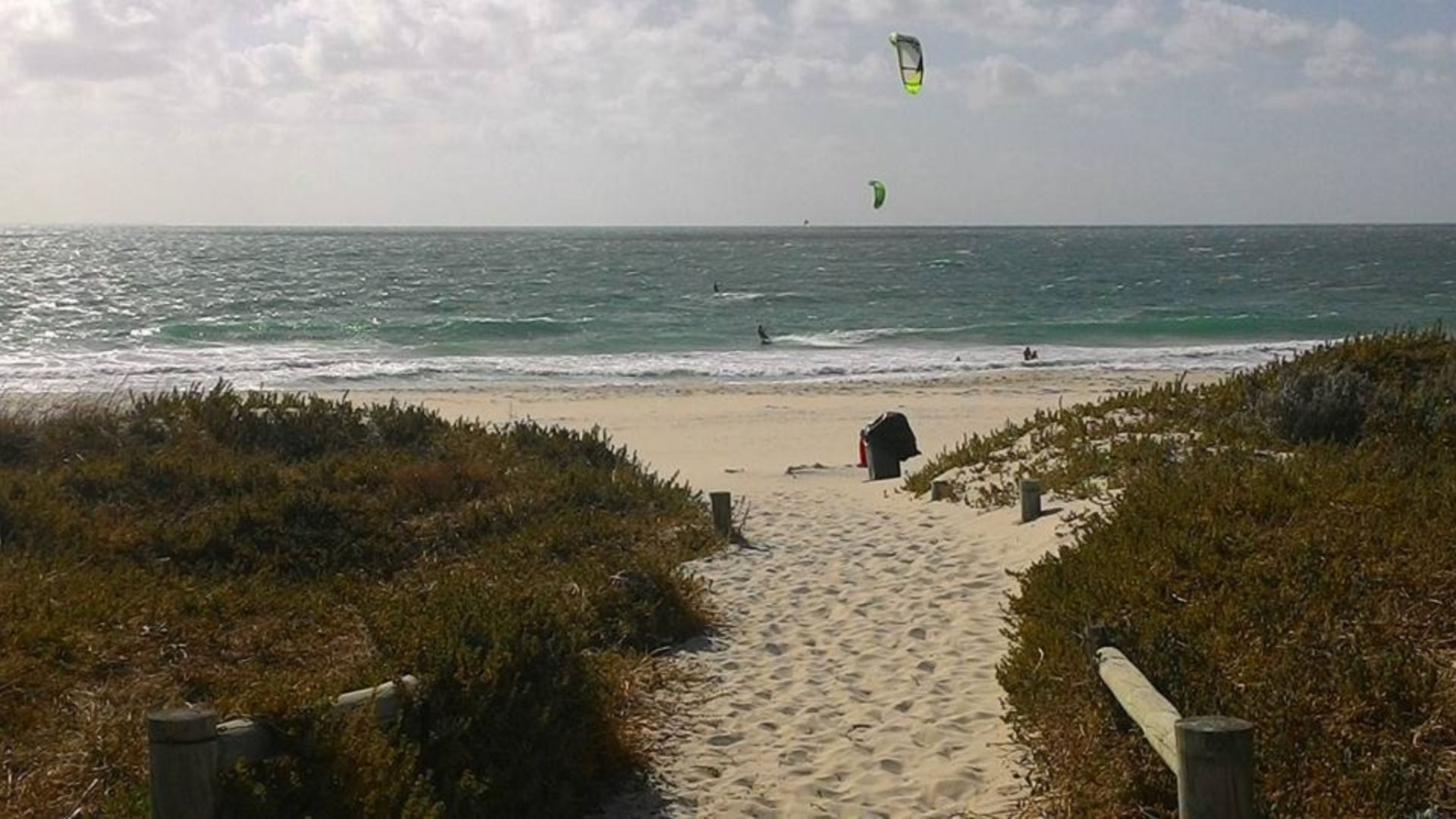
My Christmas in Australia
On the second day of Christmas I decided to go on a tour. Strolling along the banks of the Swan River and swimming in the ocean was all that I wanted to do on this beautiful day. I equipped myself with a phone that I bought in Malaysia and an external battery I got in Indonesia and early in the morning, I set off on an adventure.
The journey began and ended at the Wombat hostel. The route traced around the widening of the Swan River, which looked more like a lake than a stretch of the river. I chose such a route because during such long hikes I do not like to walk the same path twice. A 36-kilometer walk took me to meticulously manicured riverbanks and tiny Heirisson Island, the Indian Ocean coastline and a few stunning parks.
After a couple of days, when the hike soreness subsided, it was time for the next adventure - getting to know the locals. Through Couchsurfing.org, I managed to contact three Australians who agreed to host me for one or several nights.
The first would have given me the keys to his brother's apartment. Unfortunately it was in a very inconvenient location. The second was an older man with 300 reviews on his profile, half of which were good and the other half a bit gloomy.
Finally, I decided to head to the outskirts of Perth. A Singaporean-Australian named Jamie Kho hosted me for two days. During this time we visited a nature reserve and a few coastal towns.
It is not a secret that I'm not a fan of taking selfies. This was why I asked Jamie to take a picture of me so that I'd have at least one visual proof I was in Australia. Later I compared it with another photo taken in Poland during the first days of the trip. Even I was surprized to see the difference. It later turned out I lost 15 kg in half a year.
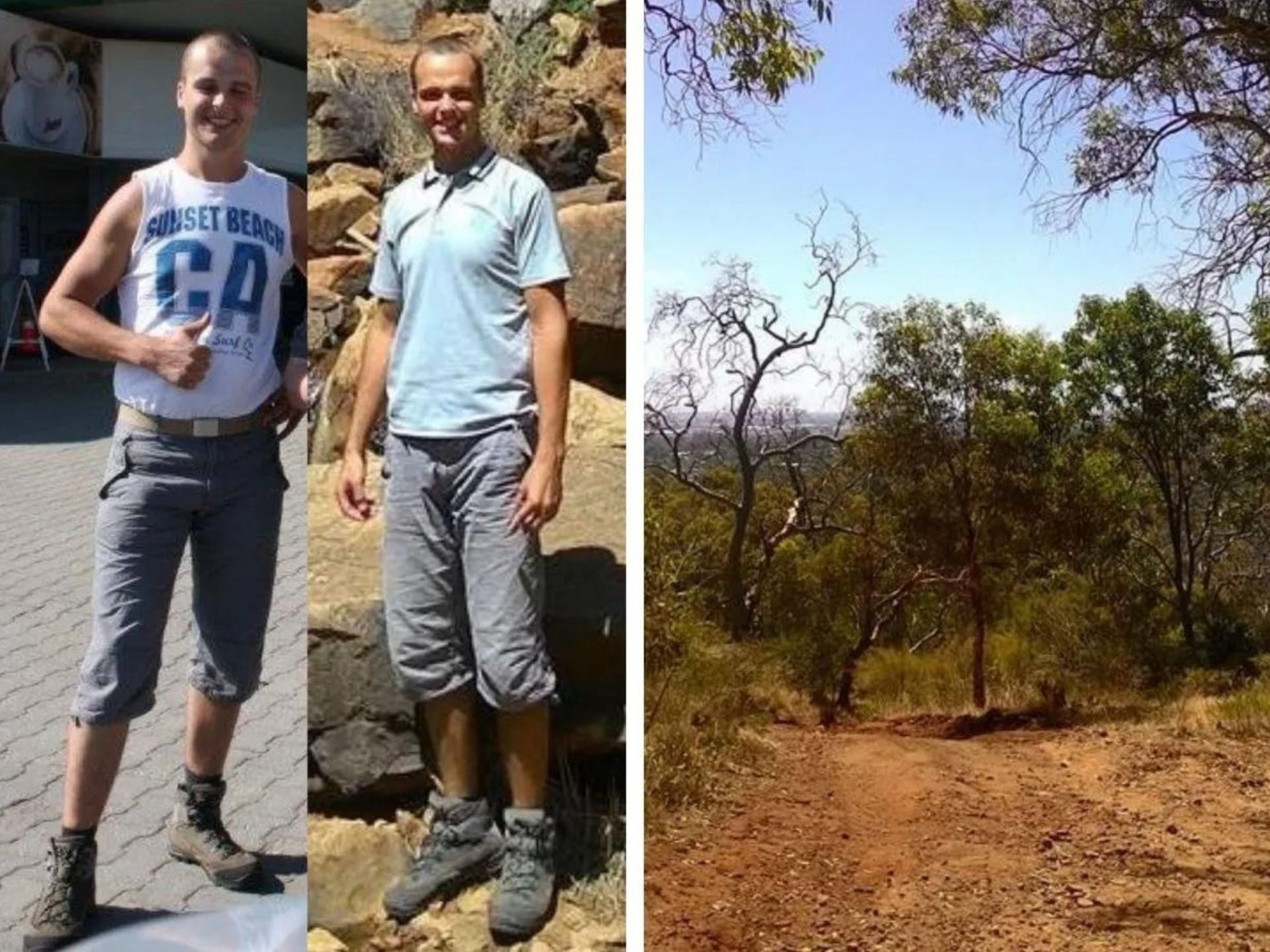
New Year's Eve
From what I saw in the streets, the New Year's Eve in Perth differed little from what you'd see in Vilnius or other cities in our region. Girls' high heels were just as high, and their dresses were just as tight and blood constricting.
I took a chance to take a quiet walk. Great time to think about all the good things that happened in the past year. There was a lot to think about and be thankful for. Also, it seemed a good time to make some plans for the near future.
What a pity that at that moment Kamile and I couldn't be together but sometimes it is how it is. There was still no news about Kamile's visa. Letters and calls to the institutions yielded little. It wasn't clear what obstacles affected the visa issuance process. They said that waiting patiently was all we could do.
After the holiday period, through the HelpX.net platform, I contacted Daniel. He was a farmer living near the town of Denmark, located 420 km south of Perth. We agreed that in exchange for a few hours of help on the farm each day, I would receive accommodation and meals. Also, it seemed like a very good way to spend some time with some real Australians (not those city boys). :D
![Western Australia [1/5]](https://img.truvvle.com/?src=aHR0cHM6Ly9pbWcudHJhdmVsZmVlZC5pby9pbnZpc3VzbXVuZGklMkYyMDIzLTExLTIzLTA3LTExLTc0NS0yNzUtanBn&width=3840)
The opportunity to live with Australian family and for a few weeks stay at one place seemed like a gift from above. Among other things, Daniel offered to pay for the bus ticket, but I had to decline as I was eager to try hitchhiking.
I took a train to get out of Perth early in the morning and then walked to the main road. Luckily, as soon as I put my thumb out, a girl who was heading to Denmark stopped. Who would have thought I'd cover all 400 kilometers without changing rides?
The driver was a 27-year-old yoga instructor who had just returned from a six-month trip to India. She was traveling to Denmark town to visit a close friend. On that day in Perth, the temperature was 42°C. I escaped the heat just in time.
In Denmark, I was greeted by Daniel's wife, Simone, and their eldest daughter, Hannah. When we arrived at the homestead, Daniel was cooking fish. It turned out that he had caught it himself. He had a large motorboat and a group of close friends who keep him company on fishing days.
![Western Australia [2/5]](https://img.truvvle.com/?src=aHR0cHM6Ly9pbWcudHJhdmVsZmVlZC5pby9pbnZpc3VzbXVuZGklMkYyMDIzLTExLTIzLTA3LTExLTE5Ni0yNzYtanBn&width=3840)
"It's not the main season, so at the moment, we don't have many volunteers. In January, the kids will be on summer vacation, so their help is enough. Sometimes we have a lot of volunteers from all the world. They all live in the guesthouse where you'll also be staying," explained Daniel.
Indeed, there was a separate house designated for guests. It had two rooms, each with several beds, a dining area with a large table in the middle. Also, a stove, a refrigerator, and everything needed for comfortable living.
Daniel mentioned that he understood that Kamile and I had been traveling together for a few months. However, upon her arrival, a bed would be prepared in the adjacent room, meant for girls. That seemed understandable. His house, his rules.
The routine was simple. We all woke up early – around 5 a.m. It was because the heat during the day was hard to bear. I liked that because I was an early bird anyway. I helped for about 4 hours a day with a tea break in the middle, so most of the day was free.
![Western Australia [3/5]](https://img.truvvle.com/?src=aHR0cHM6Ly9pbWcudHJhdmVsZmVlZC5pby9pbnZpc3VzbXVuZGklMkYyMDIzLTExLTIzLTA3LTExLTE1Ni0yNzctanBn&width=3840)
The work was quite diverse. Daniel and his family grew vegetables and strawberries. Most of the tasks involved planting, nurturing, harvesting, and sorting the garvest. Daniel was taking managers role. Family members knew exactly what to do. The work progressed swiftly.
On Saturdays, we used to go to the nearby town. Simone sold the production at the farmer's market while kids spent time at the library or met up with friends. Sunday was a church day. Every gathering at the church started with chatting and delicious tea, followed by musical performances. Then the main part with the pastor and finally, a longer sit-down with treats.
During these gatherings, I encountered a variety of people. One friendly lady asked if it's true that Europe isn't what it used to be, whatever she meant by that. I replied that everything changes, and nothing ever stays the same.
![Western Australia [4/5]](https://img.truvvle.com/?src=aHR0cHM6Ly9pbWcudHJhdmVsZmVlZC5pby9pbnZpc3VzbXVuZGklMkYyMDIzLTExLTIzLTA3LTExLTE5NC0yNzktanBn&width=3840)
The next time, a man approached and asked where I was from. I think he misheared me and on a disposable tea cup he marked "Slovenia" . Then, he corrected the note to "Lithuania," but in just a second forgot about his notes and threw it away.
We spent the rest of the Sunday in various ways. Sometimes we went to the ocean shore for a swim. The eldest son, recorded the sound of the waves and other natural sounds, which he later used for music production.
Once, we went to the cinema to watch a newly released animated movie "Moana". Another time, we had dinner at Daniel and Simone's friends' place. I also had a chance to go fishing with Daniel and his mates. I jokingly admitted to one of the fishermen that I wouldn't want to meet a man as big and strong as him in a dark alley. With a smile, he replied that he was quite dangerous in his youth.
Spending time with locals was a great experience. At least those few with whom I had the honor to meet seemed very easy going and relaxed. Not typical features for us (sometimes) grumpy northerners. Most memorable were those few occasions when I met Daniel's father. A man radiating tranquility while observing the surroundings with a smile.
![Western Australia [5/5]](https://img.truvvle.com/?src=aHR0cHM6Ly9pbWcudHJhdmVsZmVlZC5pby9pbnZpc3VzbXVuZGklMkYyMDIzLTExLTIzLTA3LTExLTE1Ny0yODAtanBn&width=3840)
Another week passed by, and there were still no updates regarding the visa. We spent a total of five weeks apart. The day came when we decided not to delay any longer. With an increase in work on the farm, an opportunity arose to work extra hours and earn a little bit of money for tickets and minor expenses.
I bought a ticket to Kuala Lumpur, where Kamile was staying at the time. I packed my bag, bid farewell to the welcoming family, and set off on the road. The journey back to Perth was much longer and more complicated than the one to the opposite direction a few weeks earlier.
The last driver mentioned that the main problem with us hitchhikers was that after picking one of us up, the smell of death wouldn't go away for a week. Later on, he added that I was quite tolerable, invited me to a cafe, and treated me to dinner. (:D)
After a long day, finally arriving at the airport, I slouched onto a soft bench with a sigh of relief: I was about to leave Australia having gained 5 kilograms and feeling rejuvenated, soon to be together with Kamile again...
At that time, in Malaysia
As we bid farewell at Bali Airport, Kamile made her way towards her gates and boarded the flight bound for Kuala Lumpur. After a few months, when we were talking about that day, she mentioned that upon landing at the airport, her first thought was "What would Tautvydas do now?"
At the information counter, an employee advised her on how to get to her hostel. After spending the night at the hostel, she boarded a bus heading to Batu Pahat. There, she stayed with our friend Amir and his family, spending a couple of days together.
I remember Kamile mentioning over the phone that she didn't feel comfortable being a lone guest. As an old saying goes, on the third day, fish and guests start to stink. Kamile thought it would be interesting to welcome the New Year in the capital.
Back in Kuala Lumpur, Kamile met Chuanita - a young woman from Chile who was on vacation in Malaysia. They were neighbors at the guesthouse, and exploring such a big city together was very enjoyable. They spent the next couple of days wandering together. They participated in a few events, visited some galleries, and other popular tourist destinations.
After the New Year's celebrations Kamile decided to take the same approach as me - look for a place to volunteer in exchange for food and accommodation. She created a profile on the HelpX.net platform and reached out to a few guesthouses.
The owner of a certain hotel in KL read Kamile's CV. It mentioned her engineering studies at university and work as a designer. He contacted Kamile and made a simple, yet interesting offer. The hotel was situated in an old building. He asked her to measure all the rooms using a laser and draw up floor plans using Autocad, make some posters and do other simple tasks. All in exchange for food, accommodation and some pocket money.
Laos
Laos, officially known as the Lao People's Democratic Republic, is a small Southeast Asian country with a population just over twice that of Lithuania. Among the well-known countries like Thailand and Vietnam, Laos is often associated with lush rice fields, activities along the Mekong River, and numerous Buddhist temples. Despite all the colorful experiences, our journey to the land of a million elephants left us with one negative memory too. I will tell everything about it in a moment.
Luang Prabang, a city with just a few tens of thousands of inhabitants, is rightfully known as the cultural capital of Laos. Among its many attributes, Luang Prabang boasts an exceptionally compact and unique-looking airport listed as a UNESCO World Heritage Site. On the day of our arrival, passengers from a tiny plane and a few airport staff were the only souls in the entire area.
Walking towards the town just a couple of kilometers away, the freshness of the morning air was invigorating. It was something I hadn't experienced for the past few months. In many previously visited Asian countries, it tends to be hot and humid. Laos boasts diverse terrain, hence the climate slightly differs between the north and south of the country. While the southern areas feature more plains, Luang Prabang is surrounded by mountains and high-altitude ranges.
French colonial empire protectorate
On the way to the old town, we met a wise old man. The pleasant man explained that the name of his hometown meant "Royal Image of Buddha". "Such a name fits perfectly for a city that has as many as 37 Buddhist temples," we pondered.
Different sources provide different data, but it seems that at least a few hundred monks wearing vivid orange robes reside in Luang Prabang's temples. They live, meditate, and study there. Some are elders, while others are just over a height of a bucket.
Upon arriving in the city center, it became apparent that the old town is not only famous for its traditional architecture. Amidst the gold temples and monasteries, stand the buildings constructed by the French over a century ago. They were erected at a time when Laos was a protectorate of the French colonial empire.
This explains why the streets are bustling with tourists from this Western European country. French tourists eagerly visit here, and once they've had their fill, they gather in small cafes and dreamily discuss their nation's illustrious past.
Nam Khan Bamboo Bridge
The Mekong River is one of the most famous rivers in the world, ranking twelfth in length on Earth. The fortunate residents of Luang Prabang have the pleasure of enjoying not just one river, but two: the Mekong itself and the Nam Khan, a tributary of the Mekong. To cross the latter and visit a temple on the other side, one can traverse the famous Nam Khan Bamboo Bridge. This primitive bridge is mentioned in nearly all travel guides.
It's been said that this simple yet sturdy bridge gets entirely submerged during the rainy season and then rebuilt during the dry season. There's a small fee for using the bridge, except for highly respected monks, exempt from payment. The collected money goes to the family that annually rebuilds the bamboo structure. If you do not trust such bridges you can try to ask someone to take you there by boat.
The monks are an integral part of this town. Tourists from the farthest corners of the world are interested in their way of life. To do that they visit the temples where they live at. Some visitors manage to arrive early in the morning as the sun rises. In early morning, there's no need to jostle with those who prefer to sleep in longer. The second reason to wake up early is that you get to see the ceremony of almsgiving to the monks.
Almsgiving Ceremony
The almsgiving ceremony to monks in Luang Prabang is an age-old tradition that has endured through the ages. The procession begins at 5 AM near the Old Town market. Lined up, the monks slowly walk along the city streets, and locals along with eager city visitors place offerings into their baskets, either on the ground or on small trays.
At first glance, the tradition seems infinitely beautiful. However, the darker side of it becomes apparent later. Crowds of photographers relentlessly flash their cameras directly into the monks' eyes. Some Westerners decide to shame their compatriots. Despite everything, the monks, displaying phenomenal patience and humility, continue moving forward without stopping. Their baskets fill not only with valuable products but also sweets.
The truth is that what was once a strictly religious thing has now largely become a spectacle for tourists. It's been heard that when the monks wanted to abandon this daily tradition, the Laotian authorities disagreed. According to some sources, they were told that in such case, ordinary men would be shaved, dressed in monks' robes, and would continue the daily show. Tourists eagerly participate, and for local vendors, it's an excellent opportunity to make a profit.
What else can visitors see and do when they arrive in Luang Prabang? Right in the heart of the old town, overlooking the city, is the magnificent Mount Phou Si and its peak graced by an impressive Buddhist temple. One of the most popular attractions on the mountain is the release of caged birds. These caged birds can be purchased at the foot of the hill, and they are released at the summit. No matter how inhumane it may seem, the more Westerners buy, the more unfortunate birds are captured.
Vang Vieng - The Ultimate Party Destination
After a winding journey that lasted for several hours, the modest Vang Vieng bus station finally came into view. This town, home to just 25,000 inhabitants, was once a stopover between Luang Prabang and the capital, Vientiane. Nowadays, it serves as a favorite relaxation spot for travelers.
However, not everyone is interested in relaxing. Vang Vieng is famous for its raucous parties, cheap "Beer Lao" beer, and the opportunity to tube down the Mekong River or simply laze around. In the evenings, crowds of adventure-seekers rush to the dozens of outdoor cafes and restaurants.
Seasoned travelers often complain. Their peace is disrupted by late night parties organized at some lodging places where, for a fixed fee, one can consume unlimited amount of alcoholic beverages until dawn. Vang Vieng is kind of a party capital of Laos.
Laos caters to every traveler's needs. It offers activities abound for nature lovers and thrill-seekers alike. Those interested in Southeast Asian history or Laotian daily life won't be disappointed either. The possibilities are diverse, and they're only limited by the imagination of the travelers themselves.
The man decided: Will travel for the rest of his Lifetime
Not only at hotels and guesthouses do the guests of Vang Vieng reside. While exploring the remote suburb streets, our attention was drawn to a sign that read "Cottages of Meadow Gardens." Lively tunes could be heard in the area. Some youngsters we trying to master the art of singing and laughing at the same time. A perfect place to stay," we thought to ourselves.
Out of nowhere, the host of the area introduced herself. The fee for renting a tent and for some space to set it up was merely two euros. We had our own tent, worn out from months of travel and chewed by a Romanian horse. On learning this, the kind lady offered a 50% discount. "You are so kind. We wish you another 50 million years of good life," we thanked the lady. "Oh, thank you, but that would be too long. I would get bored," explained the campground hostess, gesturing to where we could set up.
While enjoying the sunshine and having some rest, out of the blue, an unfamiliar man emerged, who soon introduced himself as a circus performer from France. "One thing unites us-our curls," I couldn't help but notice the slight similarity. The guy was bald like me.
Trying out acrobatics has been my desire since childhood. This encounter was a perfect opportunity to fulfill my old dream. During our workout, we discovered what winds brought our new friend to distant Laos. It turns out, it was due to a recent epiphany. During that moment, the man realized his life's mission: to travel until his soul leaves his body and brighten the world with good deeds. He will earn his bread by doing performances.
Appealing to Nature Lovers
The surroundings of Vang Vieng are renowned for the marvels of nature and exceptional natural beauty. Following a sandy path, we found ourselves surrounded by mountains.
On the way to nearby caves, we encountered cows grazing in a modest pasture, peacefully chewing on the faded grass. Animals in Laos are somehow unique. They gaze with deep, glassy eyes. It feels like they can read your thoughts.
Without your own mode of transportation, you'll only see places near the town. To reach places like the Blue Lagoon you need a bicycle or a motorcycle. Most of the most interesting attractions in the area are scattered within a radius of several kilometers
Renting a steel horse in Vang Vieng is easy. Westerners eager to do so are forced to leave their passports as collateral. It appears that most are willing, as the drawers of local business owners are always filled with foreign passports.
There are plenty of natural wonders in the surroundings of Vang Vieng, but a few stand out. One of the most advertised is the impressive Tham Phu Kham Cave. Those wishing to enter must climb steep stone steps for 15 minutes. At the entrance lies a small Buddhist temple, and the cave itself is so vast that several multi-story buildings could fit inside.
Buddha Park: Founded by a Shaman
One beautiful evening, we stumbled upon the night market in Vientiane. During the dark hours, the capital of Laos bustles with life. Everyone is trying to buy or sell something. Yet, the buzz of people cannot drown out the music emanating from the Mekong River bank.
Every pleasant evening, a few hundred healthy individuals gather at the same spot for an aerobics session. Each person drops a coin into the designated box, and the festivity begins. To the rhythm, both young girls and dignified ladies, as well as respectable gentlemen, dance.
Amidst the joyous smiles of the people, attention was drawn to a huge billboard. It was an advertisement for Vientiane's Buddha Park. The idea arose to stay in the city for one more day and visit this exceptional place, founded by a very special person according to the locals.
The next morning, at the park gates, we arrived in a rusty but still functioning old bus. The recent climate change was obvious. The further south, the warmer it became. An exhilarating day was on the horizon, with around two hundred Buddhist and Hindu exhibits to explore. Vientiane's Buddha Park, also known as Xieng Khuan when translated into Lithuanian, means the City of Spirits. In 1958, the Buddha Park was founded by a man named Luang Pu Sulilat. Sulilat was a shaman.
The distinctive aspect of the artist's work was his effort to create sculptures that merged Buddhism with Hinduism into a harmonious whole. In 1975, after relocating to Thailand, on the other side of the Mekong River, the shaman established a similar sculpture park, which he named Sala Keoku.
Travelling by Hitchhiked Rides to the Four Thousand Islands
Si Phan Don, simply known as the Four Thousand Islands, is a group of river islets along the Mekong River, near the border of Laos and Cambodia. It's best to visit during the dry season as the islets get completely flooded during the rainy season. The distance from the capital is not insignificant – it's eight hundred kilometers. The perfect way to get to know the locals is by hitchhiking.
The beginning is always the hardest. An elderly but incredibly youthful lady approached us and explained what we should do if we didn't want to grow old waiting for someone to stop. According to her, simply extending a straight hand wouldn't suffice: the drivers wouldn't pay attention. We listened intently to her instructions on how to properly wave our hand up and down frantically. After about an hour, we felt like true experts in the field.
There were a few common traits among all the drivers: they spoke English and Russian fluently and were quite familiar with Lithuania. As we later discovered, a few decades ago, during their youth, Laos didn't boast high-level educational institutions. One of the few opportunities to seek higher education was to study in the Soviet Union. Upon returning to their homeland, intellectuals easily obtained high positions in state institutions. With changing times, some of them started their own businesses. These days, these individuals are financially far ahead of the middle class.
A Haven for Artists of All Kinds
It's been said that the Four Thousand Islands are a sort of haven for artists. It's not uncommon for people to arrive here for a few days and end up staying for several years. The locals are content, the weather is always warm, and the villages are not highly developed, but that's what makes them intriguing.
Some come to explore Laotian culture or take a break from the hustle and bustle of the city, while others write books, create art, or engage in other forms of creative work. There are also those who work remotely, such as various programmers, website developers, or administrators. They are drawn here by the relatively low cost of living by Western standards and an excellent environment for dedicating themselves to their creative pursuits.
Among the multitude of Mekong River islands, three are the most famous: Don Det, Don Khon, and Don Khong. Each has its own unique characteristics. Don Det tends to attract budget travelers and leisure seekers. Renting a double room here costs just a few euros per night. It's easy to reach the slightly more sophisticated neighboring Don Khon by bicycle, on foot, or by the century-old local public transport. The two islands are connected by a bridge built in ancient times by the French.
Don Khon is rich in both natural beauty and other meanings. It tends to attract middle-aged individuals who are not inclined towards lively parties and can afford slightly greater luxury. Visitors to the island can recharge by relaxing alongside the cascading waterfalls day and night and meet interesting people from around the world.
Don Khong is the largest of the three islands. This island is highly appreciated by mature travelers. Cozy restaurants along the Mekong River banks, a wide choice of hotels and guesthouses, as well as the option to rent a motorcycle to explore the remotest corners of the island, attract crowds of visitors each year. It's an excellent choice for families traveling together.
For many, the Four Thousand Islands serve as the final stop before continuing the journey to neighboring Cambodia. In such cases, it's essential not to forget to spend or convert the remaining Laotian kip currency, as it won't be possible to do so outside the country's borders. If a few thousand units of currency remain, it's not a problem. They can be kept as a souvenir. After all, 9740 kip is hardly worth 1 euro. While others prepared for their journey south, it was time for us to venture deeper into the country and slowly head towards Vietnam.
Trip to the Bolaven Plateau
Bolaven Plateau is a region in southern Laos situated high above sea level. Due to its high altitude, it's a few degrees cooler here than anywhere else in the country. For those averse to sweltering heat, this is indeed a paradise corner.
The name "Bolaven" likely originated from the ethnic group known as the Laven people. Once upon a time, the Laven tribes dominated the entire region. Over time, they assimilated into the Lao ethnic group, which now constitutes about 60 percent of Laos' entire population.
While arranging the necessary formalities for a visa in neighboring Vietnam, we had the honor of meeting a fantastic athlete from Italy. He had cycled through dozens of waterfalls in the Bolaven region. He sincerely recommended that we visit the area, not just for the landscapes but also for the fresh air that had been lacking in recent days.
"Just don't go there. A few days ago, a youngster had his tooth knocked out in that place," he warned, pointing at the map. We opted to visit three of the region's most popular waterfalls, which cascade year-round near the tiny village of Tad Lo. All that was left was to hope that the locals would be friendly and accommodating.
Getting Infected with s...
There's a significant difference between traveling for a week and living on the road for several months. During the initial days, you keenly observe your surroundings, suspiciously eye the people you meet, take every precaution for your and your partner's health and safety. However, with time, that self-defense instinct goes into hibernation. That's precisely what happened to us.
In Tad Lo village we stayed at a family owned guesthouse. It had an outdoor restaurant and a dormitory-type room in the attic with numerous bunk beds. Fabric partitions, imitating the walls, created a sense of privacy. It was one of the most popular guesthouses in the entire village, offering accommodation at a very attractive price of couple of euros per night. What could go wrong?
The initial signs appeared on the first night. Early in the morning, an insane itch attacked our toes and ankles. At that moment, we didn't suspect we could have gotten infected with parasites. We thought that perhaps it was an itch from unclear bedding, or on the contrary - an allergy to the unknown soap purchased from a local merchant. By morning, the itching had disappeared.
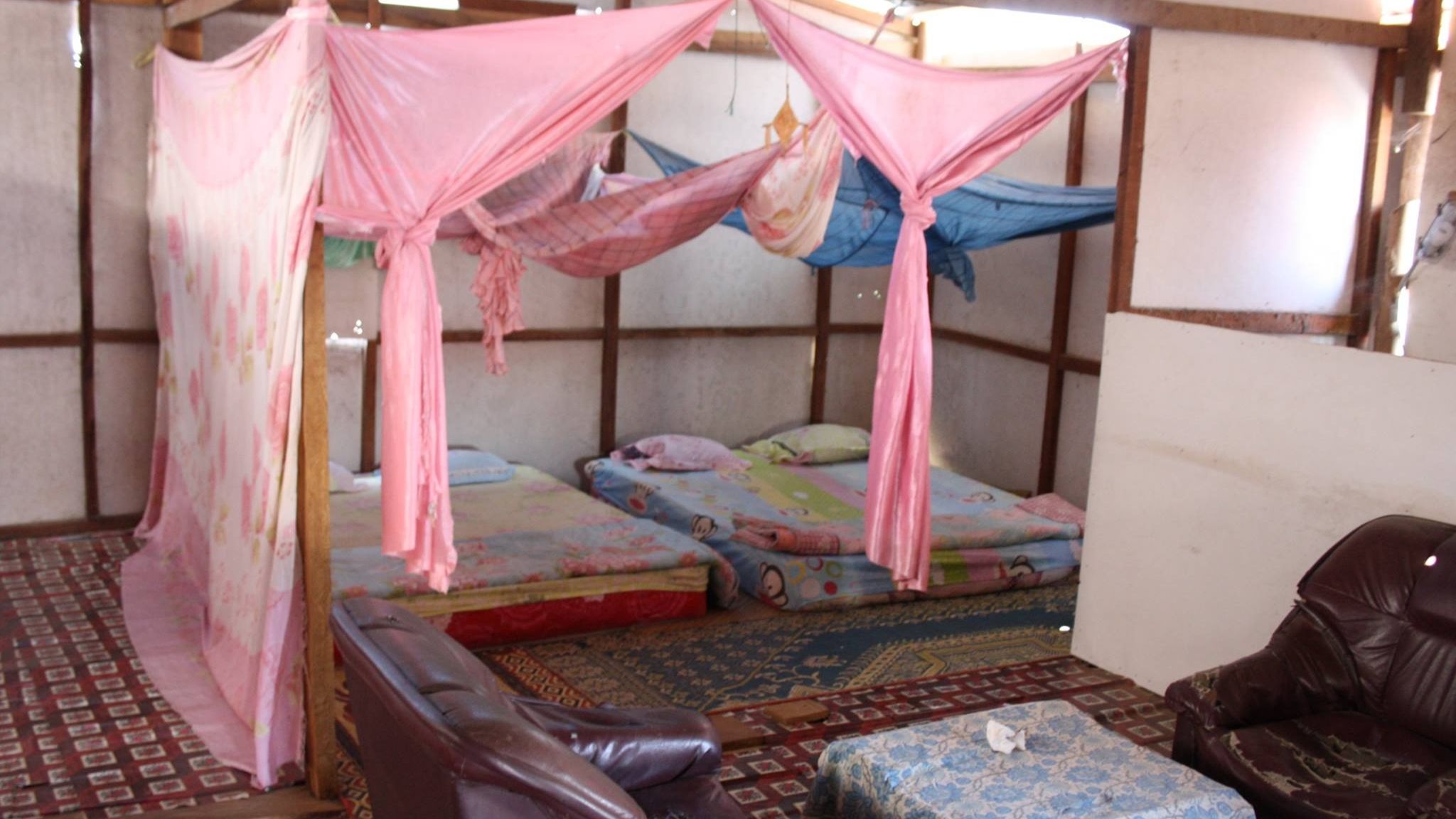
Everything became clear only the following night. The itching became unbearable. Red spots appeared in certain places. I woke up to hear that fellow European travelers in adjacent beds were scratching themselves as well. The only thought in my mind was we should leave as soon as sun rises.
The next day, we moved to a much more comfortable room/cabin on the riverbank. We rushed to wash everything with soap and immediately visited a pharmacy. Trying to explain the symptoms to the pharmacist using only a dictionary app was interesting experience. The pharmacy employee didn't seem surprised and instantly pulled out some special ointment.
Our journey to Vietnam had to be postponed. We didn't want to infect others. We treated ourselves with the acquired ointment for several days and then used it preventively for a long time after. At that time, this event seemed like a punishment, but now, after a long time, it is kind of funny to remember. Everywhere, there's a lesson to be learned. Anyway, the Bolaven Plateau and Tad Lo village were absolutely Beautiful places!
Vietnam
Before the journey to Vietnam, I stumbled upon a story written by a well-known traveler using the pseudonym "Indie Traveller." The guy, whose real name is Marek, has visited over 50 countries and described his adventures in Vietnam as follows:
"Within a month, I was deceived by people claiming to be members of the Red Cross, got into a conflict with a taxi driver who demanded $80 for a five-minute ride, and faced several misunderstandings in restaurants due to unexpectedly inflated prices. As if that wasn't enough, a monkey stole my beer..."
According to some sources during our time of travel, only about 5% of visitors to Vietnam claimed that they wanted to return for a second visit. In comparison, around 50% of tourists were tempted to revisit Thailand. The accuracy of these figures was uncertain, but it certainly sparked curiosity.
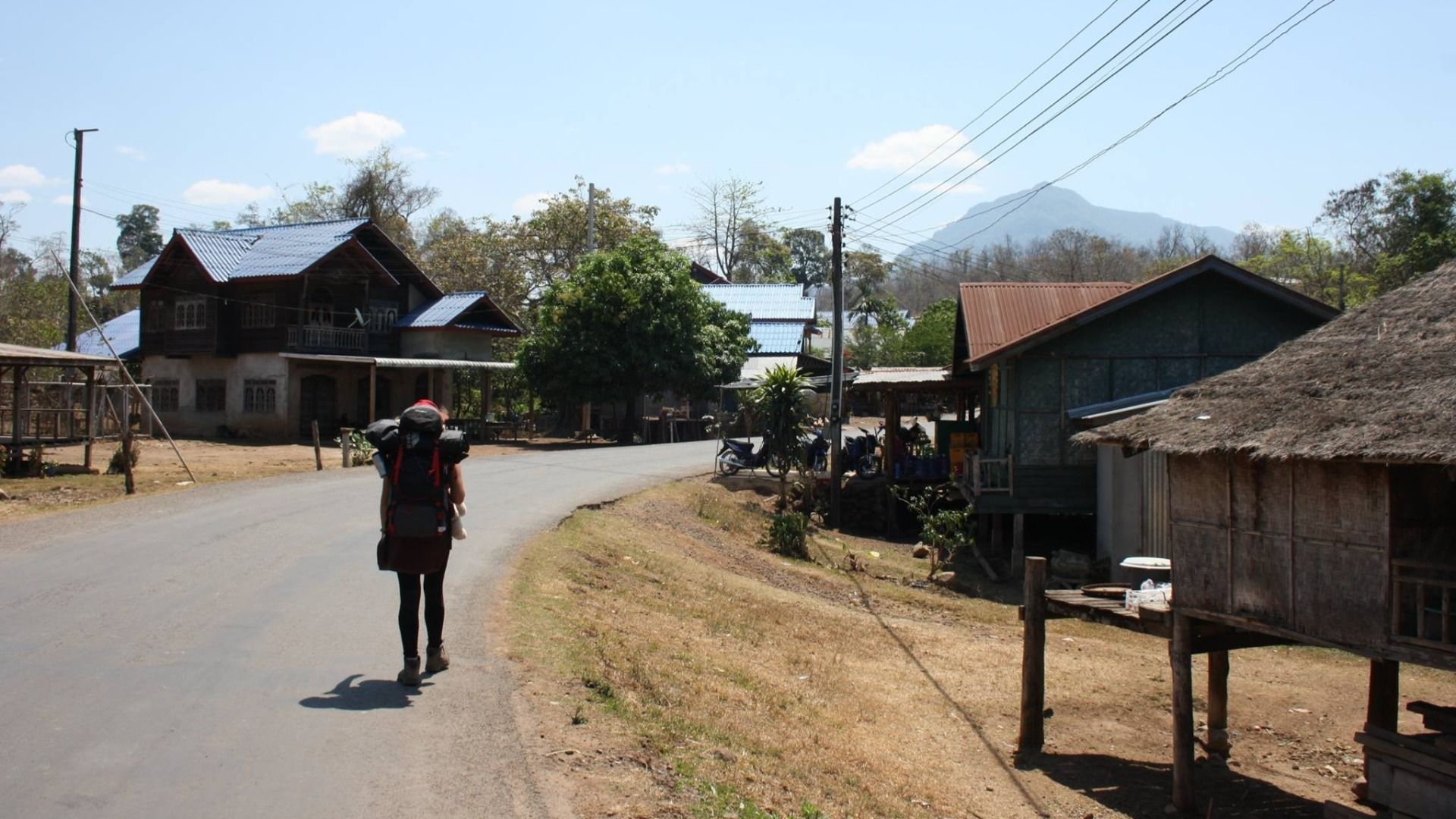
For the first time in our lives, we rode a "sleeper bus". It was a bus with three rows of narrow beds arranged in two levels. There was no chance for tall people to fully stretch their legs. Yet, lying down and getting some rest felt good even in an awkward position.
Glancing out the window was enjoyable, but for a portion of the journey, the scenery was a little bit monotonous. This was when the Sudoku puzzles bought in Kuala Lumpur came in handy. For the sake of economy, we bought only one Sudoku booklet, so whenever both of us wanted to solve the same puzzle at the same time, we had to make a second copy on a piece of paper. The one who finished first was the winner.
The Vietnamese border officers were amusing. They asked various questions to both men and ladies, but all the ladies got simple questions that could be answered with just a single word - yes or no. However, they lingered over men quite a bit. It took them a while to investigate my passport because the Iranian visa caught their attention. Eventually, they let all of us through.
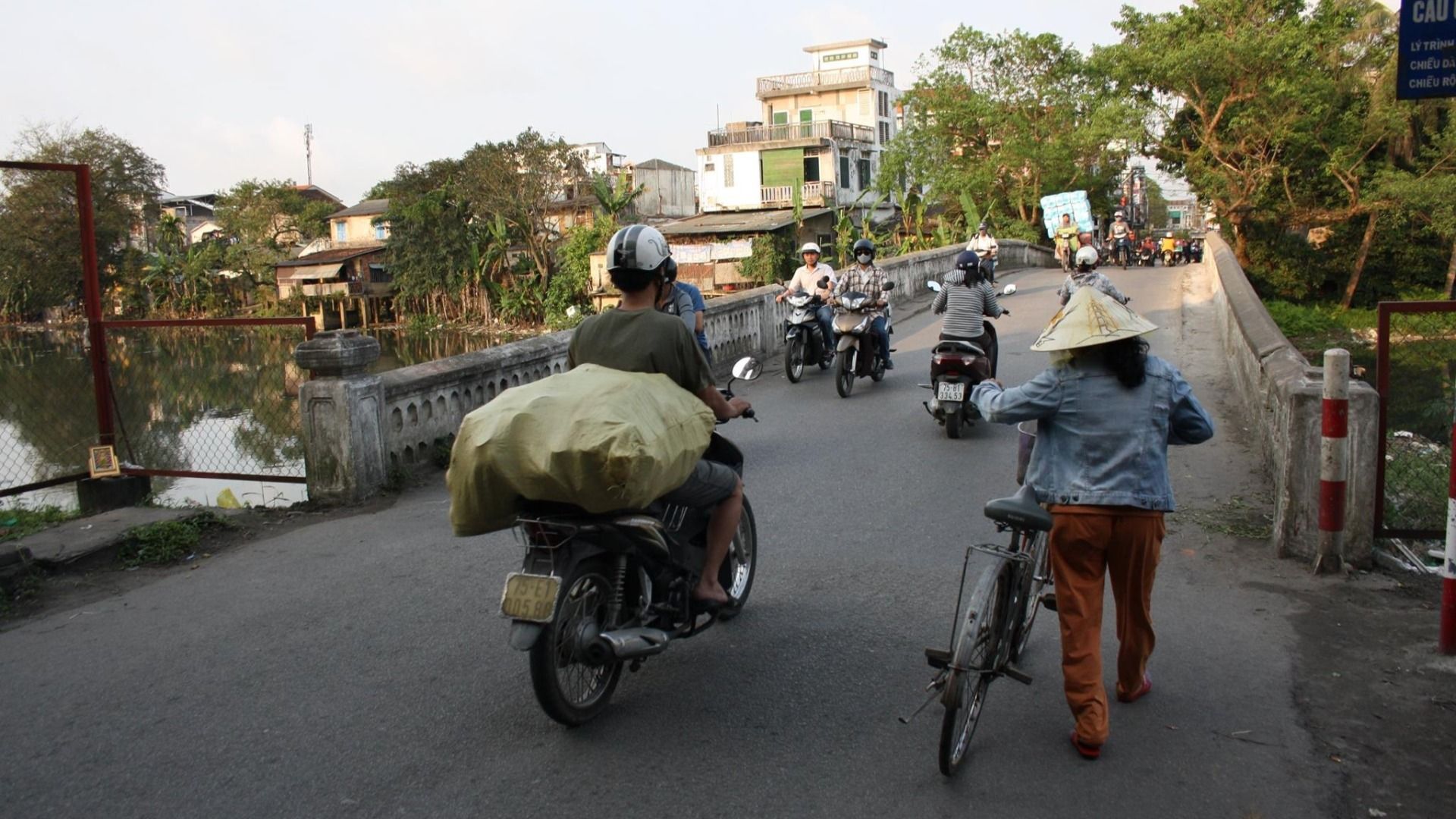
Hue
Once we crossed the border, the landscape changed dramatically. The dull hills of Laos were replaced by the mighty mountains of Vietnam. These mountains and jungles vividly recalled the scenes from the action movies I had seen in the past.
Once we finaly arrived in Hue we needed to find the nearest ATM. While I was waiting in a que, Kamile struck up a conversation with a local "businessman". He pulled up on a motorcycle and discreetly asked if she wanted to relax and smoke some weed. "I have good quality stuff!" he insisted. Similar situations occurred no less than seven times in the next few days.
After a long day, our stomachs sang a mournful tune. In Laos, we bought some gas and cooked some of our meals ourselves, but in Vietnam dining out was what we did most of the time and the gas stove rusted somewhere in the bottom of my backpack.

The variety of Vietnamese dishes was extensive, but escaping rice, as everywhere in Asia, was nearly impossible. I'm a simple person so rice worked fine for me. Kamile didn't fancy some particular herbs so most of the time all the specifically flavored garnishes ended up on my plate.
At one of the restaurants in the center of Hue, we met a middle-aged European man, dining out with his wife. The guy mentioned that in recent months he had serious digestion problems. According to him, Vietnamese food suited him best as during his visit, he had no problems whatsoever.
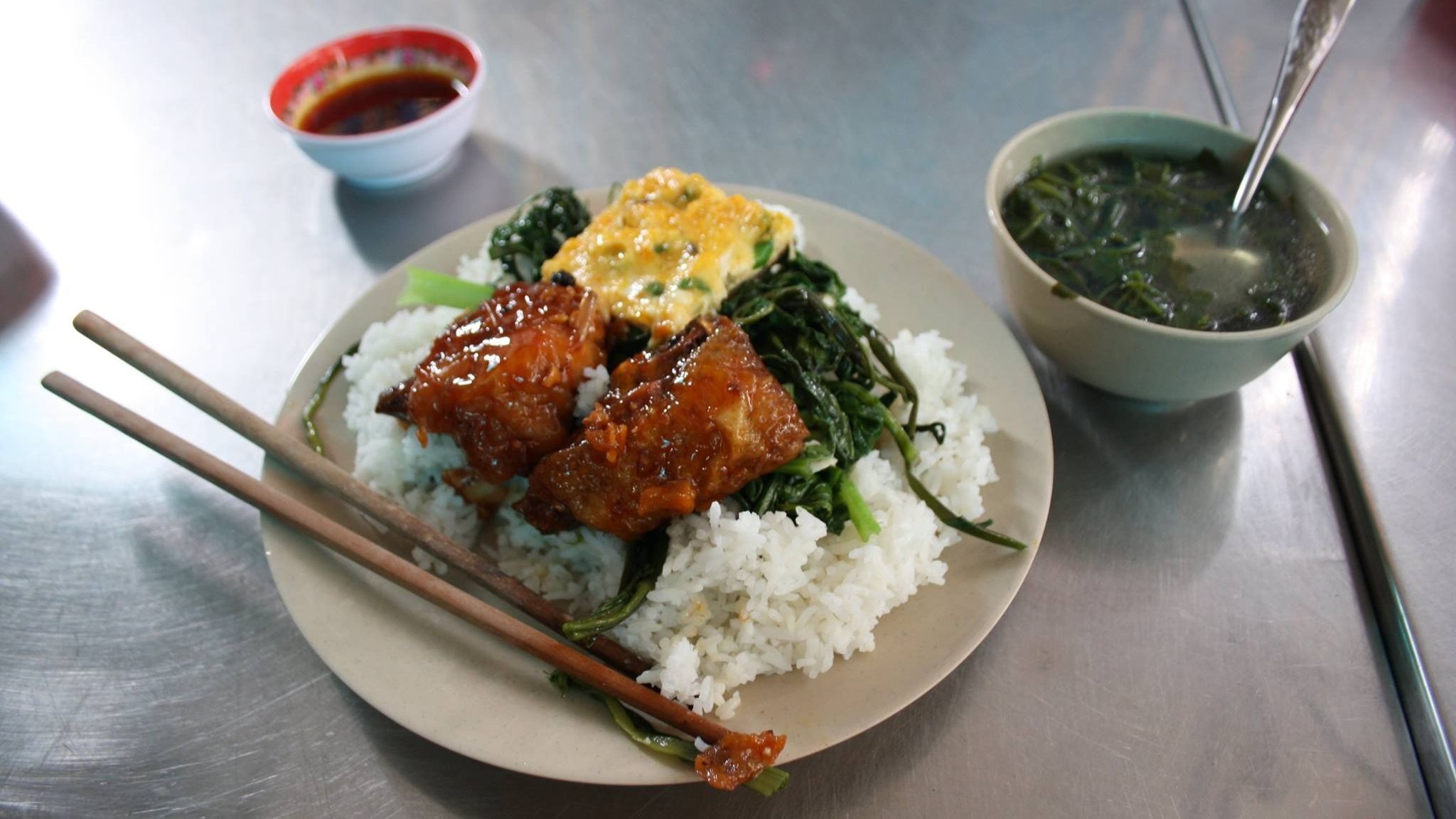
Hue was our home for about a week. When traveling this way, a large chunk of the time is occupied by resolving simple problems: how to get a visa for the next country, where to buy gas for the stove, and so on. This time, we had to repair a broken laptop, which was our main tool for blogging and editing videos.
Problems with electronic devices were pretty much constant. An old phone, purchased in Melaka, gave up while being charged at one of the guesthouses in Vientiane. Our first laptop didn't withstand the challenges of the journey either. The second one, bought in Laos, I accidentally damaged myself.
Several travelers recommended a local technician on the outskirts of Hue. According to them, the young man was not only a good specialist but also spoke English fluently. And so, we followed their advice. On the second day, after a ten-kilometer hike, we reached the mentioned workshop, nestled deeply within a district of small private houses, warehouses, and garages.

After assessing the situation, the man scratched his head and summarized the situation. We needed a new motherboard, but the laptop we bought in Laos was made for the Chinese market so the motherboard dimensions were non-standard, and getting a new one could take several working days.
Long story short, we couldn't get the laptop fixed, so I exchanged it for another one, paying a small extra fee. Finally, we were able to get back on the road. Our $40 Chinese action camera started glitching too. The footage was grayish and faded, but we came up with a conclusion not to spend any more on this matter as the resources were slowly dwindling.

Hoi An
The next stop was Hoi An, a city famous not only for its wooden architecture but also for a multitude of tiny workshops where local artisans would sew a new, individually tailored suit or leather sandals in just one day.
Every street corner of the old town was crowded with European tourists. A lot of them came here to get their own individually tailored suit. In places where they were the most dense, you could barely see tiny Vietnamese ladies maneuvering their way through the sea of wide European shoulders.
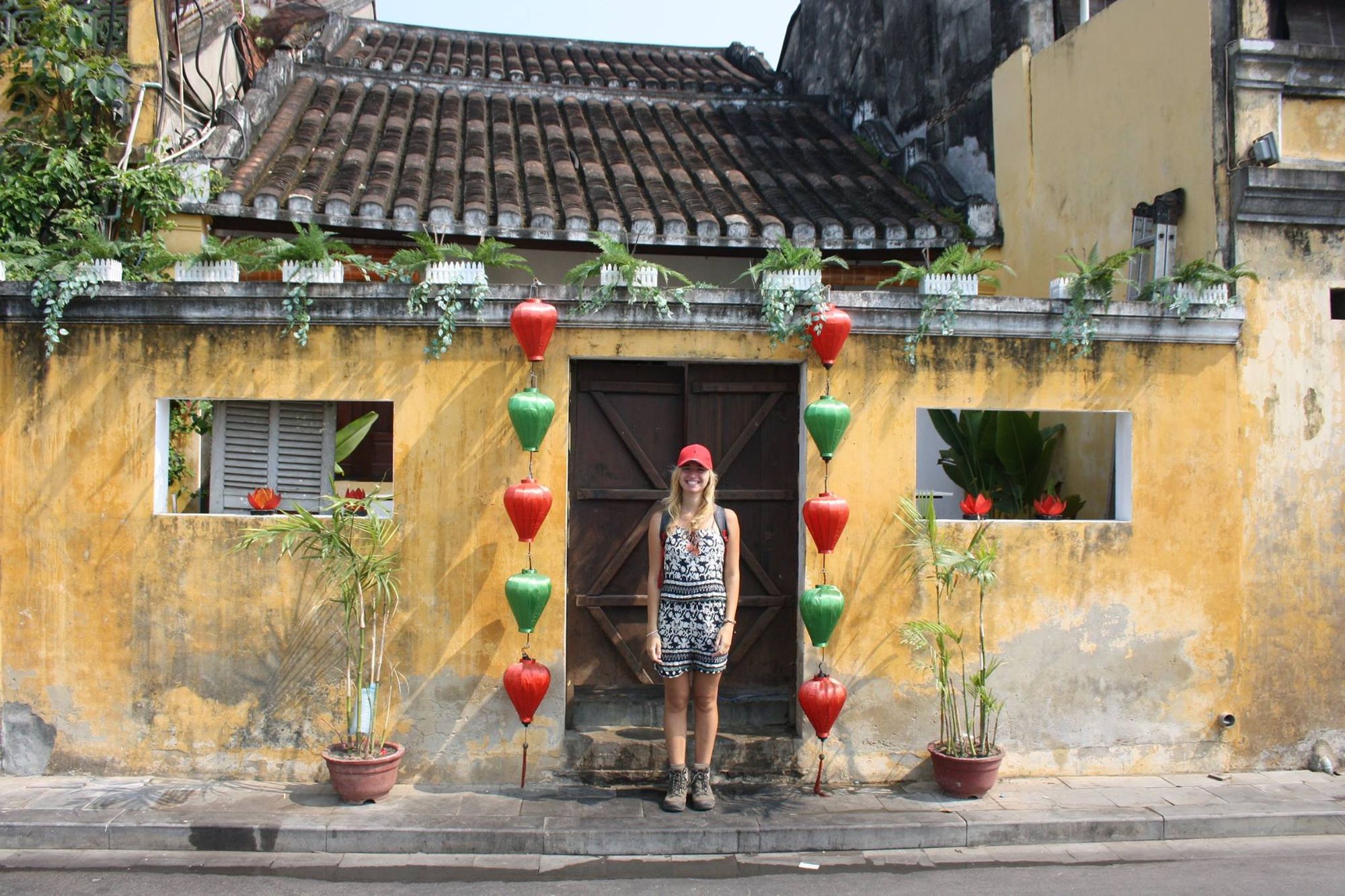
We encountered Belgians, Dutch, and Germans who came here by motorcycle. According to them, in Vietnam, those were easy to purchase. You could buy an old one, do a round trip across Vietnam, Laos, and Cambodia, and get back to the point where you began. Sell the motorcycle, and get some rest before heading back home.
A good idea for the next time, but this time we had our plans. The first part of the plan was to toss a coin as there were two directions we could take: the famous Ho Chi Minh City in the South, or the capital city of Hanoi in the North. Both were known for being charming in their own unique way.
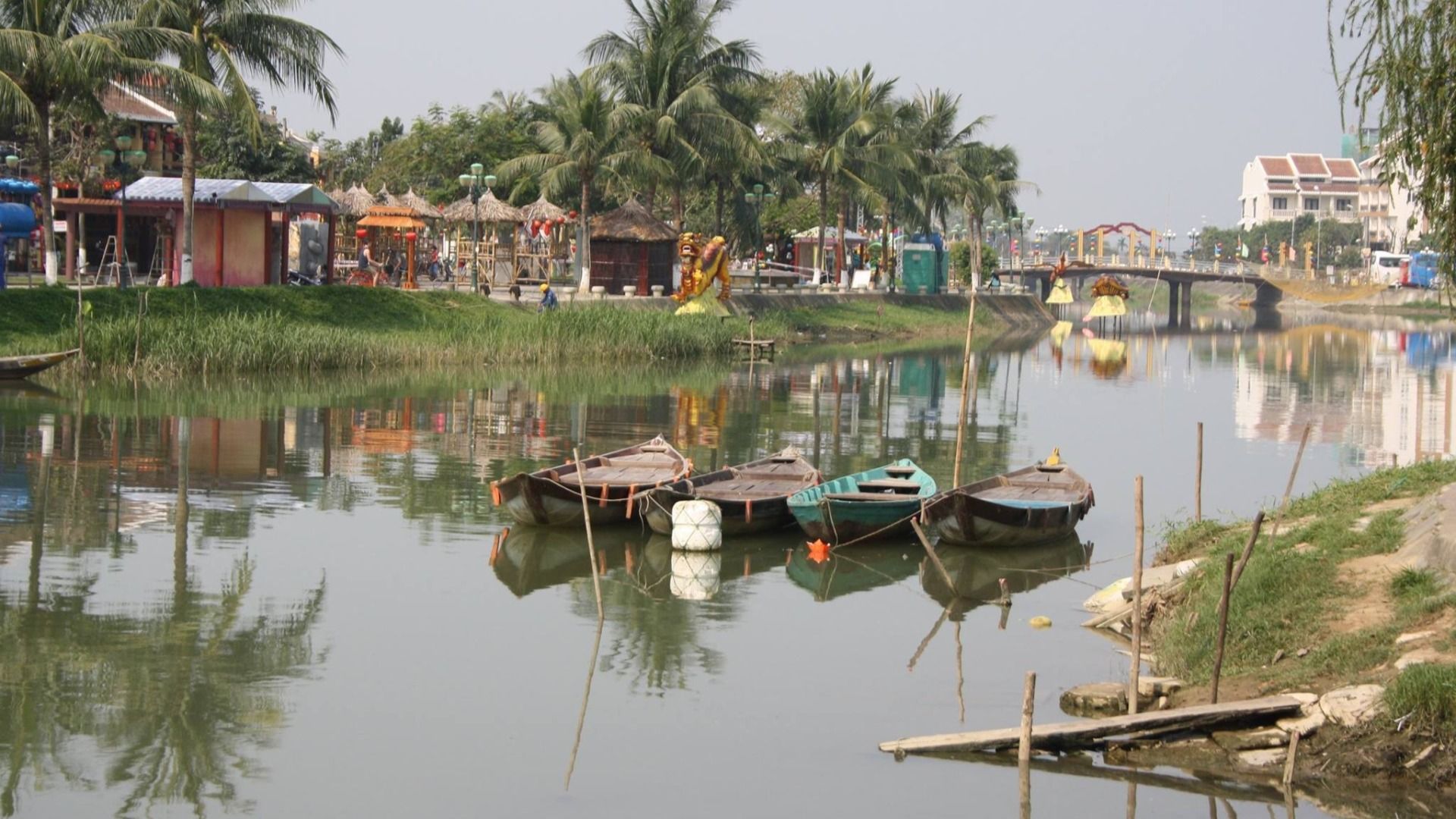
Hanoi
4 a.m. The mist. Freshness. After so many months, the shoes, although worn, were still resilient to small puddles. After walking for some time down a dark alley, tall stairs appeared ahead. As the double doors creaked open and glimpsing a bolt hanging on the other side of the handle, it became evident: the hostess was still asleep.
Somehow, we found ourselves at the lake locally known as Hoan Kiem. It was such a strange feeling. It seemed that the gray cloak of gloom was just a trick, a deception for untrained eyes. People started emerging from the rain-drenched streets.
In truth, the city wasn't asleep at all. It slowed down during the dark hours and began picking up pace from early morning until the next midnight, and then, slowly, it slowly faded again.
Around the lake, the elders gathered one by one. Nearby, a man took deep breaths and then performed some exercises. Meanwhile, young women gathered for dance lessons and morning yoga session.
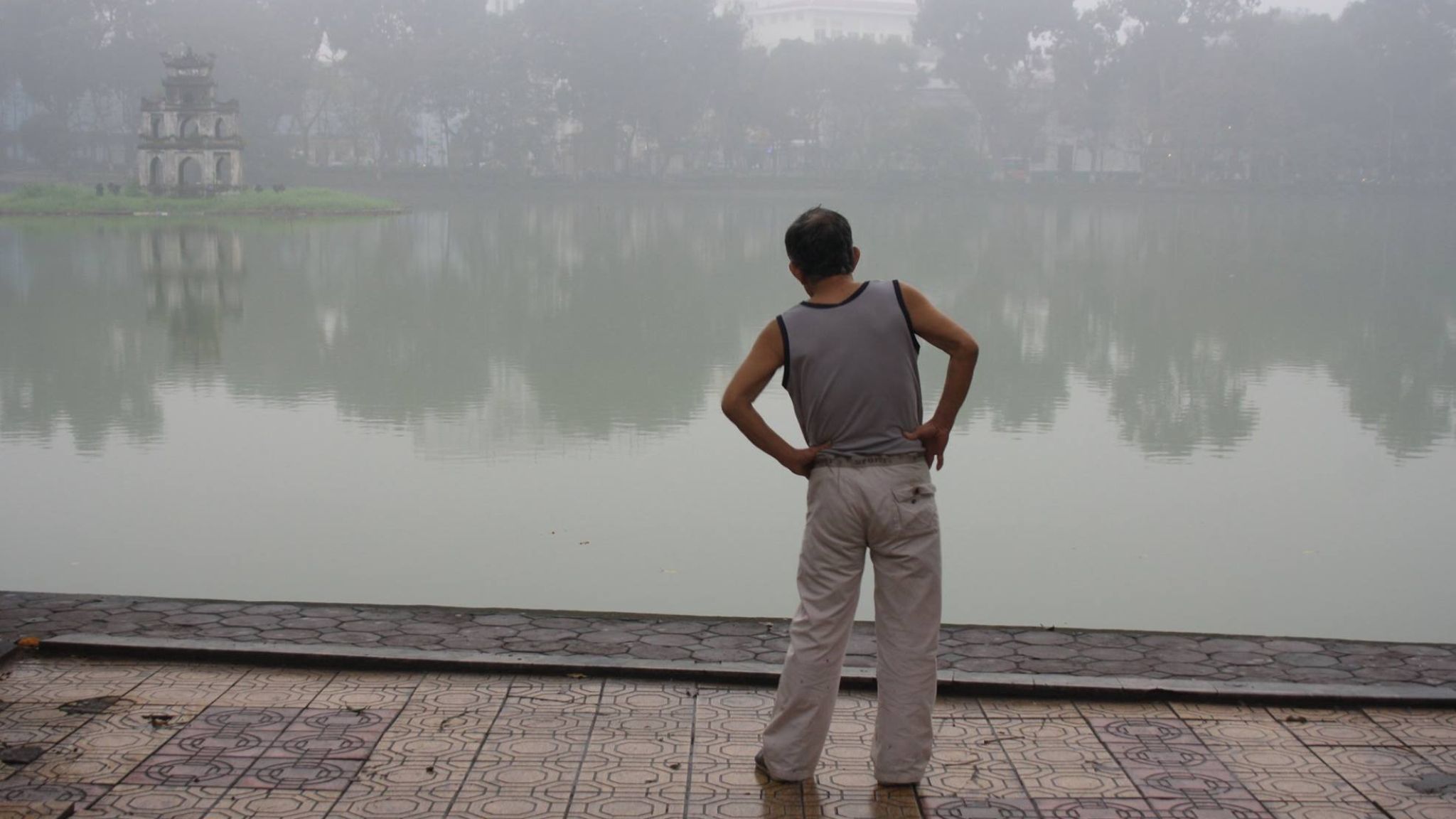
The last to rise were the tourists inclined to stay in bed a bit longer. After breakfast, they hurried to visit the sights of Hanoi. One of them was the famous Hoan Kiem, which in English means "Lake of the Sword."
The lake got its name from a legend in which a fisherman retrieved a sword with his net, which somehow ended up in the hands of a hero, who used the sword to defeat Chinese invaders. The hero became the king of Vietnam, and the sword returned to the lake.
The French enjoy visiting architectural monuments built by their ancestors: the Presidential Palace, the Hanoi Opera House, and St. Joseph's Cathedral. All three were built around the late 19th to early 20th centuries.
After warming up their legs, many people wanted to recharge. In Hanoi, you can taste a variety of dishes. Sounds strange, but in Hanoi, I had the second most delicious kebab I've ever tasted. Oddly enough, it was made by some guys from Poland who opened a kebab restaurant in Hanoi couple of years ago.
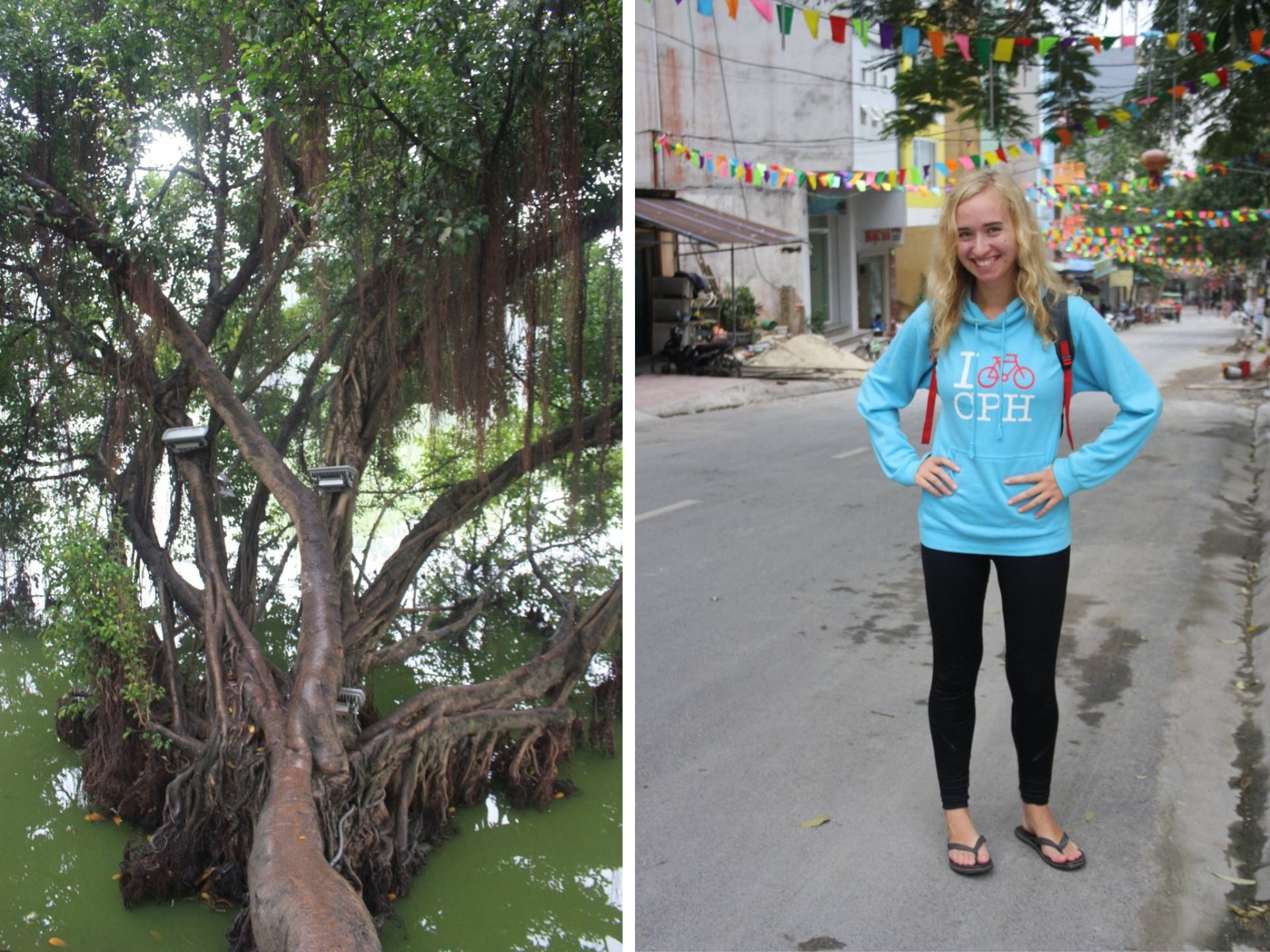
Later that same day, something interesting happened. We bumped into some Italians Kamile knew since her days in Kuala Lumpur. Such encounters had been quite frequent. The number of times we've met someone for the second time was uncountable. Perhaps that's why we weren't that surprised.
Most of the Italians we met were interesting individuals. Maybe a bit laid-back and disorganized, but being "relaxed" seems to be their national trait. One thing's for sure, Southern Europeans grown under the bright sun on average were way more charismatic than us Lithuanians. We spent the evening together. Italians tried out all types of Vietnamese evening entertainment, including dancing, singing and playing varioous games.
Cat Ba Island
Our way turned eastward. After spending some time in Hanoi and Haiphong, we boarded a ferry heading to Cat Ba Island. There were two ferry options: one was going to the nearest pier, while the other one - to a town situated on the far side of the island. We chose the first option as financially it was more appealing.
From the town's shore, we could see dozens of islands and islets. The view seemed otherworldly. It's no wonder, knowing that this archipelago was created by the Dragon of Halong Bay. It is said that wherever the dragon's tail touched the water's surface, an island appeared. 3,000 islands and islets in total.
The narrow and tall townhouses seemed to be closely intertwined. This view was typical across Vietnam. Somewhere I heard that such a construction model was chosen due to a tax system where property tax is based on the width of the building.
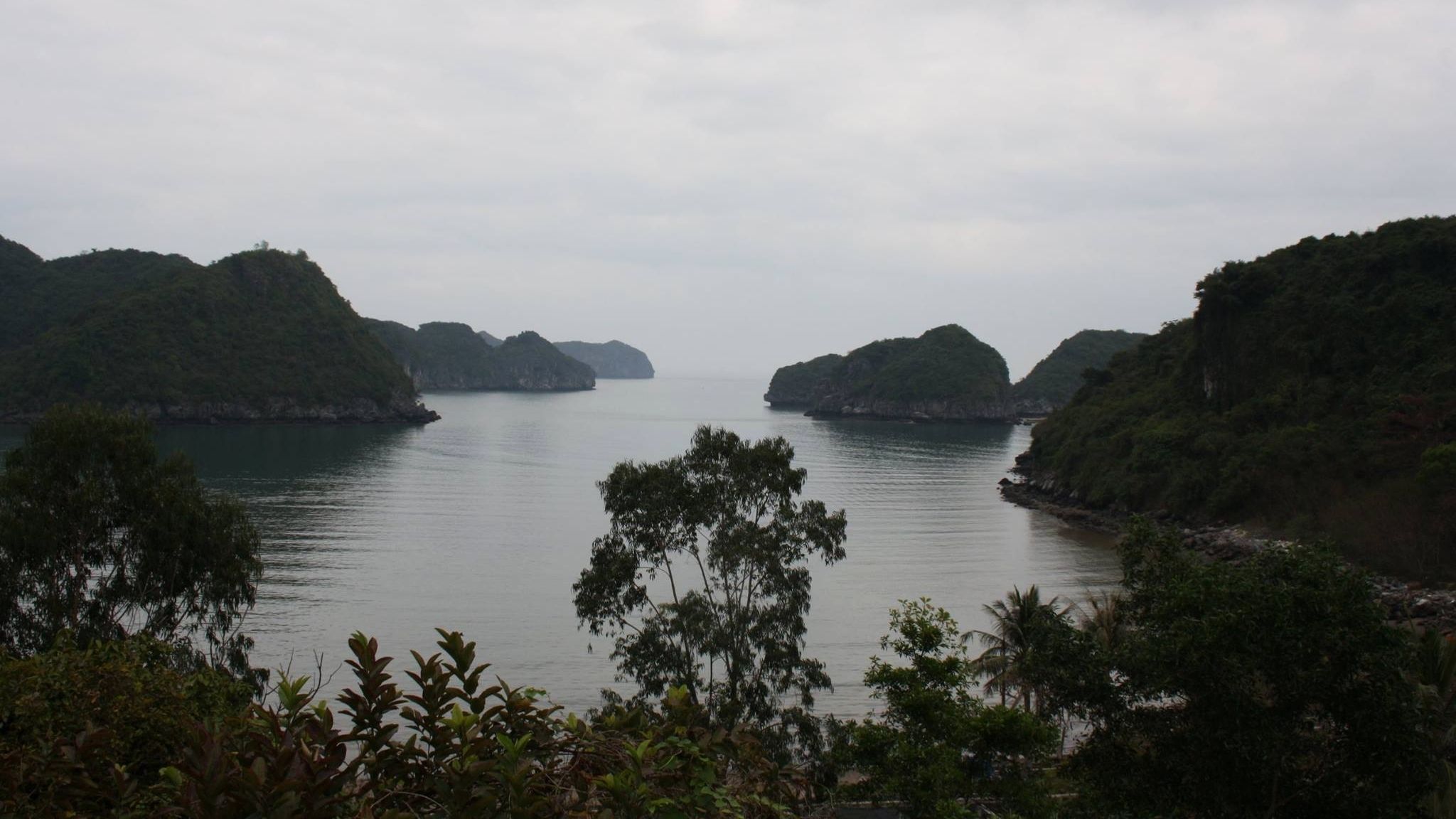
Cat Ba town was small. We thoroughly explored even the most secluded corners town in just a couple of days. Less than a kilometer from the main street, we found the beaches of "Cat Co 1" and "Cat Co 2." As we decided to stay on the island for a longer time, these beaches became the spot for daily morning exercises and swimming.
Scenic trails branched out from the town in all directions. Entertainment options vere many: from romantic boat trips through Halong Bay to touring the whole island on a rented scooter. As hiking enthusiasts we chose exploring some trails. For example, on the third day of our stay, we embarked on a 20 km hike along the island's coast.
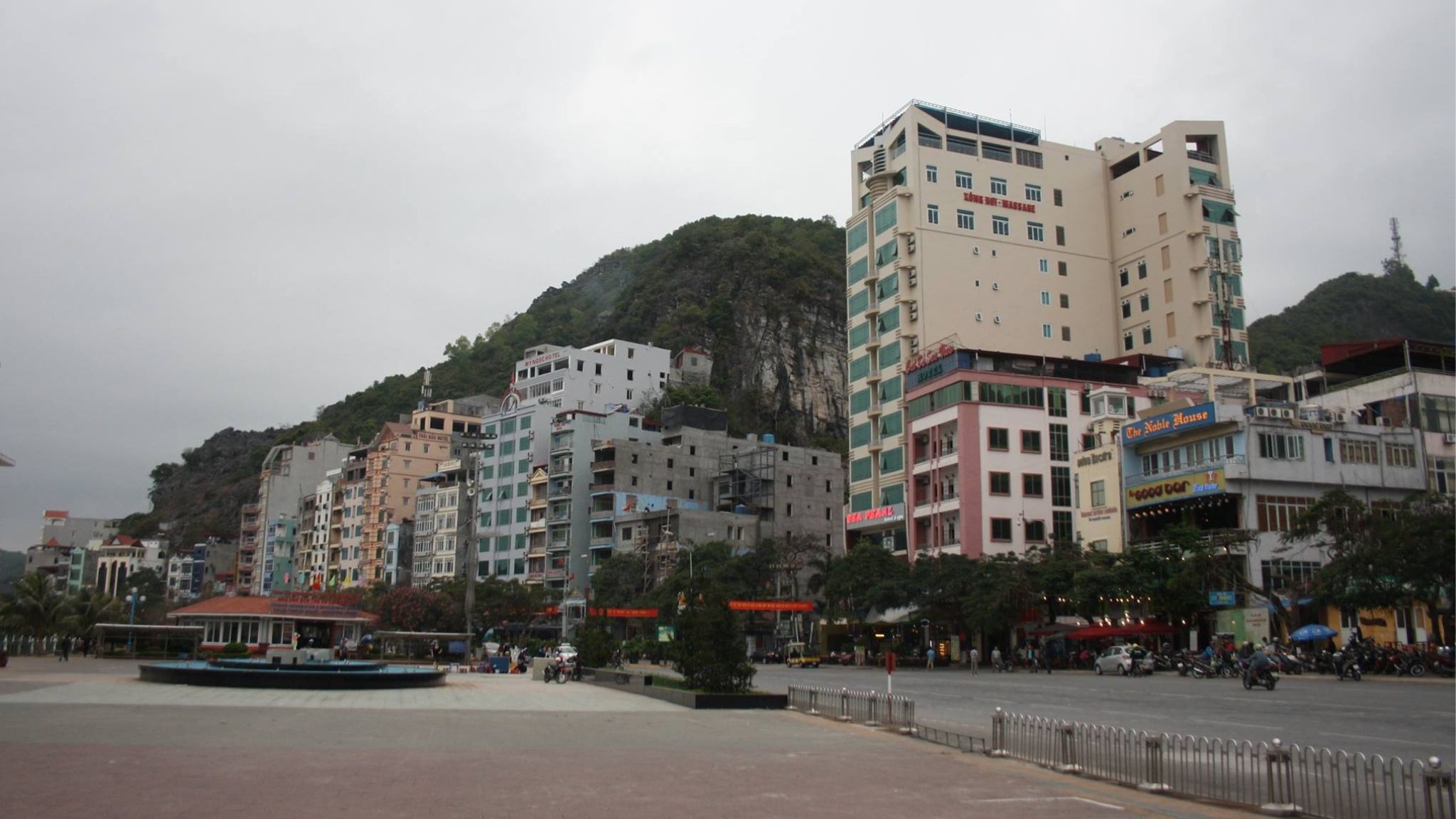
Guesthouses were plentiful not only near the main village. They scattered throughout the island and had somewhat hippie-sounding names: Woodstock Beach Camp, Cat Ba Love Homestay, Windy Mountain Homes, and so on.
The most hippie-like places seemed to be favored by young people. Long hair, loose-fitting shirts, and bare feet characterized most of them. Some of them settled there for weeks. Some of them wrote books or did some freelace activities.
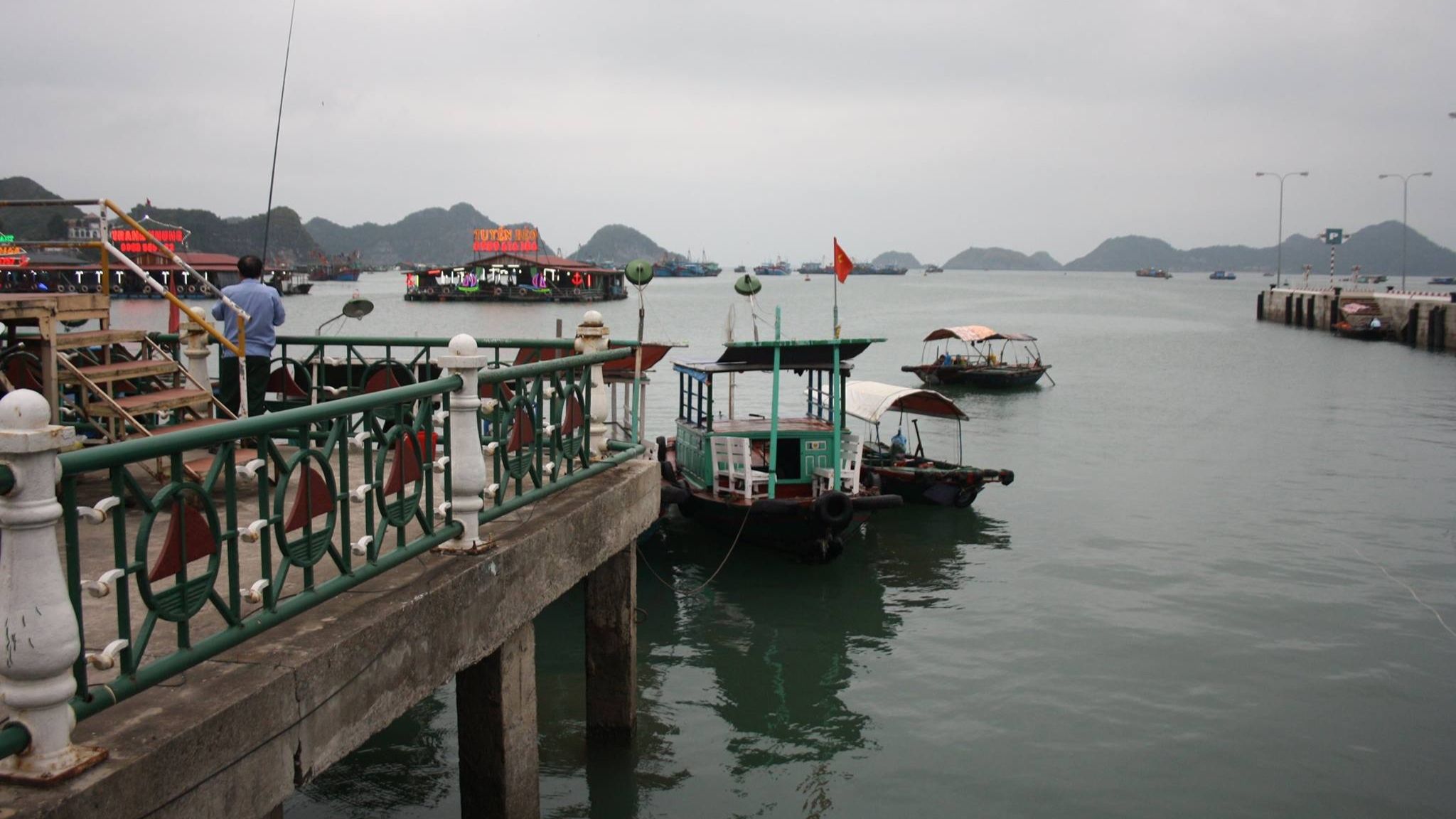
The time had come to make a tough decision. Kamile's Australian visa still hadn't appeared, and resources were slowly dwindling. Theoretically, we had enough resources for a couple more months, but then what?
The idea arose on Cat Ba Island when we encountered a lady who sold travel backpacks of various sizes. She offered us a few to look at and asked what kind of backpacks we were interested in: backpacks for long expeditions or maybe smaller backpacks for hiking.
Somehow it reminded us of the book we read not long ago. "The Way of St. James" was a book about an almost 800-kilometer route going through the north of Spain. On the same day we decided to buy tickets from Hanoi to Madrid and walk the Way of St. James. The good thing was that no matter where we ended up in Europe, home was within arm's reach...
Spain
The first time we heard of the Way of St. James was when we read the book "The Way to Santiago de Compostela" by the renowned Lithuanian traveler Kristina Stalnionytė. In the opening pages, the author narrated the legend of how, after the crucifixion of Jesus Christ, the apostles had to decide where each of them would spread the wisdom of their teacher. James got to travel to the Iberian Peninsula.
In the territory that is now Spain, James built churches and educated Christians. After dedicating forty years of his life to this cause, the apostle James decided to return to his homeland. At that time, Herod Agrippa, who ruled the region, was not pleased to hear about James' appearance and ordered his execution.
According to the legend, a few of James' disciples transported his body to Galicia and buried it at the foot of Mount Libredon. Over centuries, this event was forgotten until the early 9th century when a hermit named Pelagius discovered the tomb. Later, the city of Santiago de Compostela was founded at that site, attracting pilgrims from all the world.

Pamplona
Pamplona (Basque: Iruñea, Iruña) - a city in Spain, in Navarre, located 407 km from Madrid. It is believed that the fortified city of Pamplona was founded by the Roman general Pompey. From the 9th to the 12th century, the Kingdom of Navarre was known as the Kingdom of Pamplona. Nowadays, Pamplona is best known for its annual "Running of the Bulls" festival.
Some say that the Running of the Bulls is the most dangerous adventure one can experience in Spain. Despite this, hundreds of people do it every year. Anyone over the age of 18 and in good physical condition can participate in the Running of the Bulls. During the festival, hundreds of thousands of tourists flock to Pamplona.
The tradition originated several hundred years ago when farmers needed to find a way to lure the agitated bulls out of the pens into the bullring corridor. Young men would wear red scarves and serve as bait. It has been customary since ancient times that the first signal announces the start for the runners, and the second signal releases the bulls.
The main goal of the runners is to run in front of the bulls for as long as possible and stay alive. The entire course is usually only 826 meters long. Bulls run lightning-fast, so the run typically lasts only about 15 seconds. Each year, around 300 people are injured during the festival. According to official records, since 1910, 15 people have died from bull injuries. Fortunately, we did not come to Pamplona to run from the enraged bulls but rather to engage in much more peaceful activities.
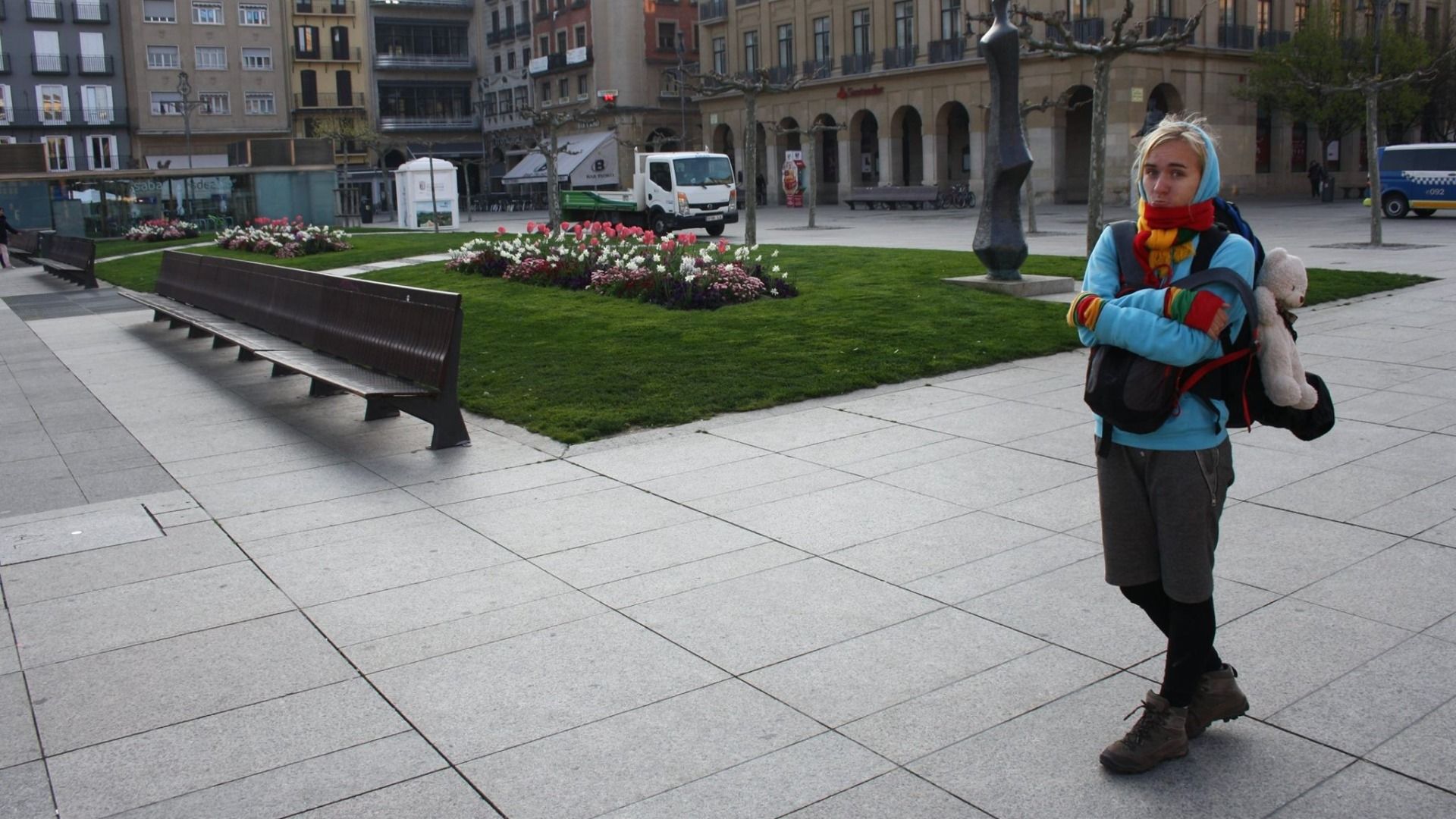
Officialy Pilgrims
To get from Madrid to Pamplona we took a bus. We arrived at 1:00 in the morning and due to circumstances, we pitched our tent in the only suitable spot in the vast city park near the Murallas de Pamplona fortress. However, we didn't rest for long as a severe chill woke us up at around 5 a.m.
Our first task was to obtain the so-called pilgrim passport (Credential). These passports serve as proof that the traveler has completed the Camino de Santiago on foot, horseback, or by bicycle. Stamps are collected in pilgrim hostels, churches, and roadside inns. Eventually, upon reaching Santiago de Compostela, the passport is filled. When presented at the pilgrim center, the pilgrim receives a so-called pilgrim certificate (Compostela) and a distance certificate.
After having a few fresh locally grown oranges for breakfast, and a short morning walk, Kamile and I finally reached the Pamplona Cathedral. It is precisely there where those beginning their journey in Pamplona can acquire pilgrim passports. Failing to find the person who was responsible for issuing them, we obtained ours from a nearby outdoor activity gear shop called "Caminoteca." Once our brand-new passports received their first stamps, we were officially pilgrims.
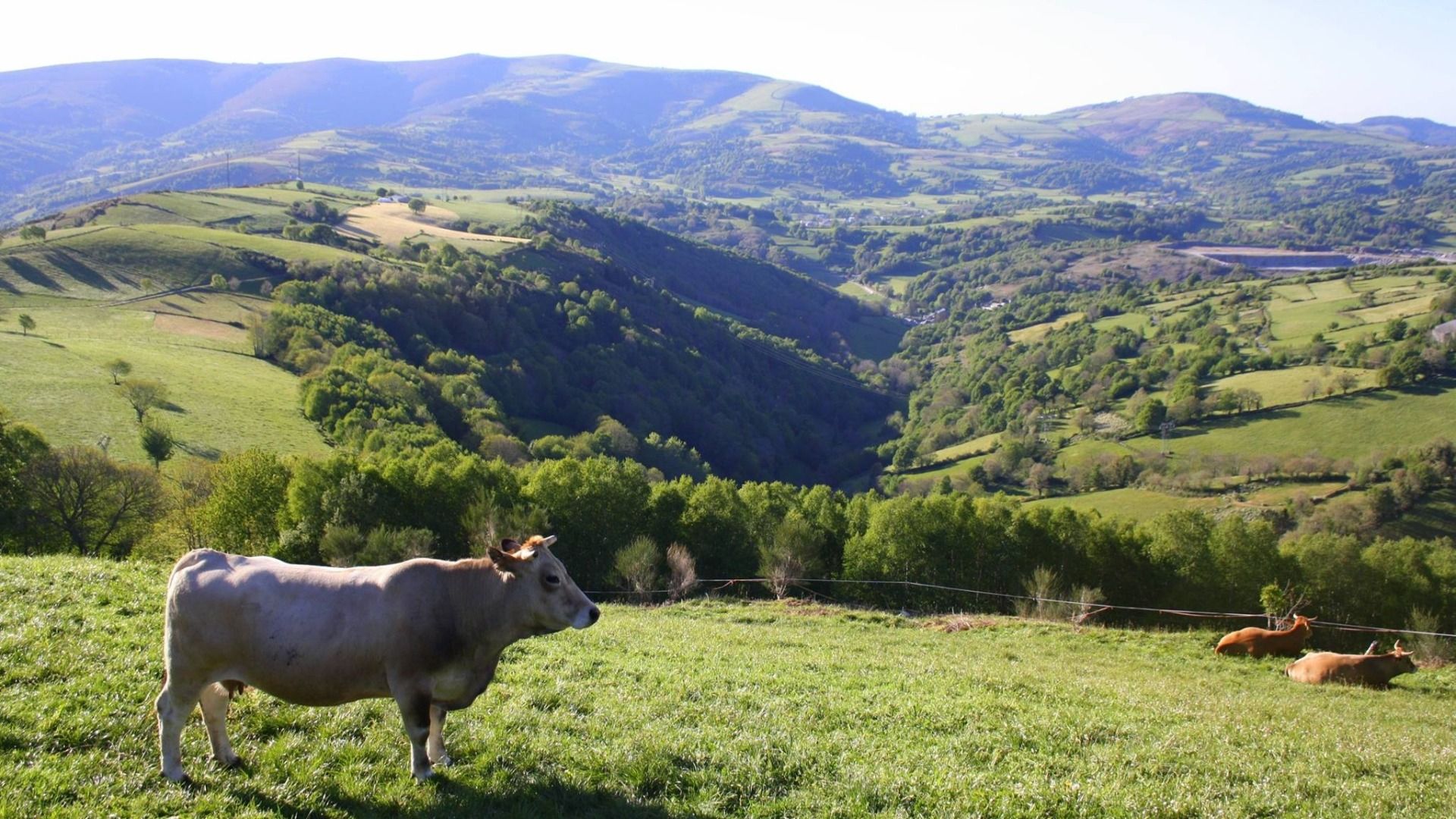
Different types of piligrims
Getting lost on the Way of St. James is difficult. The route is marked with yellow arrows and scallop symbols. Most hikers cover 24-26 km per day. At this pace, one can complete the entire French Way route (800 km) in about a month.
It is important to emphasize that the word "pilgrimage" is most commonly used when referring to a person who sets out on a pilgrimage to visit a holy place. The motivation for a pilgrimage journey may be seeking forgiveness of sins, fulfilling a vow, hoping that prayers will be heard at a particular place, or seeking recovery from illness.
However, on the St. James' Way, hikers are also called pilgrims, including those who embark on the journey not for religious reasons but for tourism, sports, or other purposes, driven by curiosity for knowledge that cannot be obtained just by reading books.
Some choose to visit all the most famous architectural landmarks, spend time getting to know other pilgrims, and never miss the chance to taste delicious dishes in cozy local inns. Others, following a strict schedule, rush ahead, without any distractions.
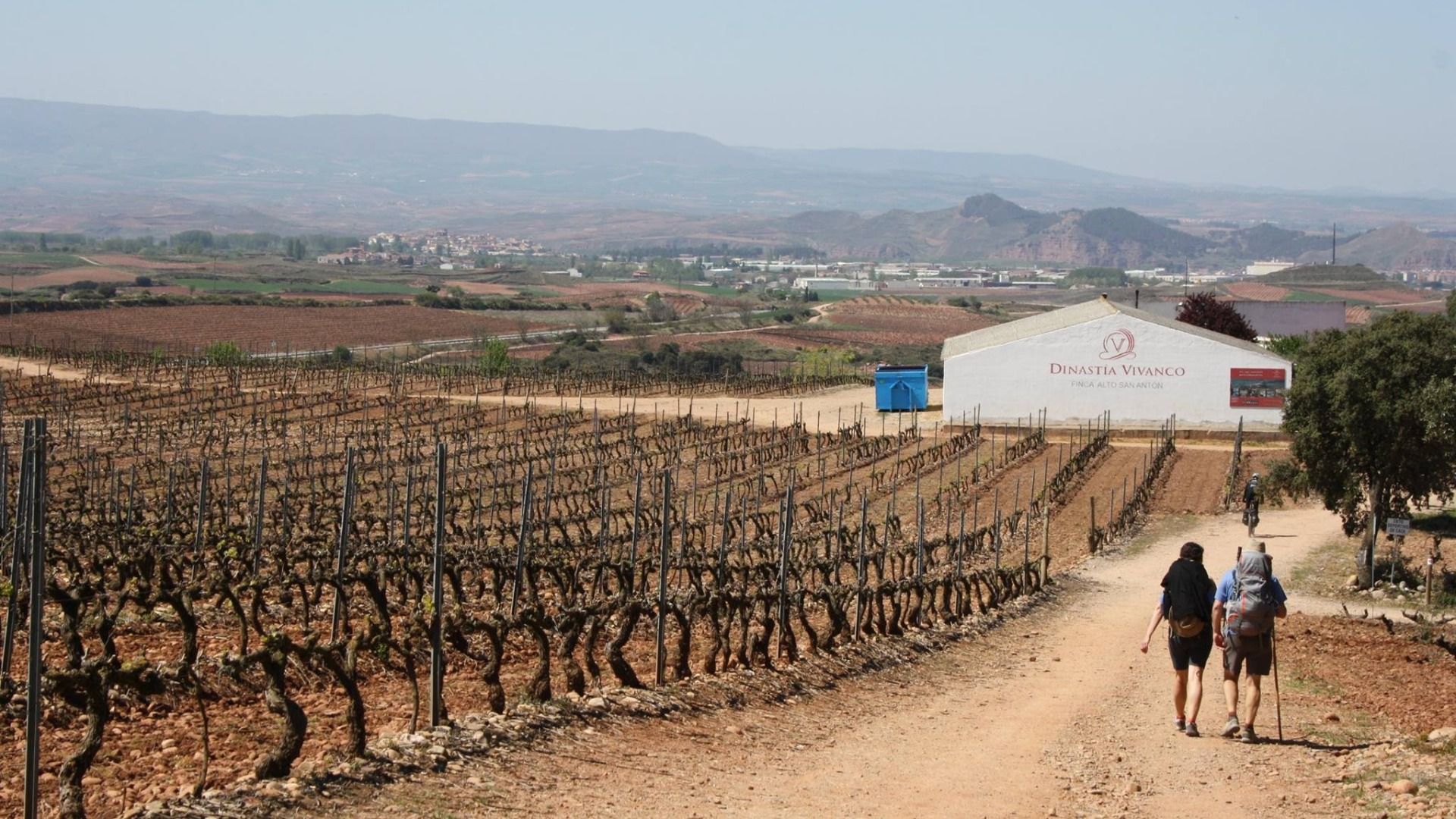
First acquaintance with albergues
Different hikers' goals, habits, and budgets have a significant impact on the amount of gear required. There has long been a simplified formula for calculating the recommended backpack weight: gear should not exceed 10% of a person's body weight. Those who choose to camp during the journey ignore these recommendations. Much of the weight comes not only from the tent itself but also from additional equipment: a thicker sleeping bag, a sleeping pad, and warm sleepwear. In the hot months of the year, less clothing is needed.
Despite exceptions, most St. James' Way pilgrims choose to stay in pilgrim hostels, also known as Albergues. Albergues come in three types: private, state-run, and donation-based, often managed by churches or monasteries. Hostels in different categories not only differ in accommodation prices but also in the amenities provided.
Private hostels generally offer the most comfort. Most of these places are known for their attractive interior and cleanliness. Of course, there are exceptions. Downloading one of the "Camino de Santiago" apps onto a smart device can be very helpful. They provide all the essential information about each albergue along the Way of St. James.
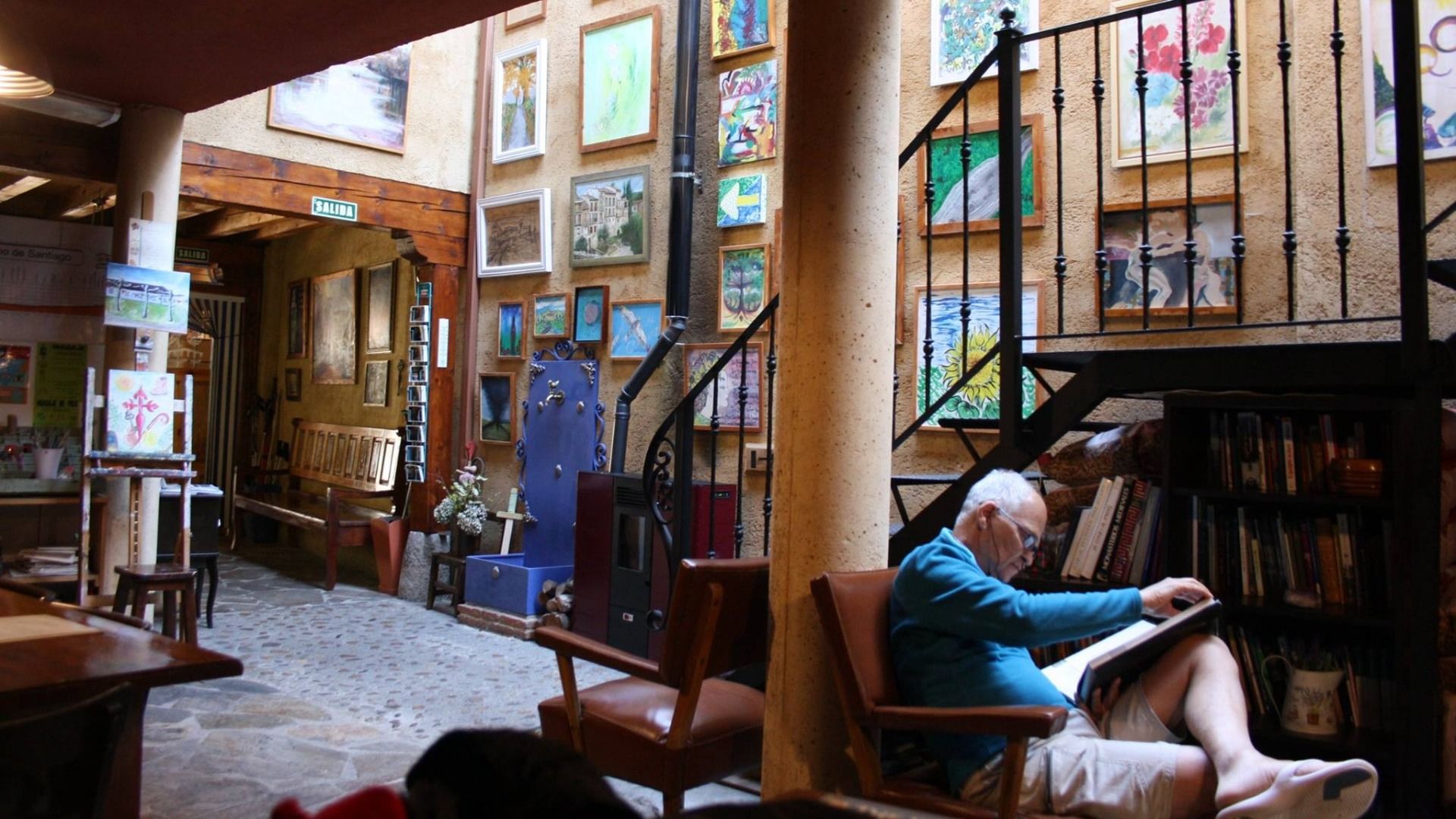
20 km from Cizur Menor to Puente la Reina
For the second day, our goal was to reach Puente la Reina. Once there, we decided to spend the hottest part of the day resting in the shade of a big tree in the city park. As the sun started to decline, we walked a few more kilometers before starting to look for a good spot for our tent.
The next day we started hiking at about 7 a.m. Certainly not among the first ones as most pilgrims wake up very early. Especially those who hike at a slow pace tend to take frequent breaks during the journey. For some, the Way of St. James represents an opportunity to test their physical strength and endurance. These sturdy individuals can cover distances of 40 km or more in a day.
The spring freshness filled our lungs. All those colors and the morning sounds created a feeling of joy. When we settled under the shade of a roadside tree to have breakfast, it seemed like both the plants and the earth shared their energy with us. Both canned beans and fresh water happened to be super delicious.
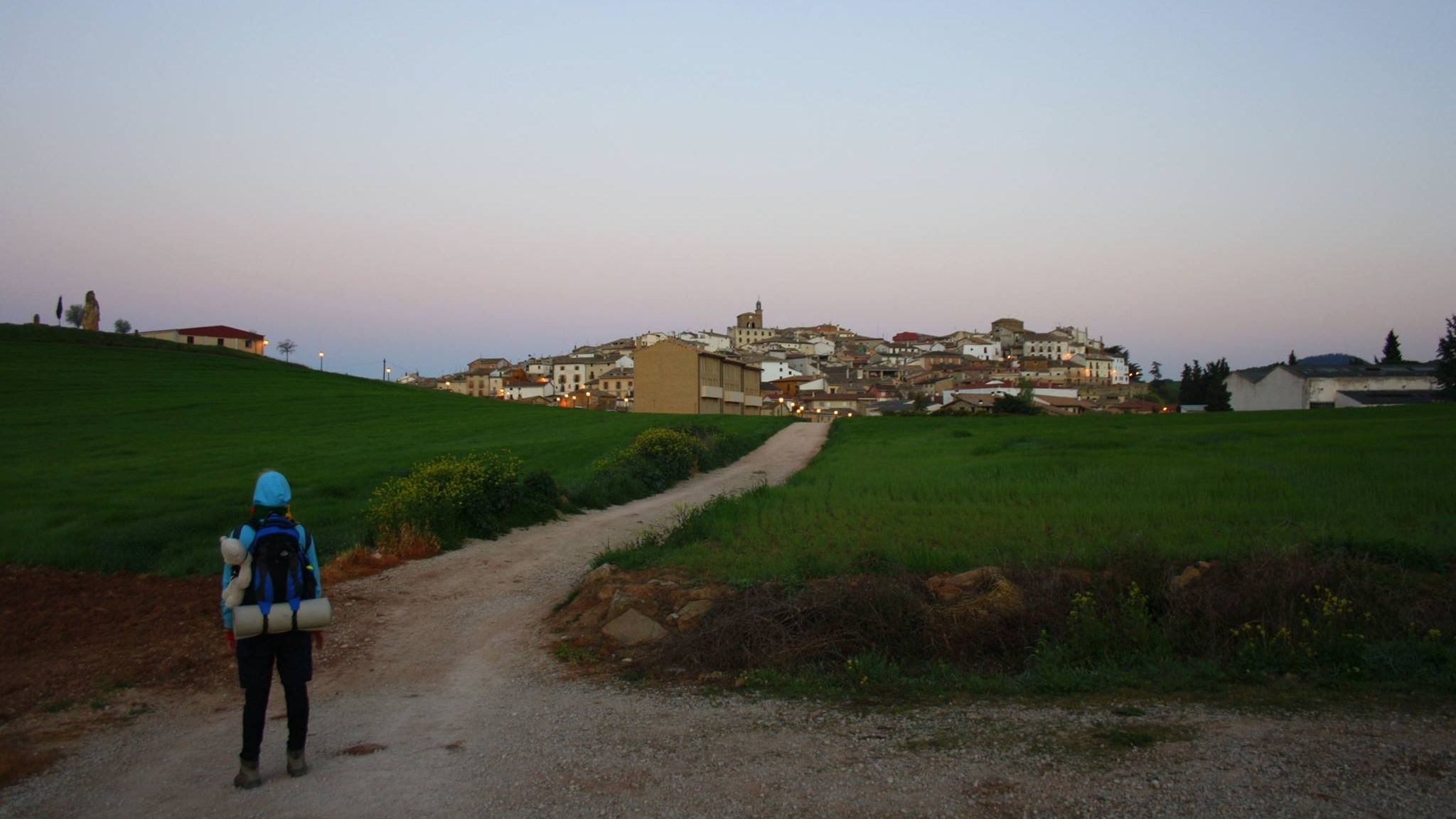
By midday, we reached Puente la Reina. This town was once established by the Knights Templar order. It was these Templars who safeguarded pilgrims traveling the Way of St. James most intensely from the 12th to the 14th centuries.
The most notable structures are the Church of the Crucifix, built by the Templars themselves, and the six-arched Queen's Bridge (Puente la Reina). According to legend, a mysterious bird guards the bridge, flying in circles above and below it.
As the sun reached its peak, seeking shade was the best option. Smaller shops close at this time, and their owners enjoy a few hours of so-called siesta. Only the larger shopping centers remain open.
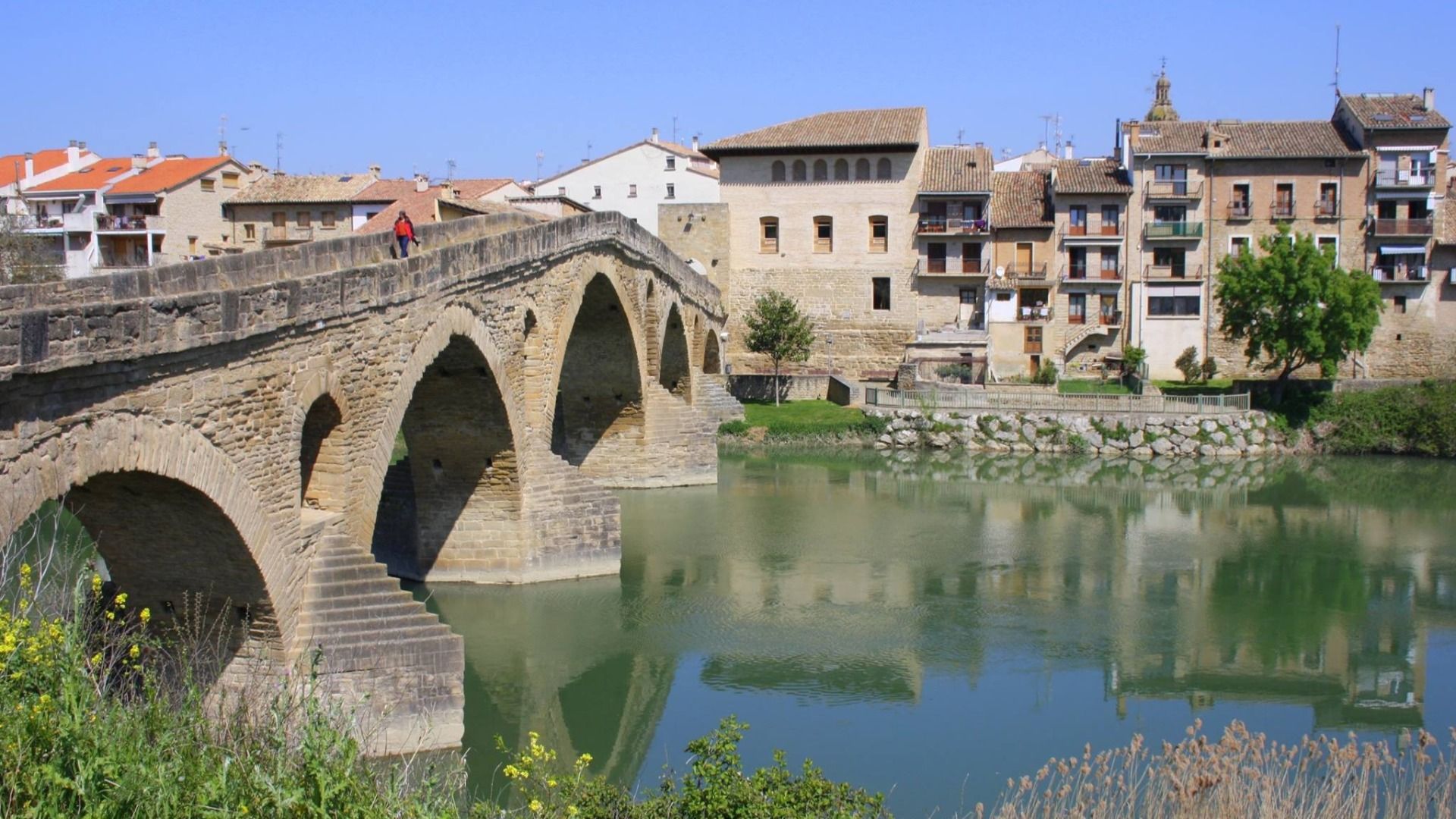
Logroño: On the Ashes of Another City
Where now stands Logroño, there was once the ancient city of Vareia. In the 6th century, it was swept away by the Visigothic King Leovigild. A few hundred years later, the village of Logroño was established in the same spot.
People lived calmly for a short time. In the 11th century, the settlement was leveled with the ground. It is said that it was done by a warrior named Sid. "What a cheerful name for a warrior," we thought upon hearing this story.
During those times, the territory of present-day Spain was divided into many small kingdoms. Sid's "exploits" caught the attention of his brother. It so happened that his brother was King Alfonso VI of León. Intolerant of the situation, he built a bridge over the Ebro River, encompassed the devastated surroundings, and sought to densely populate the area. The larger the community, the easier the defense against attackers.
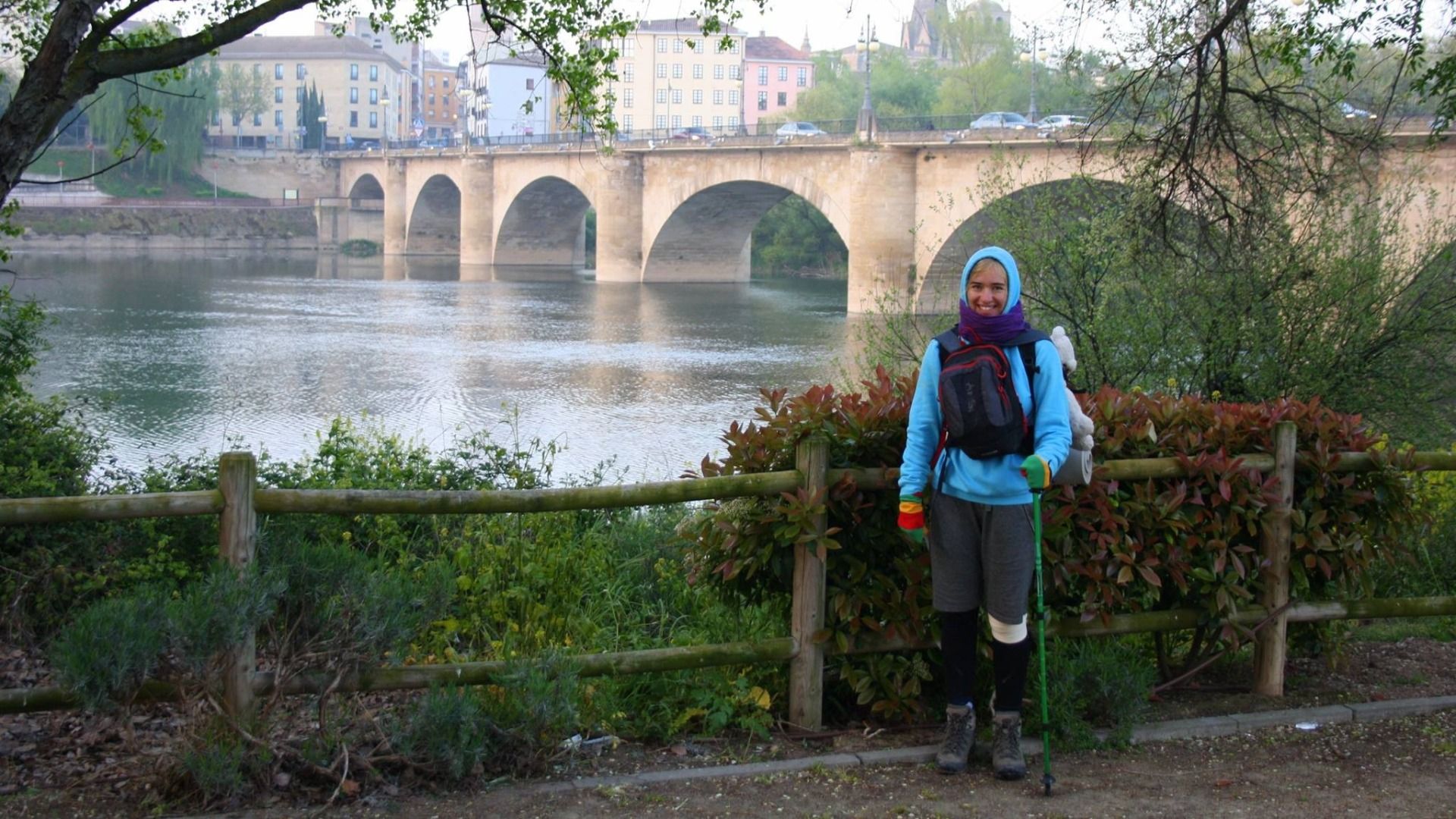
114 km to Burgos
The French Way stretches across several historically interesting towns and villages. However, major cities are few: Pamplona, Logroño, Burgos, León, and Santiago de Compostela. After covering the initial 90 kilometers and visiting two of them, a somewhat longer distance awaited before the next significant stop. There were 114 kilometers left to reach Burgos.
The stretch from Logroño to Najera appeared particularly challenging. After spending the night near the town, we continued our journey toward Santo Domingo de la Calzada. More and more pilgrims we met were coping with various pains caused by injuries: some had blisters on their feet, while others were dealing with toenails turning black due to ill-fitting or low-quality footwear.
Interesting things happened in Santo Domingo de la Calzada. In a local shop, a friendly saleswoman scanned the items, and instead of the amount displayed on the screen, a round zero suddenly appeared. Before we could grasp what happened, the woman standing next to us spoke in Lithuanian: "Everything's fine. I've already paid."
It turned out she was a Lithuanian living in Spain with her husband and children for the past 12 years. Upon hearing a Lithuanian word, the young woman was visibly delighted and approached us to strike up a conversation.
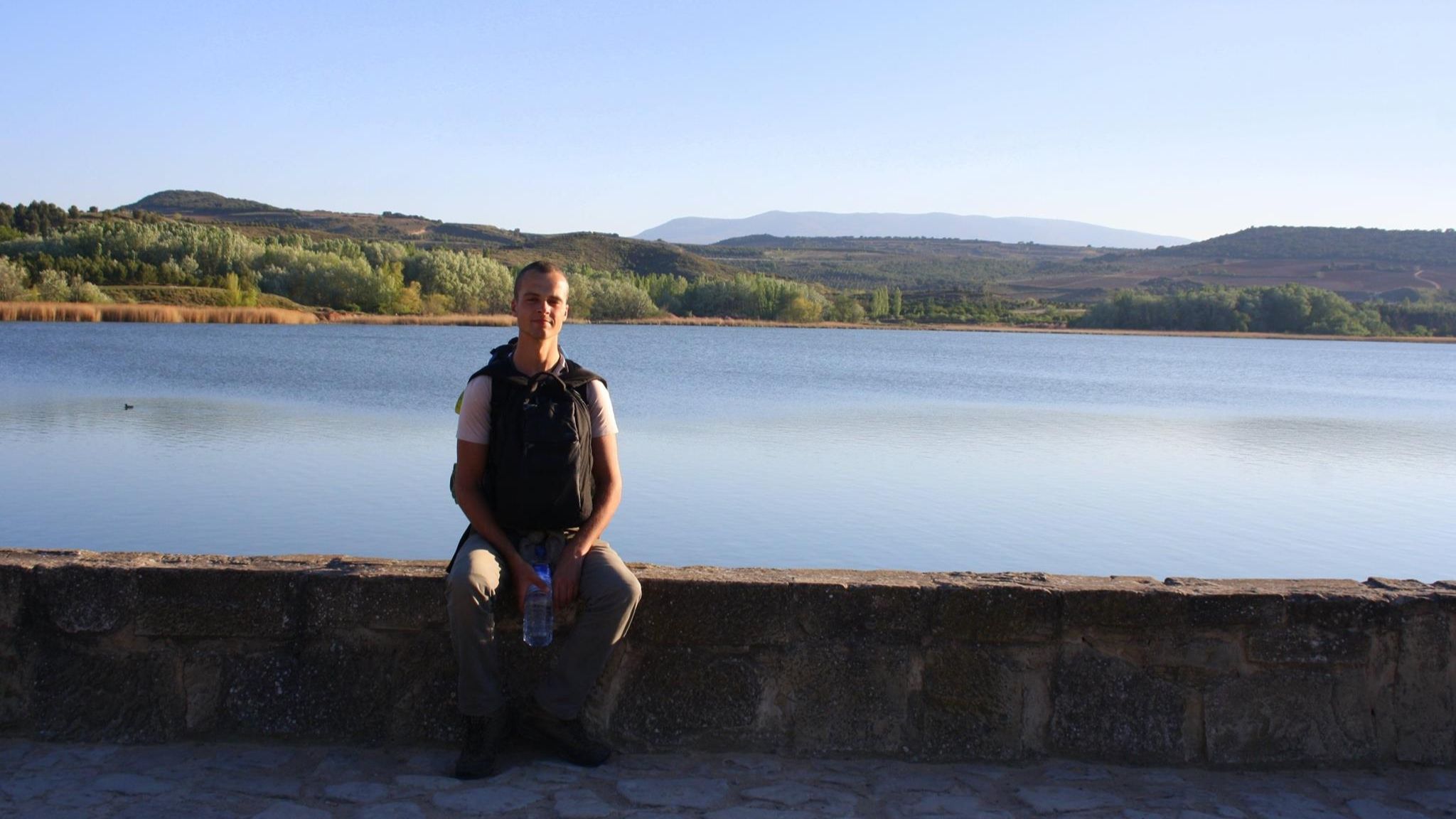
"I embarked on the Camino de Santiago due to obesity"
Who would have thought it wouldn't be the only encounter of that kind? We met another compatriot at the hostel. A young guy shared a funny story about how he decided it was time to live healthier.
"Not long ago, I weighed around 120 kilograms. Now, I'm barely around 100. I had a wake-up call when, against my will, I was caught on some Lithuanian TV show. I was having fun in the city, heavily intoxicated by alcohol, and thought it would be a good idea to go to a club. Of course, the security wouldn't let me in, so I caused a scene. The police showed up and arrested me.
The next morning I woke up in a cell. A female police officer was laughing and asked if I knew how I ended up there. It turned out my arrest I was caught on camera by the TV show production team. I called them, but they refused to delete the footage. Luckily, they had masked my face in the video.
That wasn't the worst part. During the arrest, I tried to escape. I ran gasping for air like a seal tossed onto the shore, while a young policewoman chased after me at her usual pace. That was a sign that it was time to lose weight and change my lifestyle. That's what led me to the Camino de Santiago."
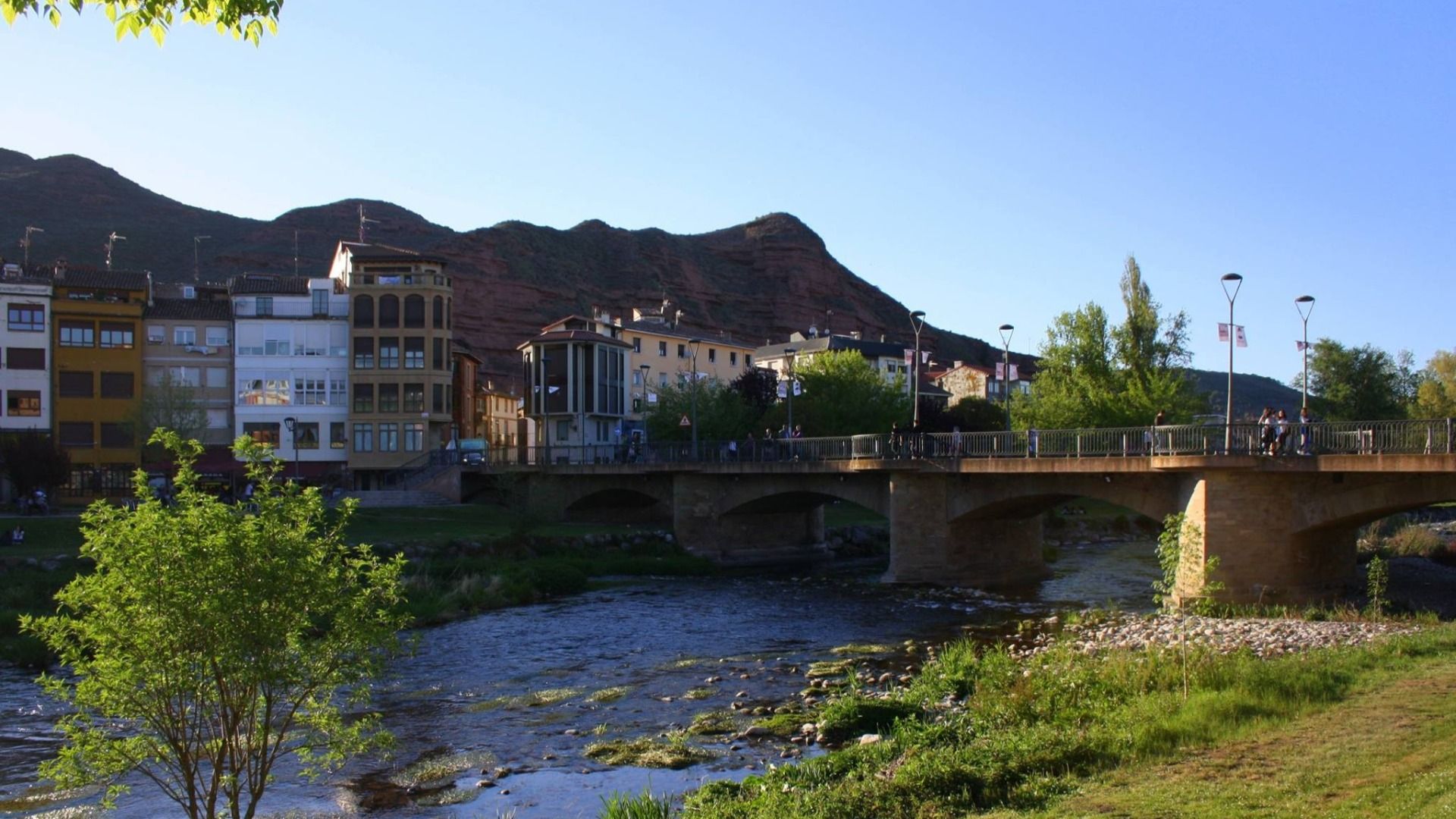
All the Way from Rome
According to official data, around 200,000 people walk the Camino de Santiago each year. The big cities are always filled with pilgrims. And then all the regular tourists come too to enjoy the good weather and admire the architectural marvels of Spain. It's no wonder that the highest concentration of visitors is in the country's major cities. One of the most touristic of these urban centers is Burgos.
Each night, several hundred pilgrims huddle in the pilgrim hostels supported by the Burgos municipality. It was here that an extremely unique event took place. It was one of the strangest cases of snoring in human history.
While on journeys, you may see and hear various things, but I witnessed such phenomena for the first time. Upon listening to a painfully loud snore for some time, the pilgrims couldn't help but start laughing. "Maybe we should put an end to the poor guy's suffering," joked one of them.

Usually, at the "Official" Albergues, one is allowed to stay only for one night. Exceptions are made for those who present a doctor's note. Those wanting to explore the city for a longer duration must move to private guesthouses. In such places, there are far fewer residents, but the chance of encountering interesting personalities remains quite high.
One of these exceptional individuals was a young man who walked to Burgos from Rome, covering a distance of up to 2500 km. What stood out was not only the man's story but also his unusual attire – a cloak made from a huge cloth bag. Adding to the striking appearance was a two meter wooden staff.
Another man journeyed from Santiago back to his homeland. His trek to Santiago de Compostela lasted for several months. After resting for a few days, he decided it was time to travel back home, which as later revealed, was somewhere in Germany.
It might seem like on the Way of St. James you'll encounter only foreigners, but that's not entirely true. Official data suggests that about 44 percent of pilgrims are Spaniards. It's unclear whether this is fact or myth, but there have been stories that some include this adventure in their CVs.
52 percent of pilgrims are men, while 48 percent are women. Around 91 percent of them walk the Way of St. James on foot. Others ride on horseback, donkey, or bicycle. It's no wonder that in midsummer, the French Way tends to be overcrowded. 63 percent of St. James's Way pilgrims choose this particular route (The French Way) from the extensive list available.
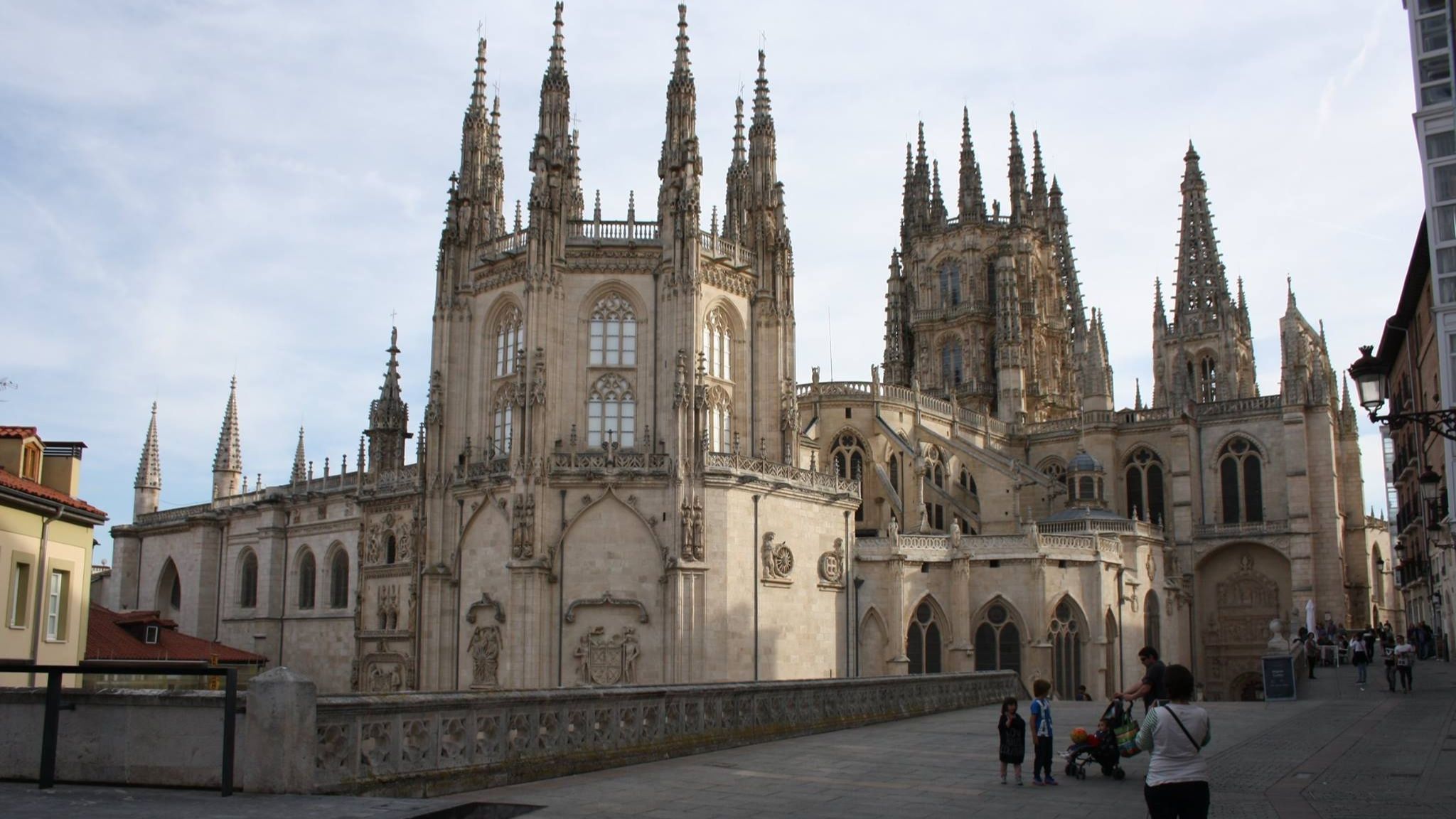
174 km to Leon
When I was a child, I used to think that in Spain it's always warm. Yet, that's not the case in Northern Spain. The temperature during our journey ranged from 25 degrees Celsius at midday to -3 degrees Celsius in the early mornings high in the Galician mountains.
Humidity significantly affected the perception of warmth. This was most noticeable while sleeping in a tent. For example, 7 degrees Celsius in the early morning hours felt even colder.
Sometimes people ask what was the usual distance we've covered in a day. The answer is simple: sometimes 42 km, sometimes 2 km. After spending one cold night in a tent, we chose to go to the town of Castrojeriz, which was only 2 km away, and get some proper food and a nice place with a comfy bed to rest.
"After all, this isn't a race!" - we thought. Keep in mind it was our 11th month on the road.
Once we got to Castrojeriz an interesting thing happened unexpectedly. We met several exceptional individuals. Jurgis and Linas happened to be our fellow Lithuanians. They and one charismatic Japanese lady became our hiking buddies for the next couple of days.
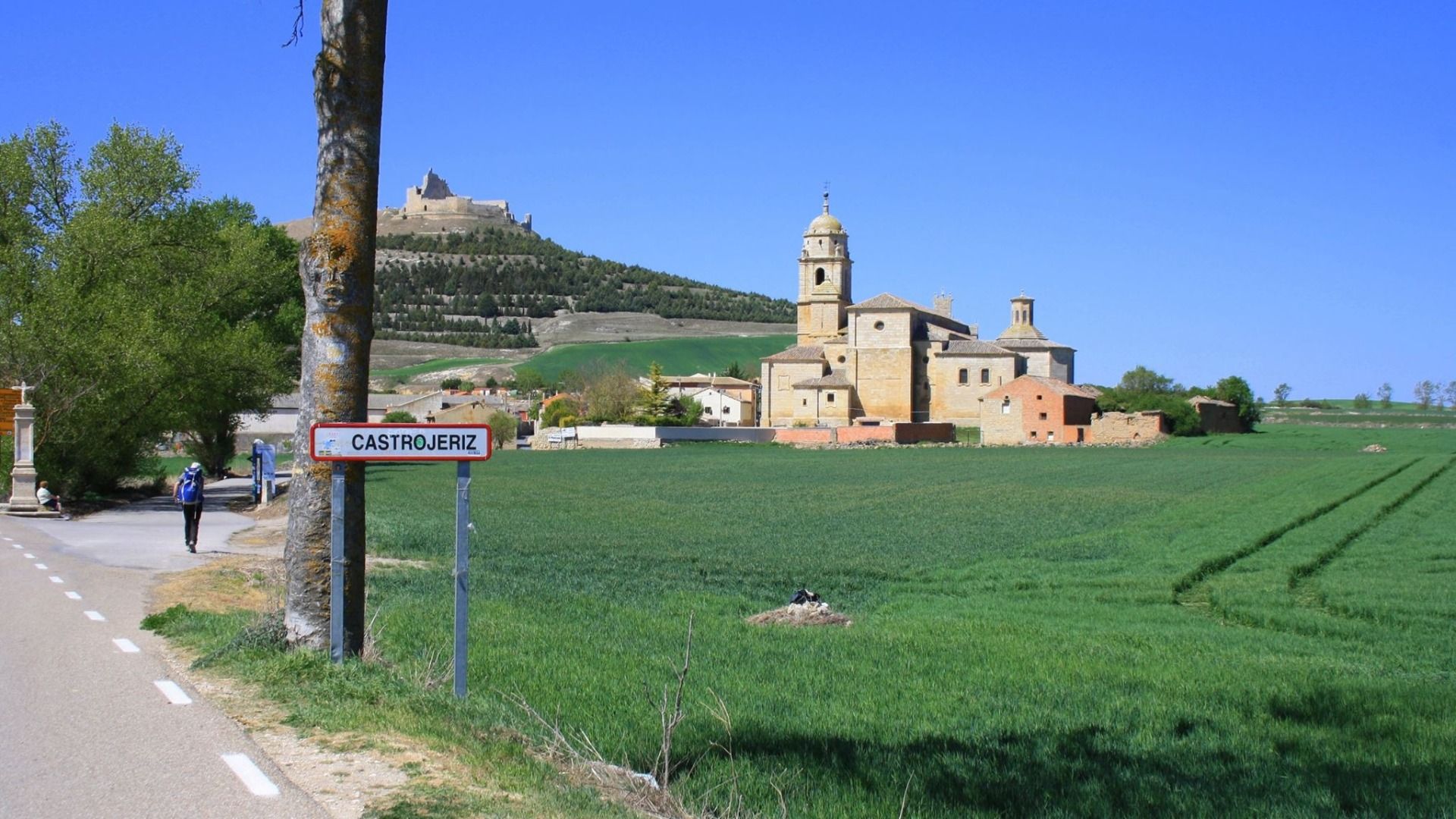
How we recognized our countryman
In many pilgrim hostels, you'll find bunk beds. Lower bunks are often offered to the sick and elderly, while the upper ones are for everyone else. Before the peak season, there are often more beds than people wanting to sleep in them. In such cases, one can choose.
Delighted to have strategically secured a comfortable spot, I noticed something odd. A young man was carrying a bag purchased at a Lithuanian shopping center. "Kur artimiausia parduotuvė? (Where is the nearest store?)" - I asked him. My unexpected question seemed to surprise him.
His name was Linas. He arrived in Spain with his friend Jurgis. Before the journey, the lads had just completed nine months of voluntary service in the military. The Way of St. James was a great place to contemplate what they want to pursue further and to meet a bunch of positive people from around the world.
Later that day, another memorable encounter occurred with a pilgrim from Great Britain. This man was walking the Way of St. James for the second time. Due to his physique, he had earned the nickname "Big Apple". At the dinner table, the Big Apple jokingly asked if we weren't afraid that a country from the east might invade and take over Lithuania while we wandered in faraway lands. Ah, the British humor...
The most uplifting experience was meeting a Japanese traveler named Hitomi. Some people can brighten even the gloomiest day just by their presence. As a side note, after completing the Way of St. James, persuaded by Jurgis and Linas, Hitomi visited Lithuania.
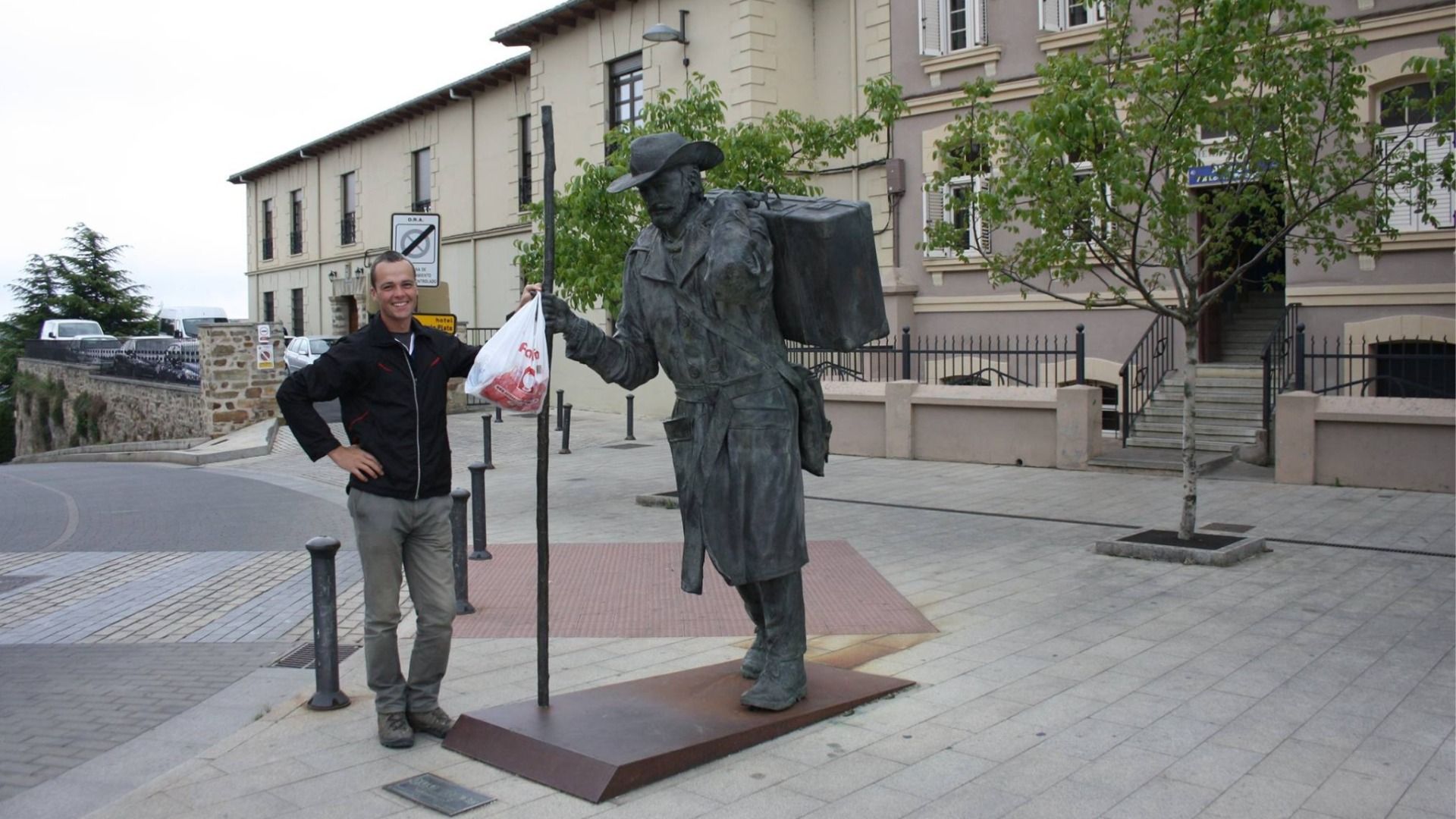
Leon: What makes this city famous?
Leon is one of the largest cities in northern Spain and serves as the capital of the Leon province. During the Middle Ages, this city situated on the Way of St. James was notable for its significant influence politically, culturally, and economically. In modern times, a steady stream of tourists is drawn to the city because of its famous architectural landmarks. The most notable of these is the Gothic Cathedral of Santa Maria de Regla, constructed as far back as 1254.
The Cathedral of Leon, renowned for its exceptional beauty, is the main tourist attractions in Leon. It shares popularity with the residential building "Casa de Botines," designed by architect Antoni Gaudí, the Romanesque Church of St. Isidore, the Renaissance Monastery of St. Marcus, and the Renaissance palace "Palacio de los Gitzmanes."
Despite all these splendors, sometimes the simplest things leave the most vivid memories. One such memory is associated with lodging near the town of Sahagun, close to Leon. The town, with fewer than three thousand inhabitants, exuded an ancient charm.
Pilgrim lodgings were established in an old church, built of yellow stone. Travelers adorned in bright attire seemed somewhat out of place in such a historical setting. The first floor housed a museum and a community meeting room, while the second floor consisted of a kitchen, showers, and several hundred comfortable beds designated for pilgrims.
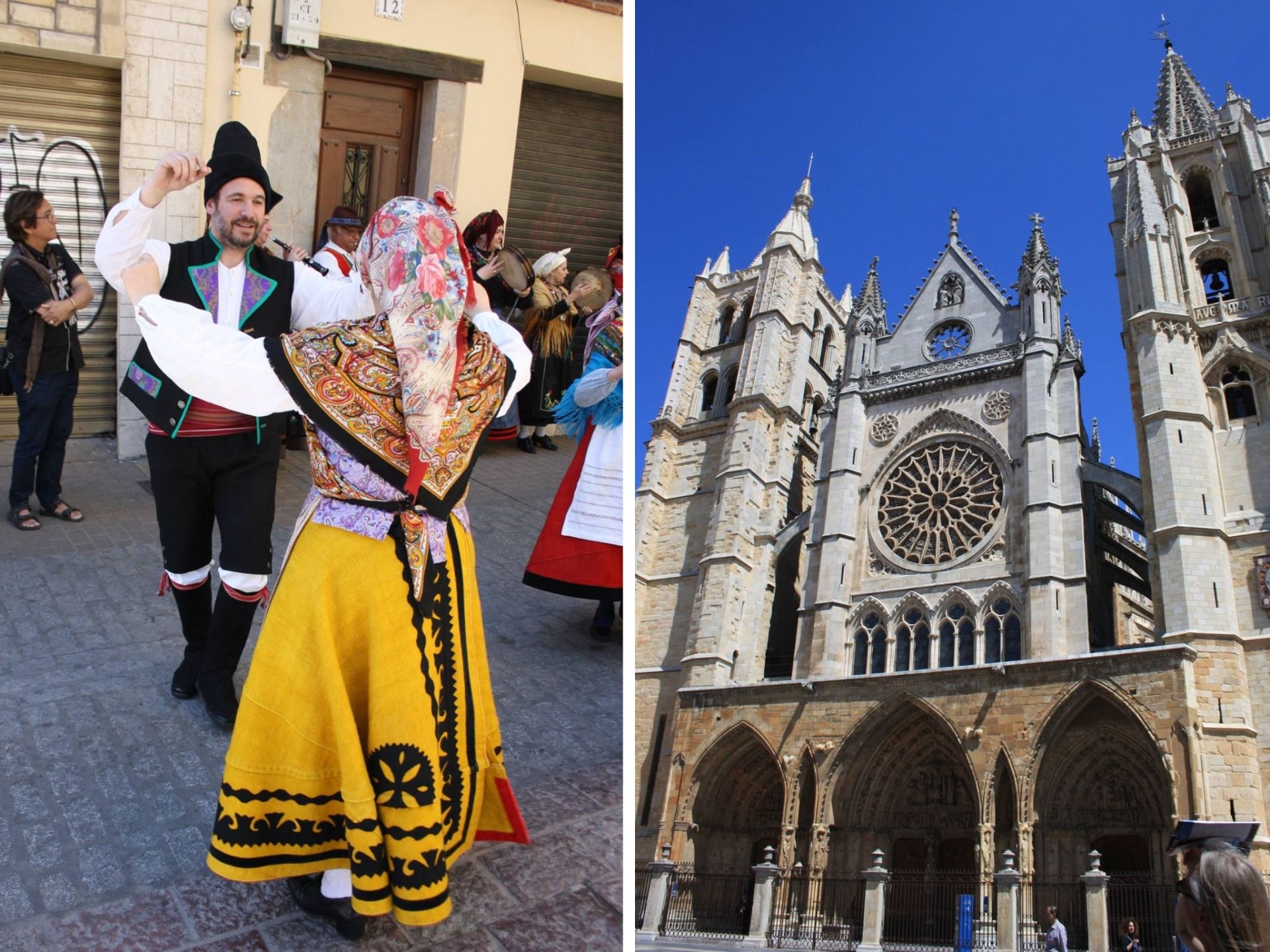
Step by step
The final stops before leaving the Castile and Leon region were Hospital de Orbigo and Astorga. Hospital de Orbigo is famous for its stone medieval bridge. In this location, near the Orbigo River, a small village was established during medieval times. In the 16th century, knightly hospitallers conceived the idea to build a hospital for pilgrims. Since then, the settlement came to be known as Hospital de Orbigo.
Astorga is a considerably larger town, renowned for its delicious chocolates and the Astorga Cathedral. Residents warned us that the next morning might be pretty cold as the areea was high above the sea level. At 6:45 PM, we set out in search of a clothing store. By 6:55 PM, we found one.
With just five minutes left before closing time, we managed to purchase a couple of warm garments. The next morning it was -3 degrees Celsius, and those who decided to stay in Astorga longer were greeted with a spring snowfall that quickly covered the signs marking the Way of St. James.
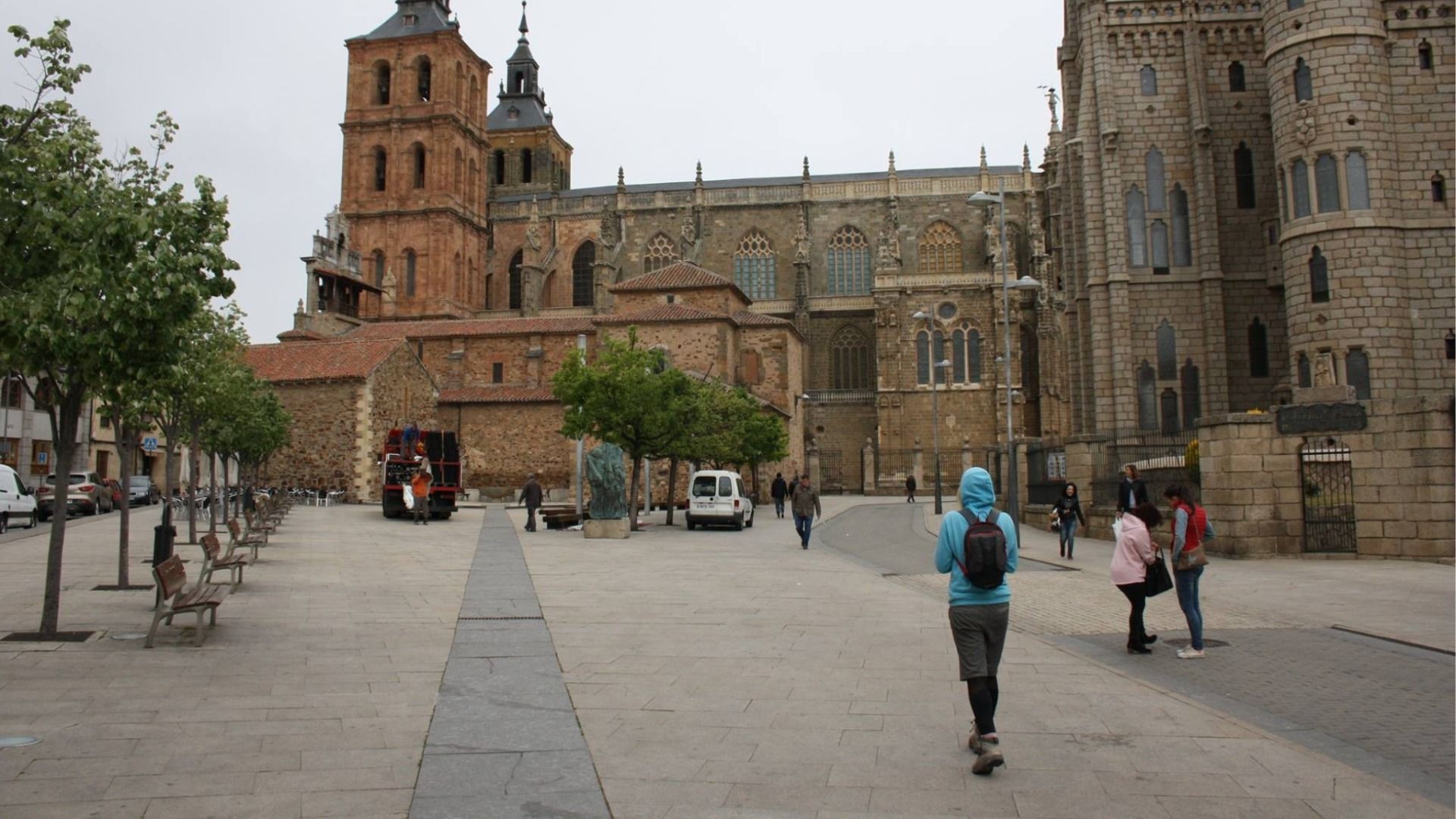
Visiting the Monastery
Once we set foot in the Galicia region, the landscape changed instantly. Mountains, fresh air, and boundless greenery unfolded before our eyes. Several seasoned pilgrims, who had traversed various routes of the Way of St. James, affirmed that Galicia is one of the most beautiful regions in all of Spain.
In a small village, a striking little church caught our attention. We stepped inside. The inside was adorned with century-old benches and chairs, carrying the scent of wax, and with just a few rays of light seeping through tiny windows, illuminating the humble wooden altar, creating a magical atmosphere.
Inside the church, we met an elderly man who was walking the Way of St. James for the second time. The venerable gentleman mentioned that next to the nearby monastery lay one of the coziest pilgrim lodgings in the entire region.
"Welcome!" greeted the hostel worker. "I'm American, volunteering here. As you can see, our guesthouse is located in the monastery. Let me show you where your beds and showers are. At 4 o'clock, there will be mass, and at 5, we'll all gather in the lounge by the fireplace. There will be tea and freshly baked cookies." Finally, after such a long time, the comfort of home.
The cold outside didn't seem daunting as we cozied by the fireplace. There were Australians, Americans, Brits, a few Irish, and then there were us Lithuanians. Some arrived for religious purposes, others seeking solace after painful losses. Each person's story was unique. You won'tcouldn't find two identical stories along the Way of St. James.

"Age is only a number!" said an 81-year-old traveler from Ibiza
We encountered a remarkable woman whose story stood out from all the others. "A psychic once revealed to me that in my past life, I walked the Way of St. James and died here. I wholeheartedly believe it's true, so I've come to finish what I started," shared Sirija Gaja, a youthful 81-year-old. "I changed my name a few years ago. Sirija is my spiritual name, meaning radiance and shining," she continued.
"I'm British, but I've been living on the island of Ibiza for quite some time. I moved there in search of challenges. In my free time, I travel a lot and write books. I'm a vegetarian and eat only organic food. I grow part of it myself. I spend most of my time surrounded by young, positive people," the woman continued, astonishing us.
"My children have long believed that their mother has lost her mind. Deciding to walk the Way of St. James only reinforced their belief even more. They don't yet know that Santiago de Compostela isn't the end. I'll walk all the way to Finisterre, once known as the edge of the world..."
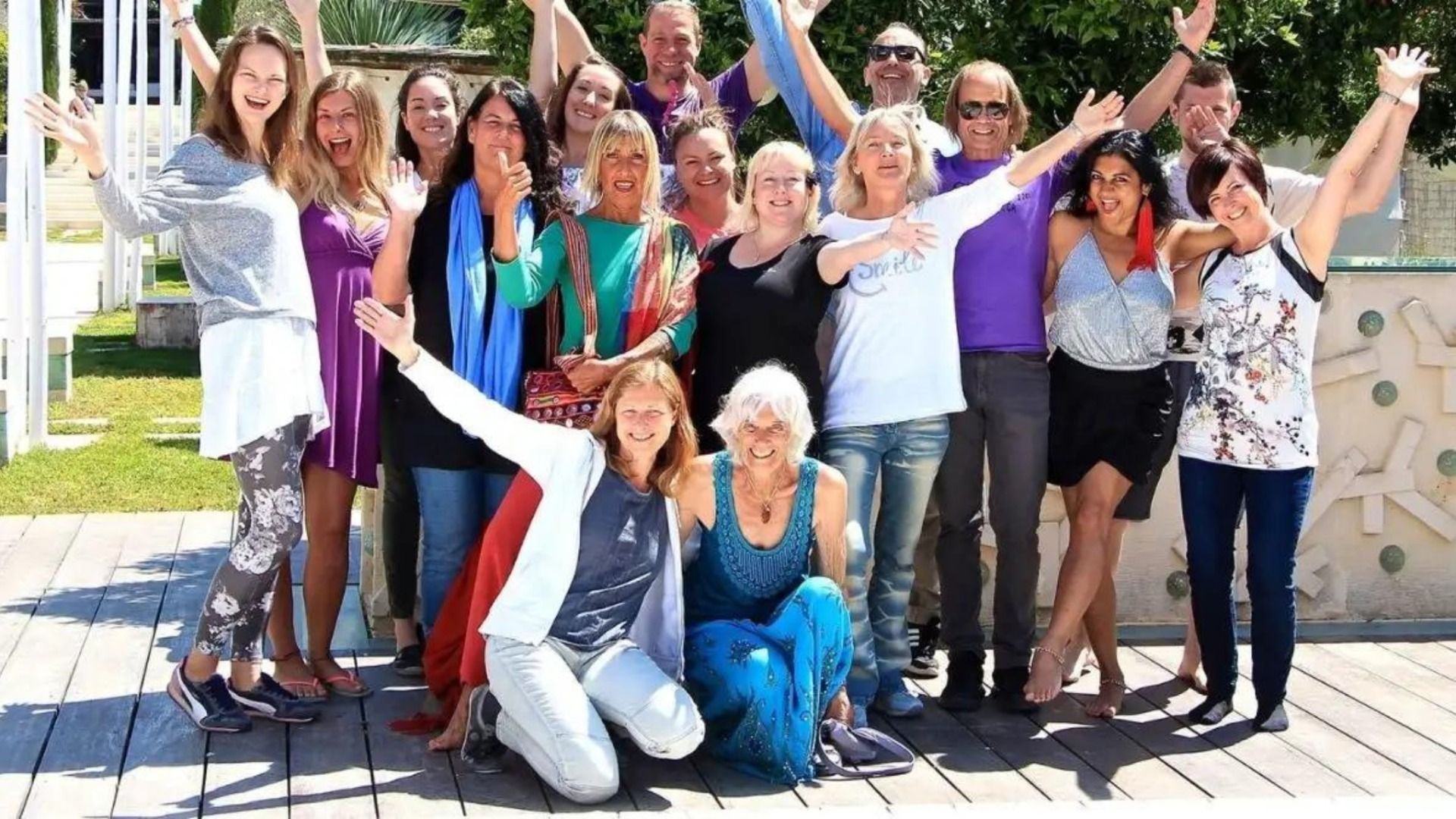
Santiago de Compostela
The residents of Santiago de Compostela have much to be proud of. Here stands one of the oldest hotels in the world - the Hostal dos Reis Católicos. Additionally, Santiago de Compostela was where, in the 12th century, one of the first travel guides in Europe, the "Codex Calixtinus", was written. It was the initial guidebook for pilgrims walking the Way of St. James.
At the heart of the old town lies the Cathedral of Santiago de Compostela. There are only three such places in the world where cathedrals are built on the eternal resting places of the Apostles of Jesus Christ. The other two are the Vatican with St. Peter's Basilica and Chennai with St. Thomas Cathedral.
Unfortunately, I don't have that many pictures to show as someone (a few days later) decided to indefinitely borrow the hard drive containing all the high-quality photos and video footage. I can only hope that this "acquired" material brought much benefit to the new owner.
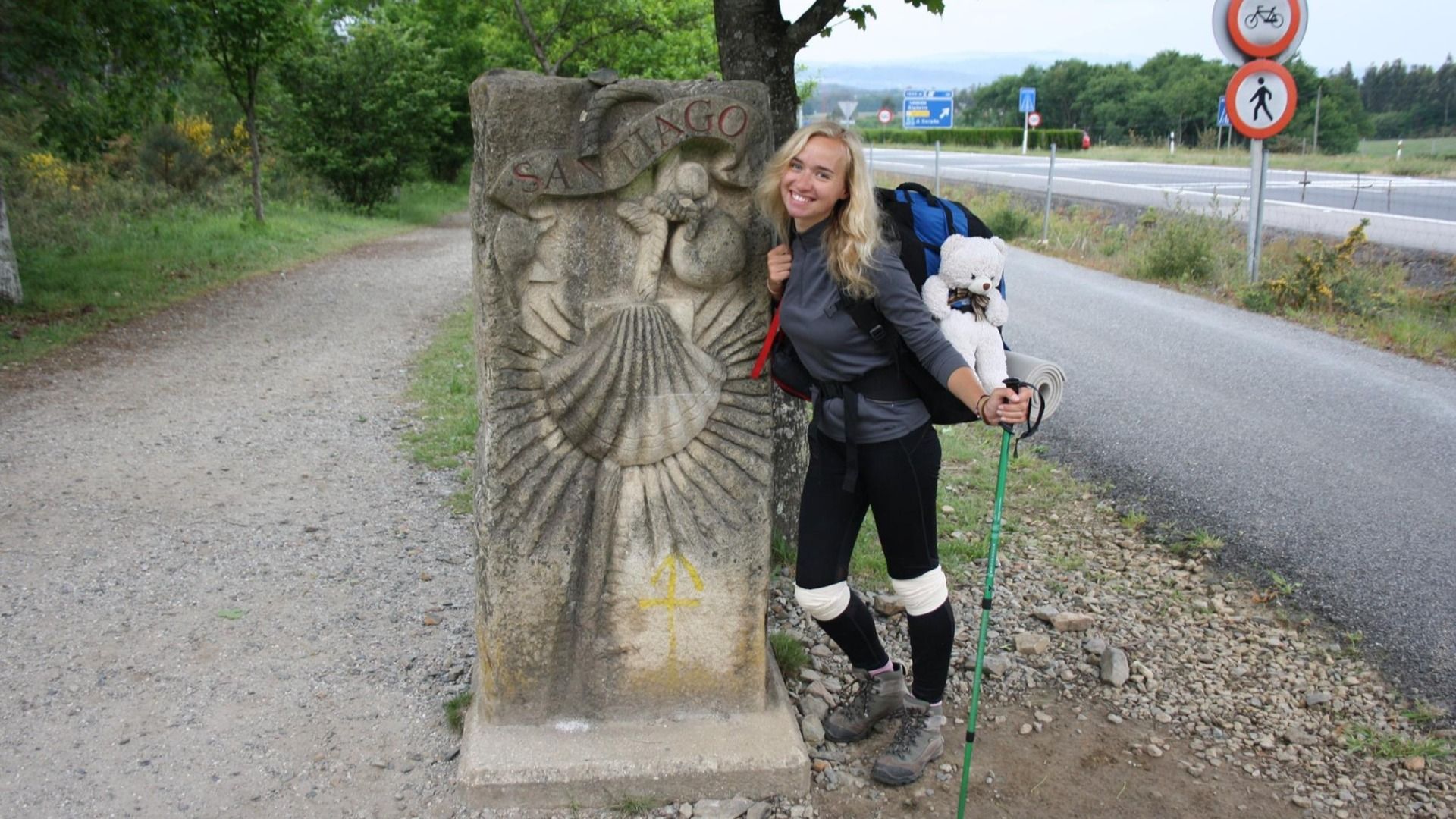
For centuries, certain rituals have formed around the Santiago de Compostela Cathedral. Every day, there are pilgrim masses during which the number of pilgrims who reached Santiago the day before is mentioned. Those who wish to hear their name, first need to visit the pilgrim center (Oficina del Peregrino). During the next day's mass, it will be acknowledged that a pilgrim from Lithuania, Narnia, or other country completed the journey.
In the same pilgrim center, compostelas are issued. Compostelas are specific piligrim certificates. For the distance certificate, one needs to apply separately. The distance certificate is a document that records certain details of the chosen route: the starting point of the journey and the distance covered.
The most impressive moment of the masses is the pilgrims' incensing with the thurible. Fans of the film "The Way" directed by Emilio Estevez know what I am talking about. It is said that the thurible at the Santiago Cathedral is the largest of its kind in the entire Catholic world.
Some pilgrims, having reached the main destination of their journey, decide to continue and travel to Finisterre, which before the discovery of America was considered the edge of the world. Others bid farewell to their fellow travelers and return home.
It was hard to believe the journey was over. Thoughts about the trip back home hadn't crossed our minds until then. Only upon reaching the main square, a feeling of home longing ignited. It was time to head back to Lithuania.
It felt so good to sit on a roadside bench and seemingly relive everything once again. Filled with curiosity, I checked how much budget was left. I kind of expected it, but I was still surprised that there were only 20 euros left in my bank account. Keep in mind that to get home, we still needed to travel around 3600km.
I felt kind of excited because there is nothing I like more than trying to find ways out of difficult situations. Luckily, we still had some cash and Kamile's account was not completely empty either, so all things considered, everything was good.
The Long Way Home
Several routes could be taken to get back to Lithuania, but it seemed best to leave the decision-making for the early morning. We took a bus to Oviedo - the capital of the Asturias region, nestled by the Cantabrian Sea. The plan was to search for a camping spot outside the city.
It was raining heavily. Albergues usually only accommodate pilgrims and though our pilgrimage had already ended, we decided to take a chance and found the nearest one. When the hospitalero asked where we were from, we replied that we were Lithuanians, having completed the French Way, and heading home. The host glanced over our almost full pilgrim passports and stamped another mark on the final page. We were allowed to stay.
In the guestbook, I noticed a Lithuanian surname. All those who signed were in the same room at that moment, so the mysterious Lithuanian surely heard us speaking our native language. For some reason, he decided not to introduce himself.
Oviedo was part of what is known as the Northern Way of St. James. Rising in the morning, we decided to journey home along the Northern Way, but in the opposite direction. The next stop was Bilbao, the capital of the Biscay province.
Legends about the difficulties faced by those trying to hitchhike in Spain seemed not to be exaggerated. There are several websites where travelers share their hitchhiking experiences in various countries. Spain often falls into the red zone.
We slowly advanced on the road. We would only extend our hand when cars passed by. Having covered almost 800 kilometers in the past month, it proved to be somewhat of a challenge to continue walking. Especially, when we thought we wouldn't need to do it.
Having spent 7 hours on the road with no luck and thereby breaking our 6-hour waiting record previously set in Poland, in the next town, we boarded a bus. Arriving in Bilbao, we noticed that the flow of pilgrims on the Northern Way was smaller compared to the French one. However, the advantage was that there seemed to be no shortage of space in the albergues.
As we did the previous night, we approached the hospitalero of the local albergue. It turned out, that he was a veteran of the Camino de Santiago himself, so upon hearing our story, he gladly agreed to accommodate us. We were treated to some cake and later, together with other guests, prepared dinner.
The next morning was beautiful. Kamile, representing the world of architecture, was intrigued by what Bilbao had to show. At one point, we found ourselves right in front of the Bilbao Guggenheim Museum, which was kind of the symbol of the city.
Step by step, heading back home, we speculated where we would be if we hadn't met a few years ago. I remember vividly the day I saw Kamile for the first time when we both were 1st year university students back in 2011.
It was during a European Basketball Championship, and cheeks were painted with colors of the Lithuanian flag. Her blue eyes twinkled for just a second then vanished again into the crowd...
France
At around this point, my dad's cousin Diana invited us to be her guests. She lived in the Netherlands so she asked us to contact her once we crossed the Dutch border. We told her that we would spend one day in Bordeaux and maybe a couple of days in Paris and then head straight to Deventer, where Aunt Diana lived with her family.
Paris happened to be a memorable stop. Kamile and I were eager to visit our friend Sayed. The same Sayed we met in Qom, Iran. It felt good to remember the good old days when we roamed Qom's endless markets to find and buy a perfect duck, which could be later given as a present to Sayed's brother.
The plans for the long-anticipated meeting were disrupted by an unpleasant event. On one of the streets in Paris, further from the city center, we sat on a bench and, as usual, romantically enjoyed our canned beans, complemented by some French bread. After breakfast, Kamile and I headed to the local church when I realized I had forgotten the small backpack that I used to carry on my chest.
The thought hit me harder than lightning. I dropped my main backpack, shouted to Kamile that I would soon be back, and took off running. I ran as fast as I could, but my small backpack was no longer there.
The laptop that not long ago we bought in Vietnam, the hard drive with photos and video footage, and most importantly, my coin collection, gathered over the past 11 months, were all gone.
Sitting and overthinking didn't make sense: Kamile had our documents, and I had the wallet. All the other important stuff (electronics, etc.) was also with us. Still, the hostel administrator advised us to contact the police. We left the most modest yet pretty expensive apartment and headed towards the police station.
They say hope is for fools, but we underwent a procedure of getting into a heavily guarded establishment. The officer told us that the chances of someone bringing our stuff to the Police station were low. As they say, it is how it is. However, who would deny that seeing the police department from the inside was an adventure in itself?
Netherlands
Aunt Diana moved to Deventer after marrying Uncle Nico when I was little. To this day, she visits Lithuania almost every year: if not with the whole family, then alone. Once in Lithuania, she meets relatives, spends time with friends, and particularly enjoys the Vilnius Annual Book Fair. During the latter, she always buys a huge box of Lithuanian books that she later ships to the Netherlands.
It was the first time we had been to the Netherlands. Upon arriving in Deventer, the whole family gathered at home: Nico, Diana, and their two charming daughters Paulina and Sabina.
At that time, the youngest, Sabina, still lived with her parents and attended school, while the elder, Paulina, lived in Zwolle, where she studied "Global Projects and Change Management" at Windesheim Honours College.
When Paulina had some time, the three of us got on the train and set off for a trip around Zwolle. It was not only an opportunity to get acquainted with Paulina's current home but also to stretch our legs after four hours of relentless eating at Aunt Diana's place.
Over the next few days, Aunt Diana organized tours of all the local landmarks. We visited the Arnhem Museum, the Royal Palace Het Loo in Apeldoorn, and the Tulip Festival at Keukenhof Park. It is not a secret that Kamile enjoyed the tulip festival the most. Girls...
If there's one thing I've learned about my companion over the past few years, it's that even on the gloomiest day, three things will cheer Kamile up: bubbles, animals, and above all, colors. And at Keukenhof Park, there were plenty of colors indeed.
Every year, over seven million flowers are planted in a 32-hectare area. The park is open for only eight weeks each year and attracts around 800,000 curious visitors. If I remember correctly, we visited Keukenhof Park on the last day of the last week it was open.
East, west, home is best
Ready to Blog & Earn?
With TravelFeed, easily start your own travel blog and earn as you go. It's the smart platform for travelers who want to profit from their passion. Create a free account
According to my father, spending a few days with Aunt Diana must have surely helped us regain our strength. I felt the need for it, especially with the impending meeting with Kamile's father. Unsure of what to anticipate - a handshake or an unexpected slap - I was both curious and anxious! :D
The fun fact is, after 1 year on the road together, we did not call each other beloved, even though we'd experienced a lot together. Instead, we'd often replace that word with "I respect you!" and every time we did, it led to laughter.
We spent an entire week in the Netherlands and then finally returned home. The last memory of the journey was from Vilnius Old Town when a passerby wished us "Buen Camino!" A sign that the end of one journey is just the beginning of another...
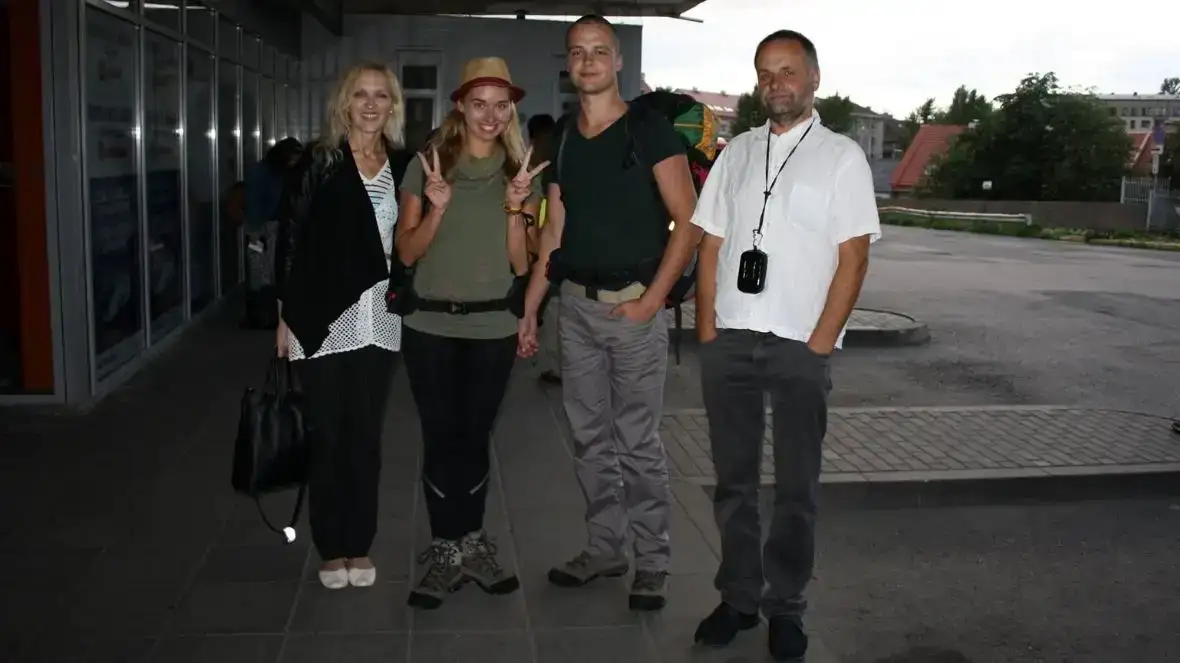
A few years later...
Links:
Original Text (Lithuanian): https://slevas.lt/kelione-aplink-pasauli
Travelfeed (English):
Hive (English):
Travel Resources for your trip to Iran
Recommended by TravelFeed
Flights: We recommend checking Kiwi.com to find the best and cheapest flights to Iran.
Accomodation: Explore the best places to stay in Iran on Booking.com, Agoda and Hostelworld.
Car Rental: For hassle-free car hiring, DiscoverCars is our trusted choice with a wide selection of vehicles.
Internet: Got an eSIM compatible phone? Airalo is perfect for reliable internet access during your trip. Just install it before you go, and you're set!
Day Trips & Tours: We recommend GetYourGuide for a variety of well-organized and enjoyable activities.
Travel Planner: Need a hand planning? Our free travel planner chatbot is your personal guide to Iran. Chat now.
Disclosure: Posts on TravelFeed may contain affiliate links. See affiliate disclosure.
